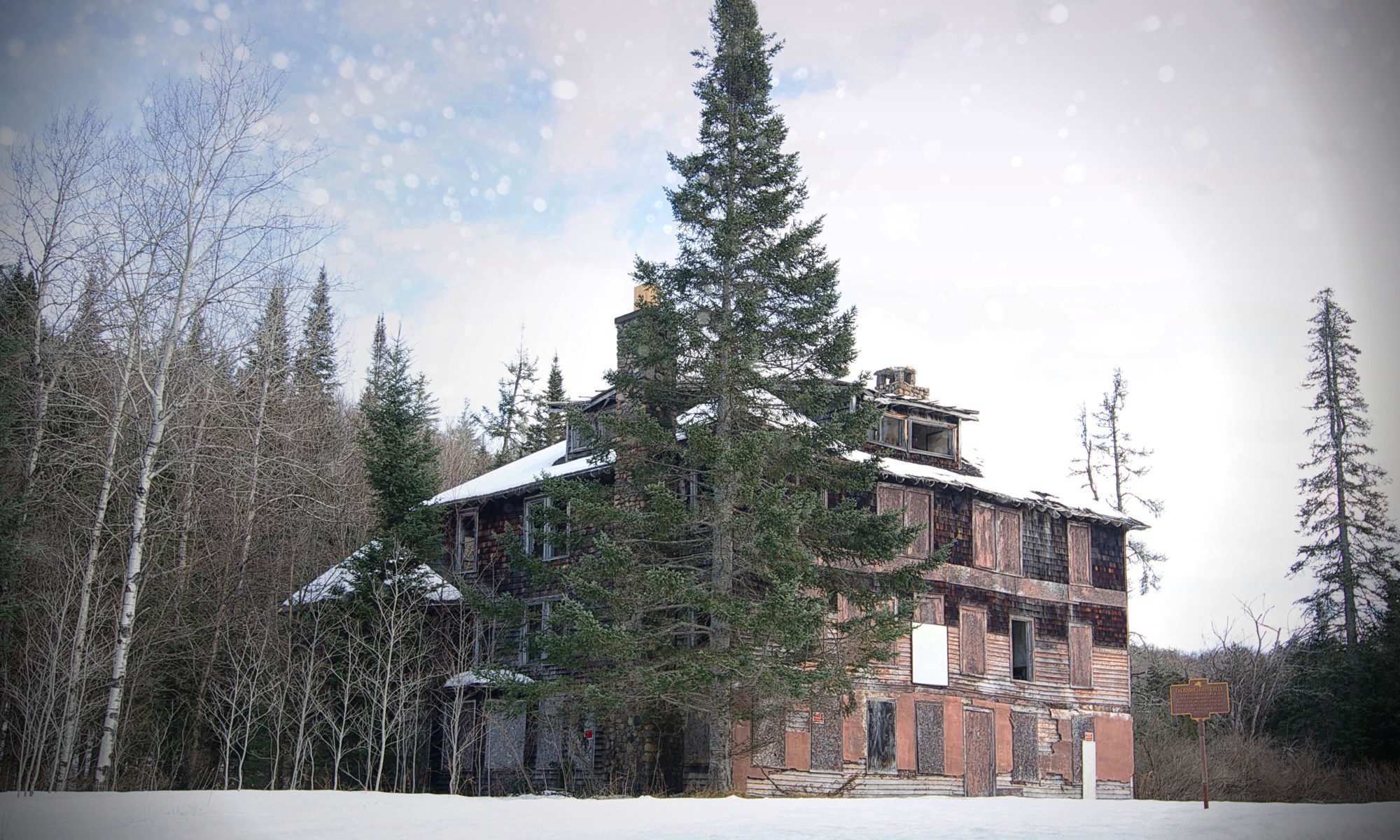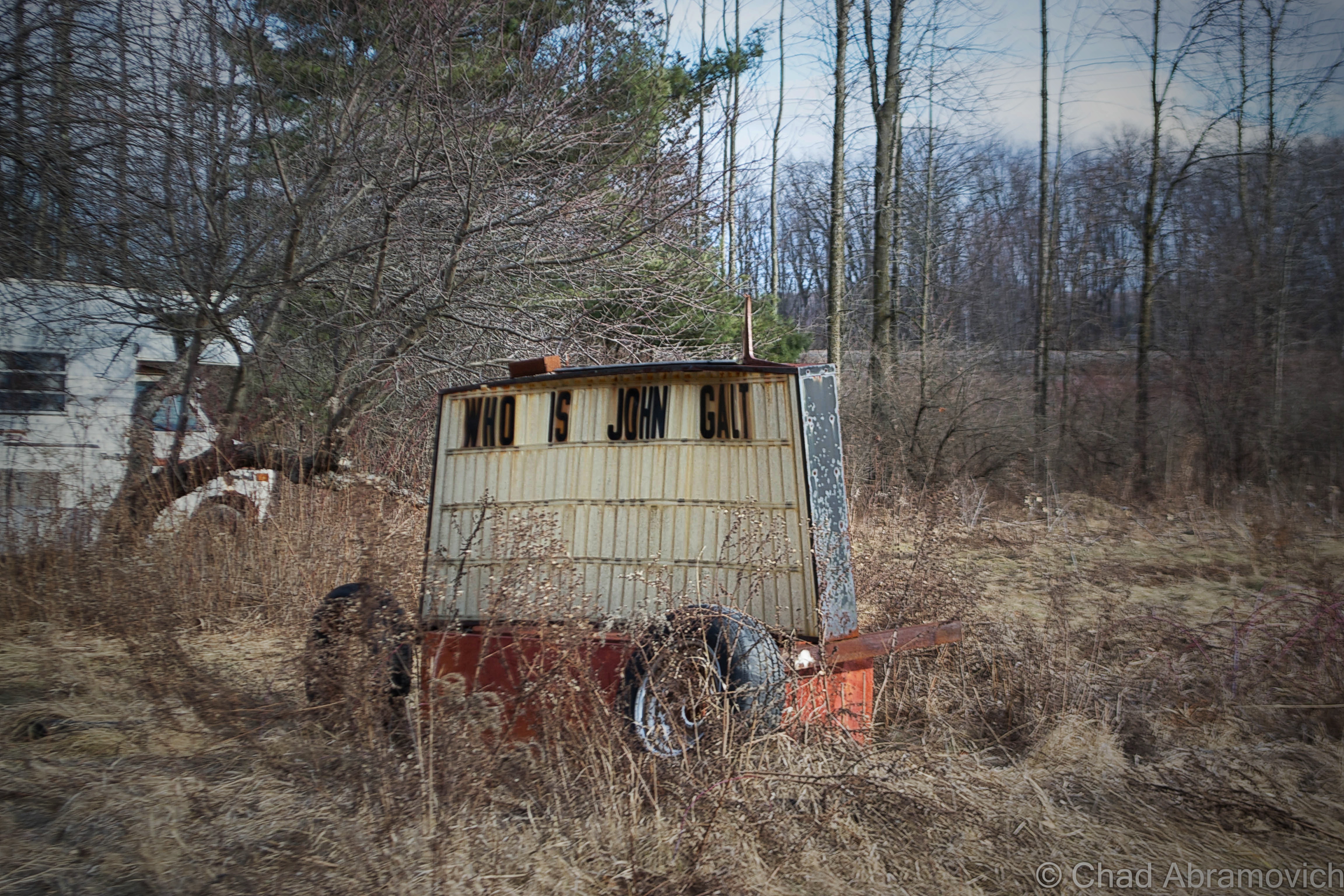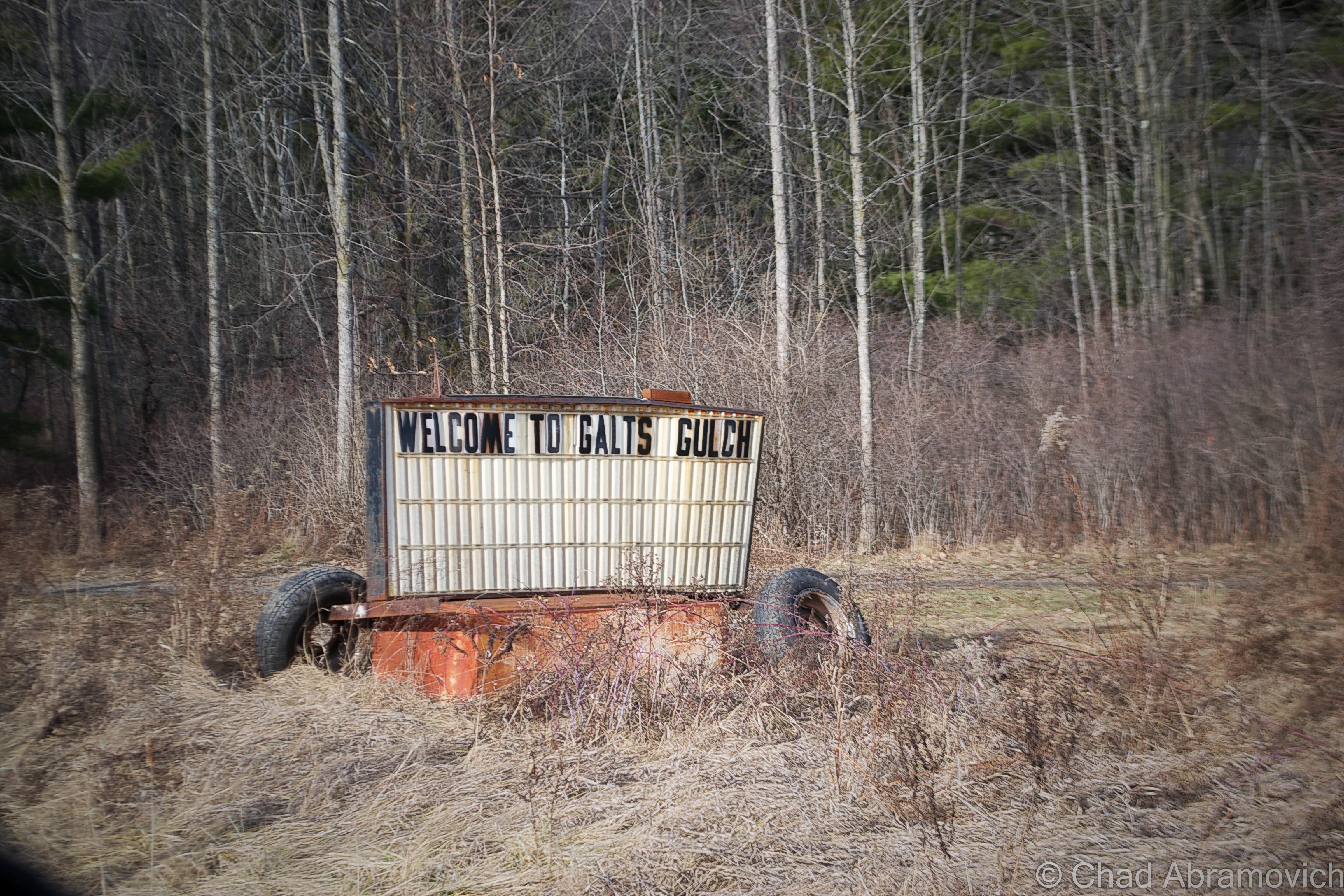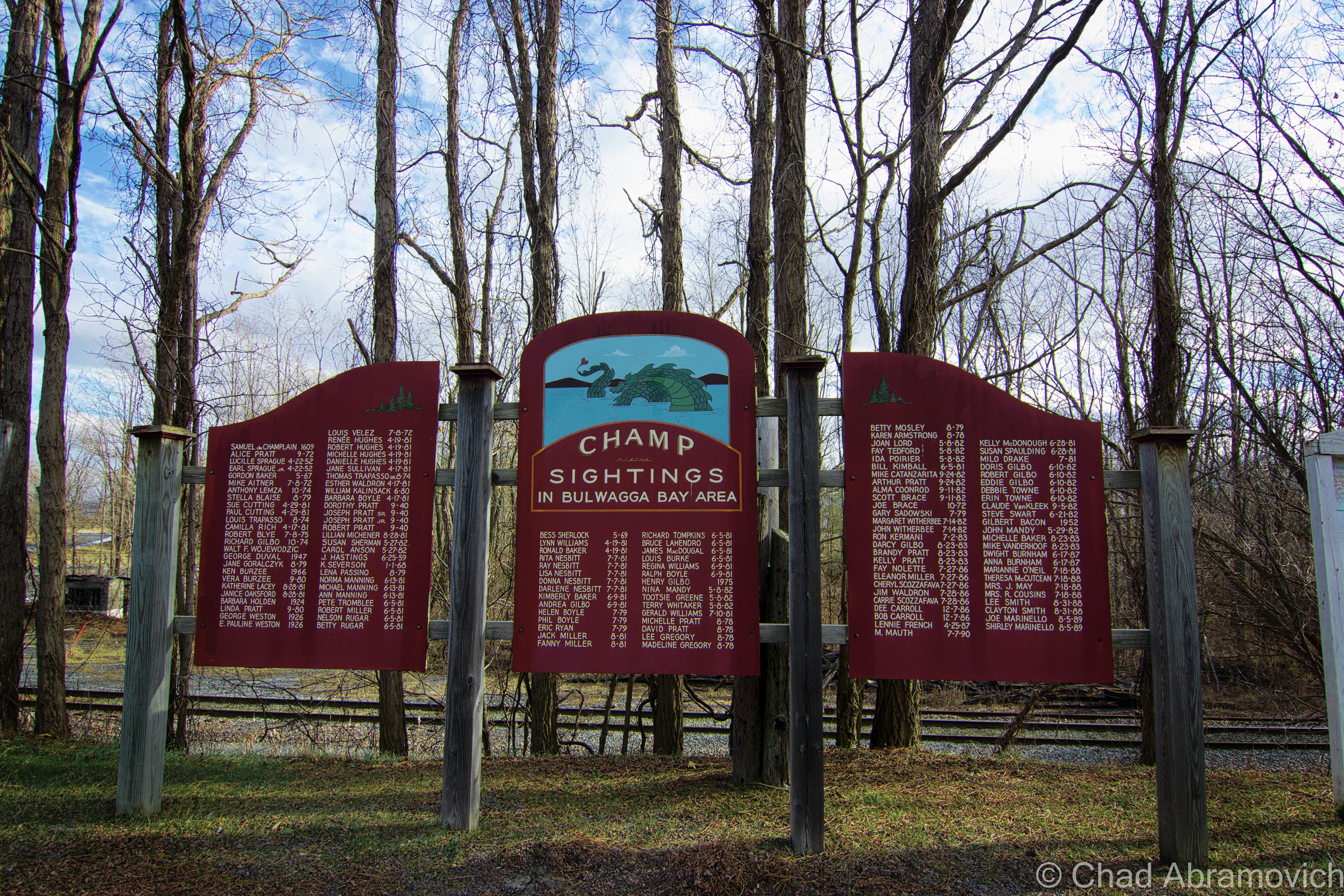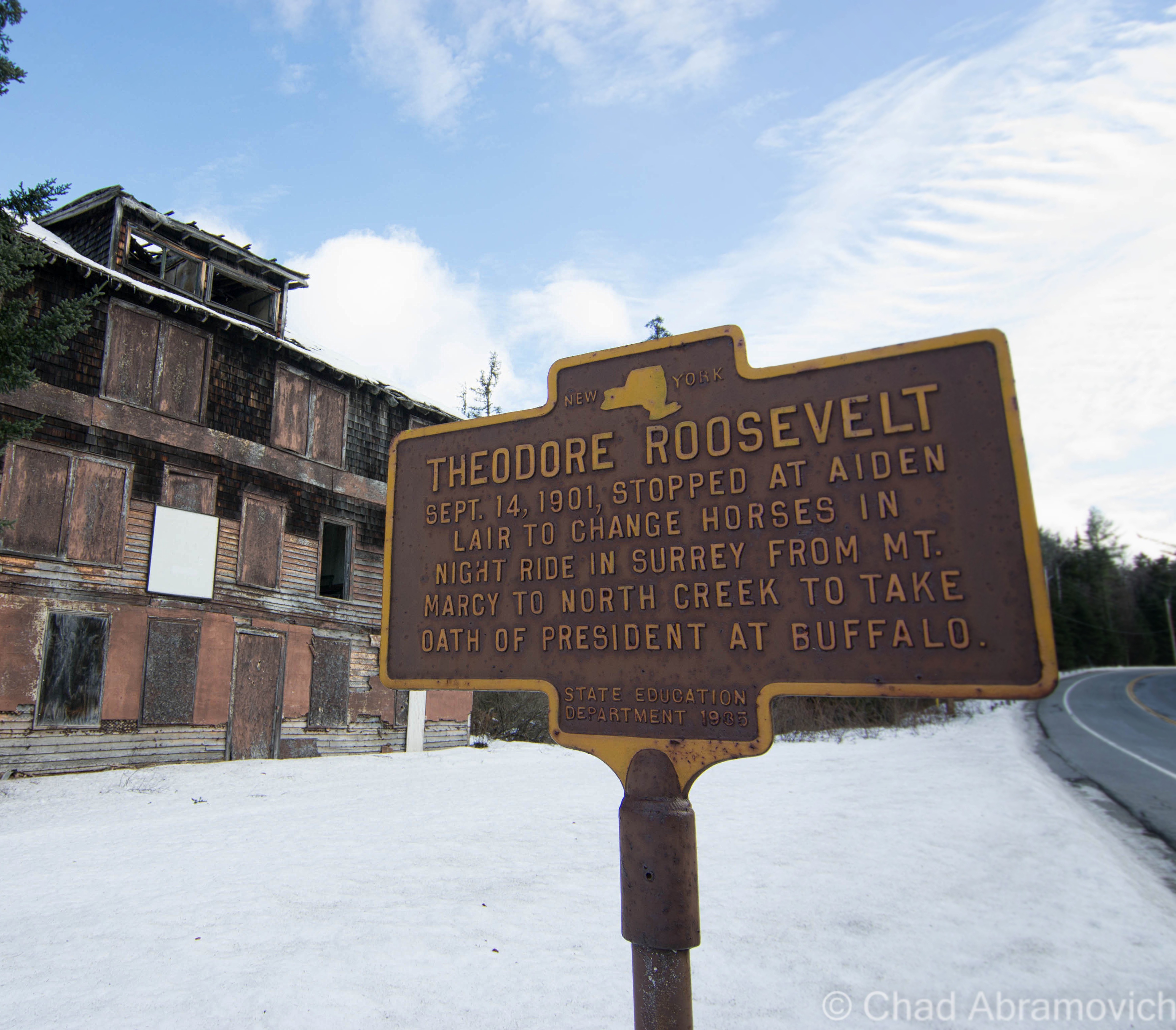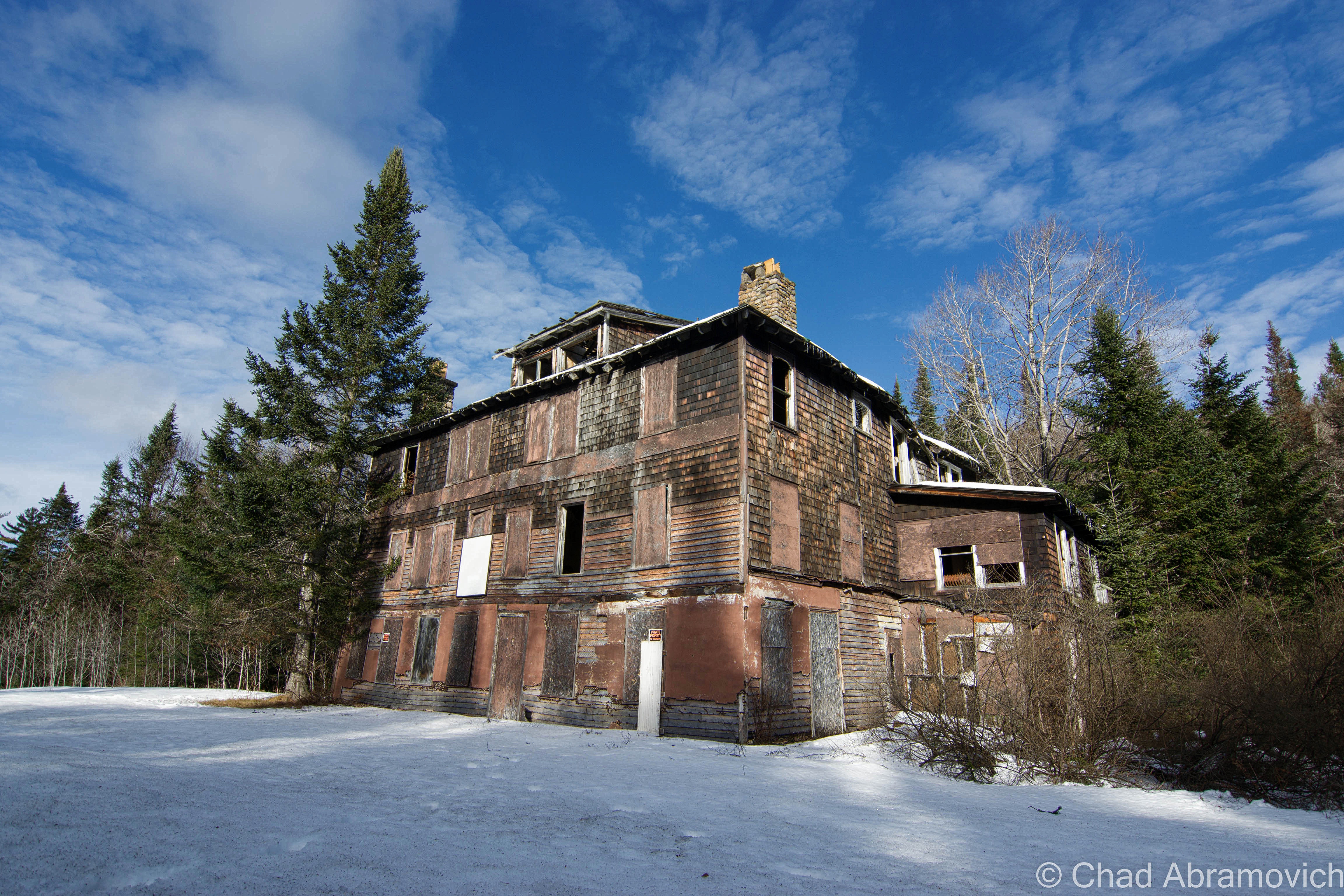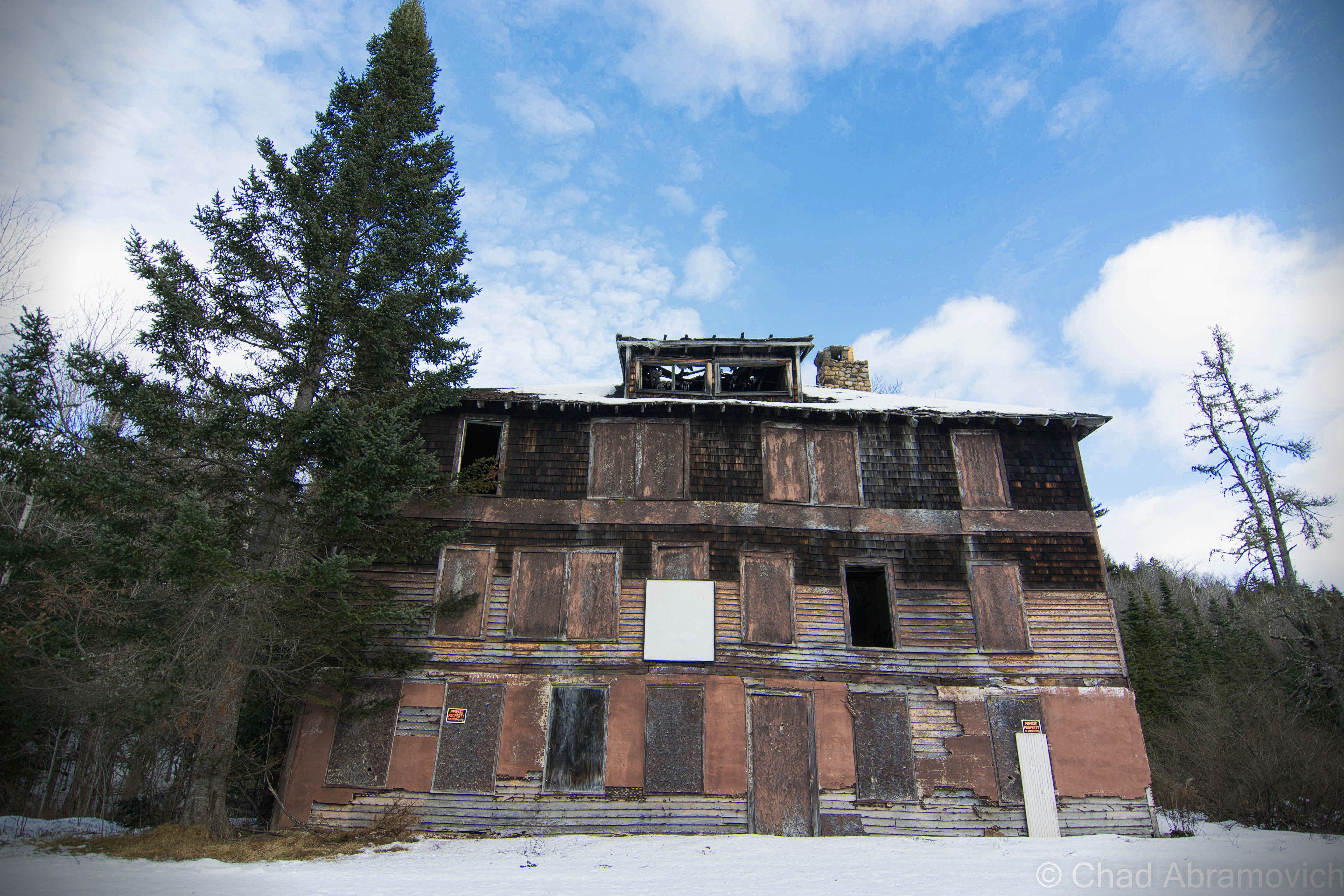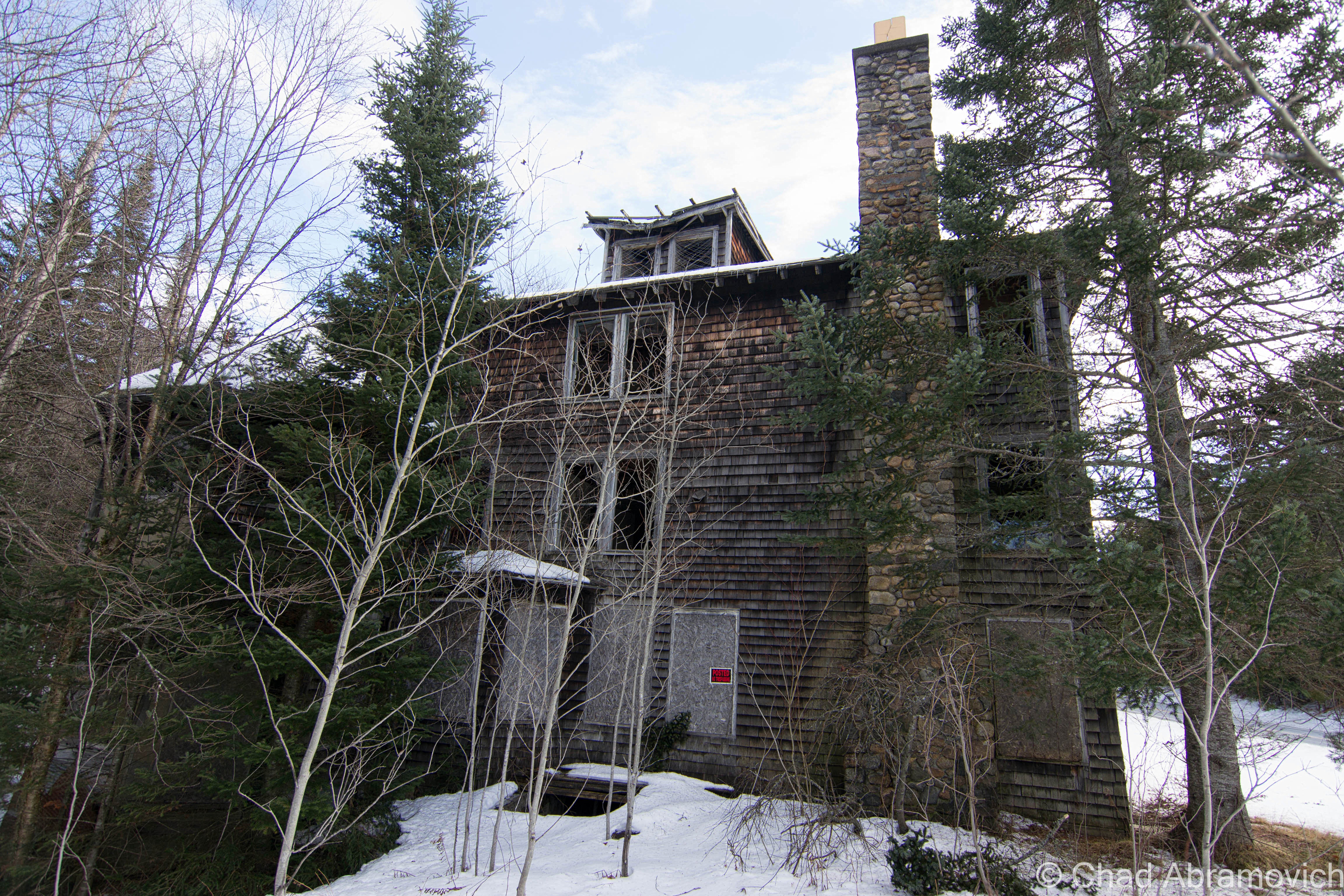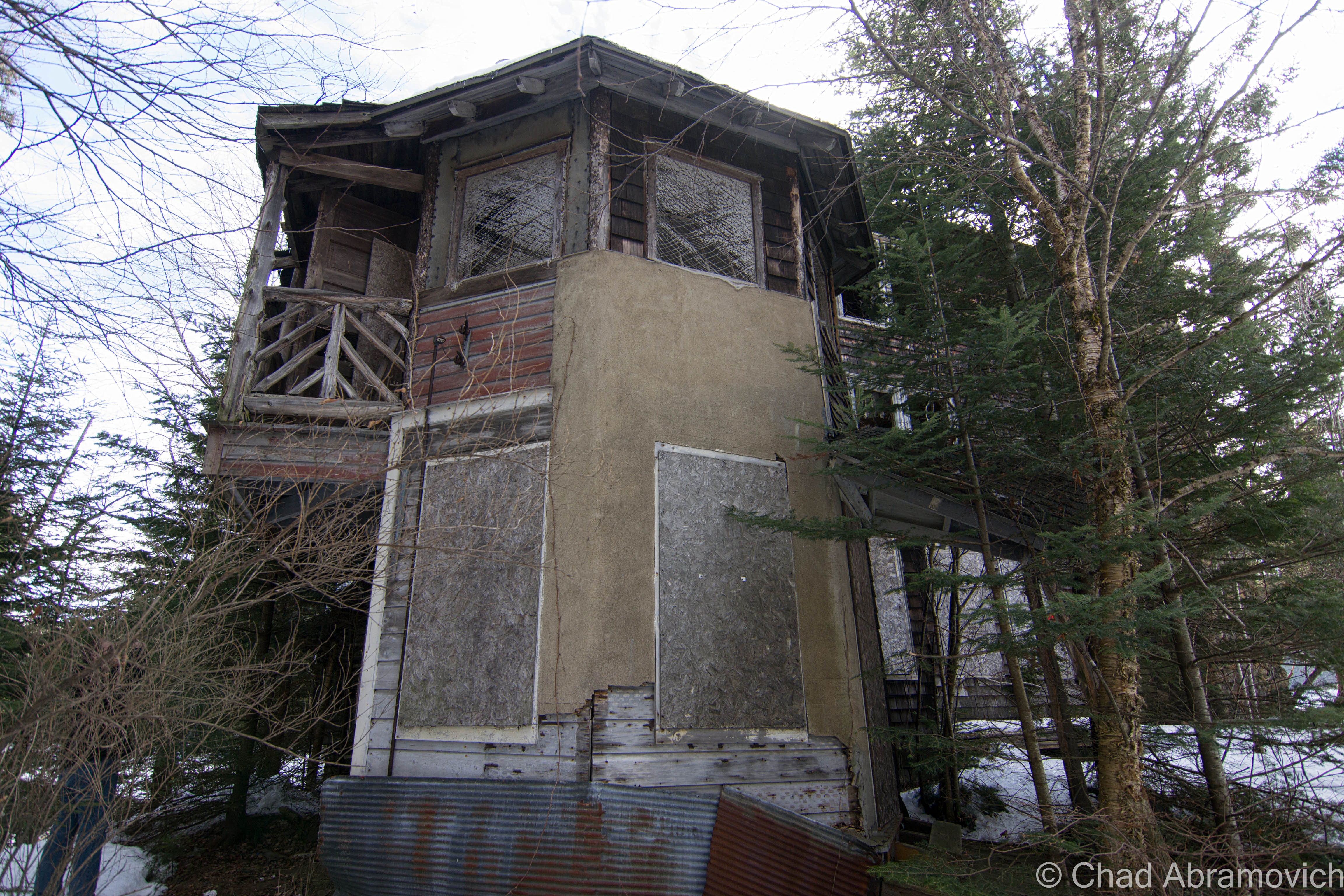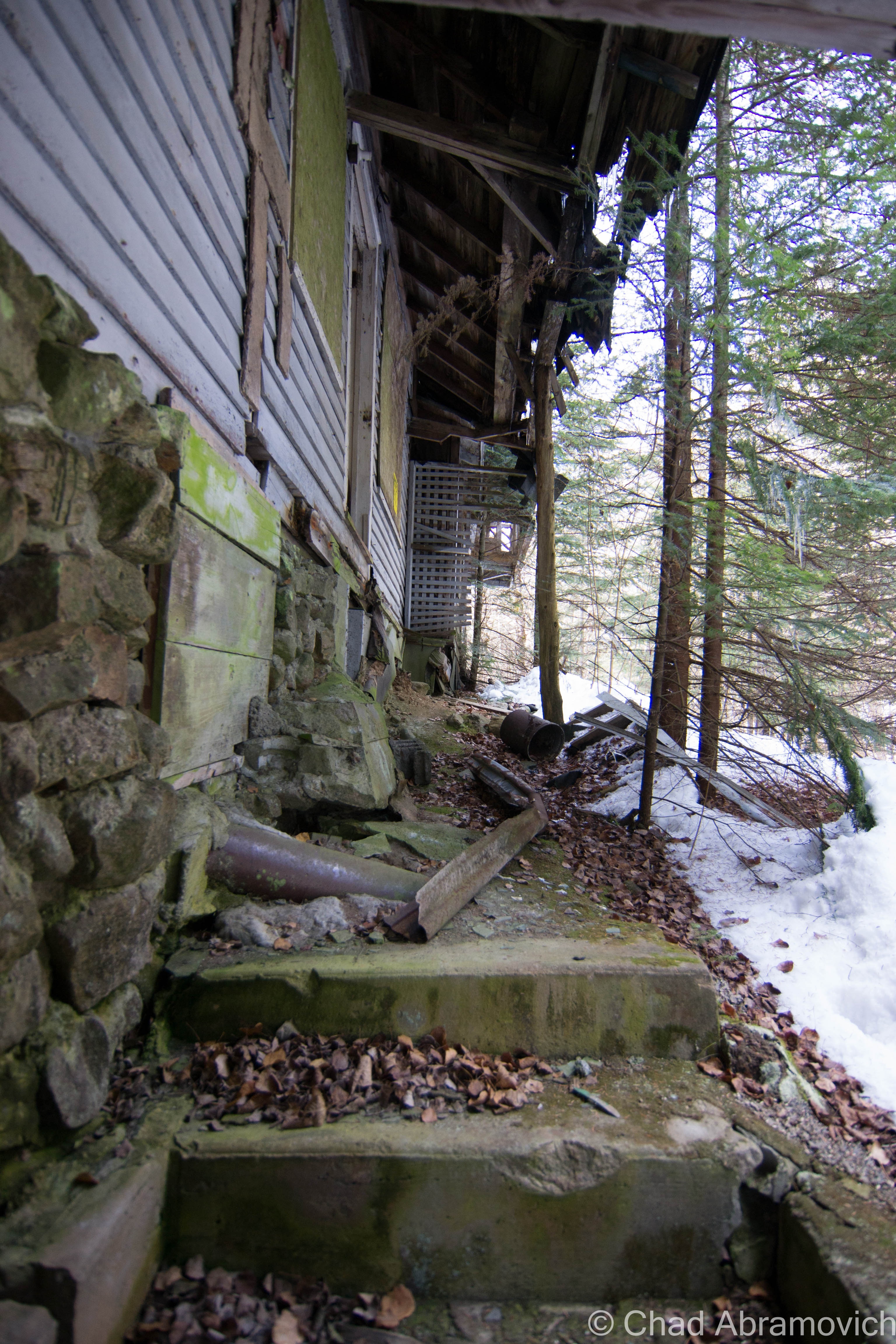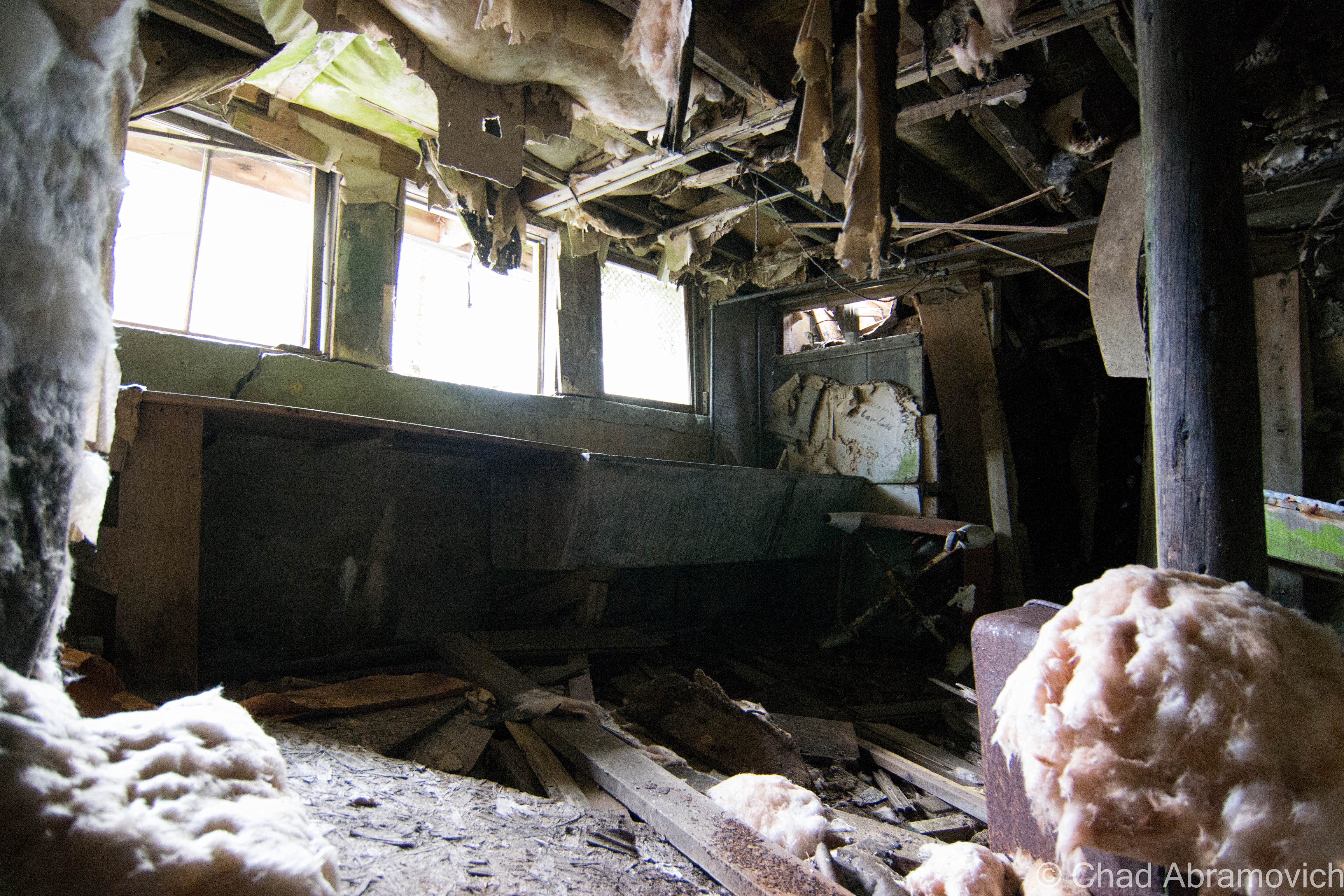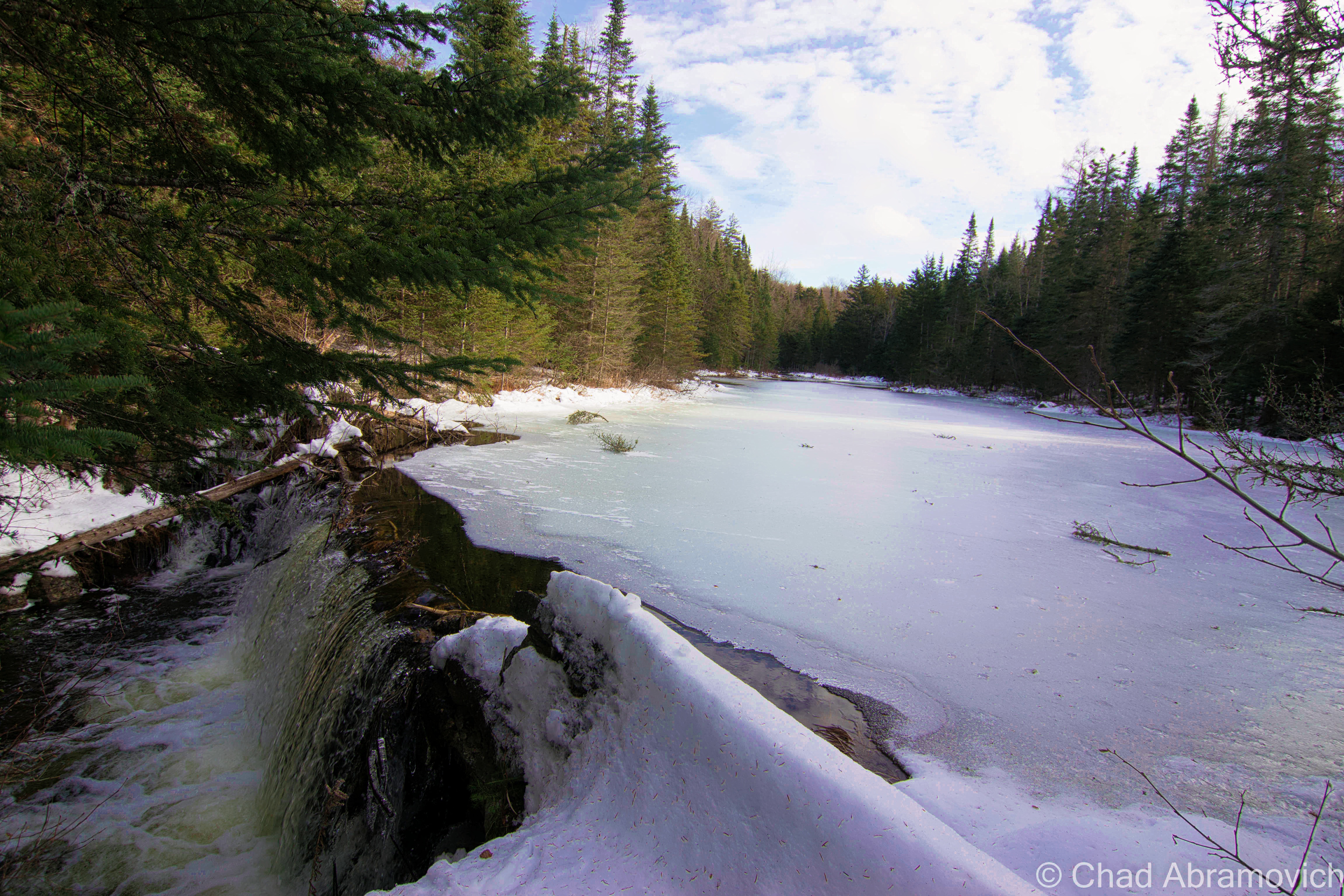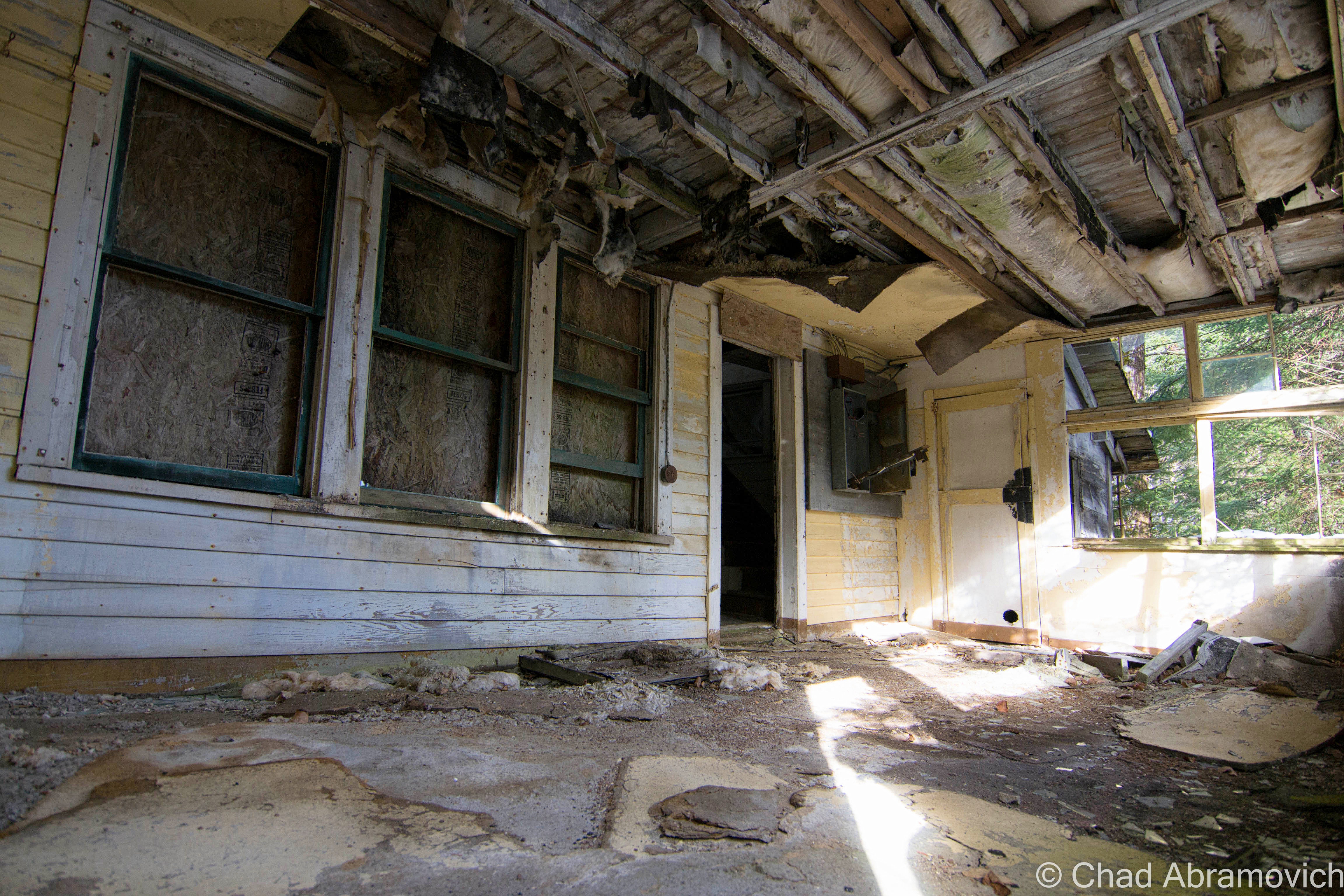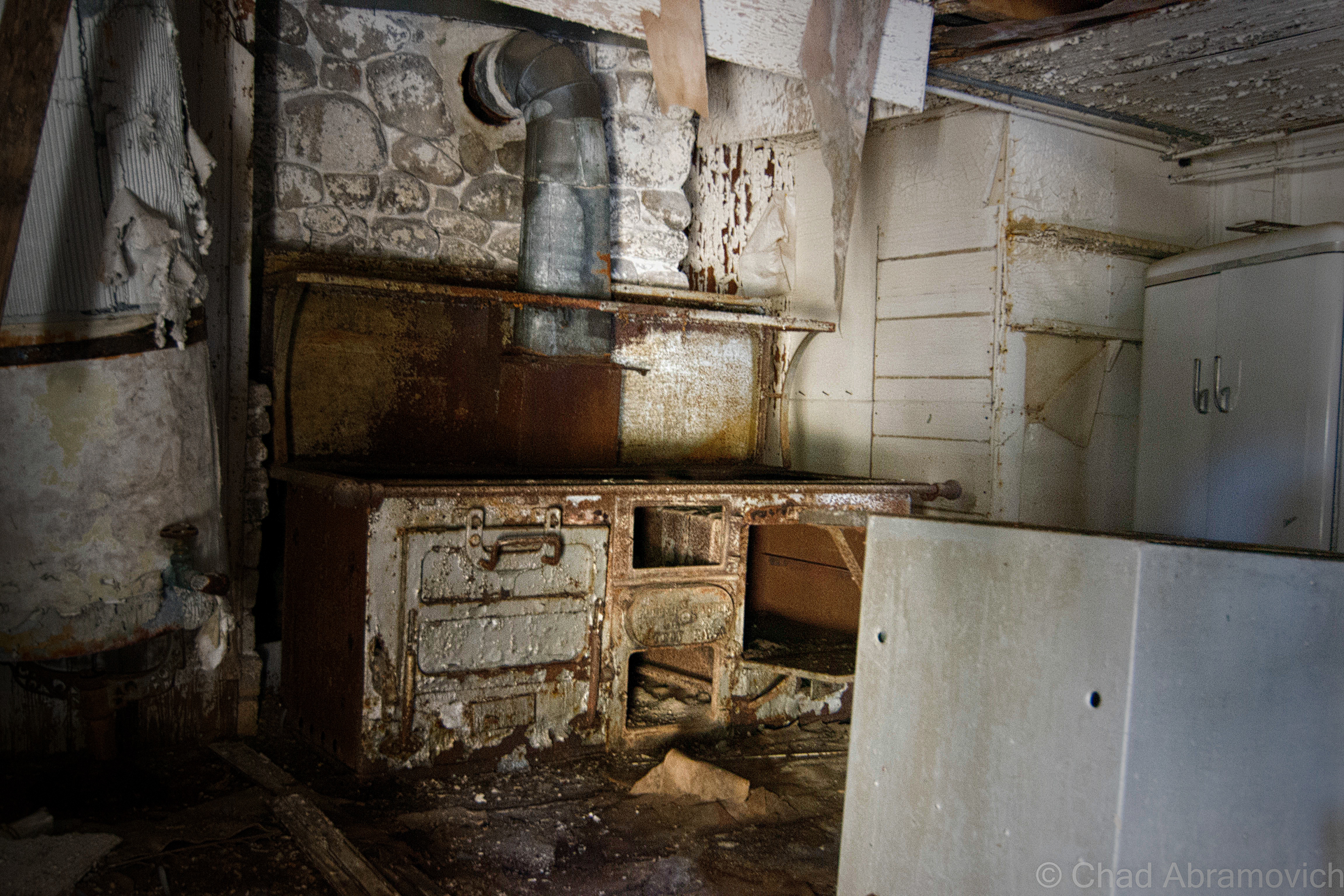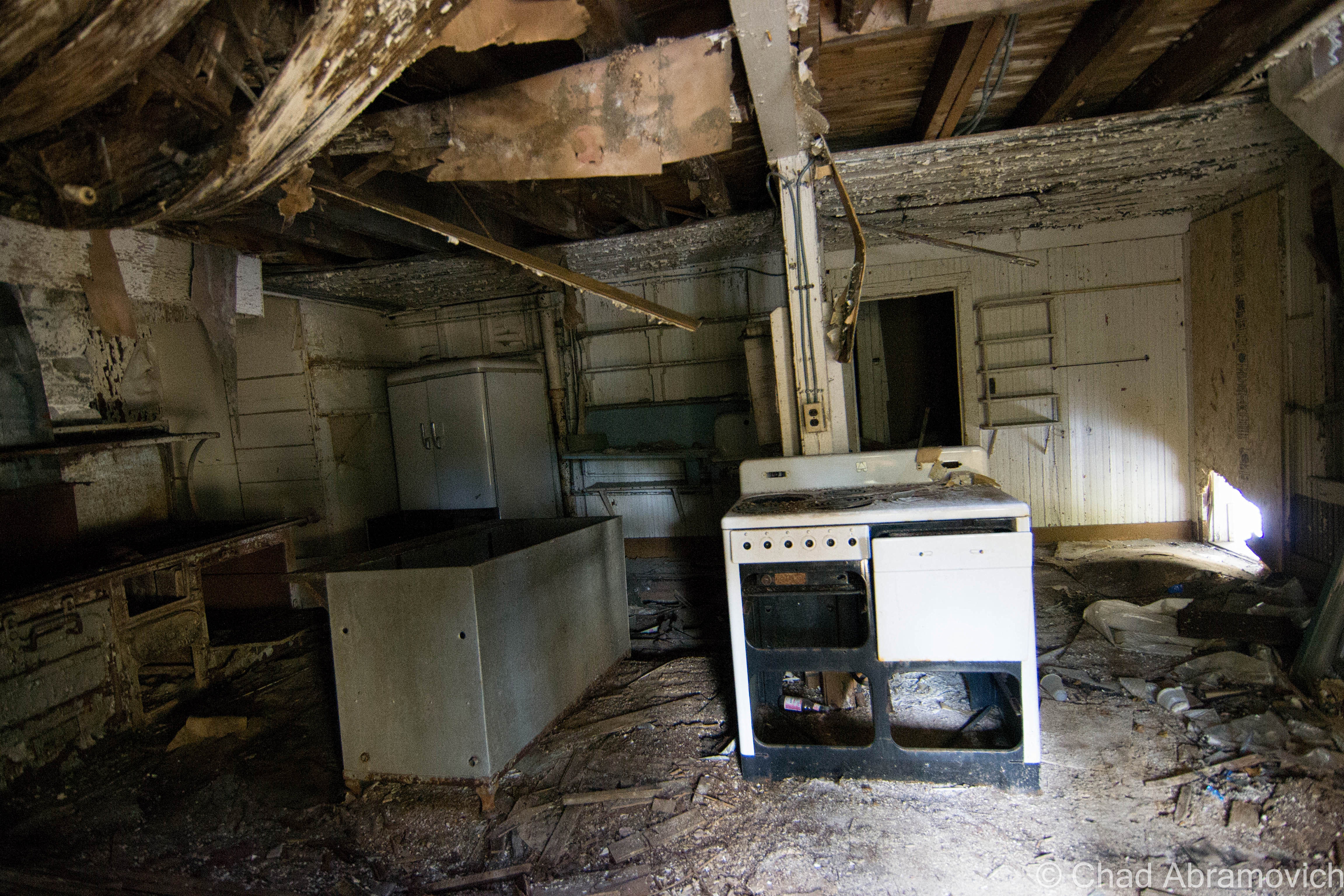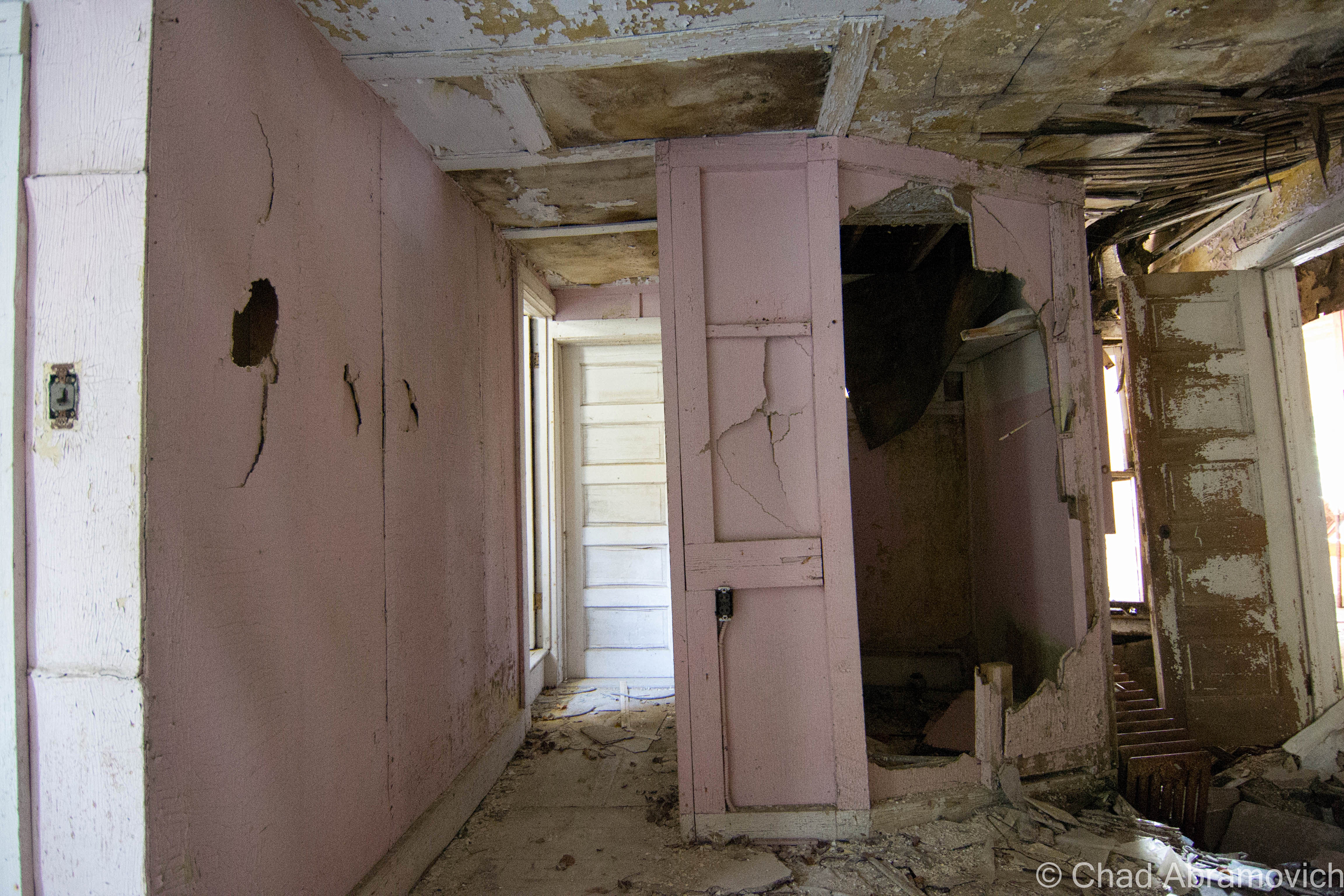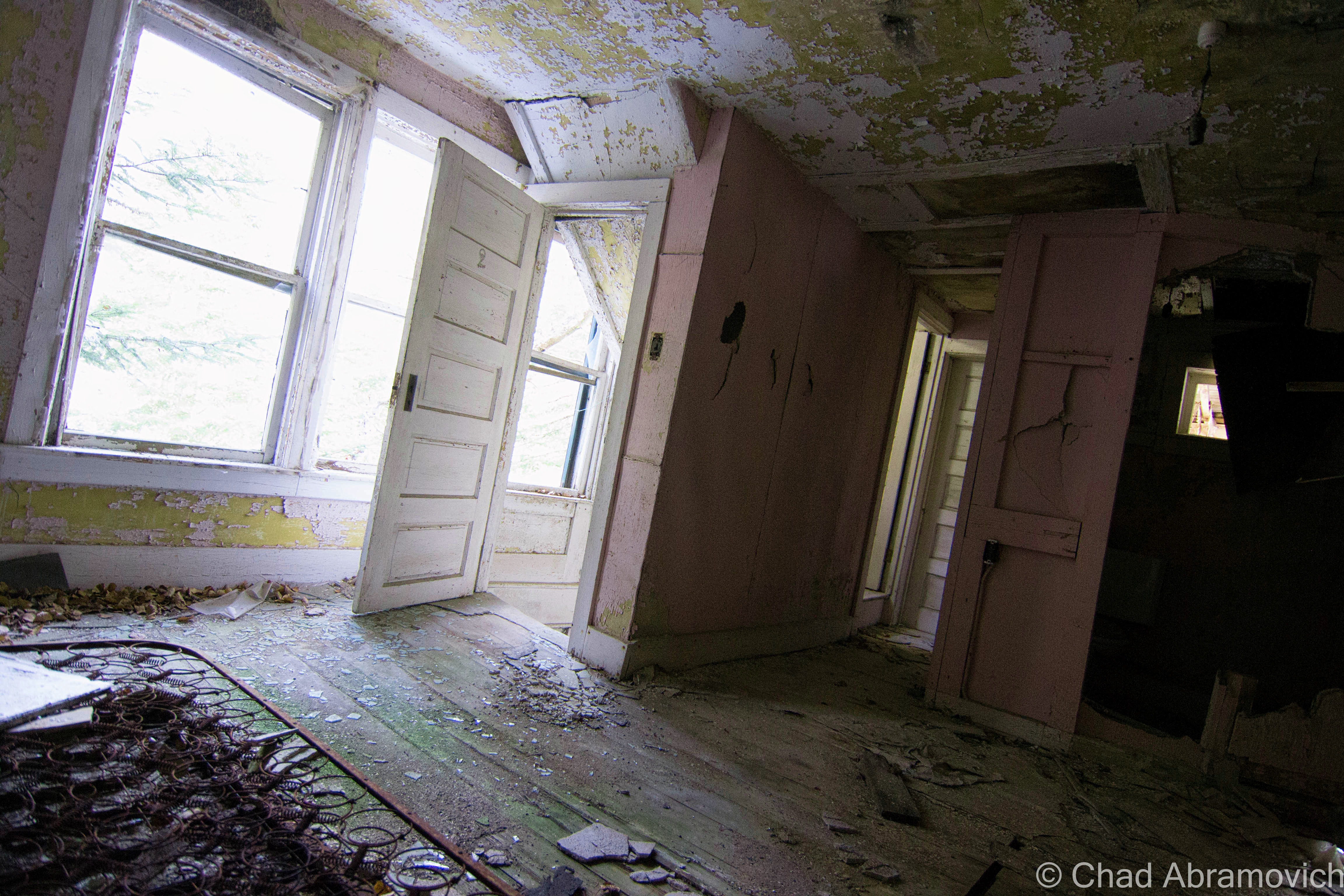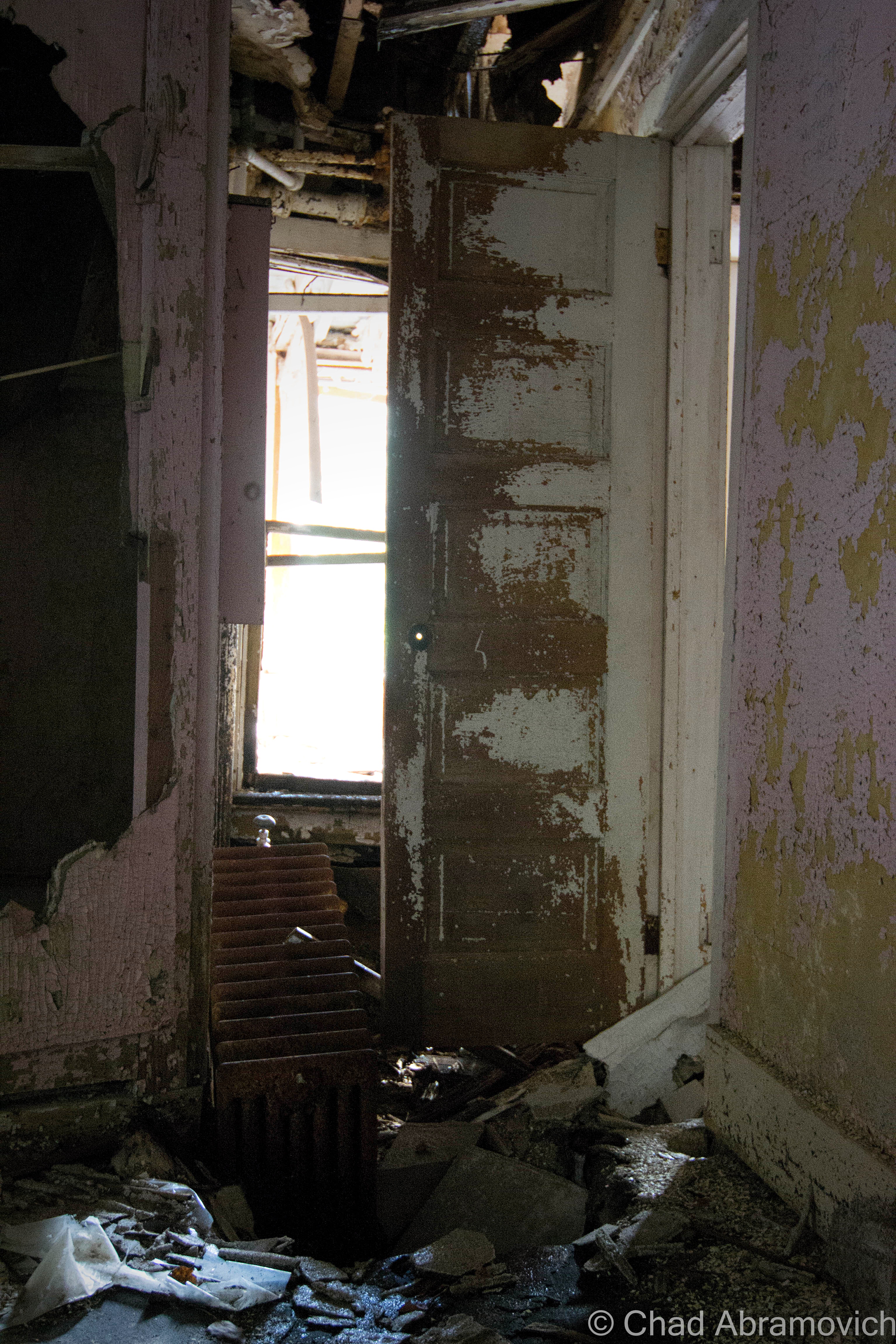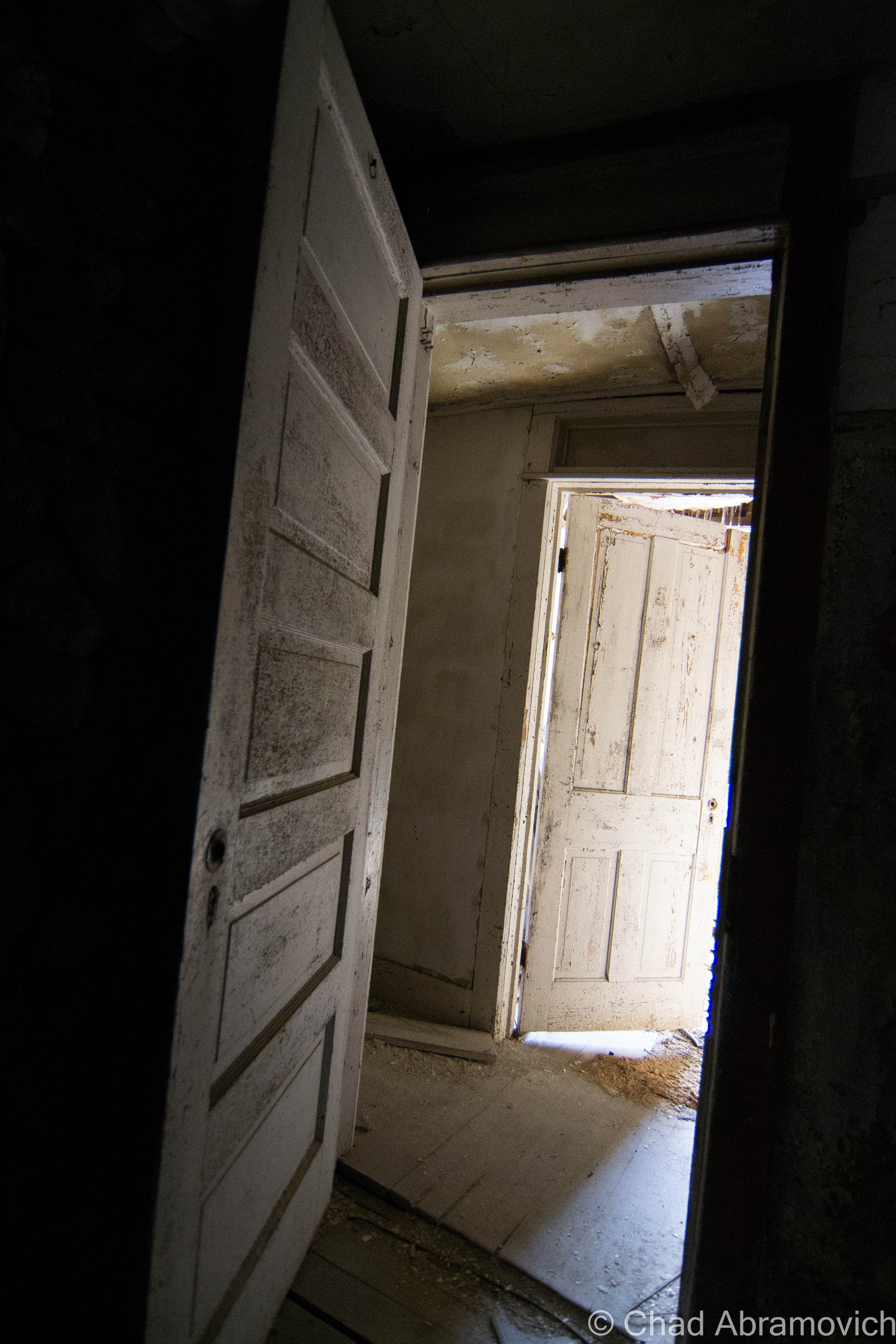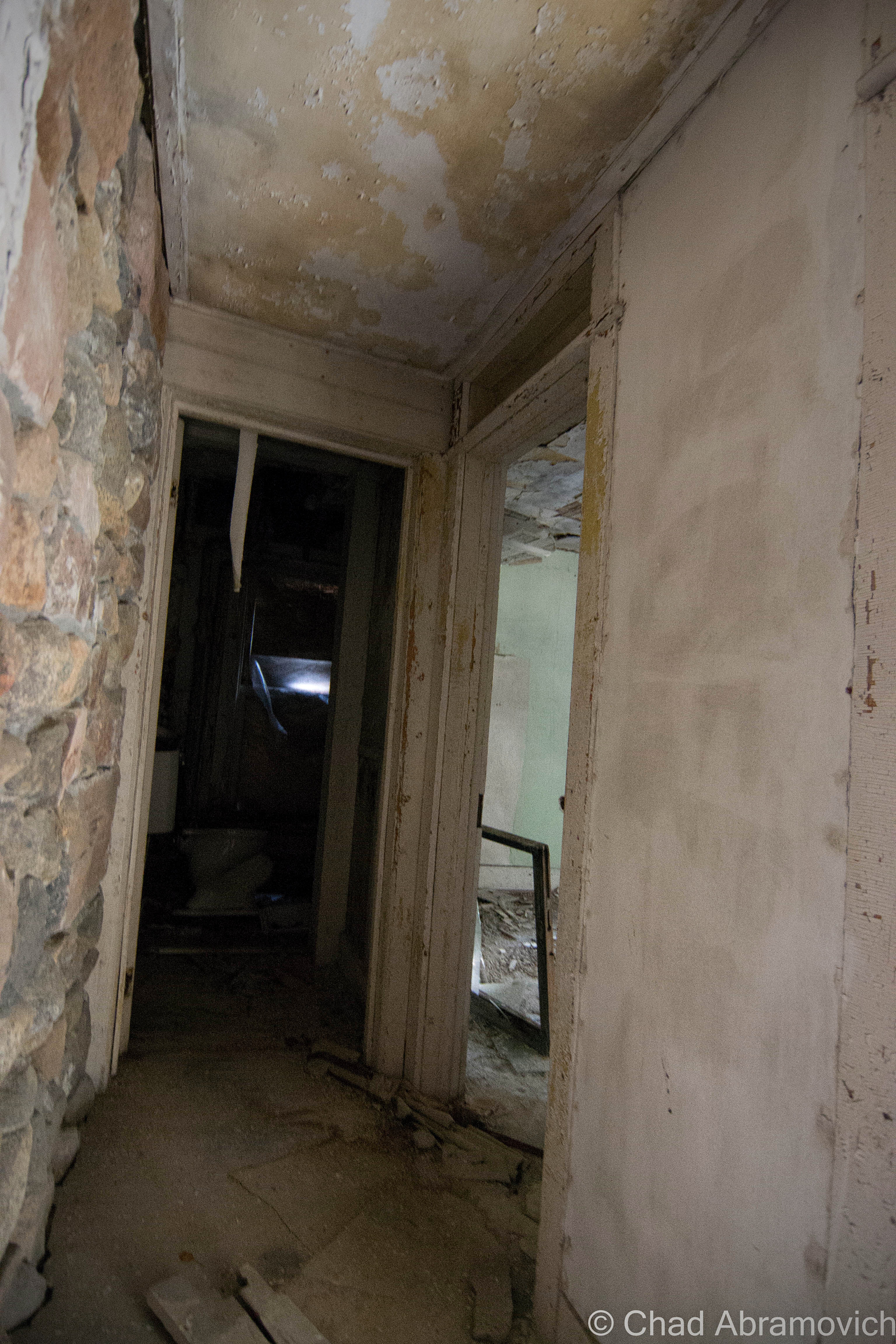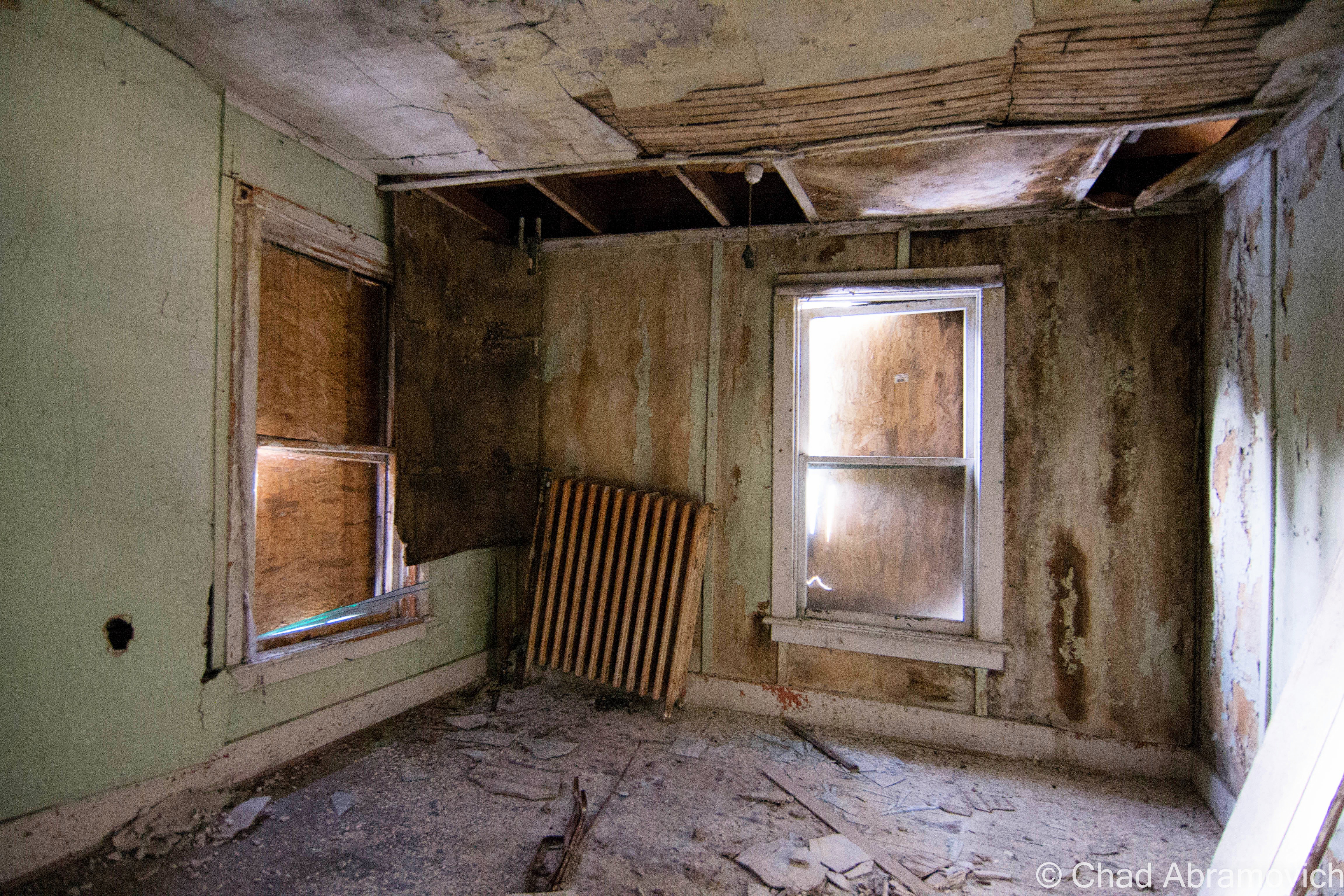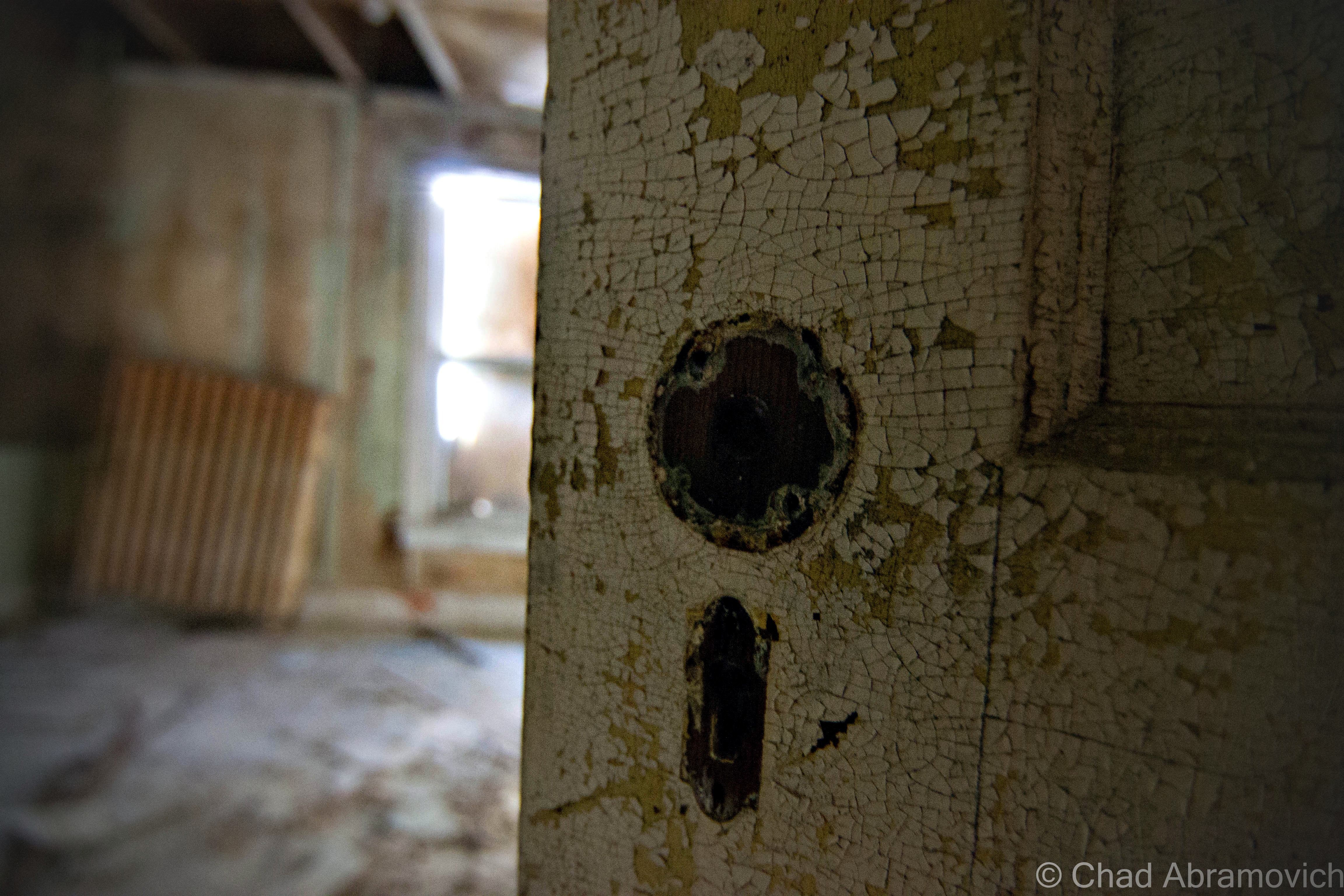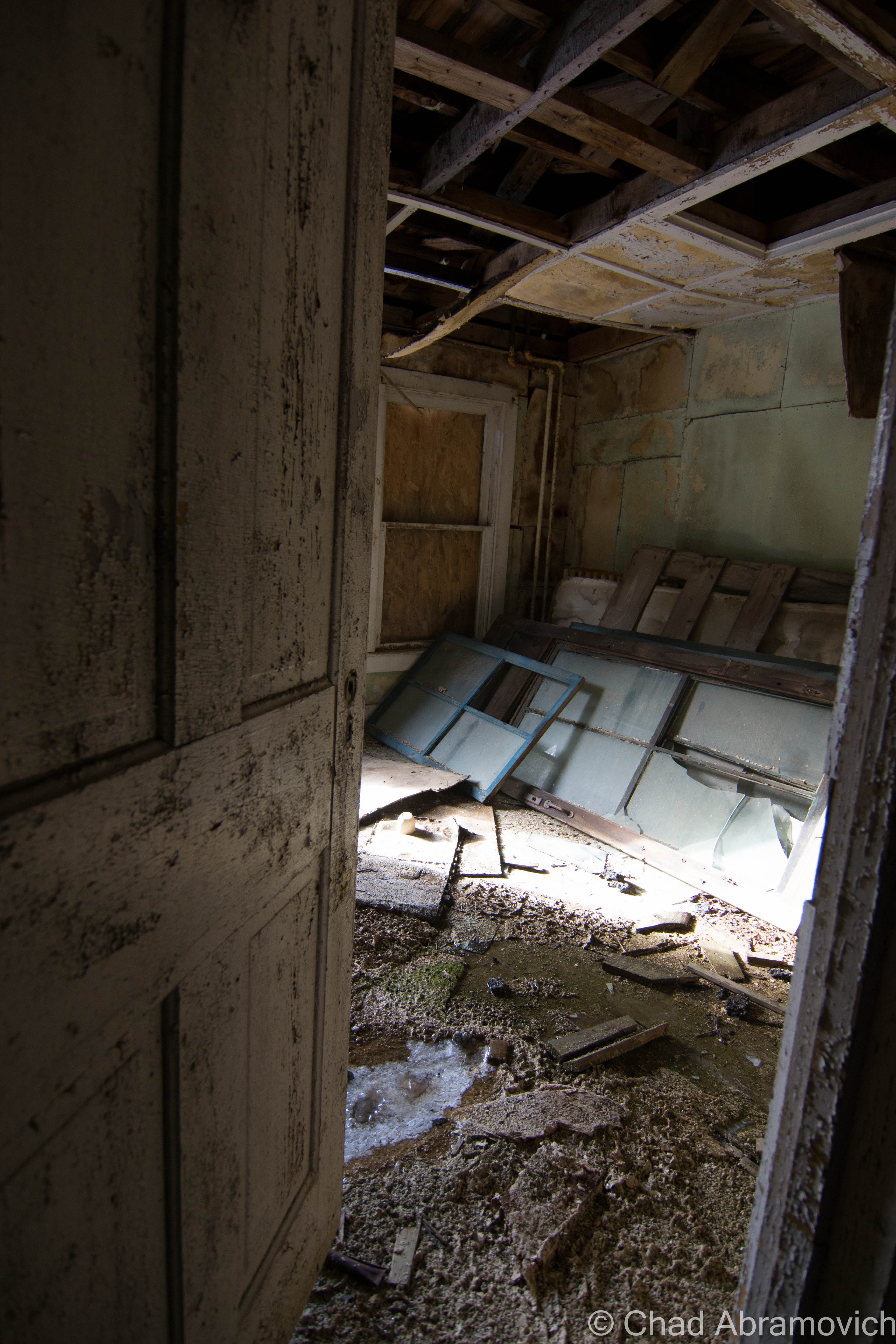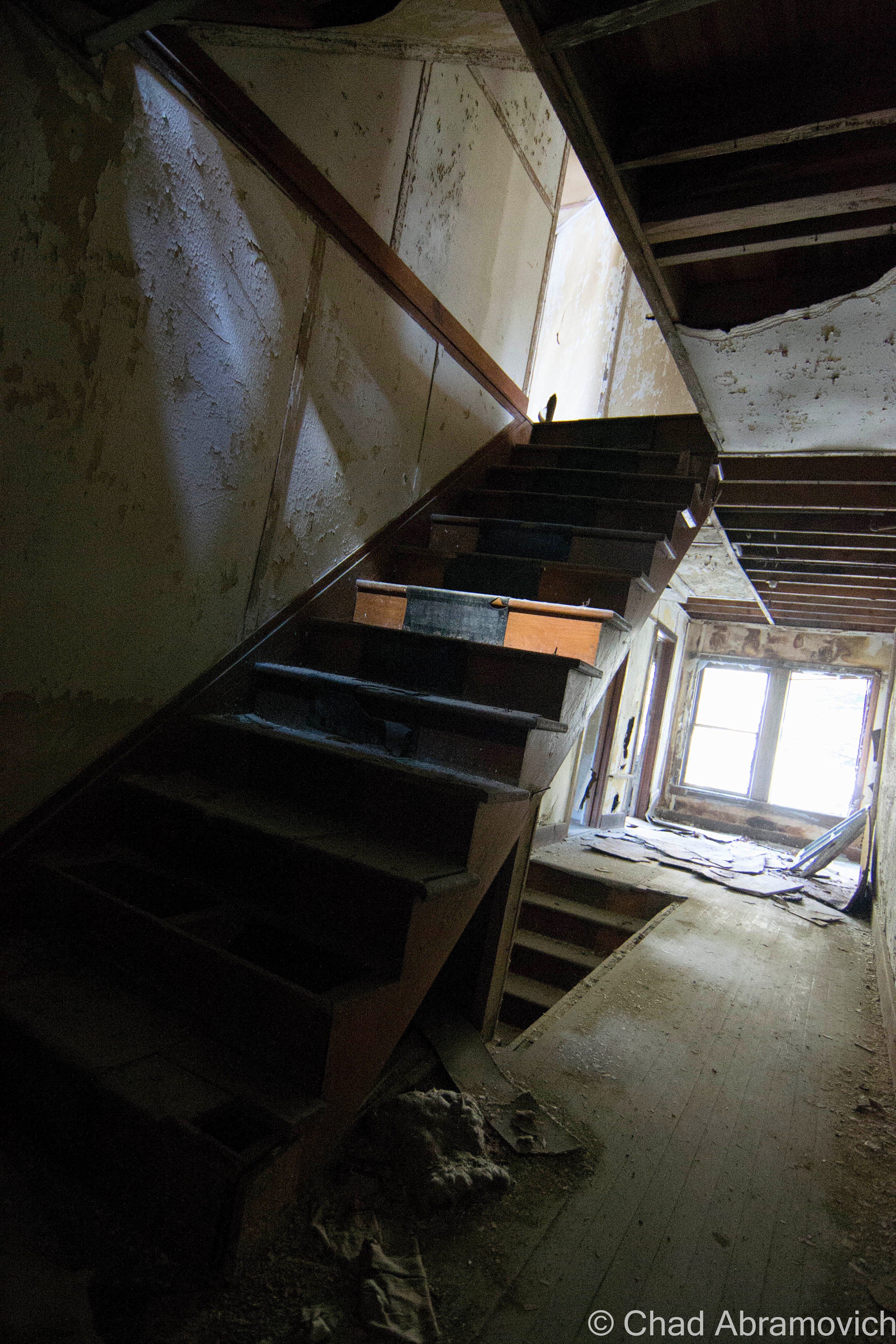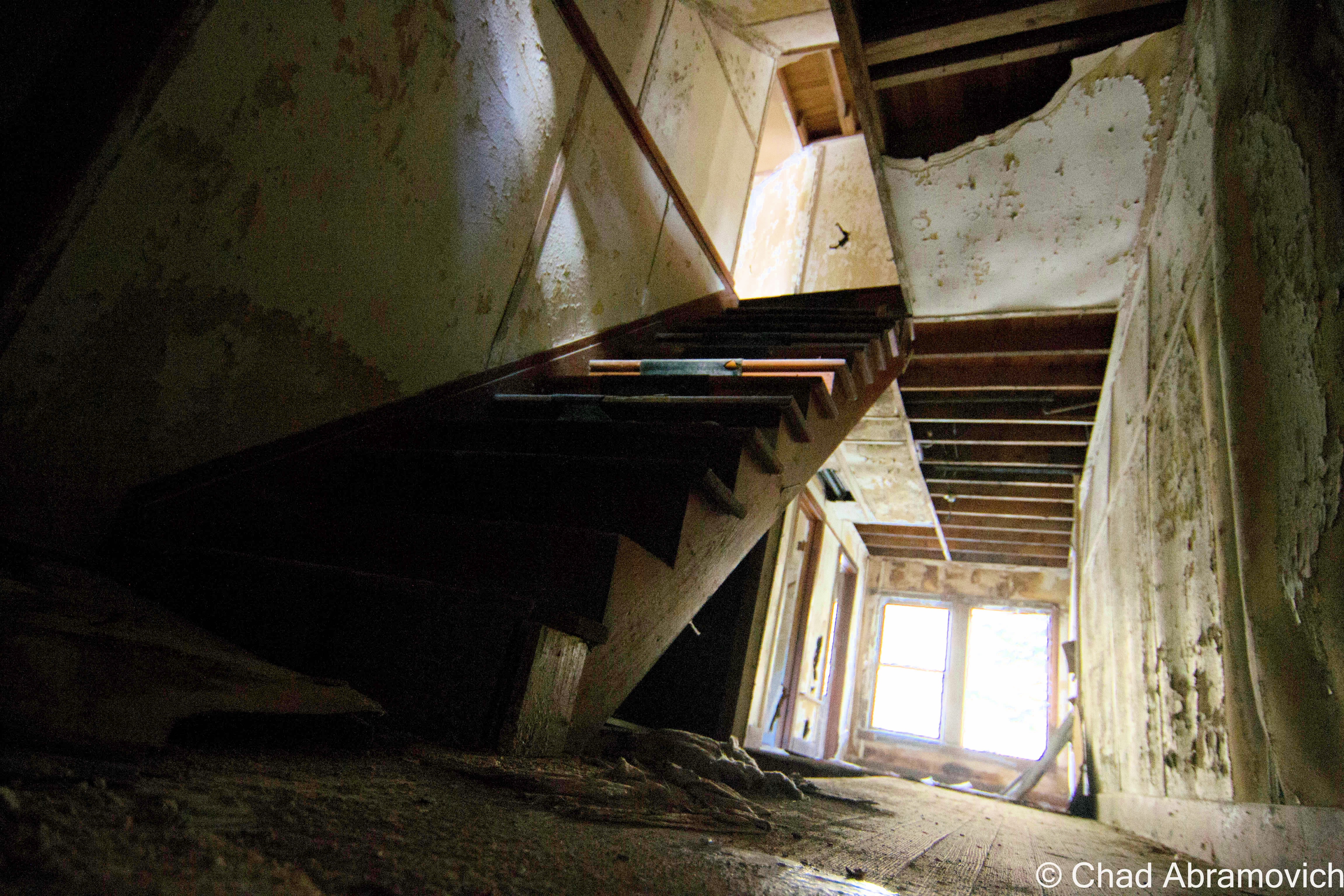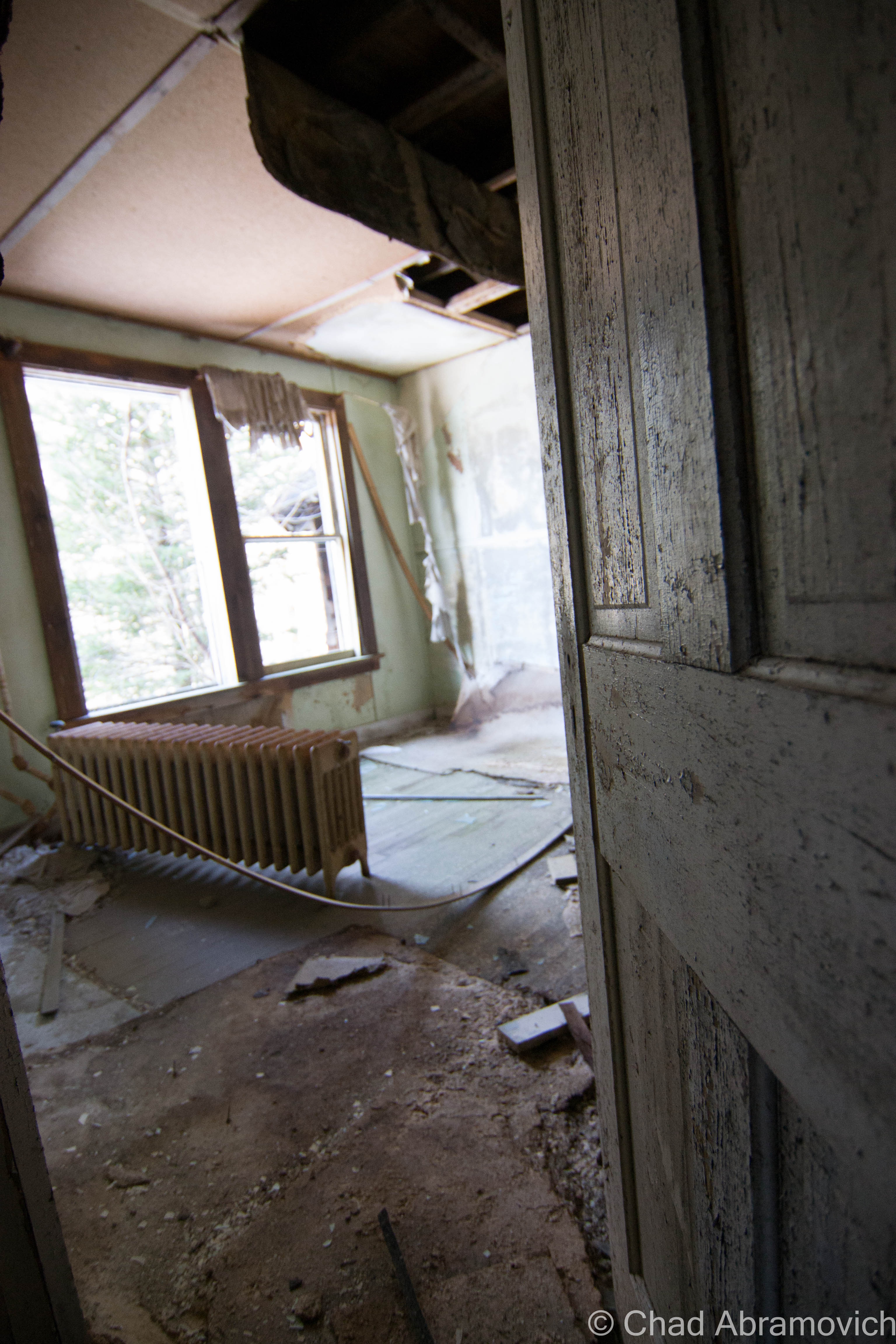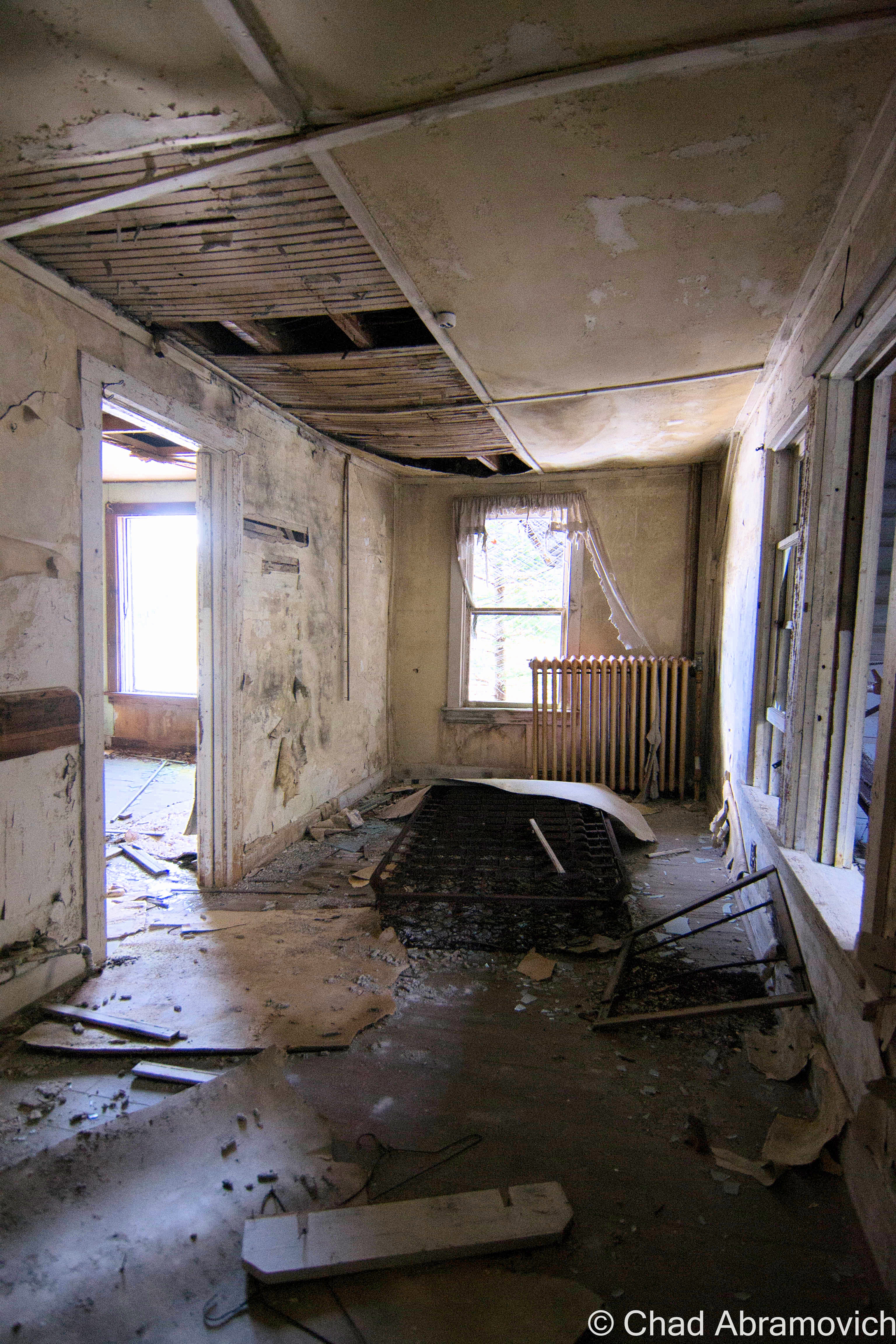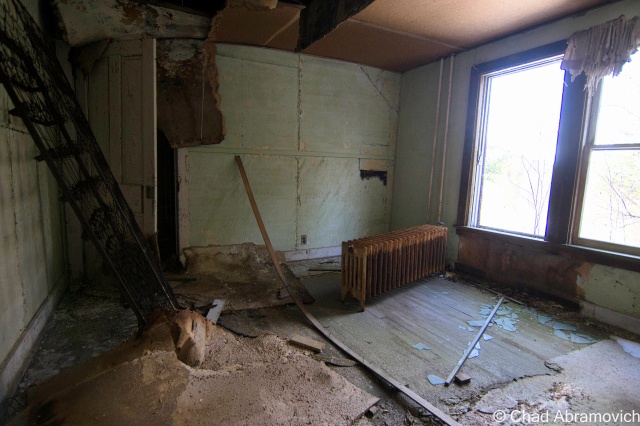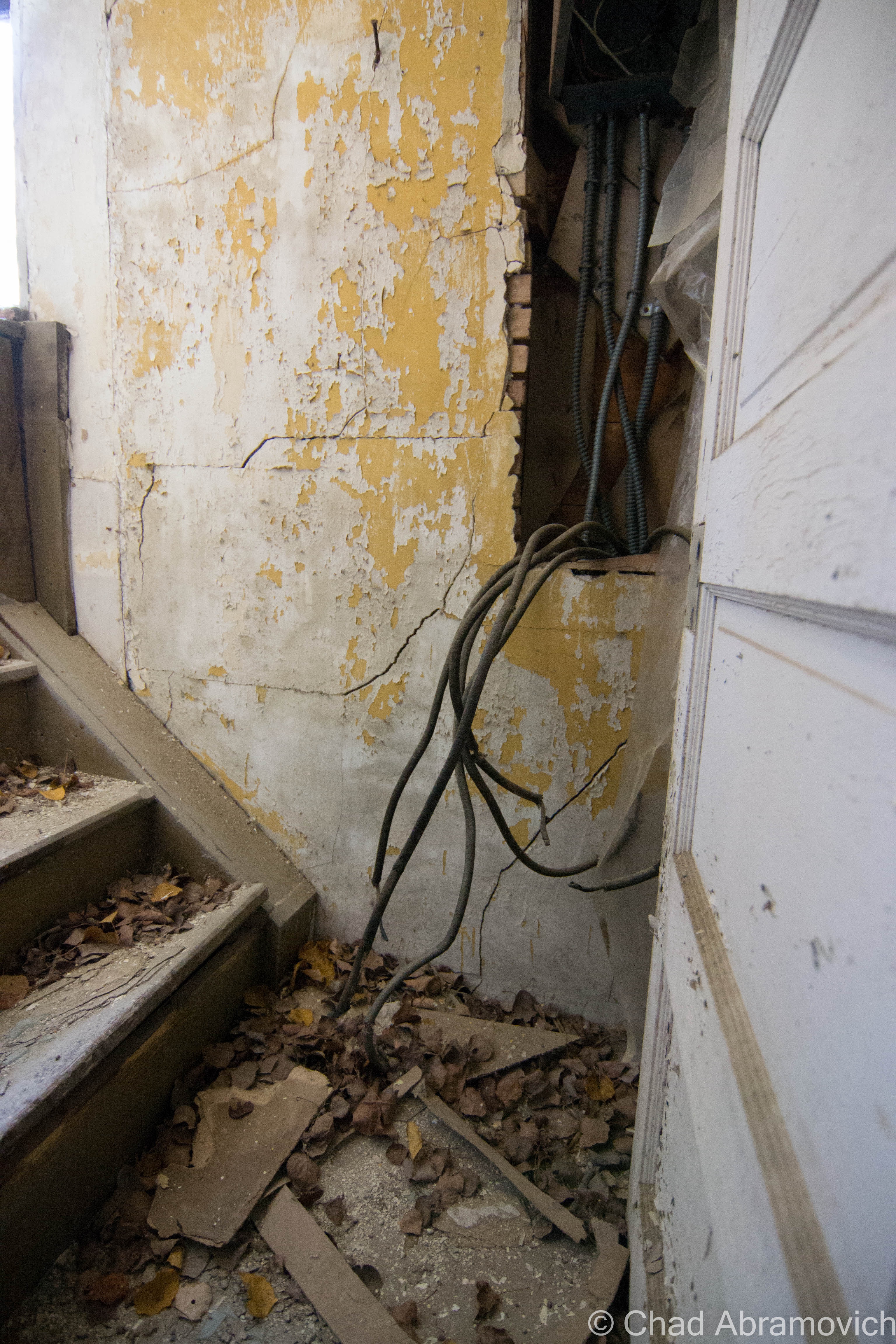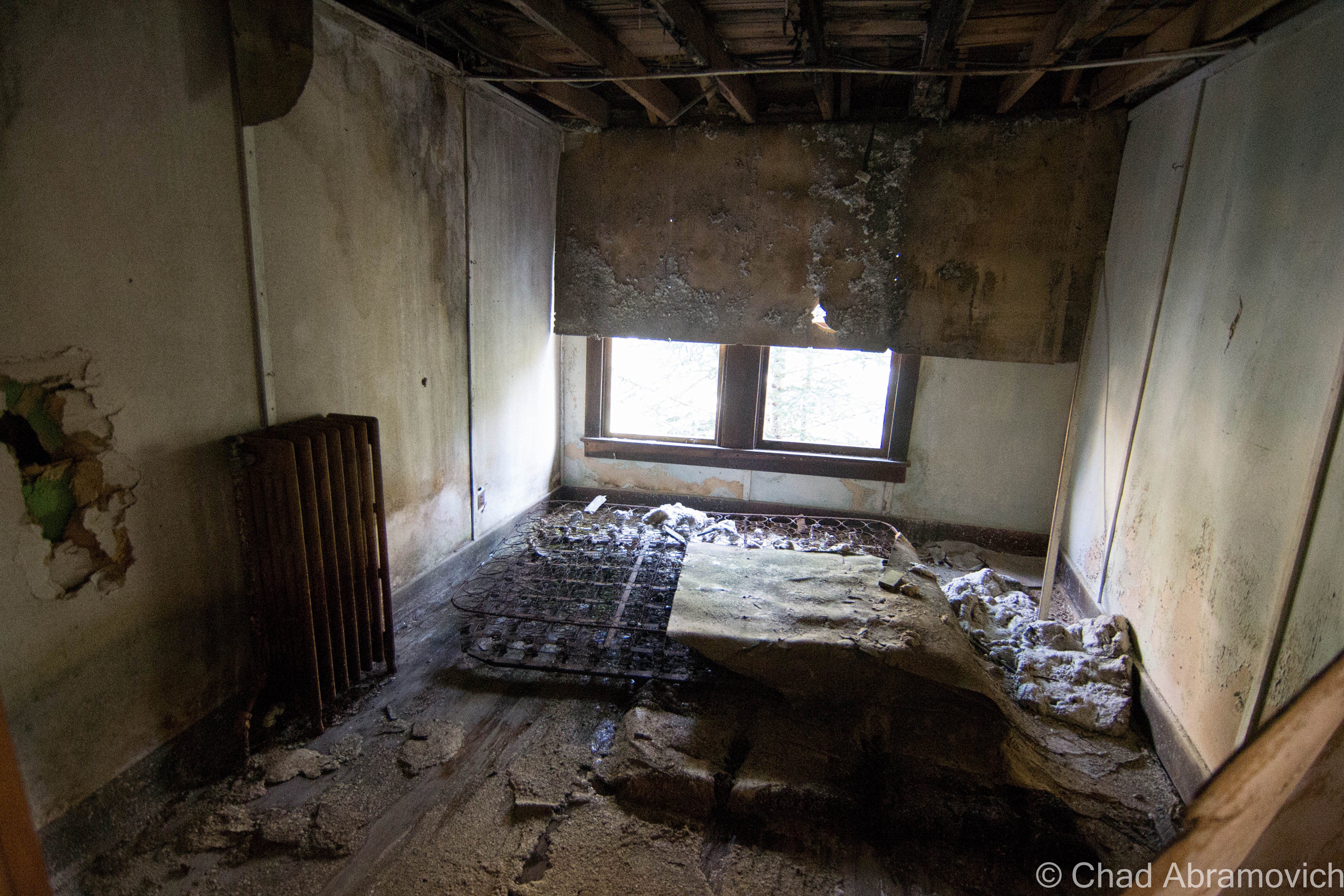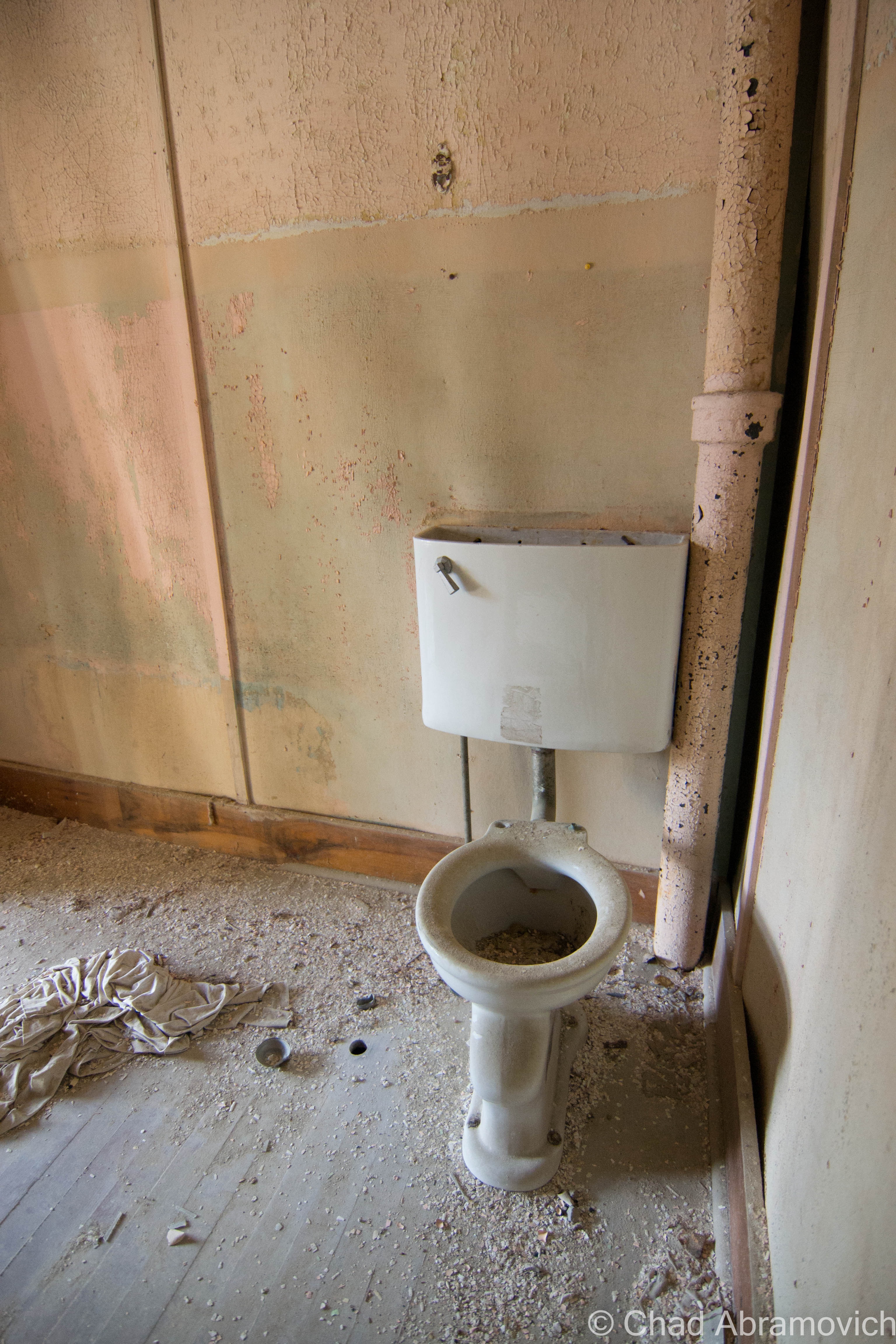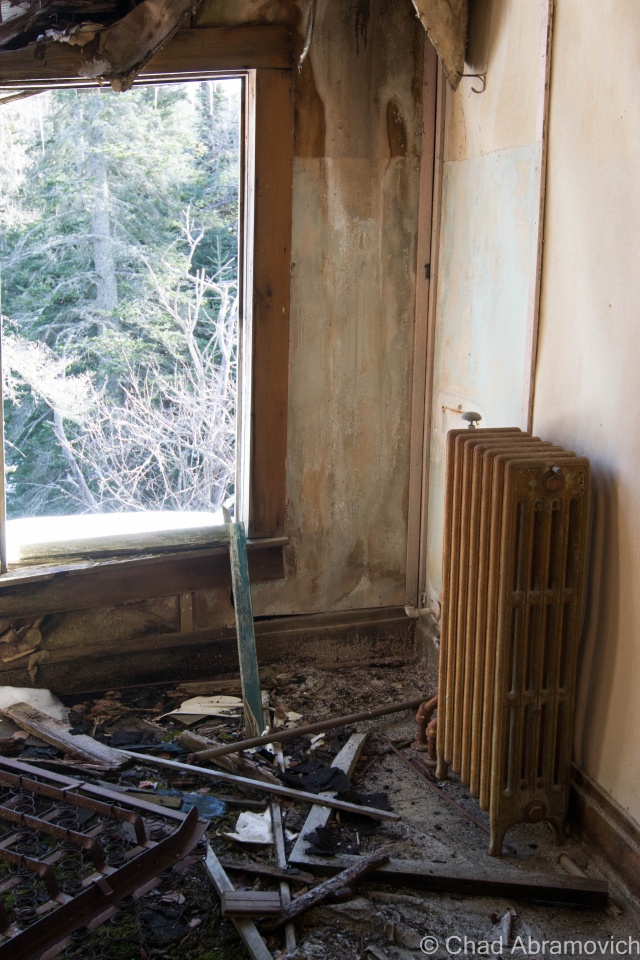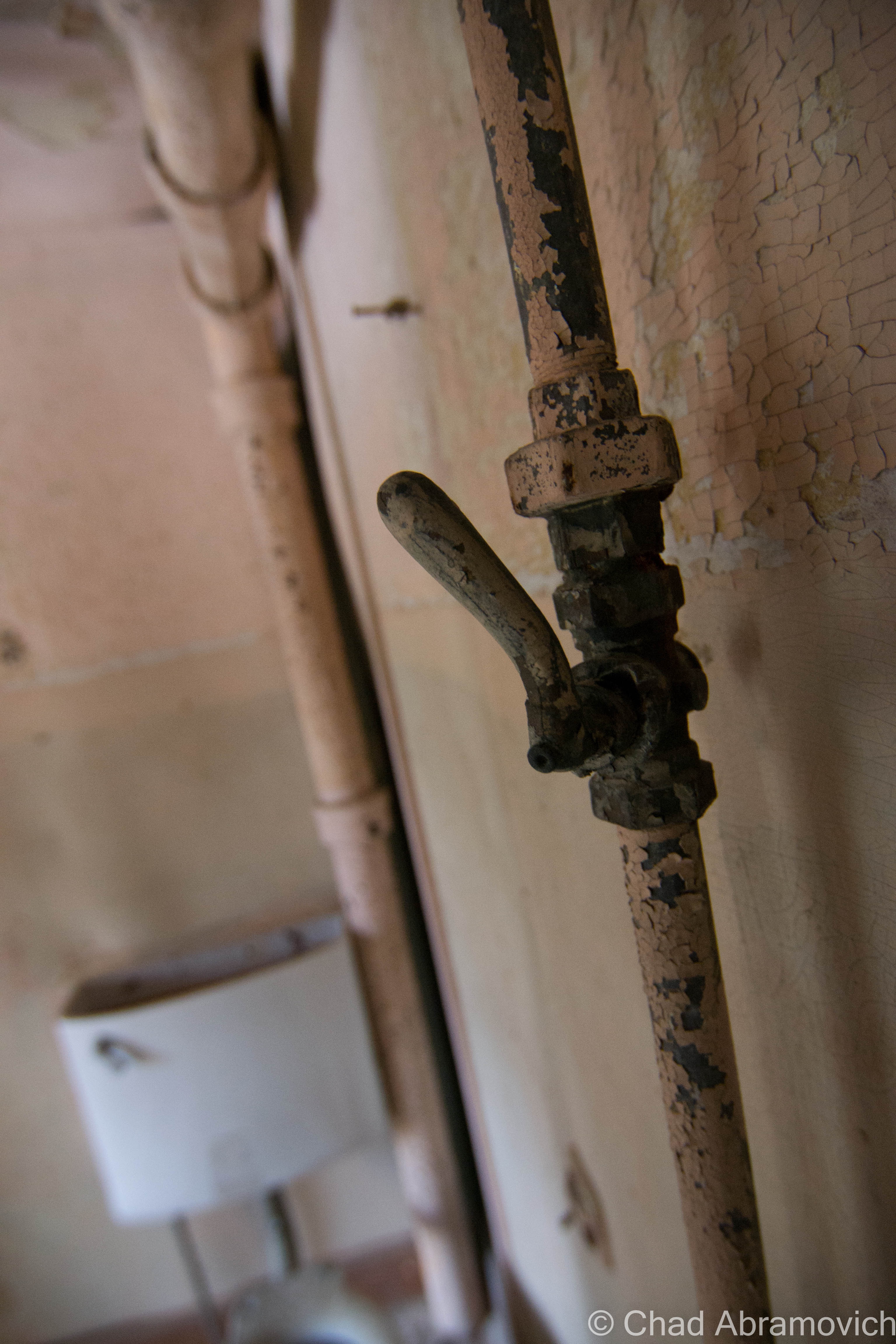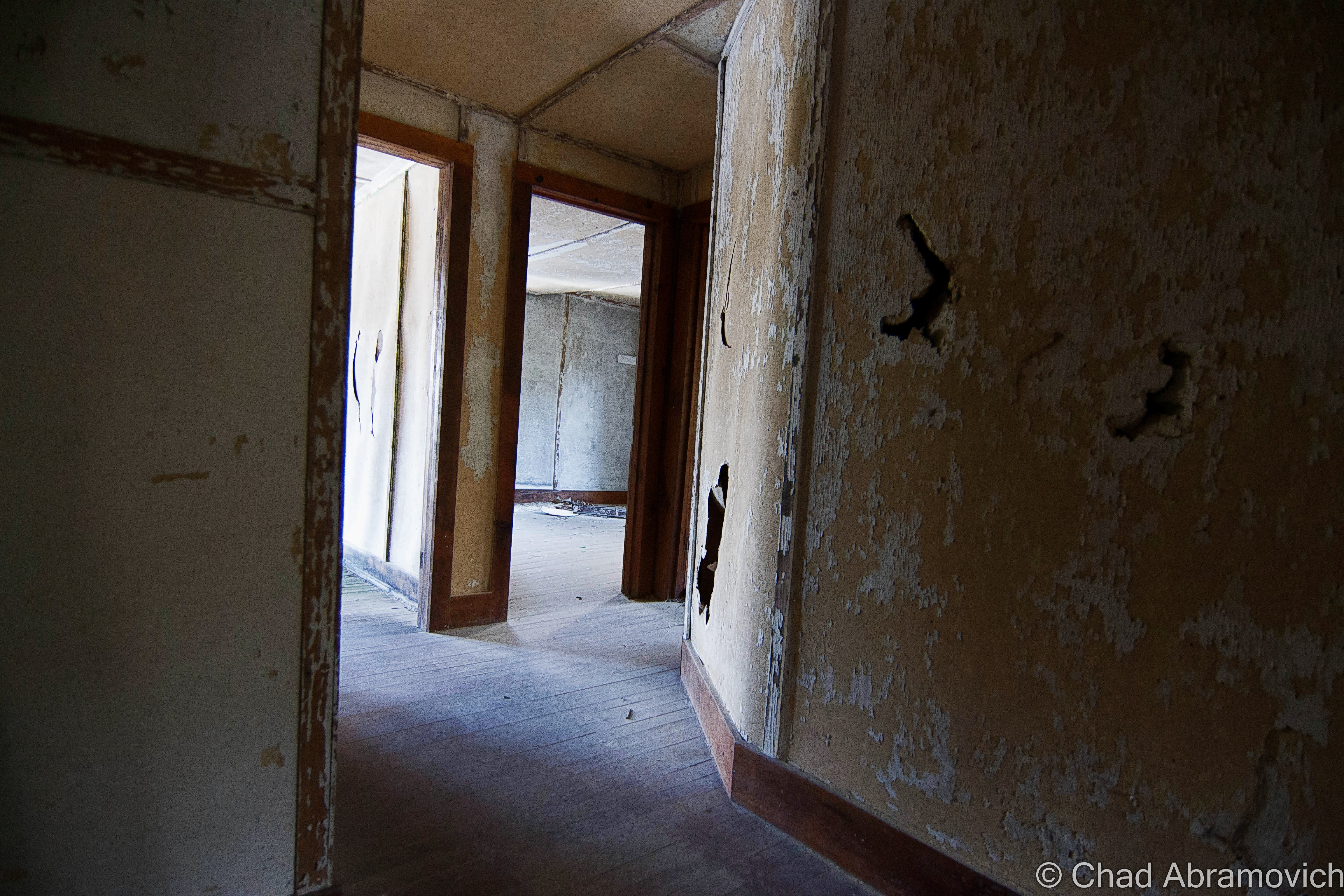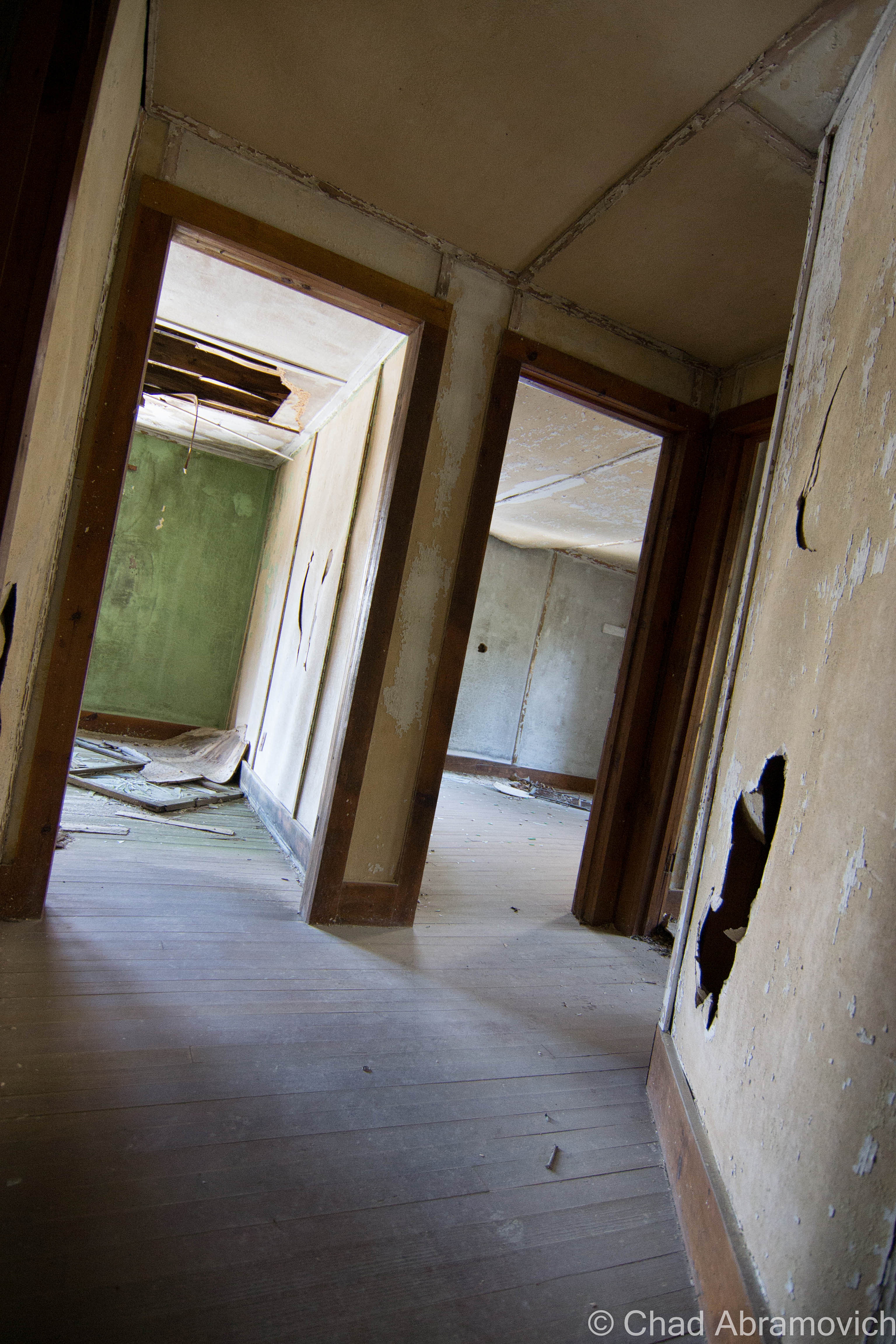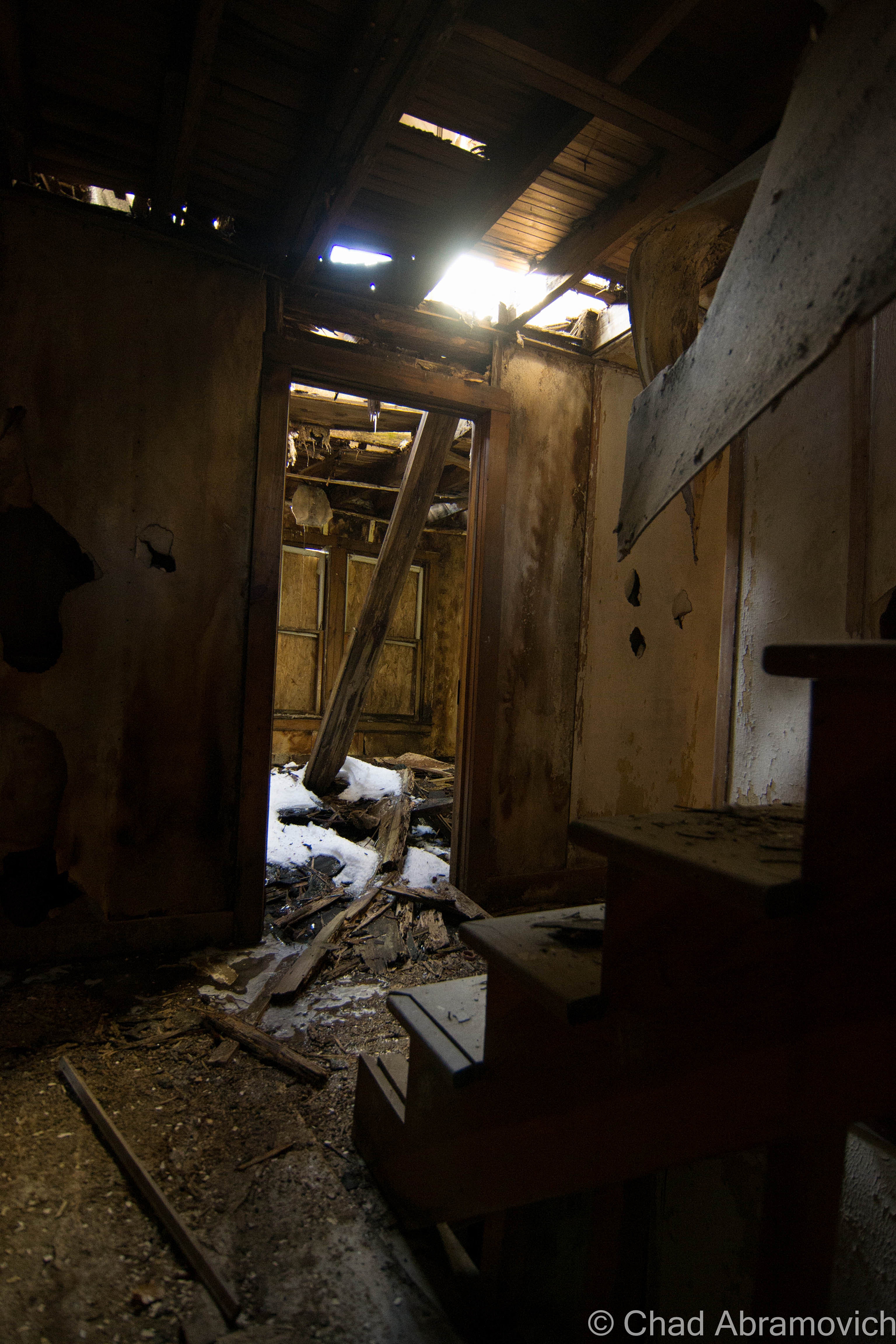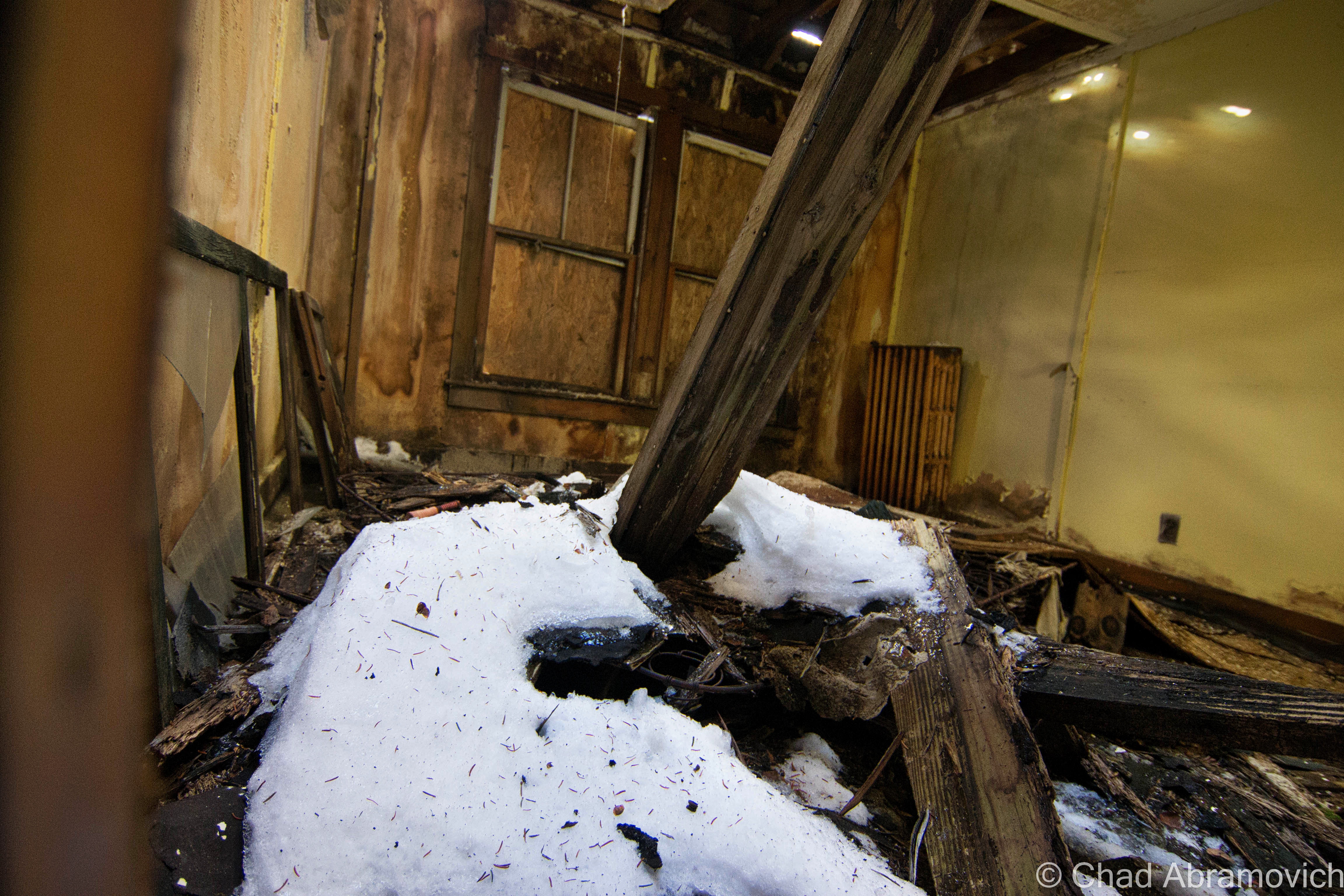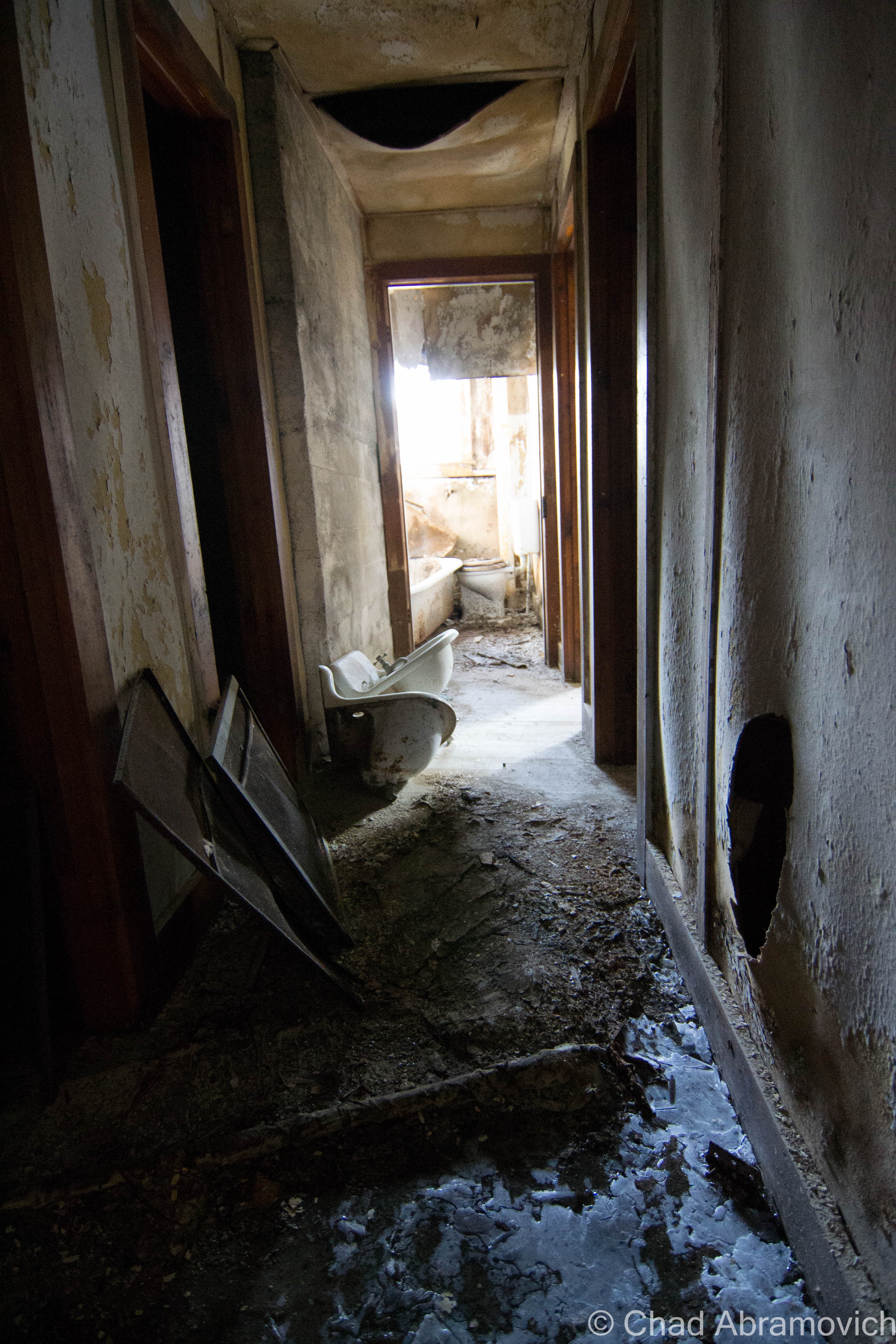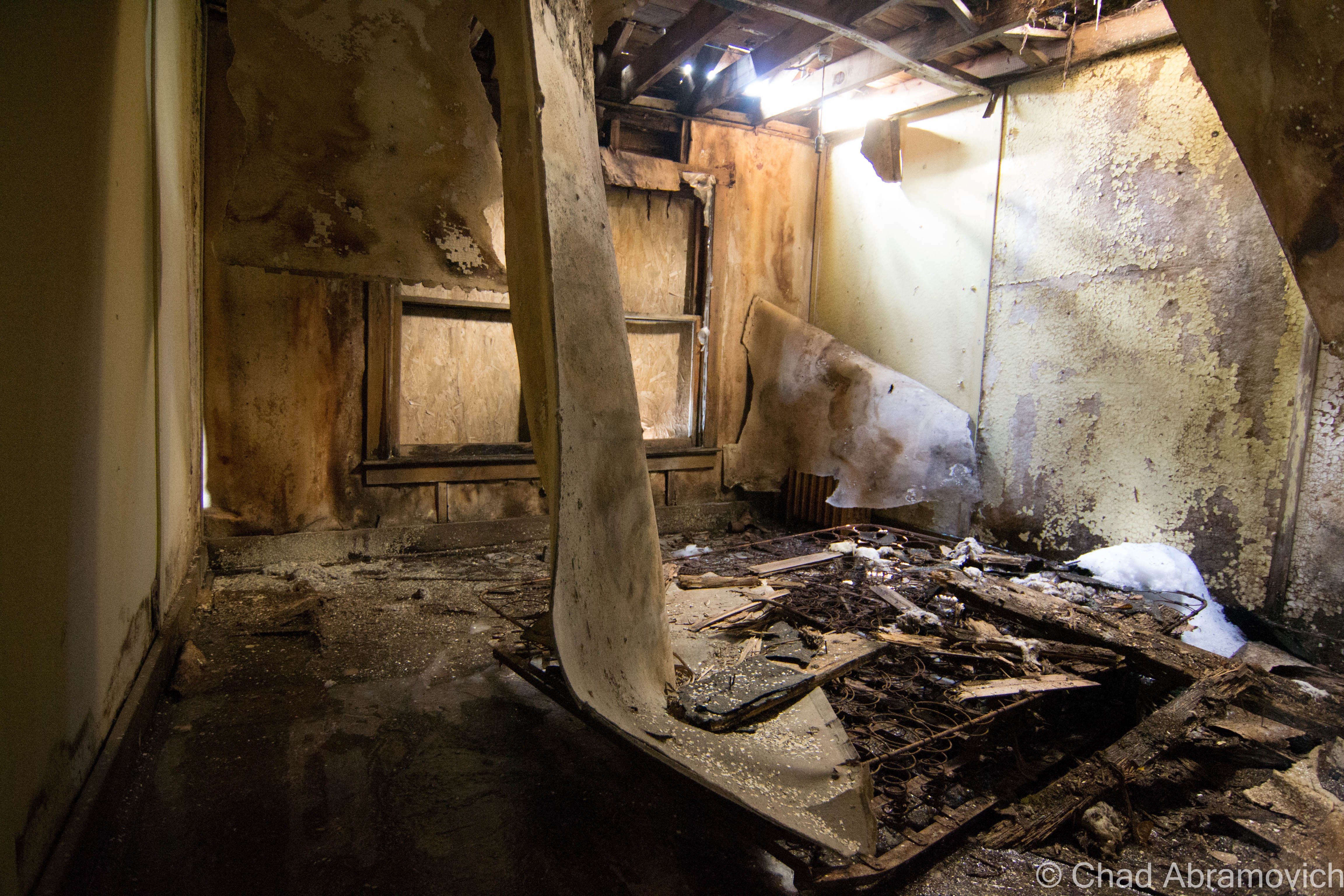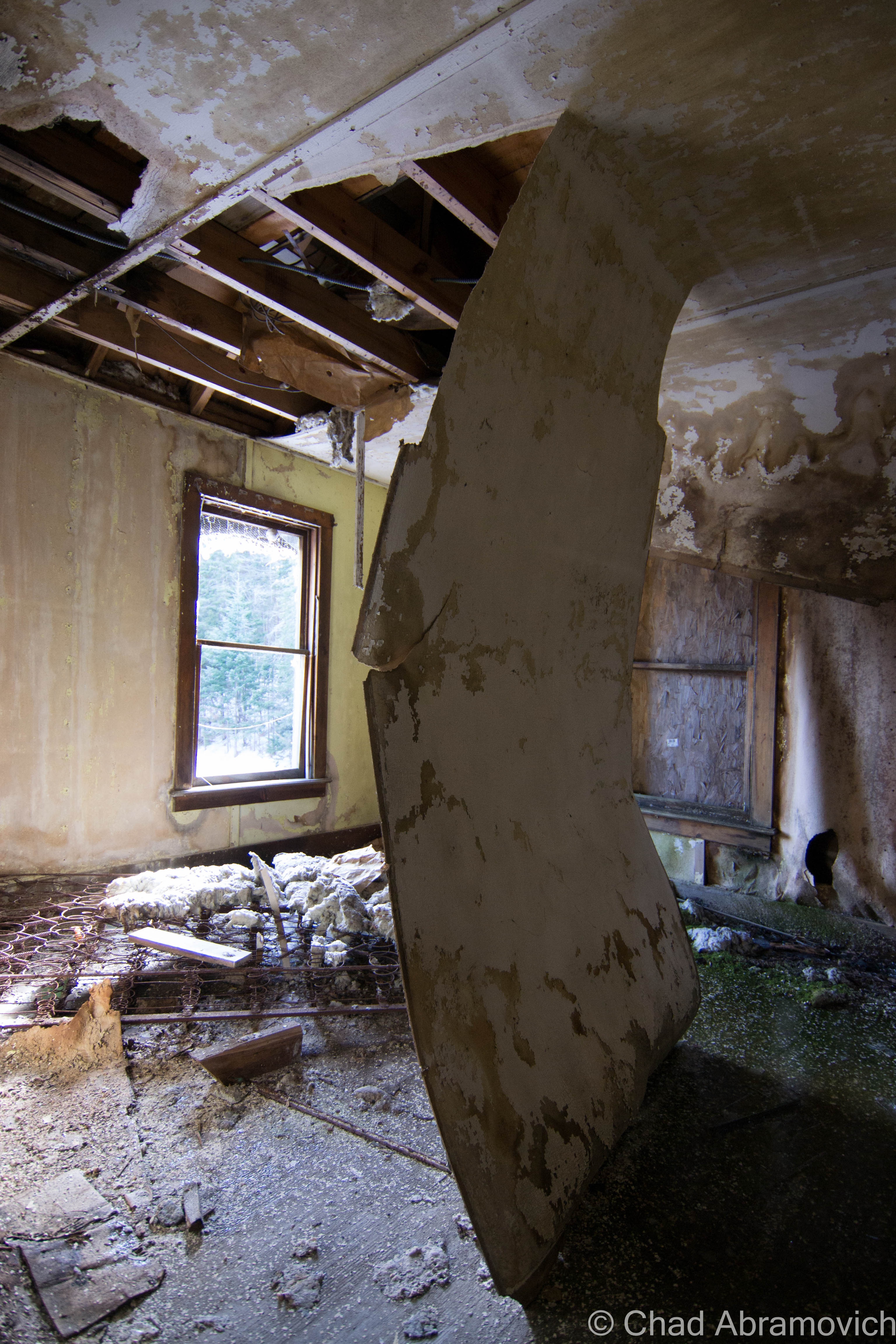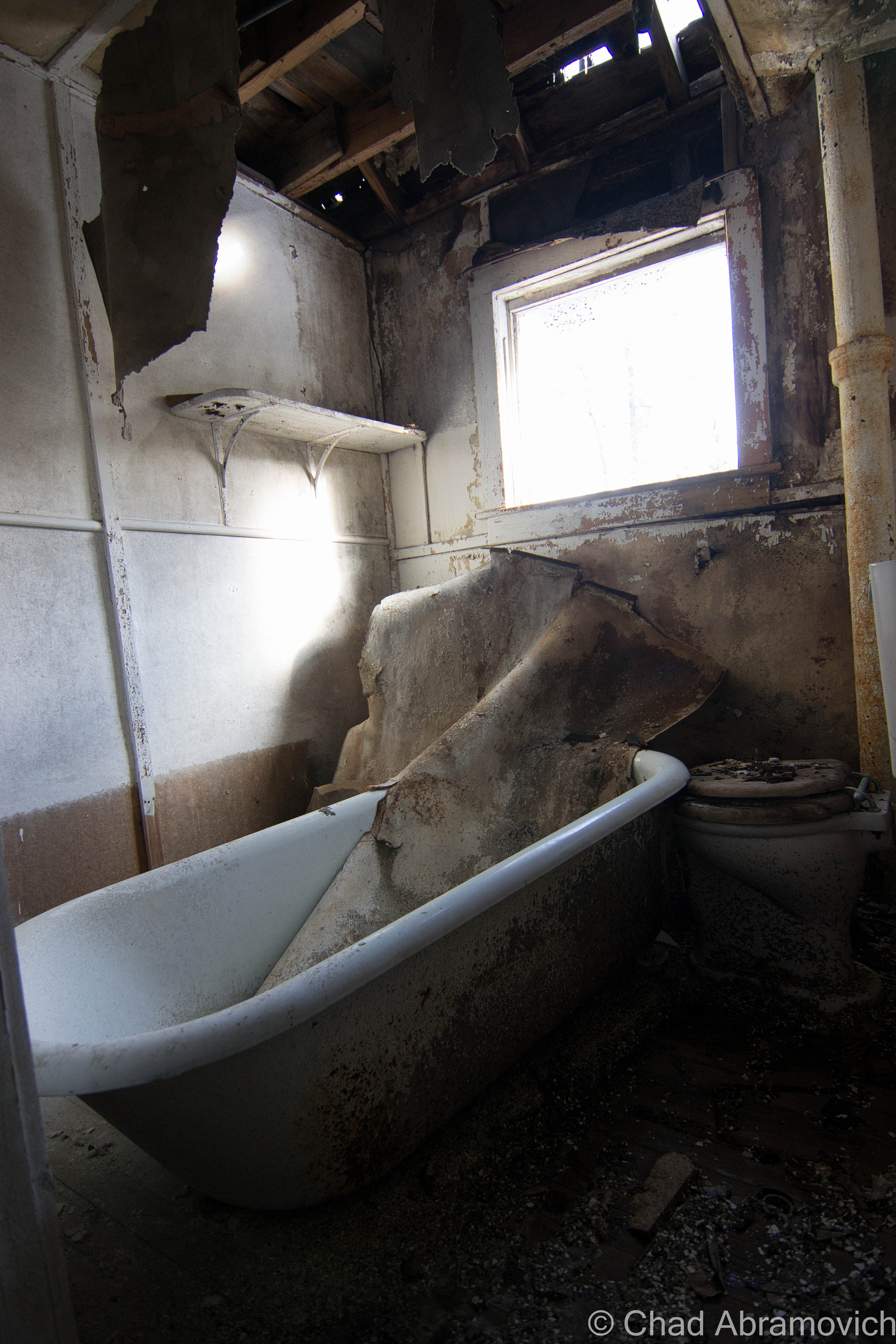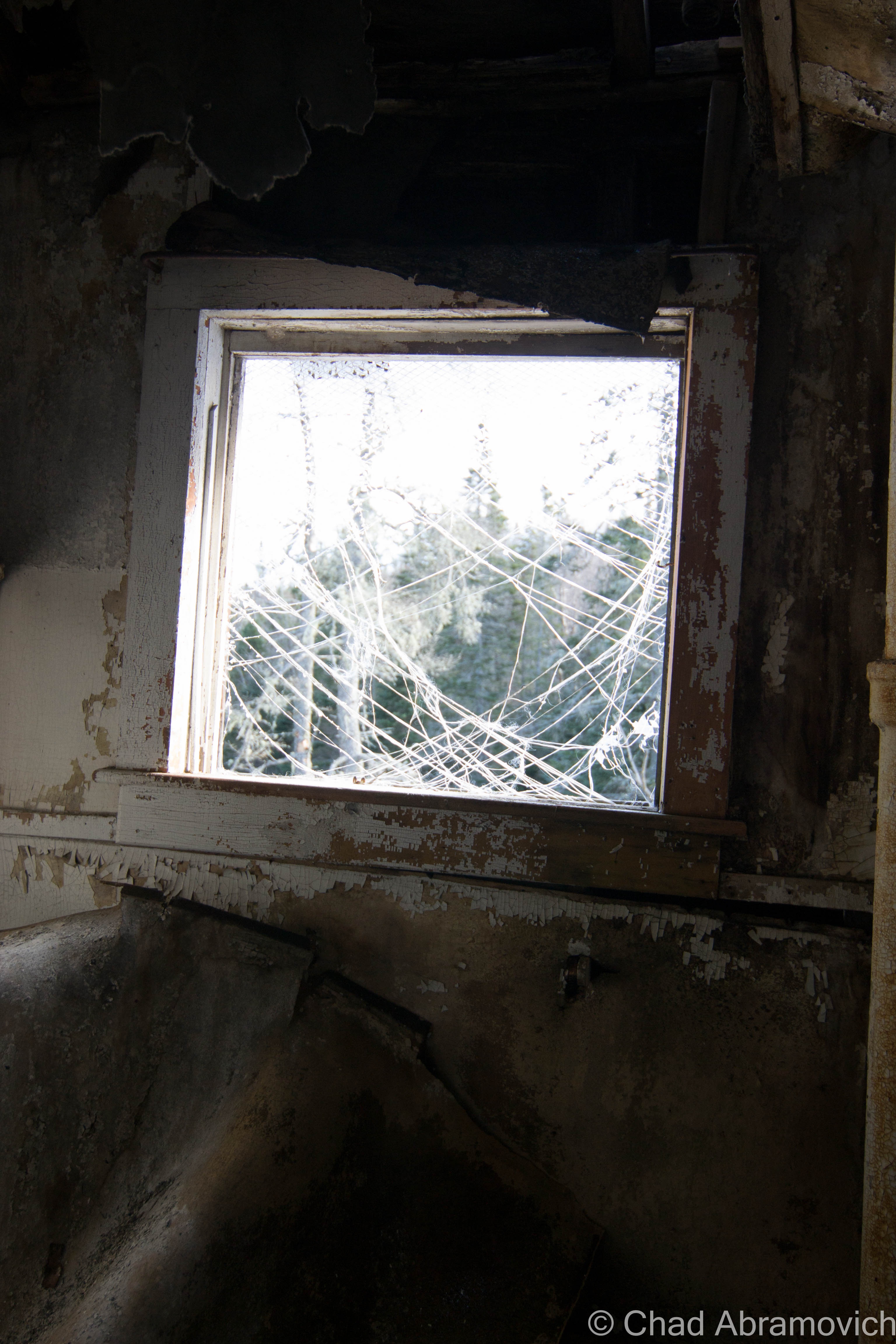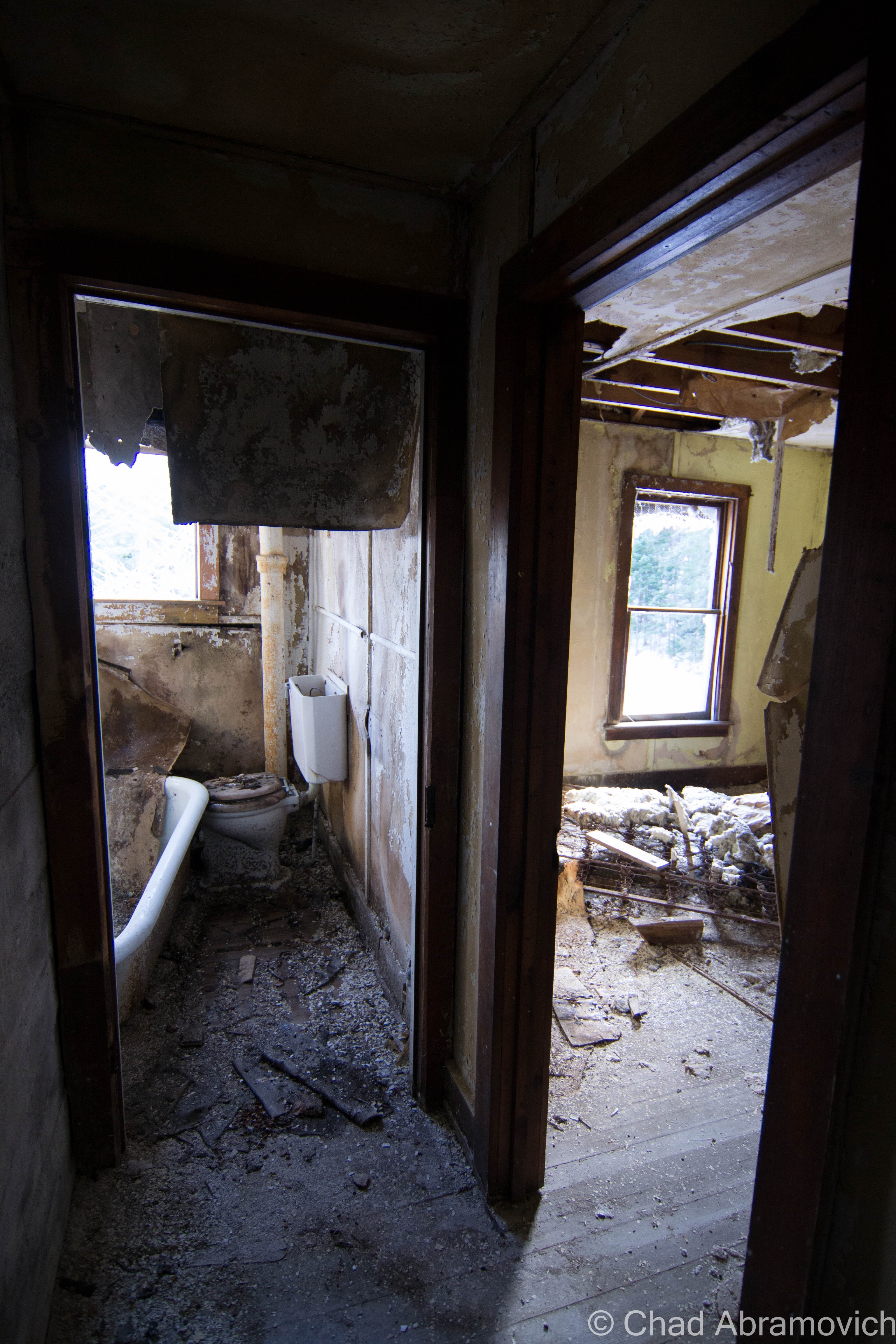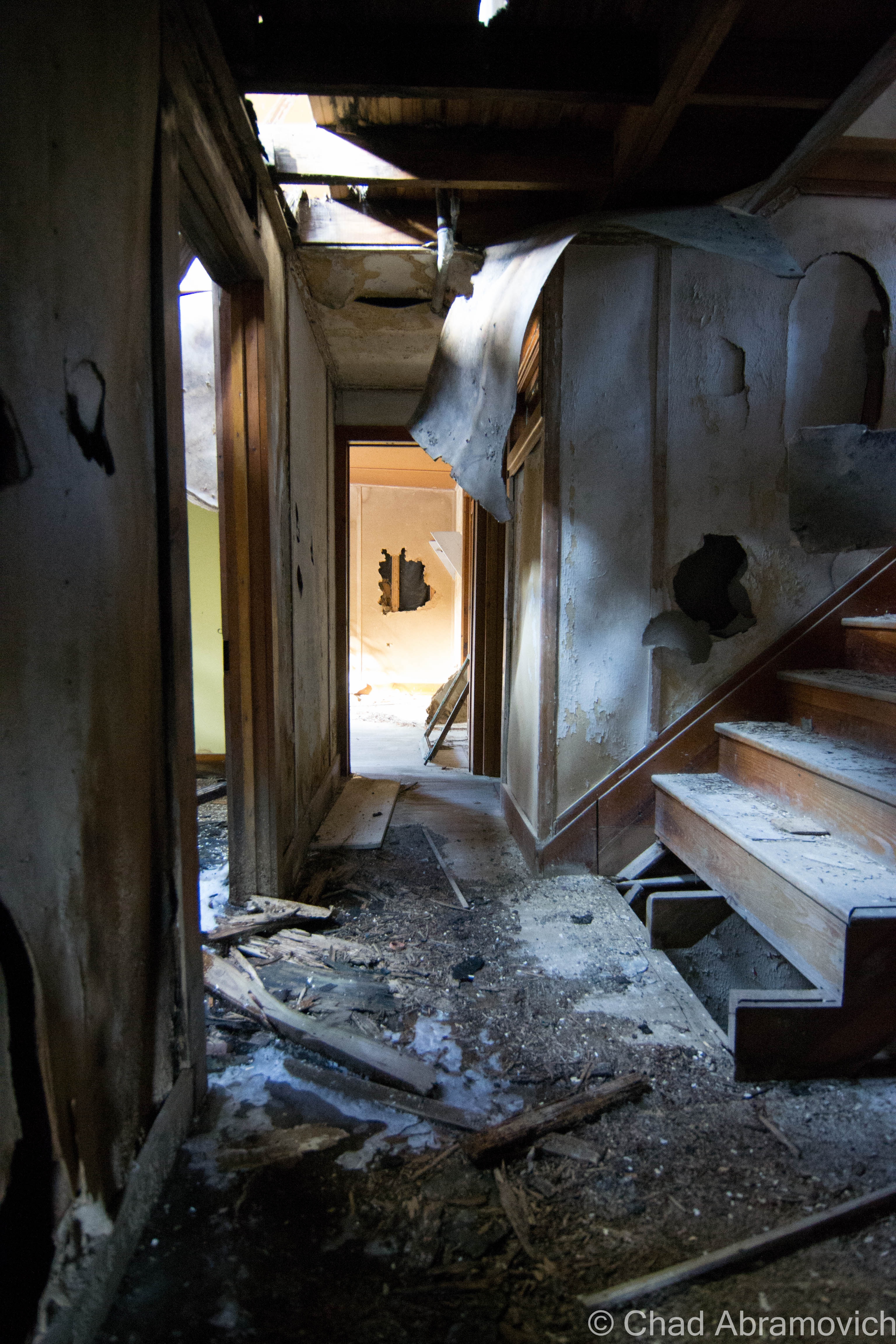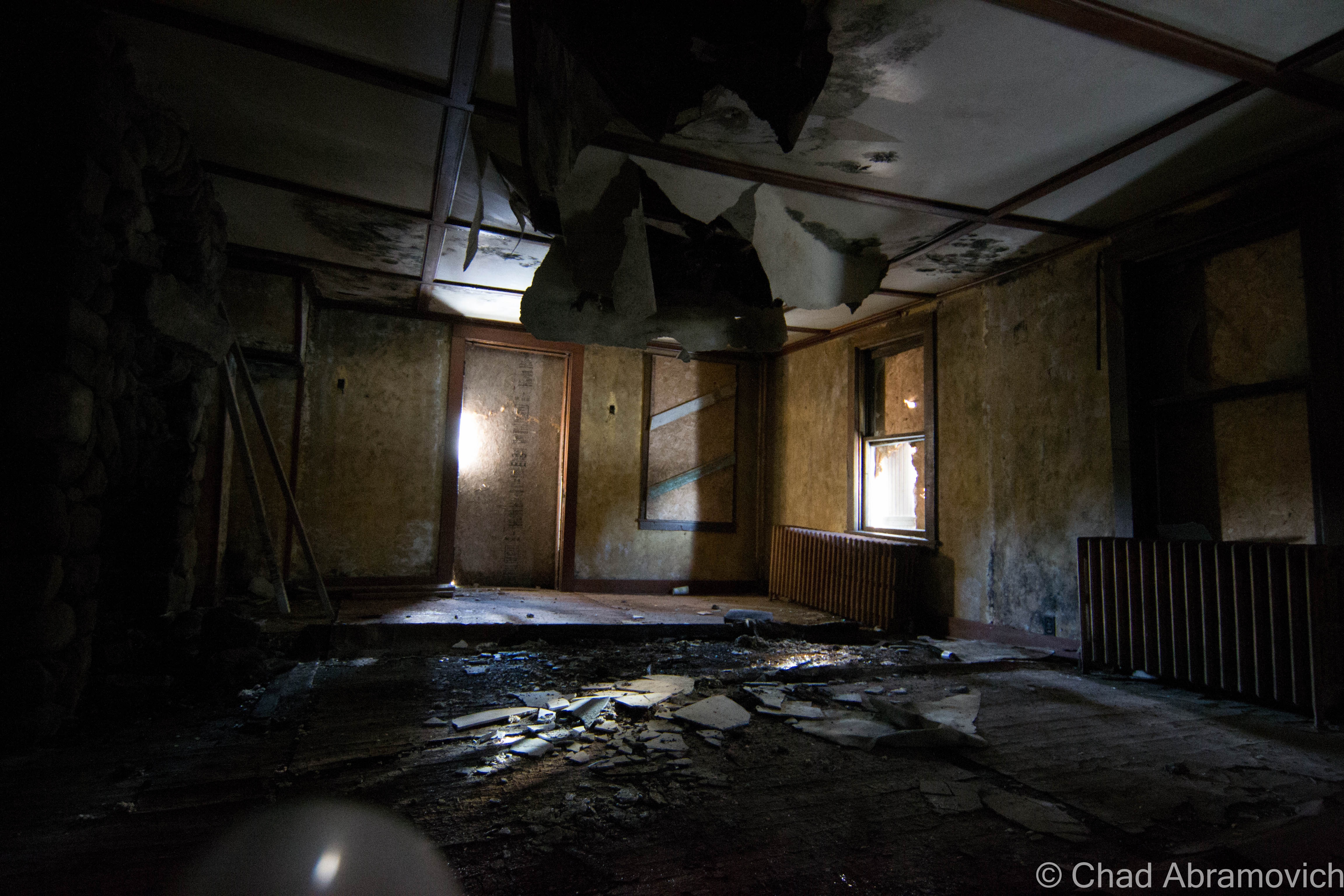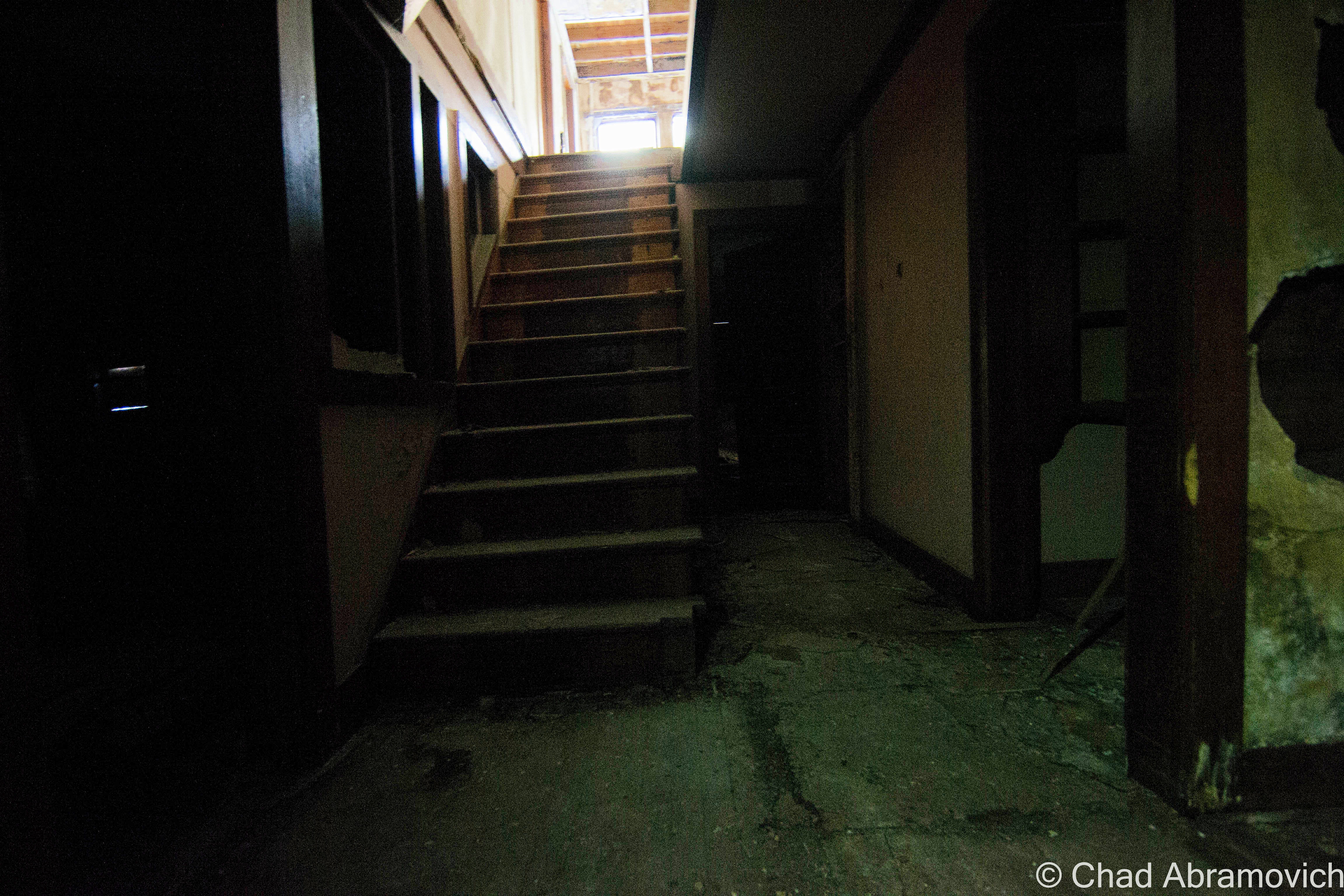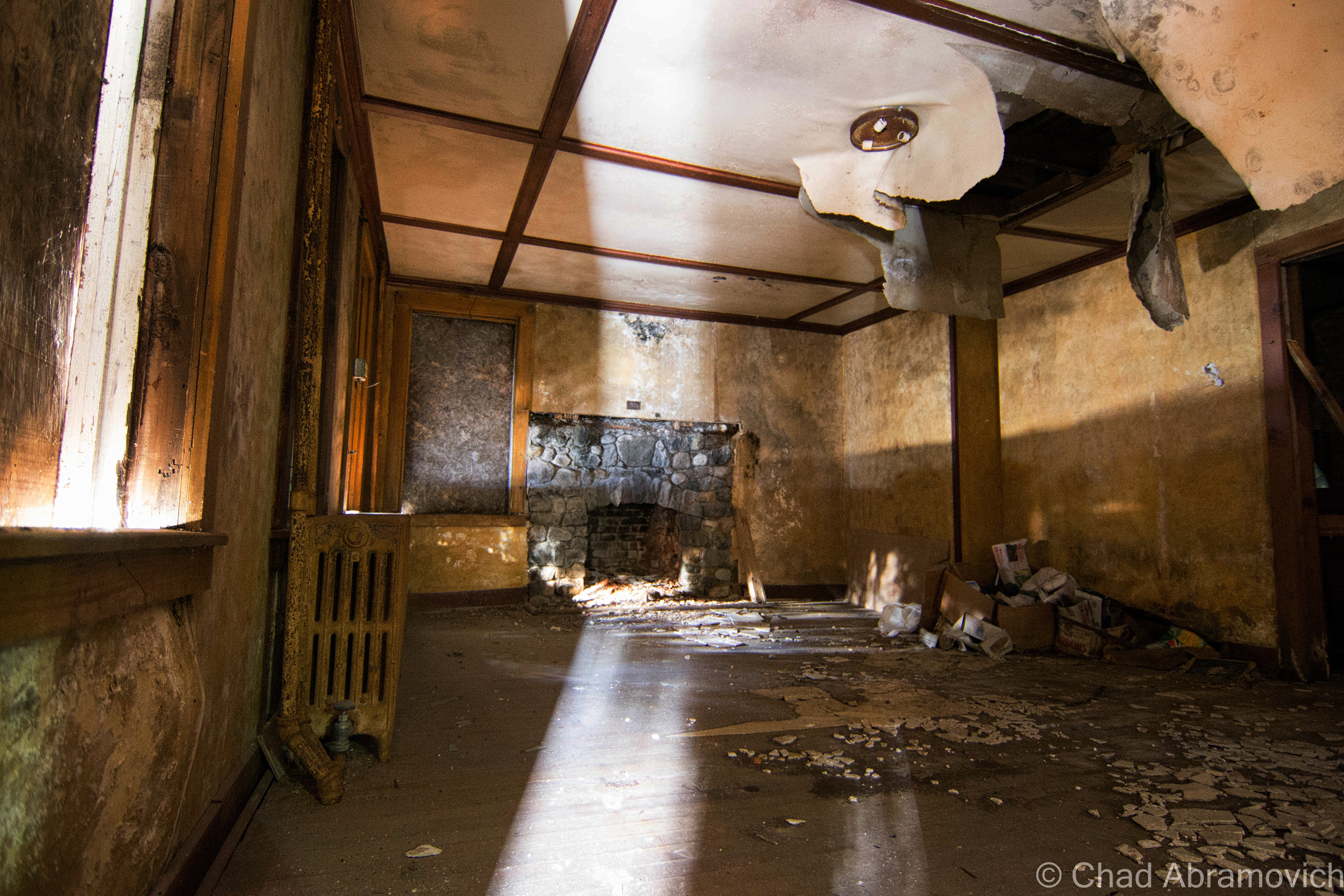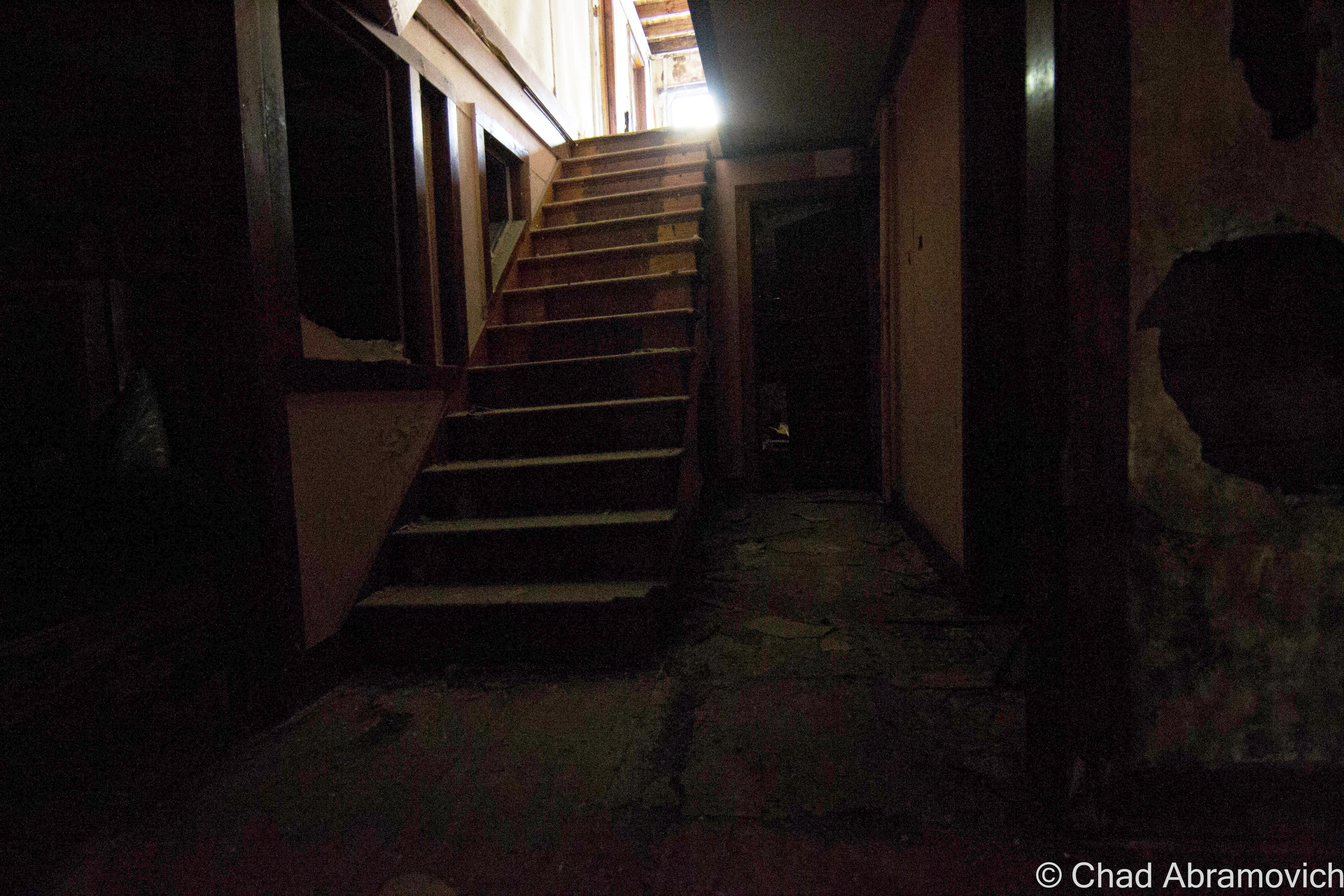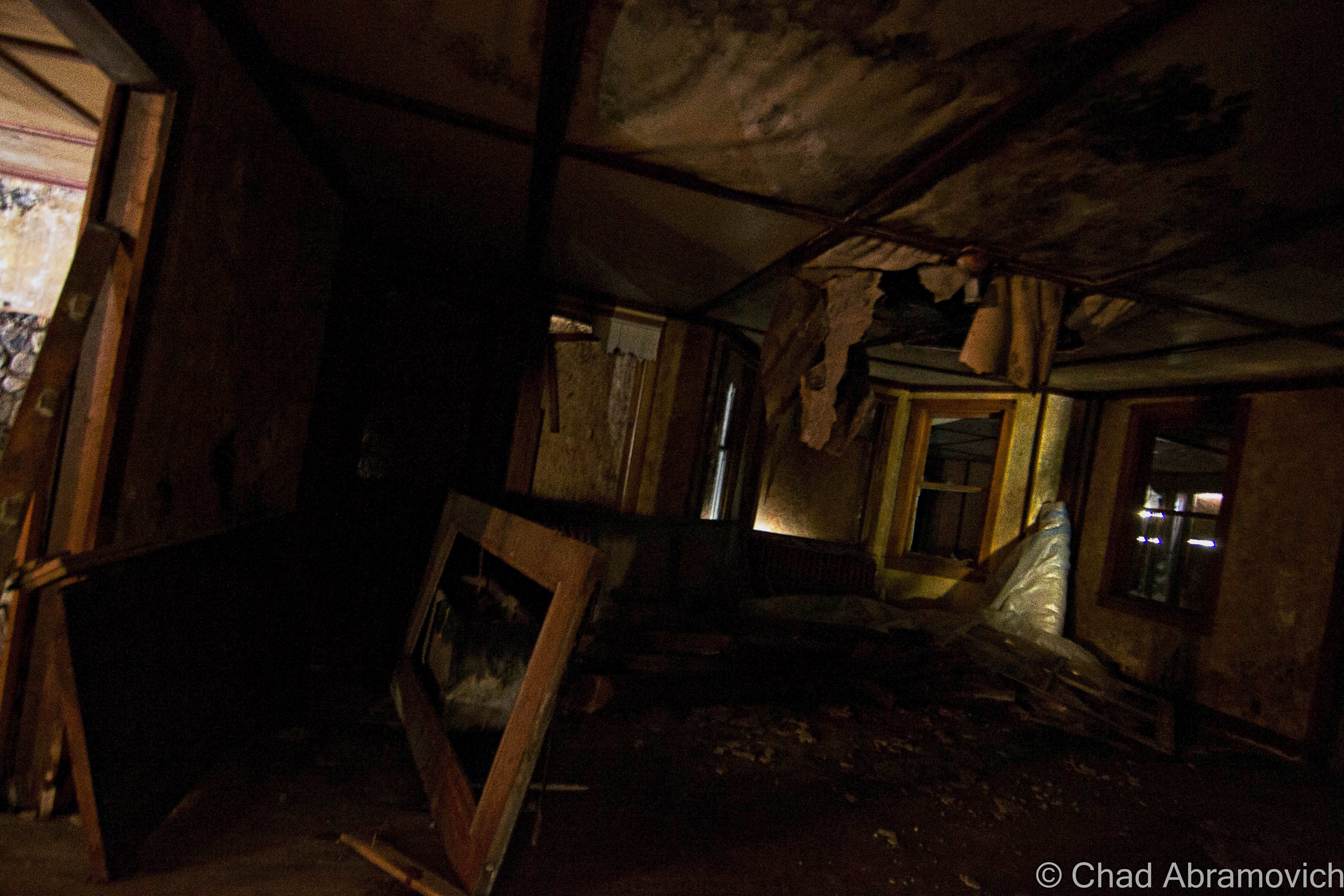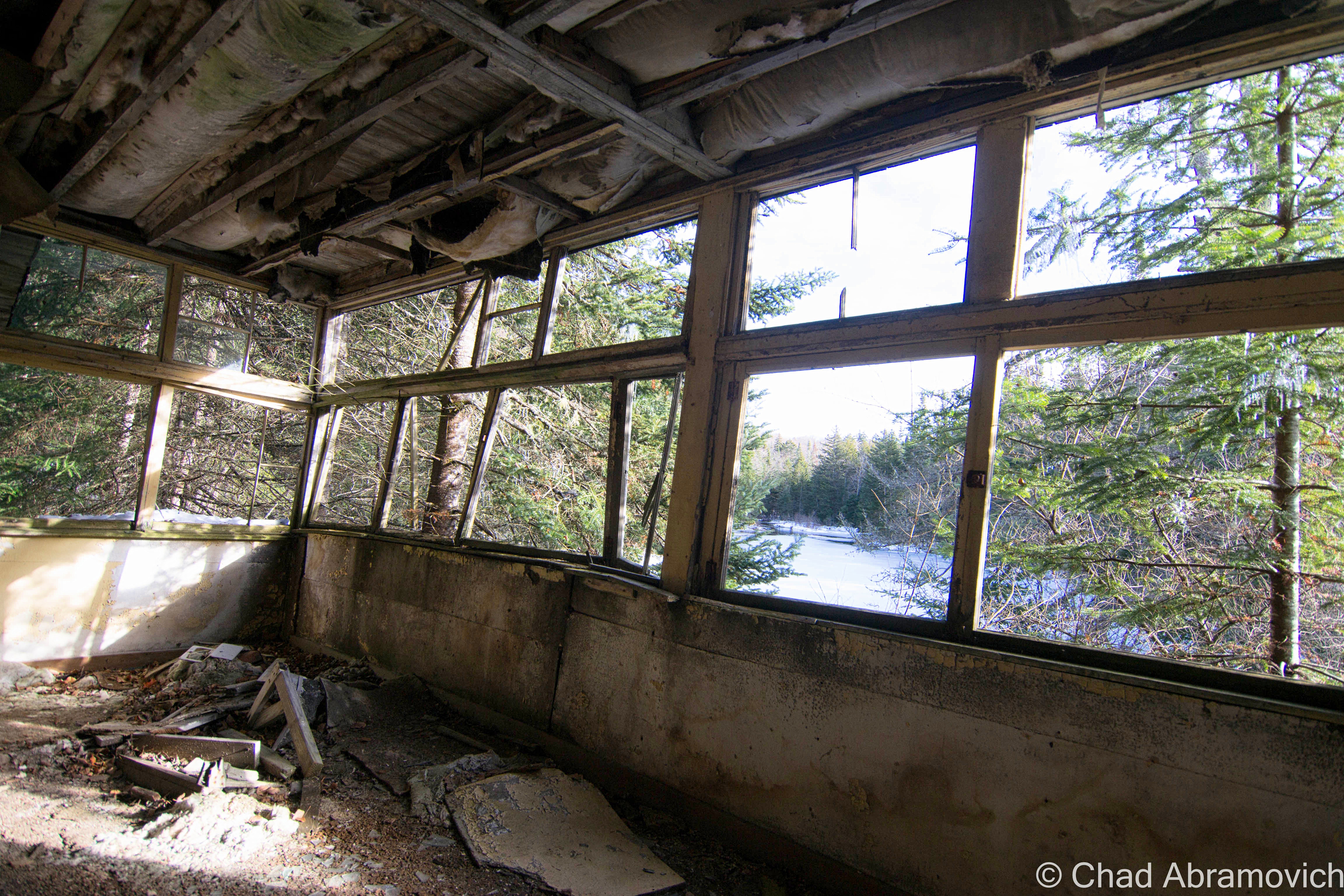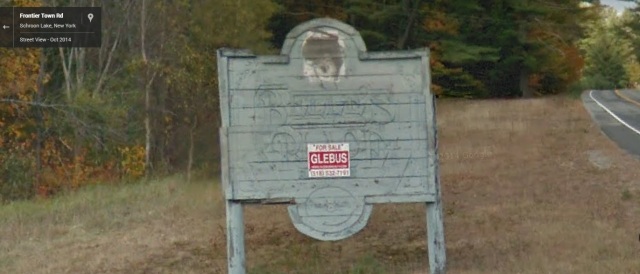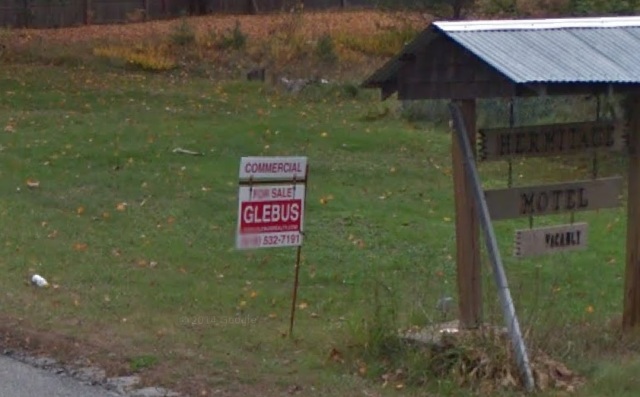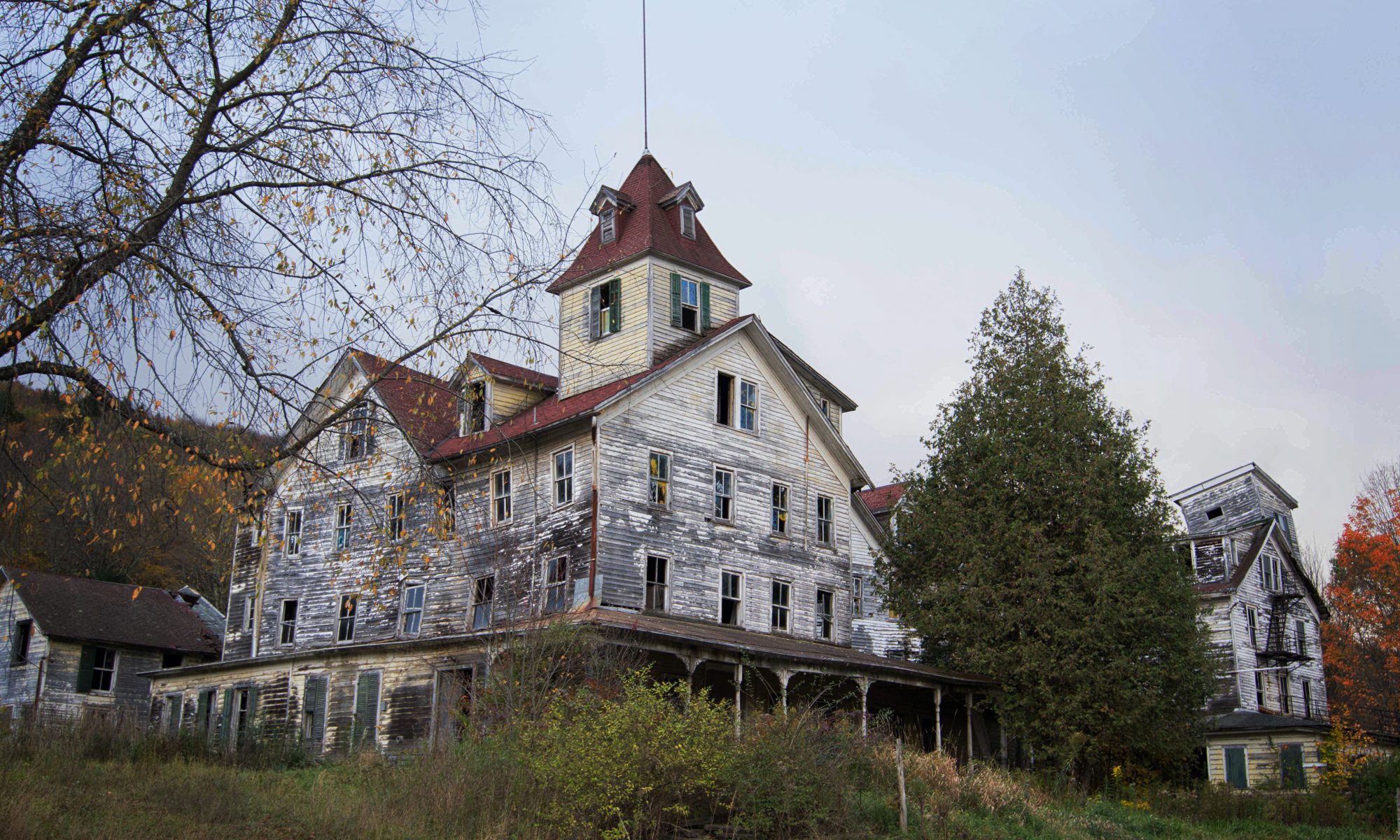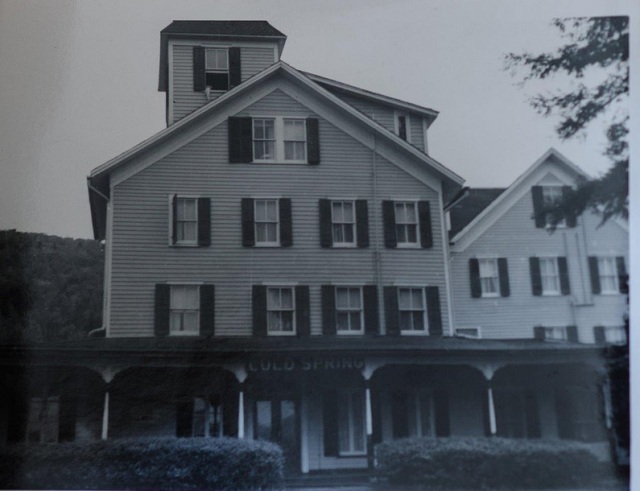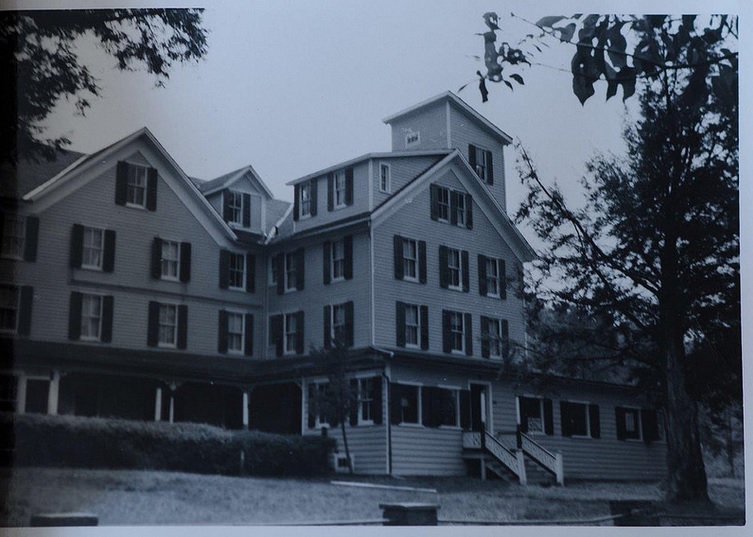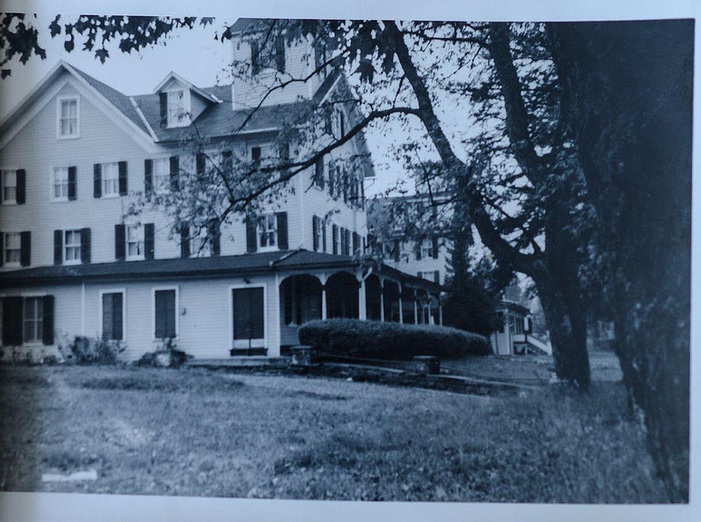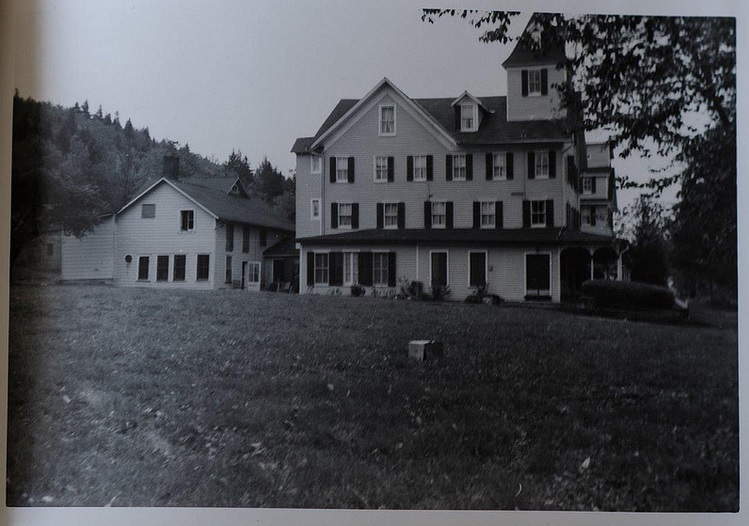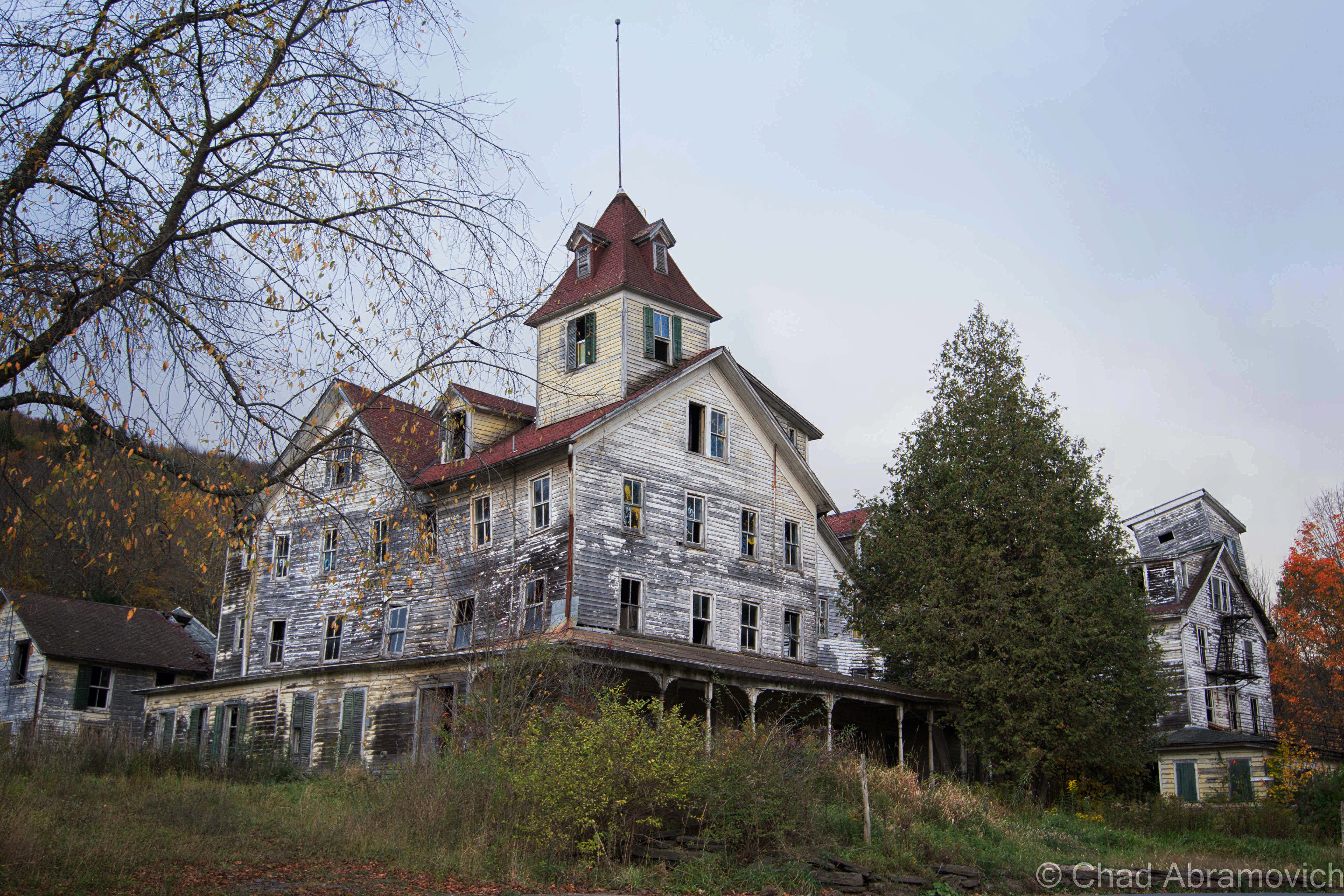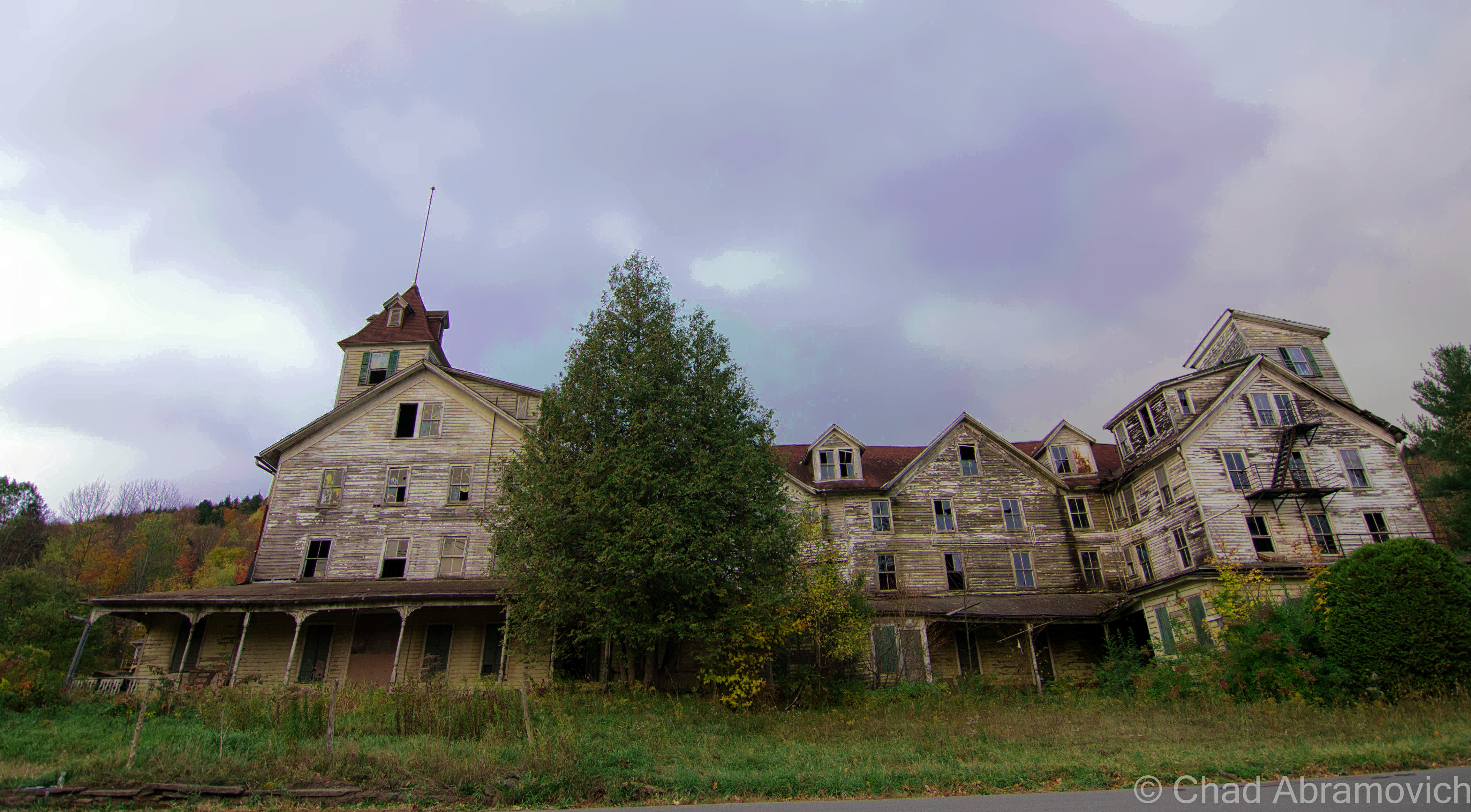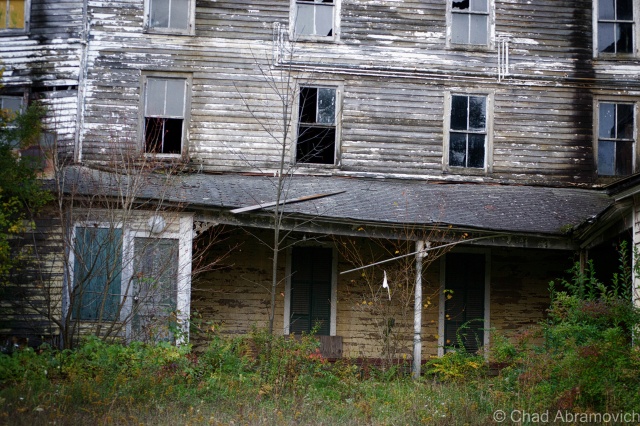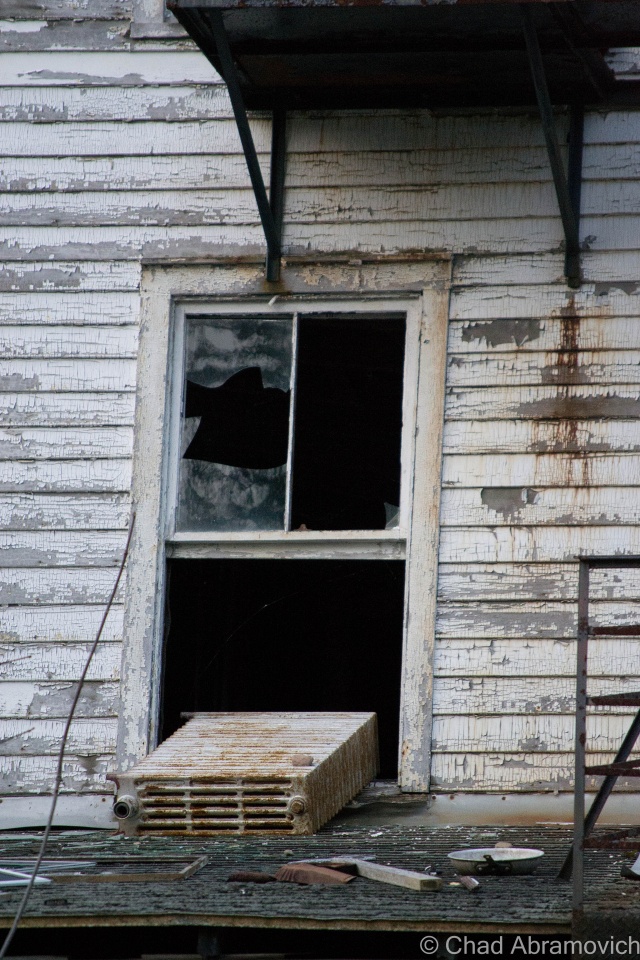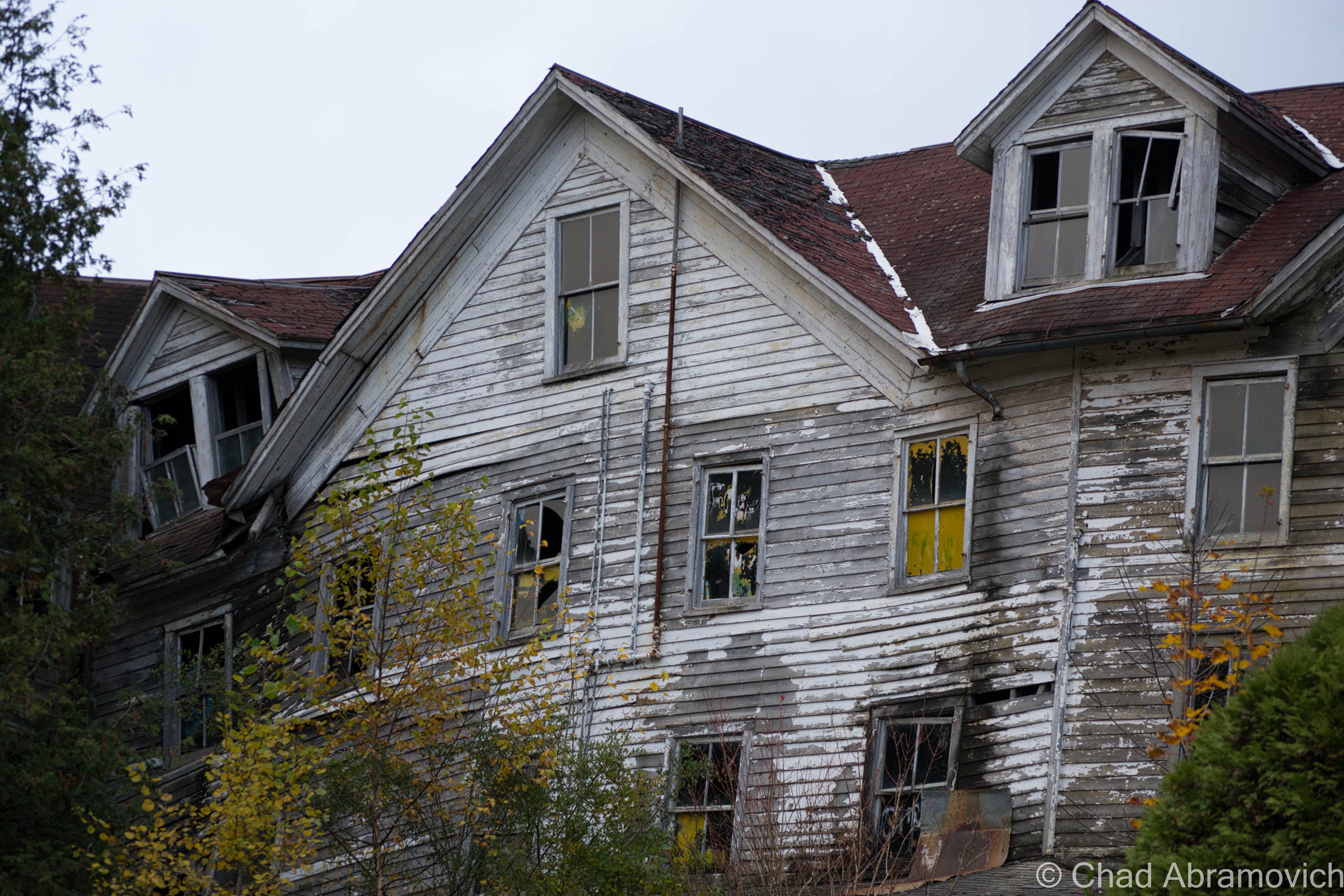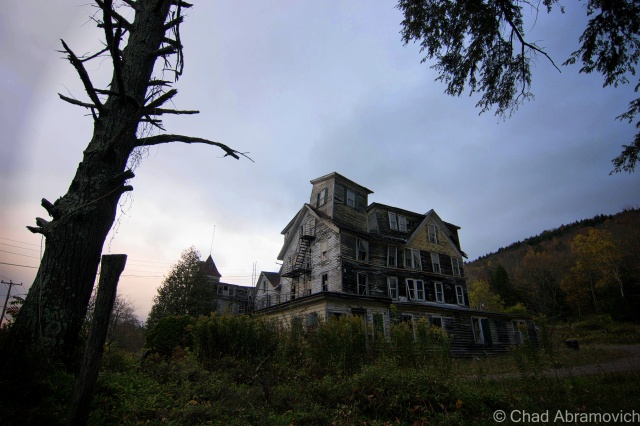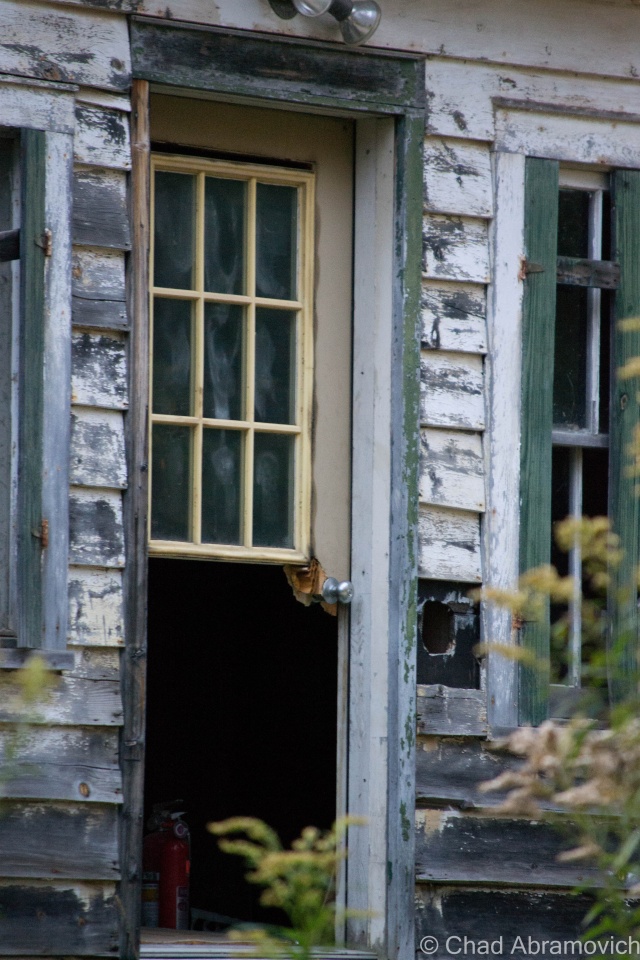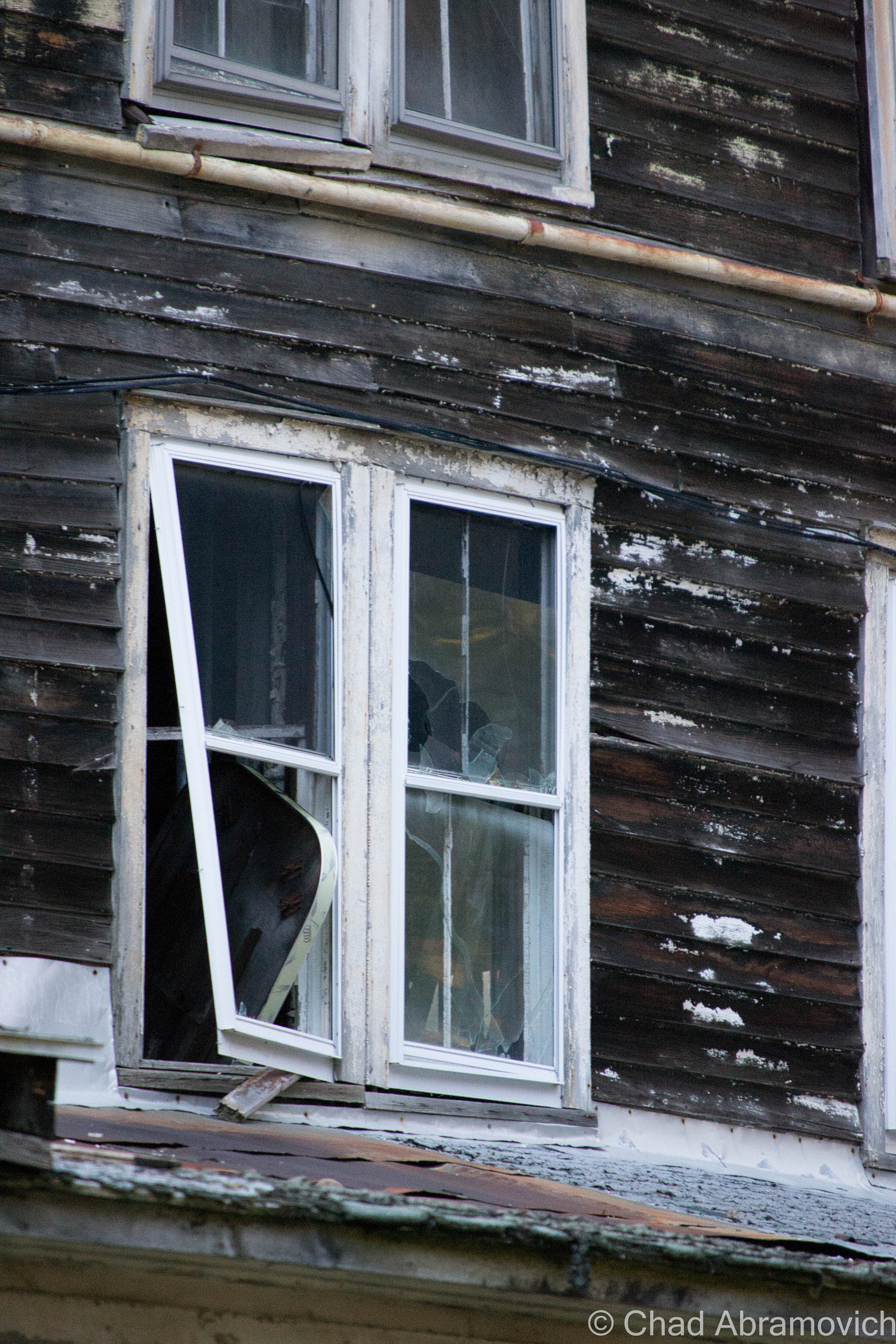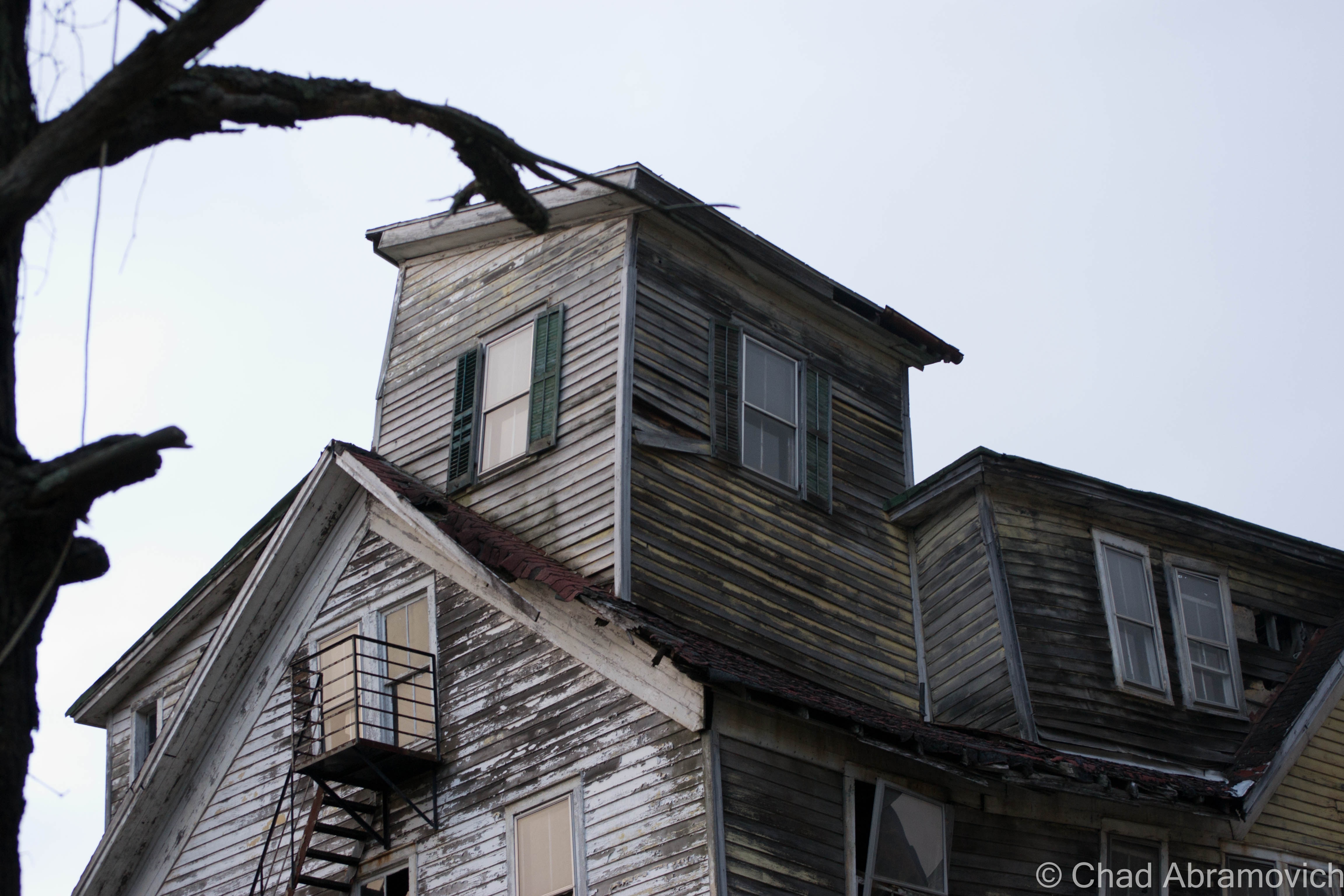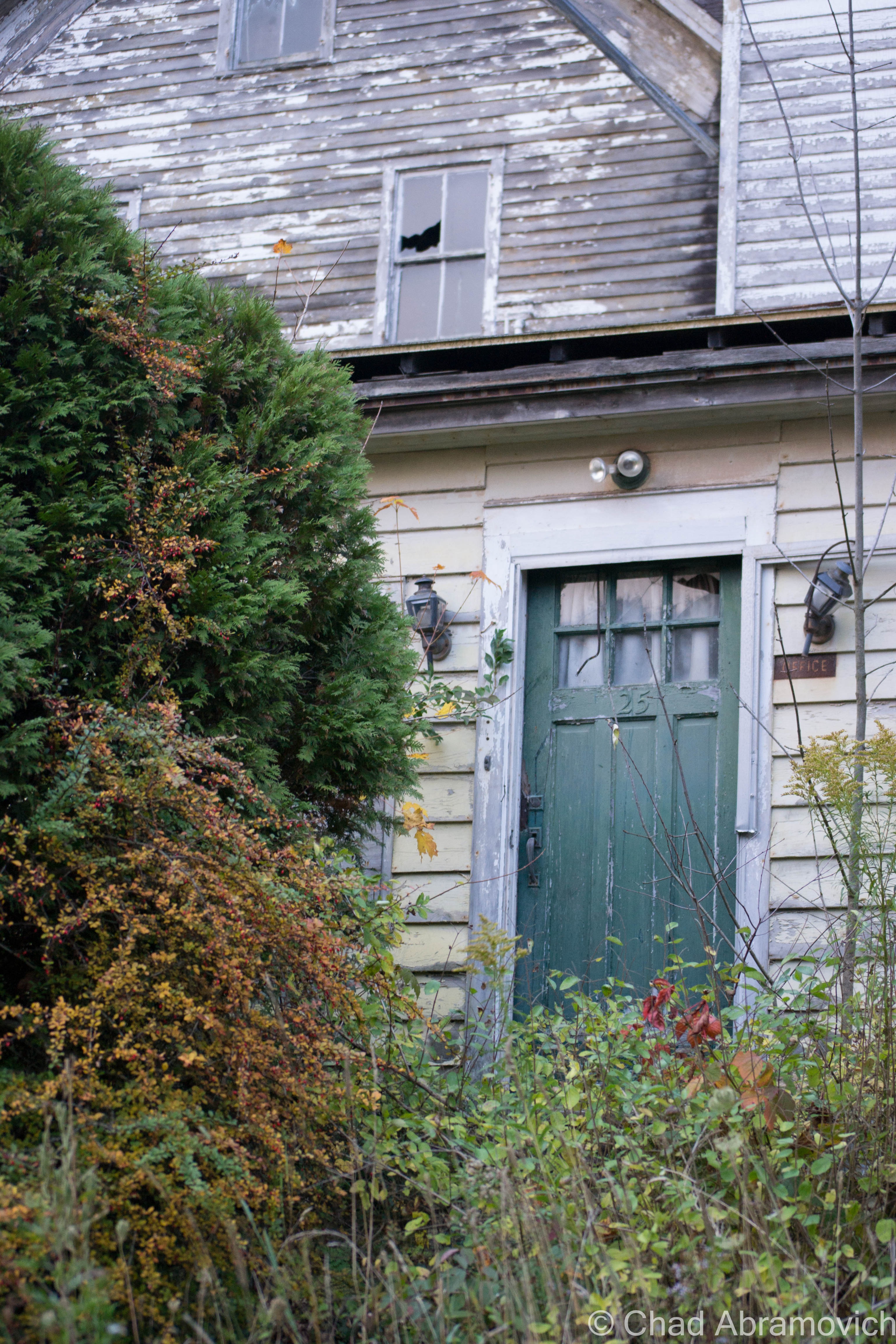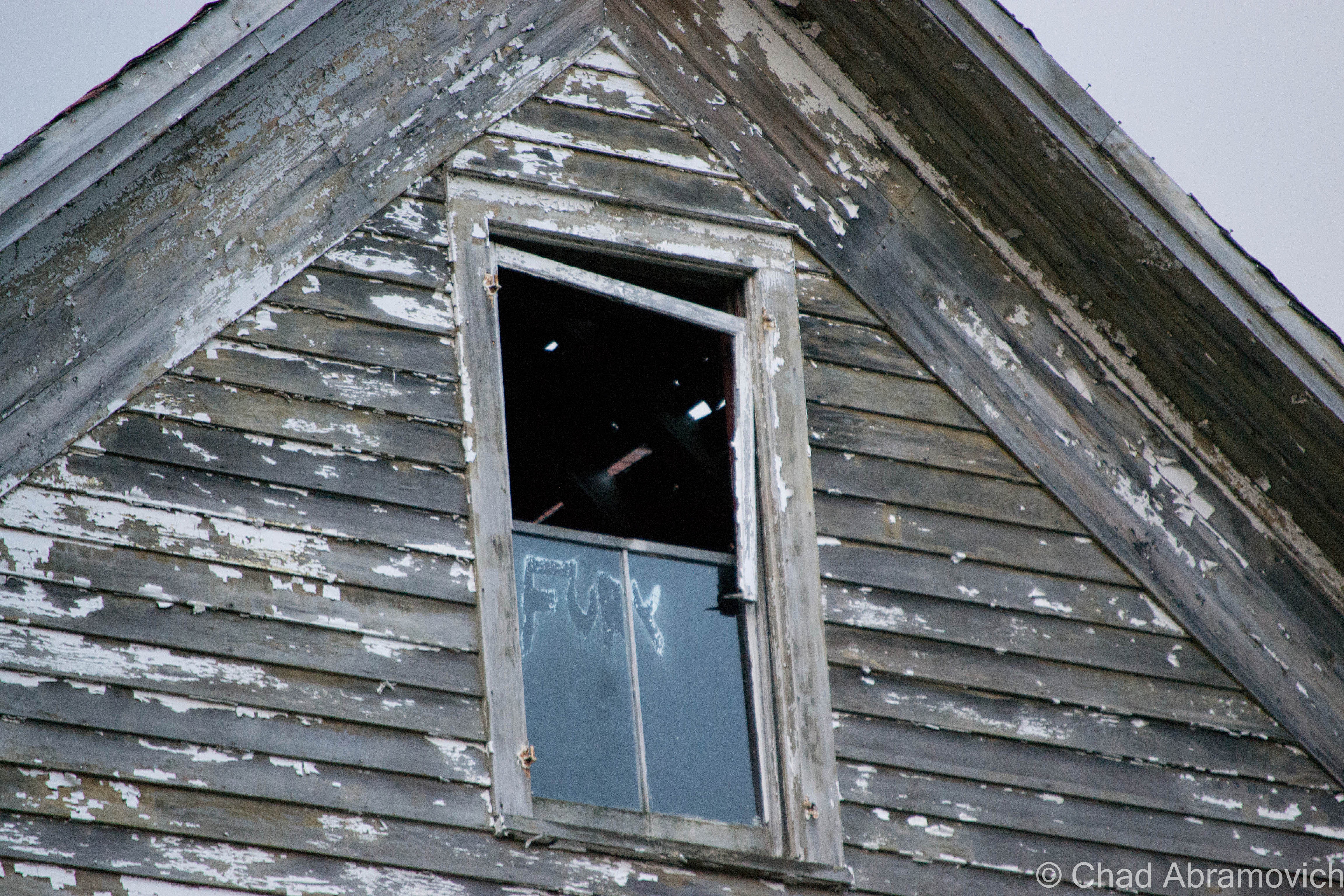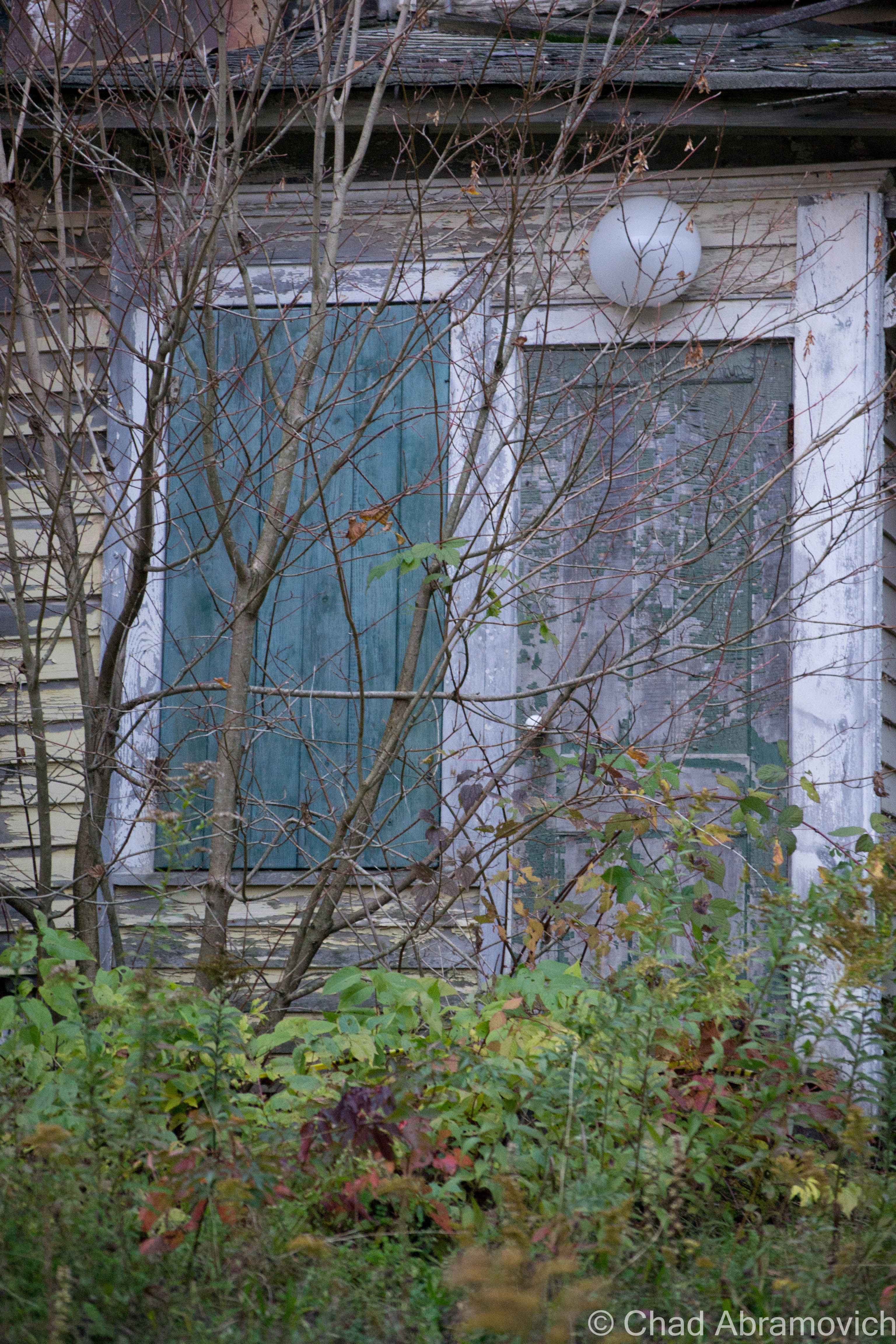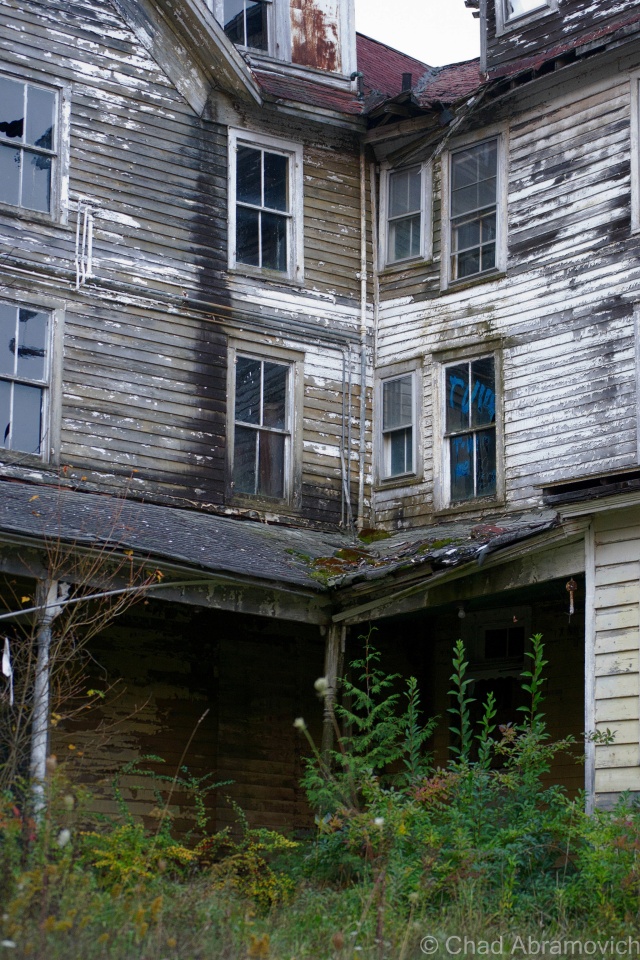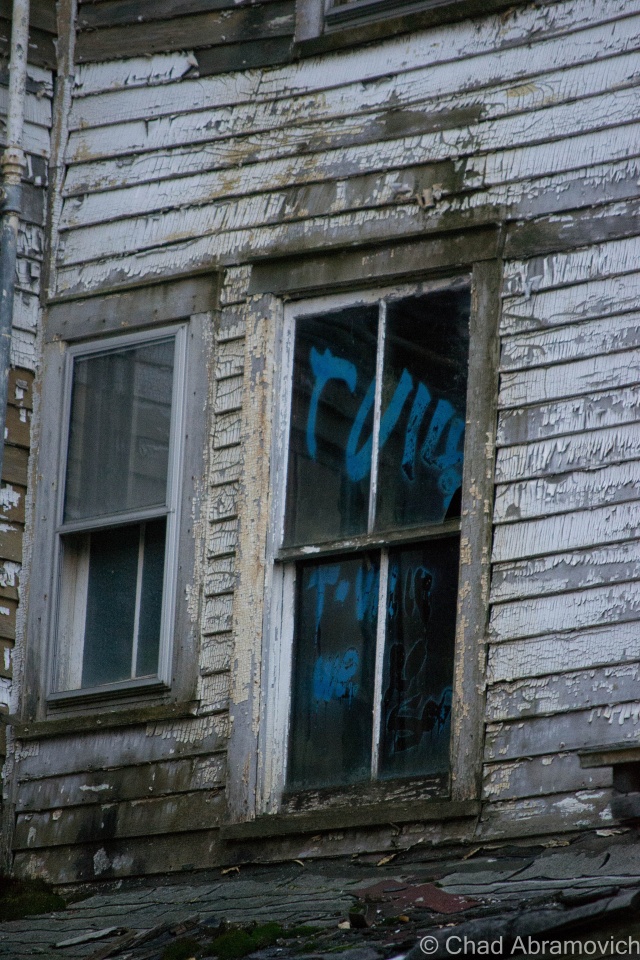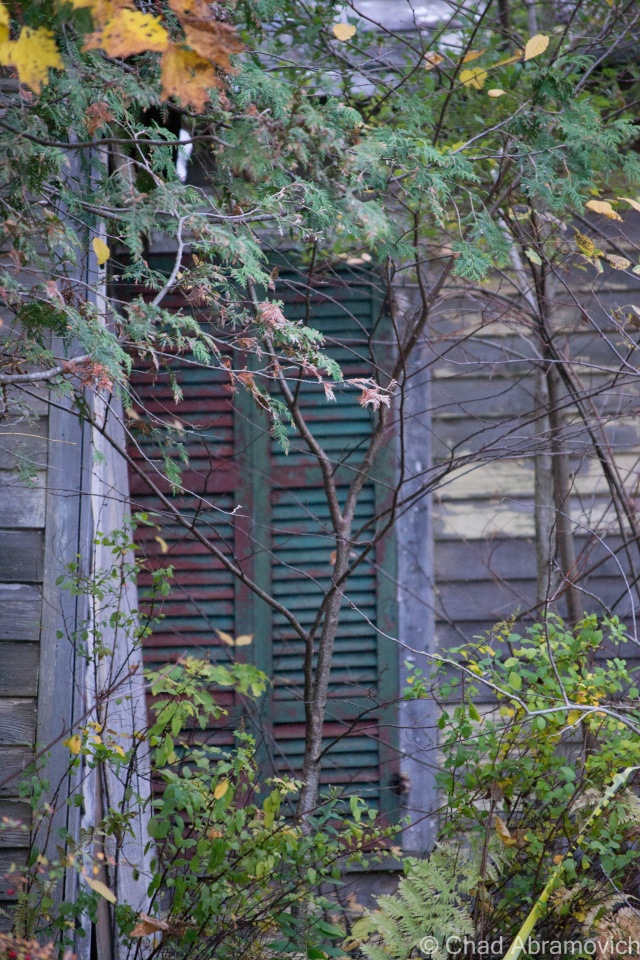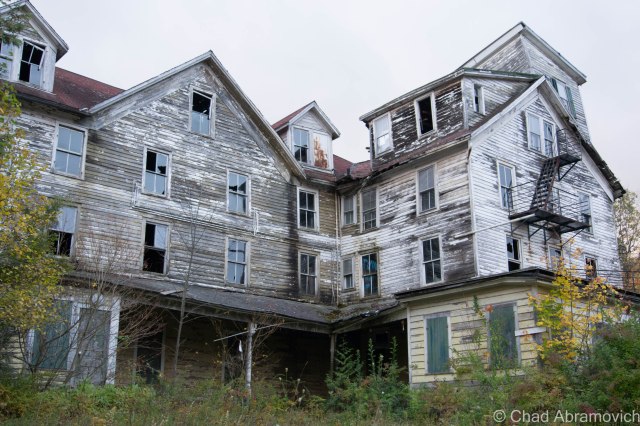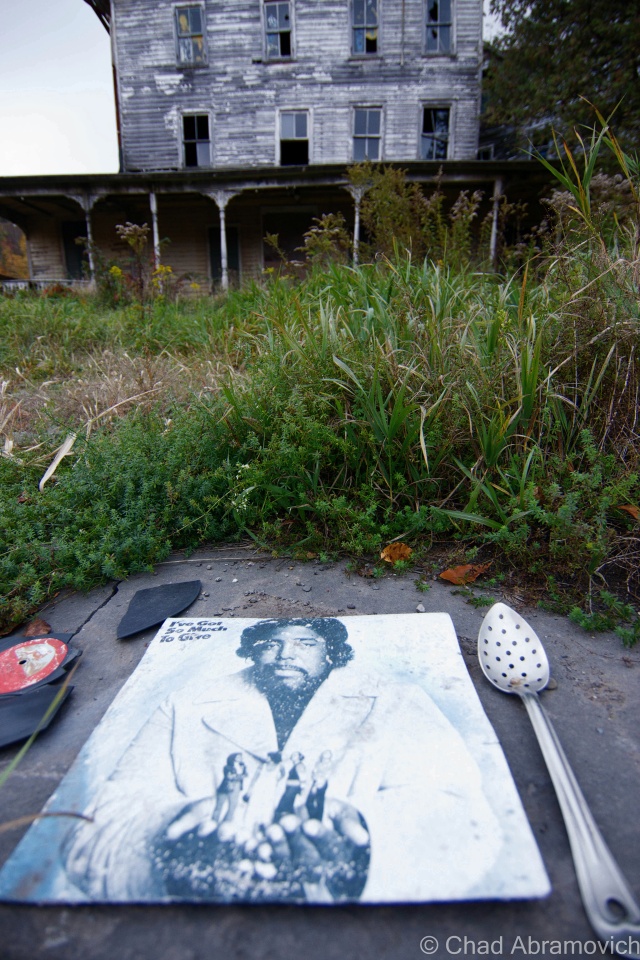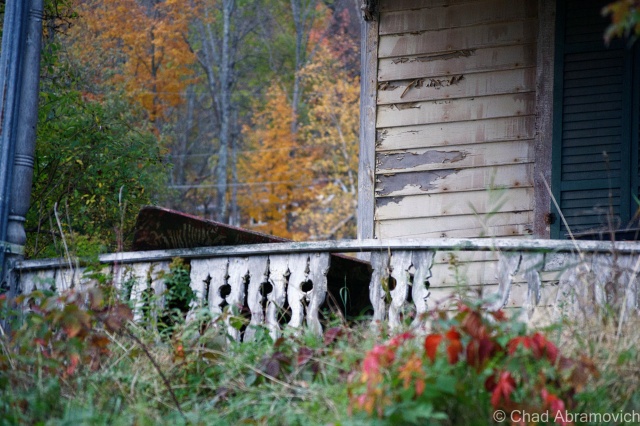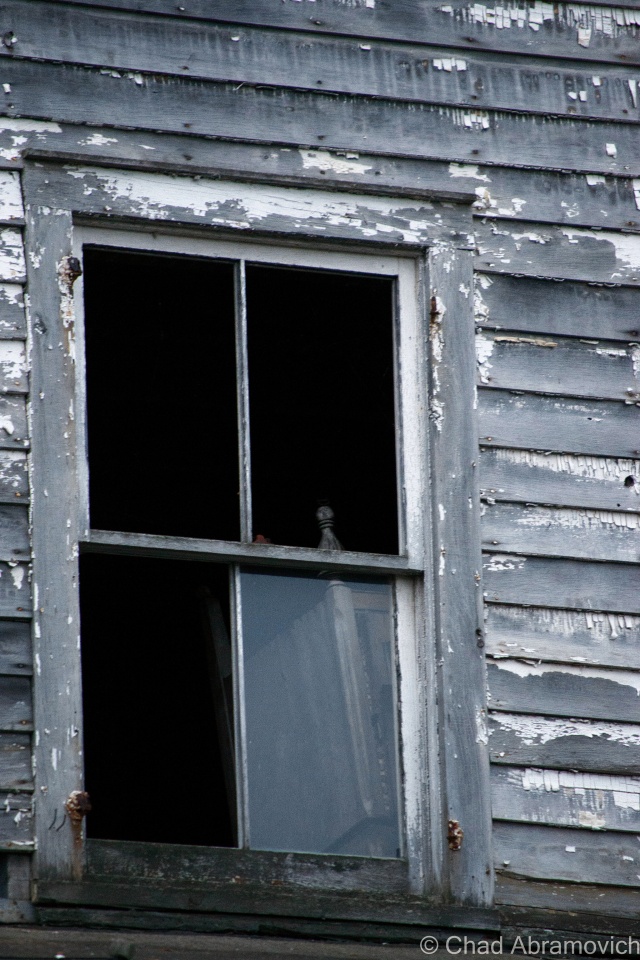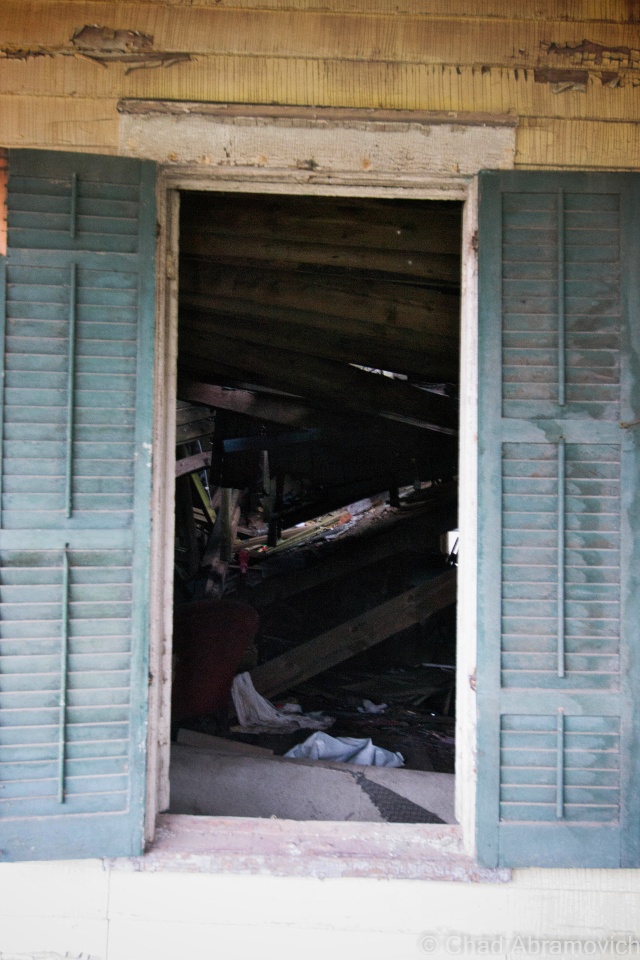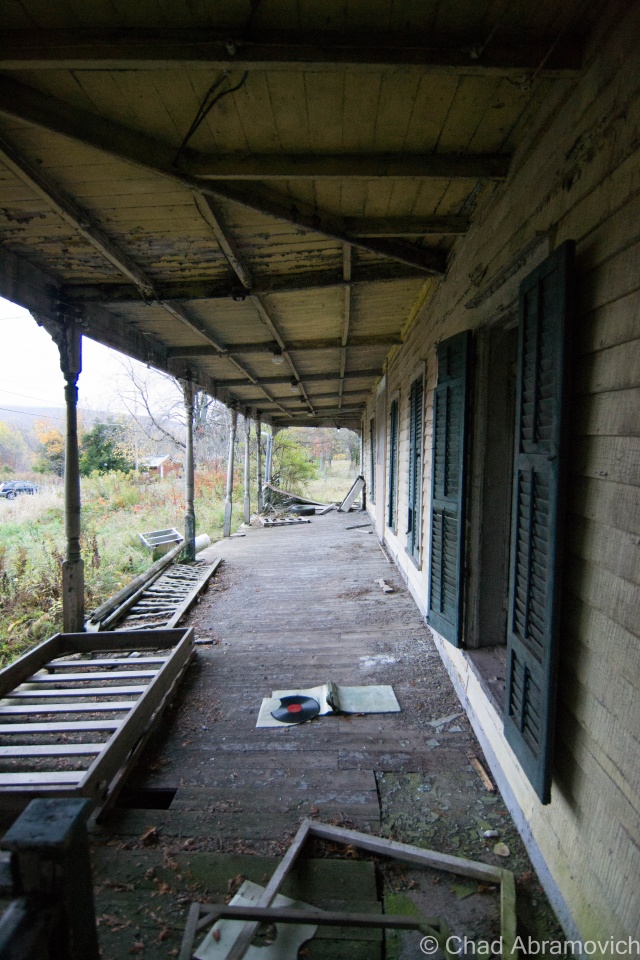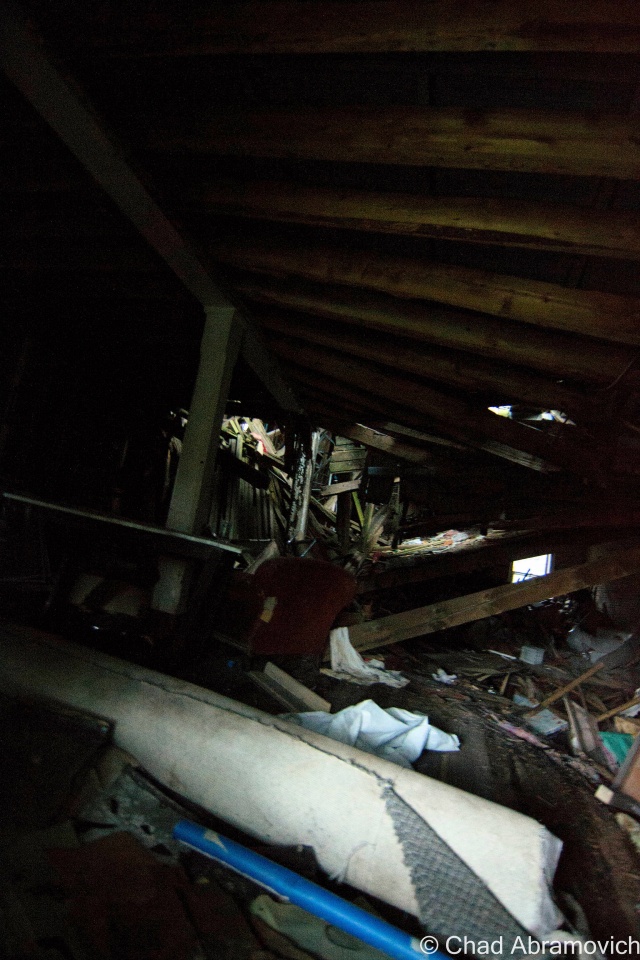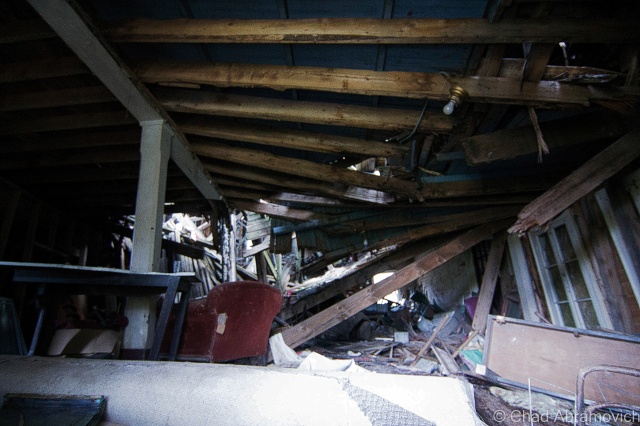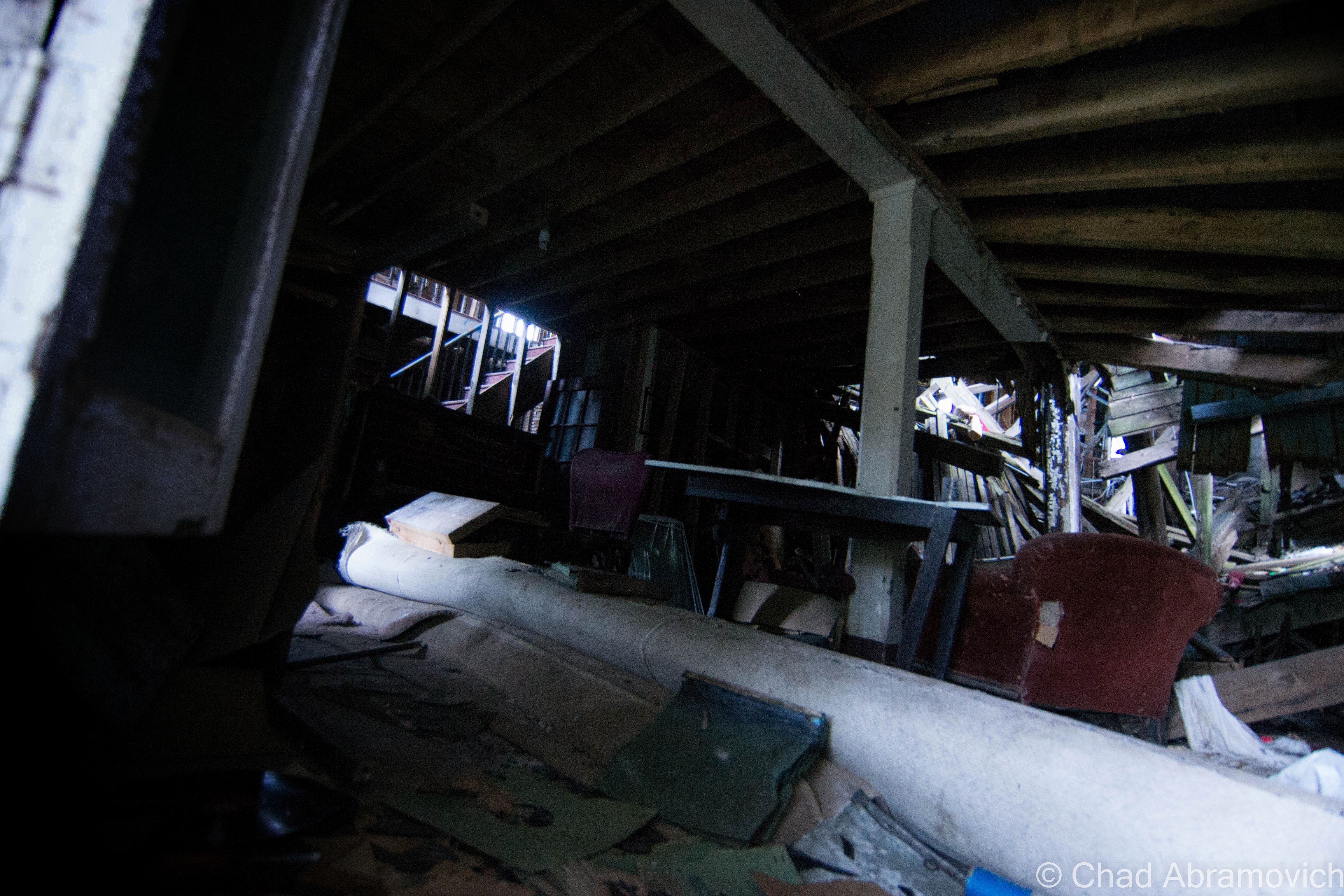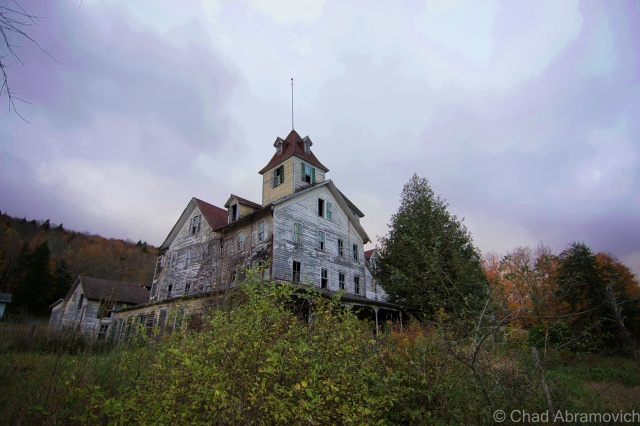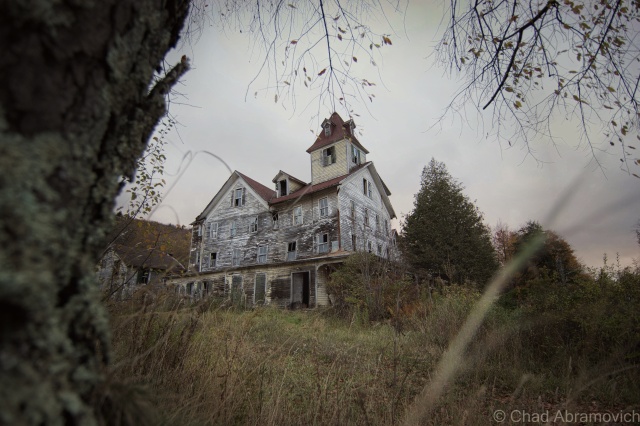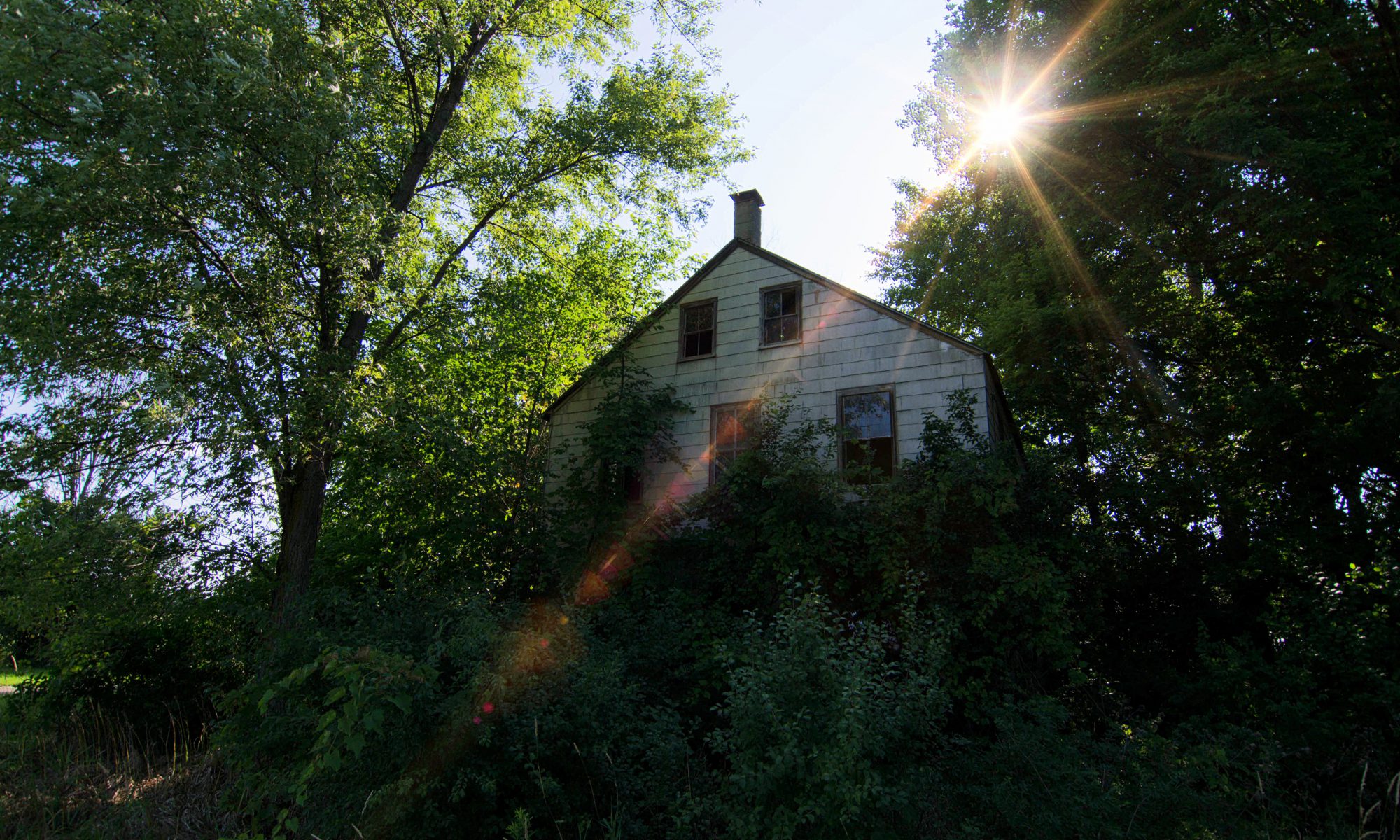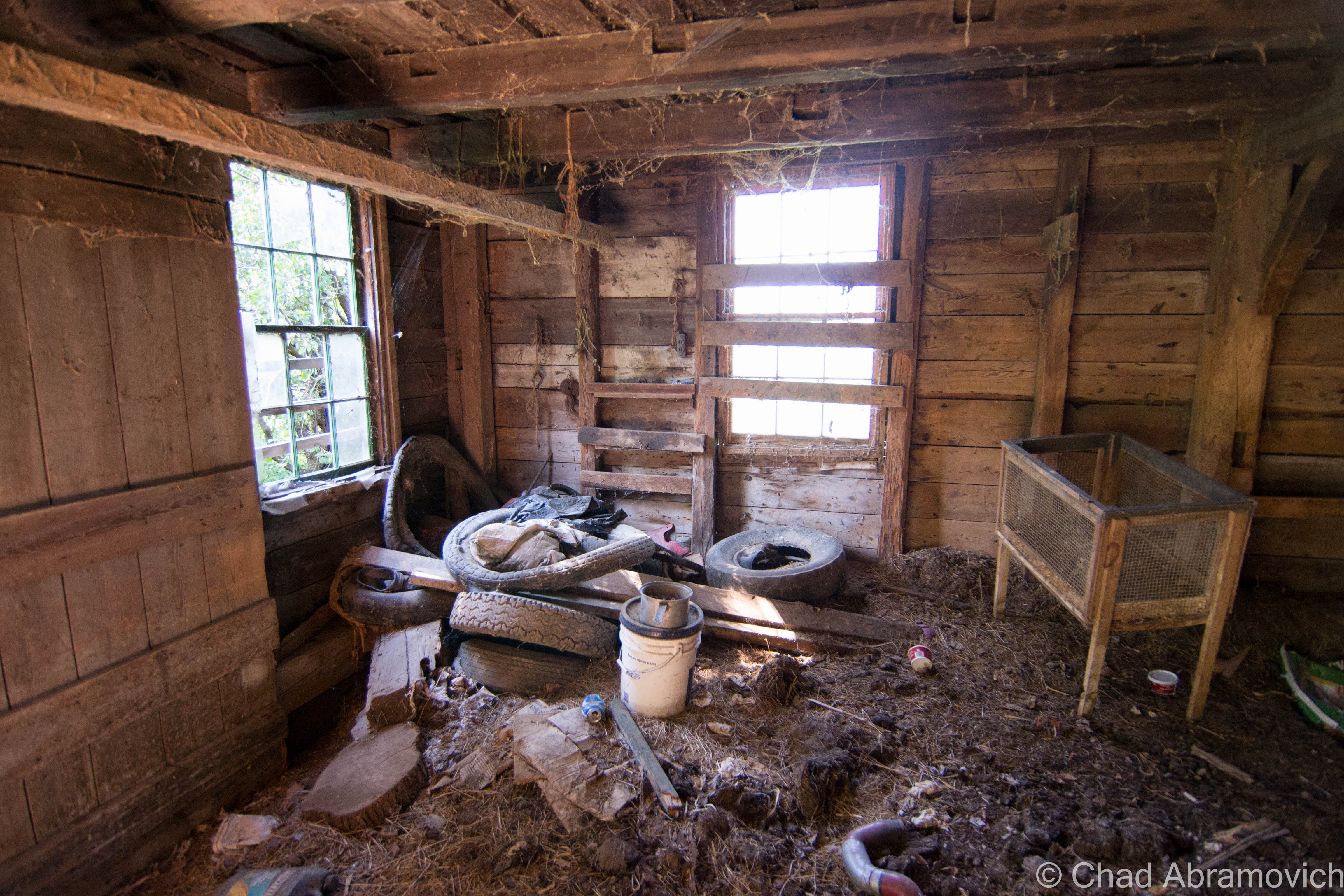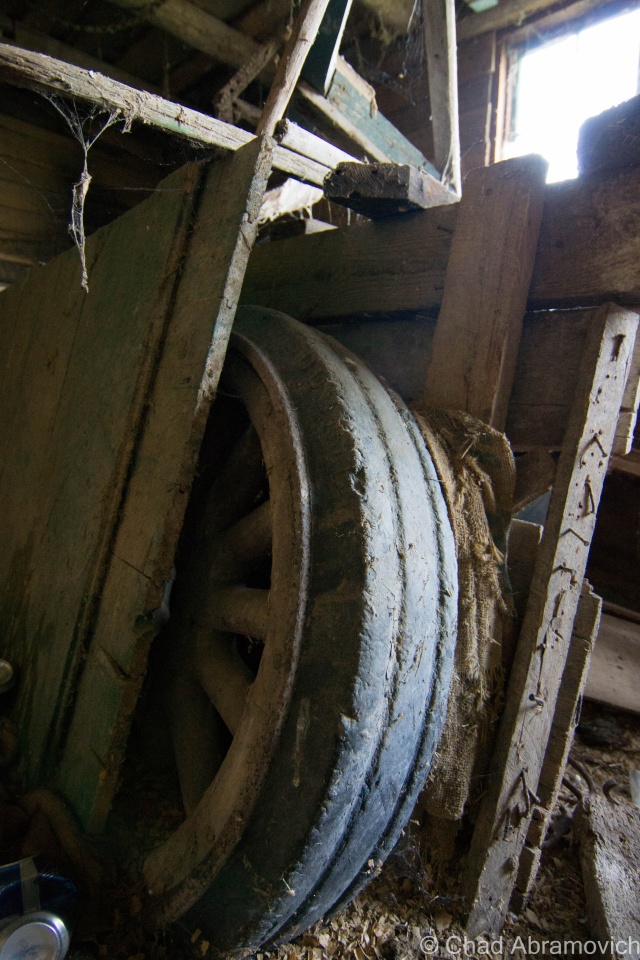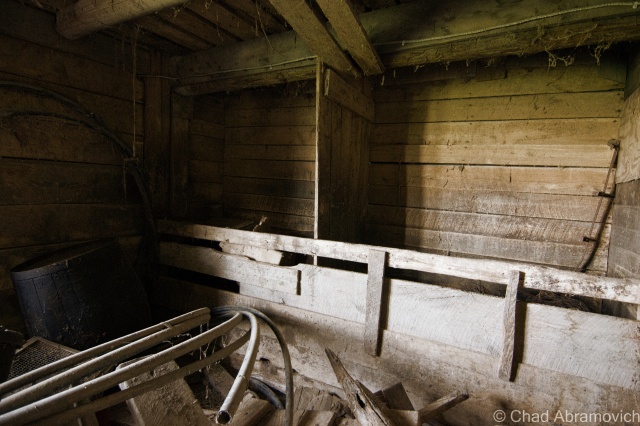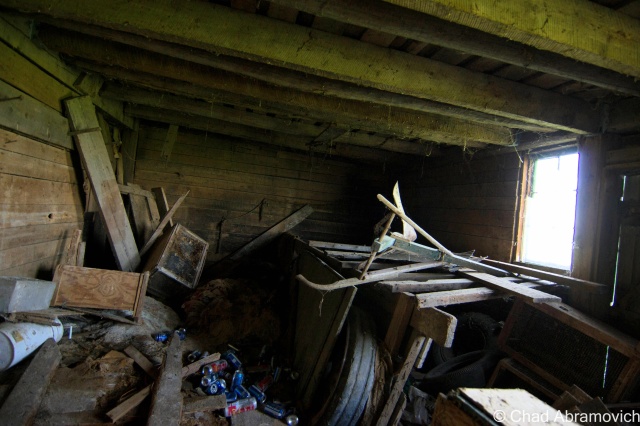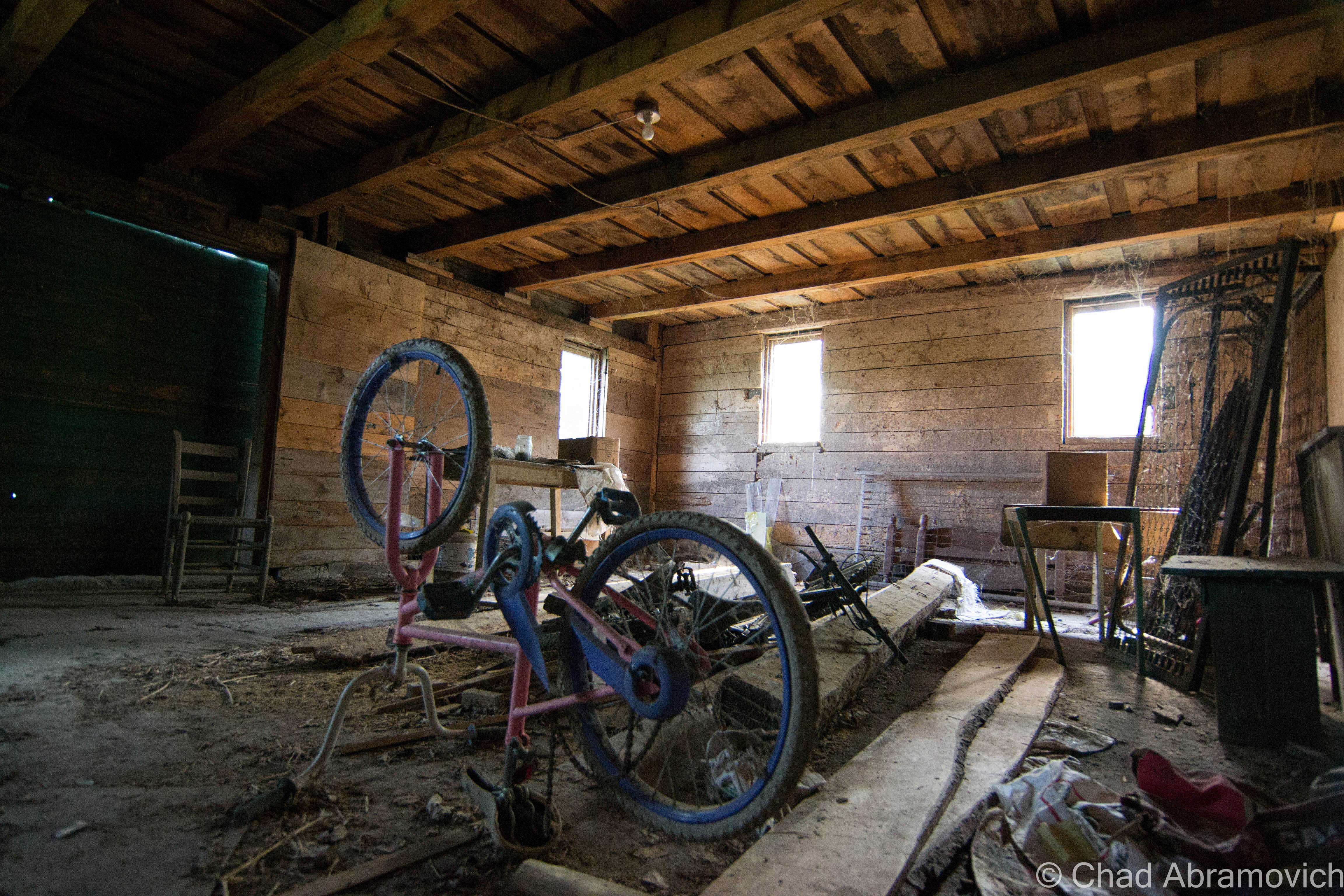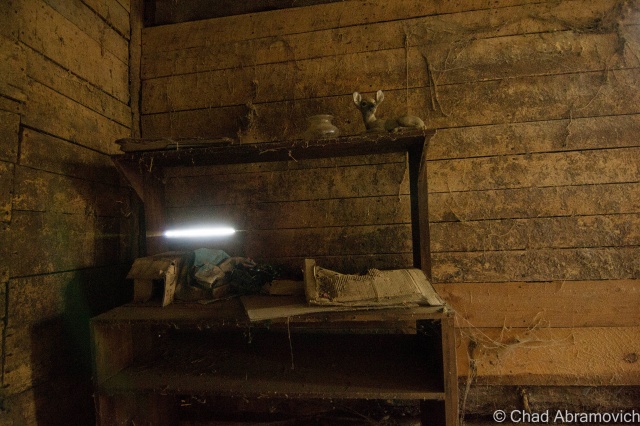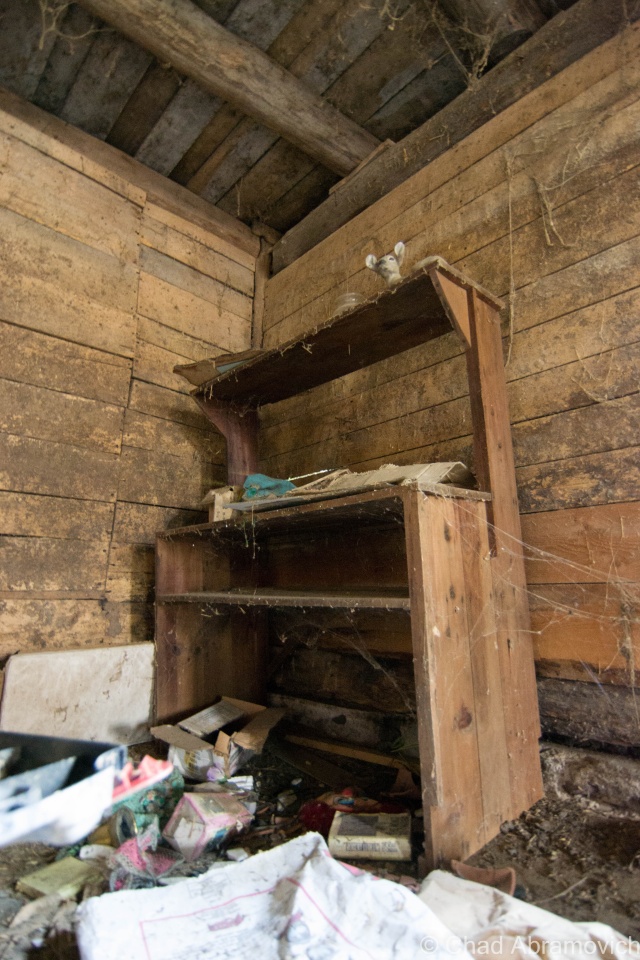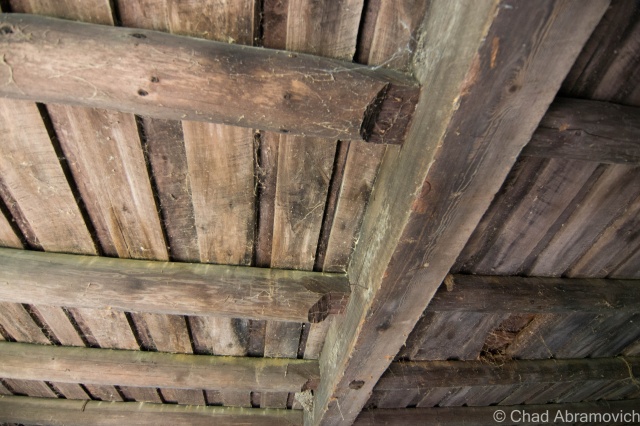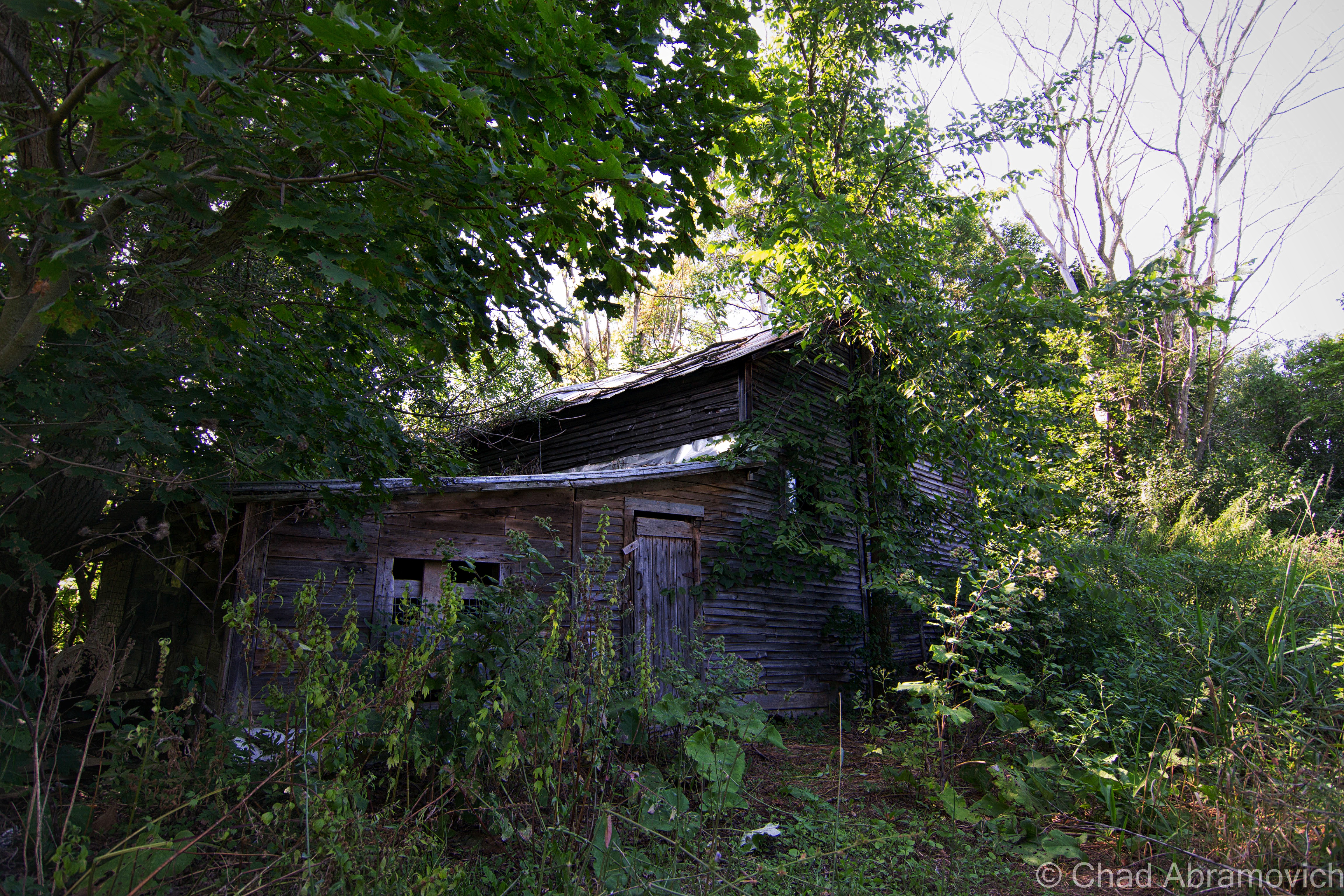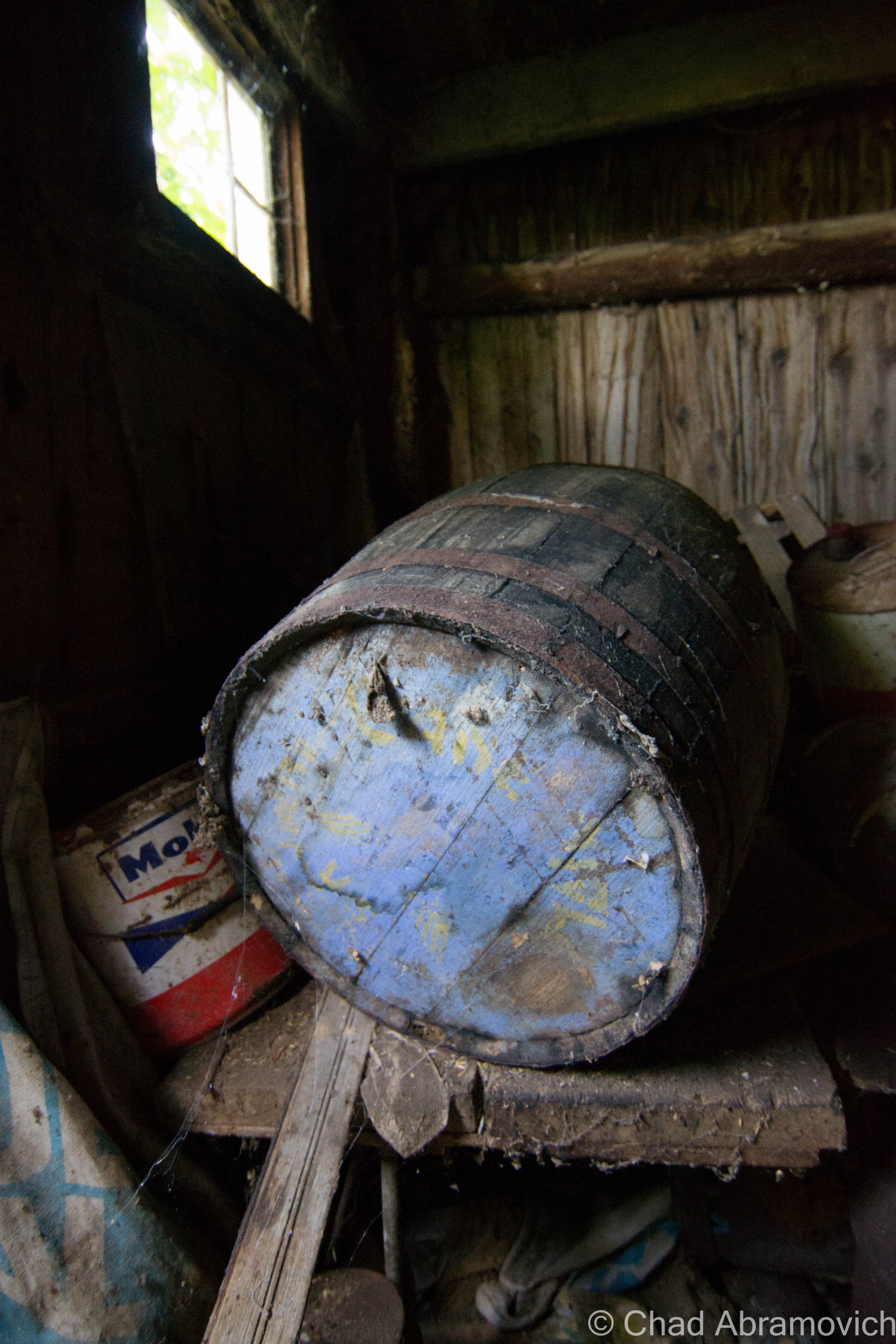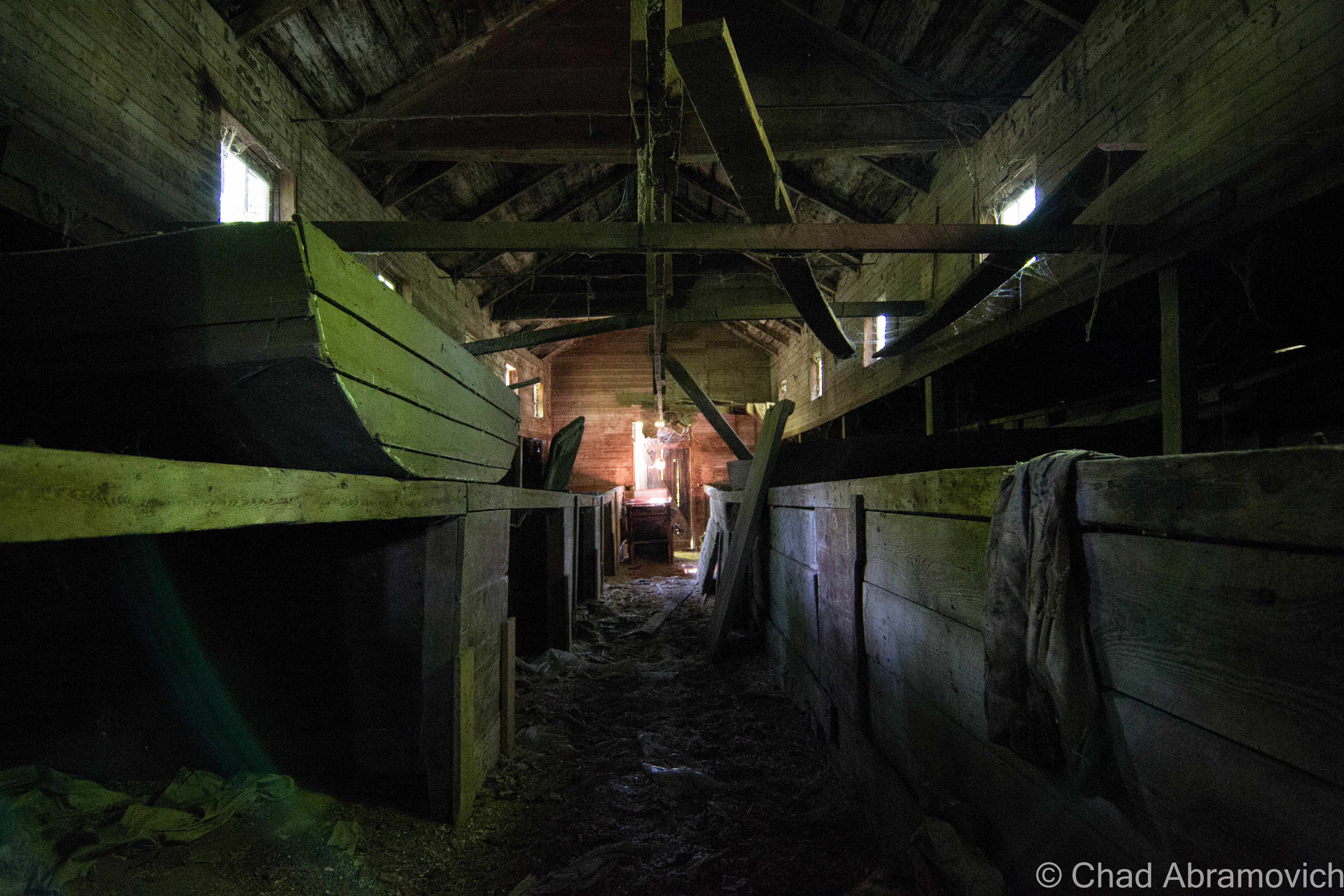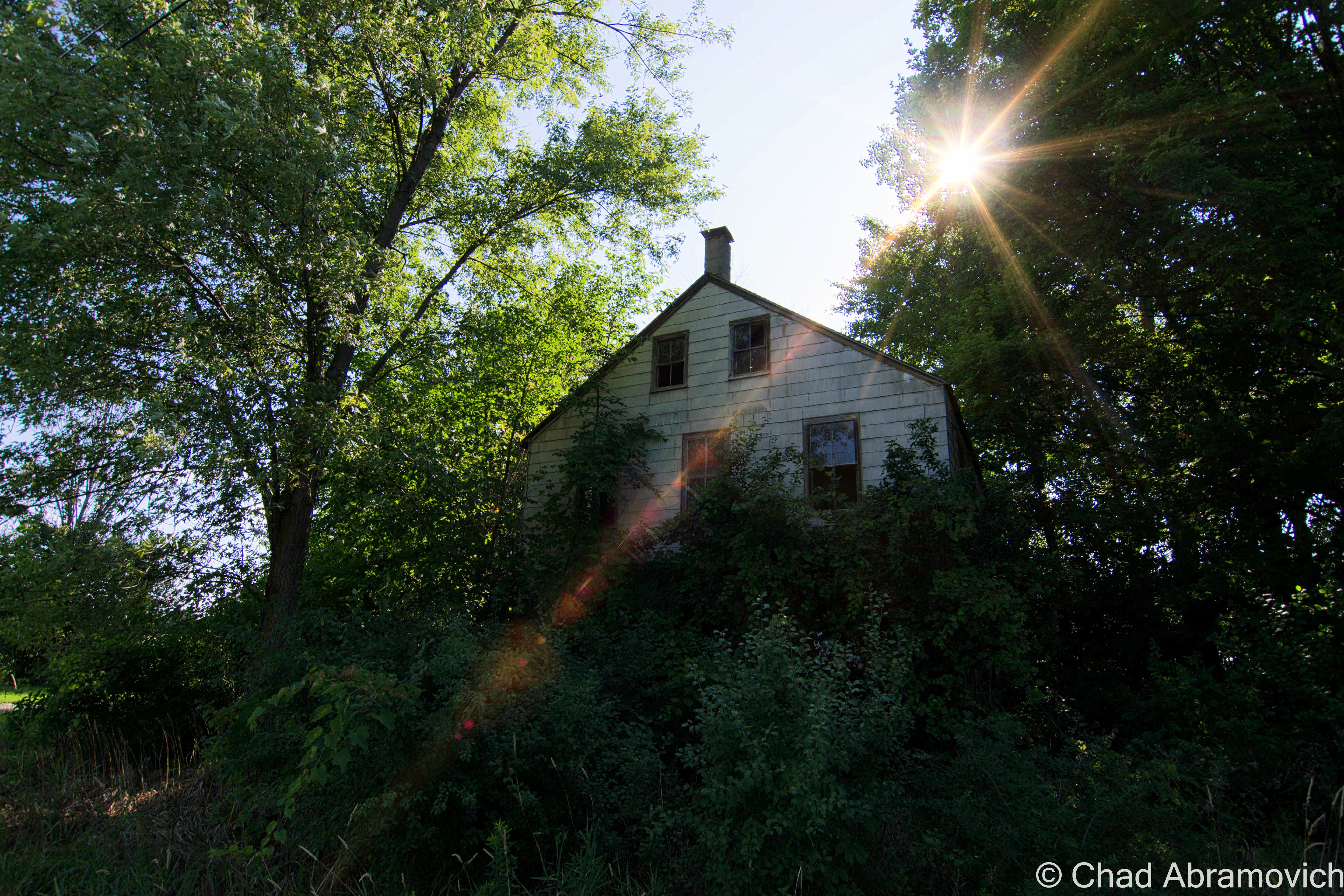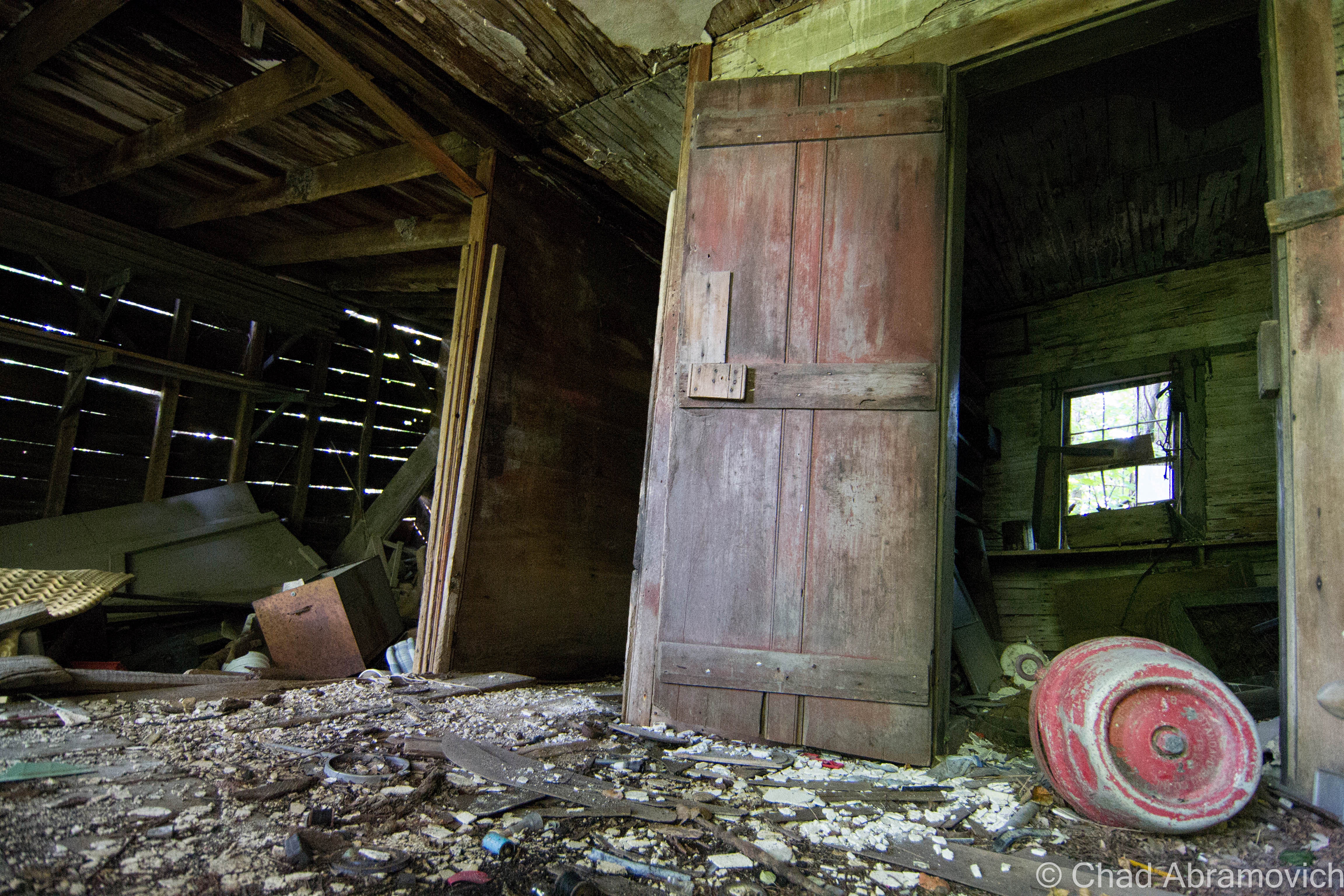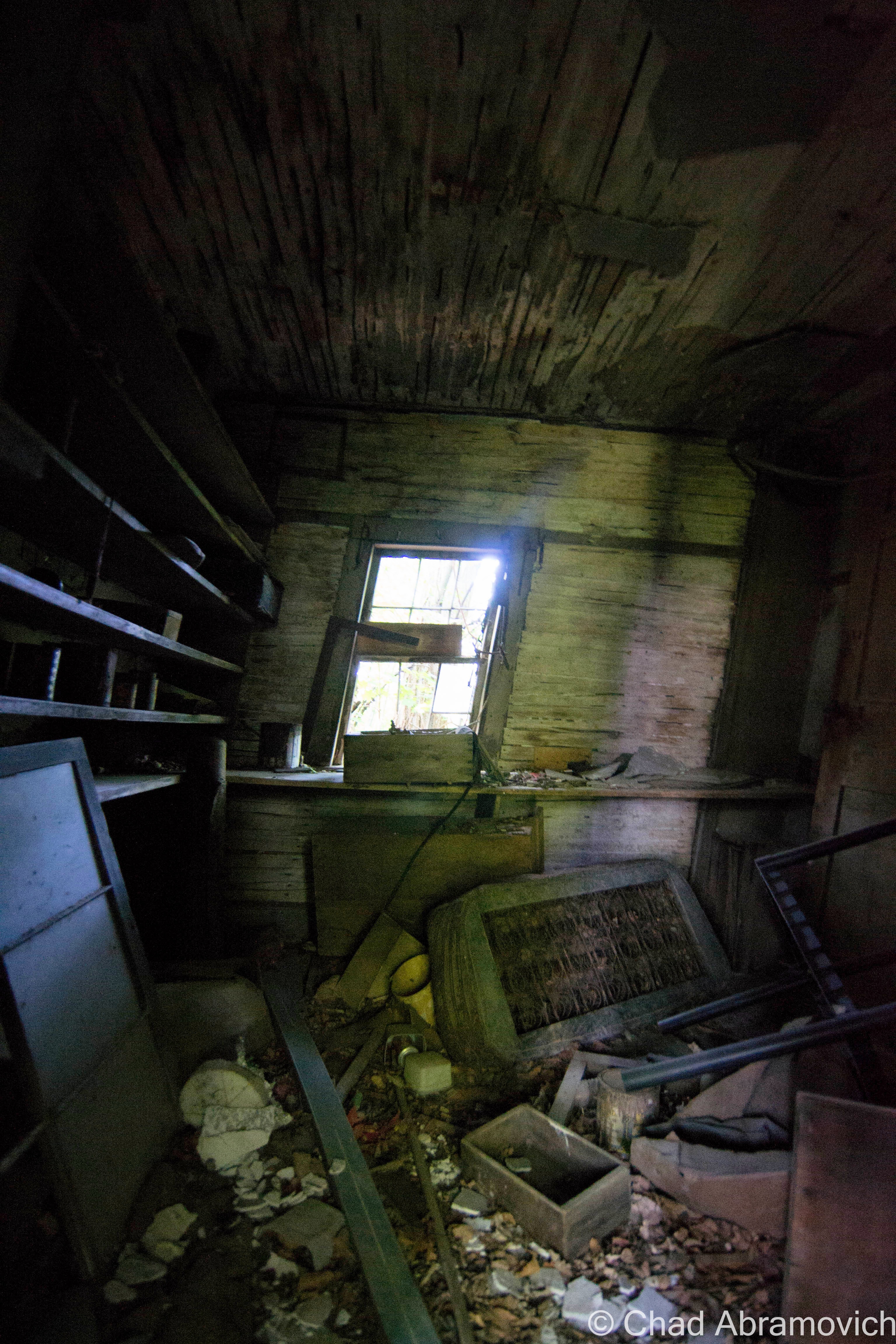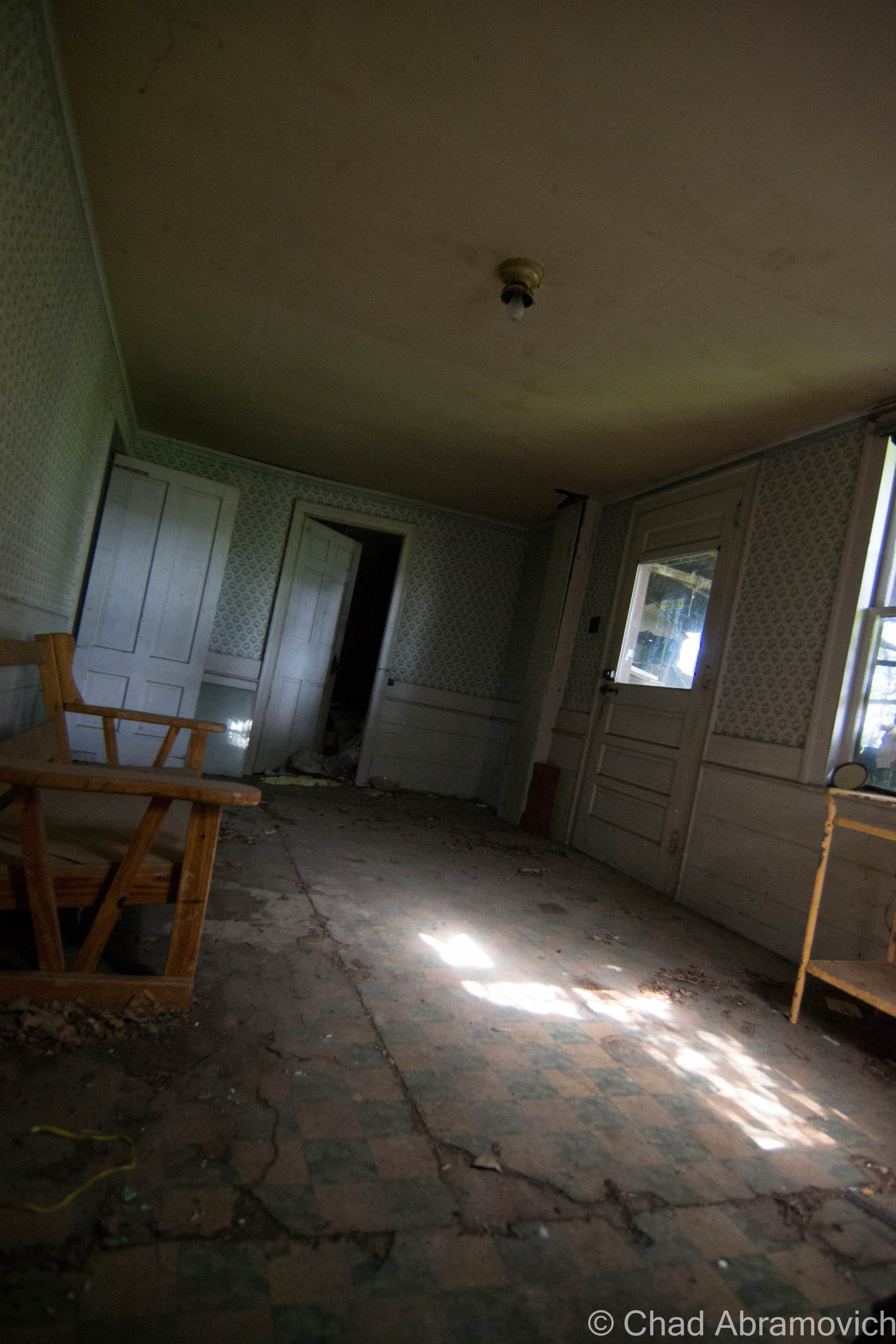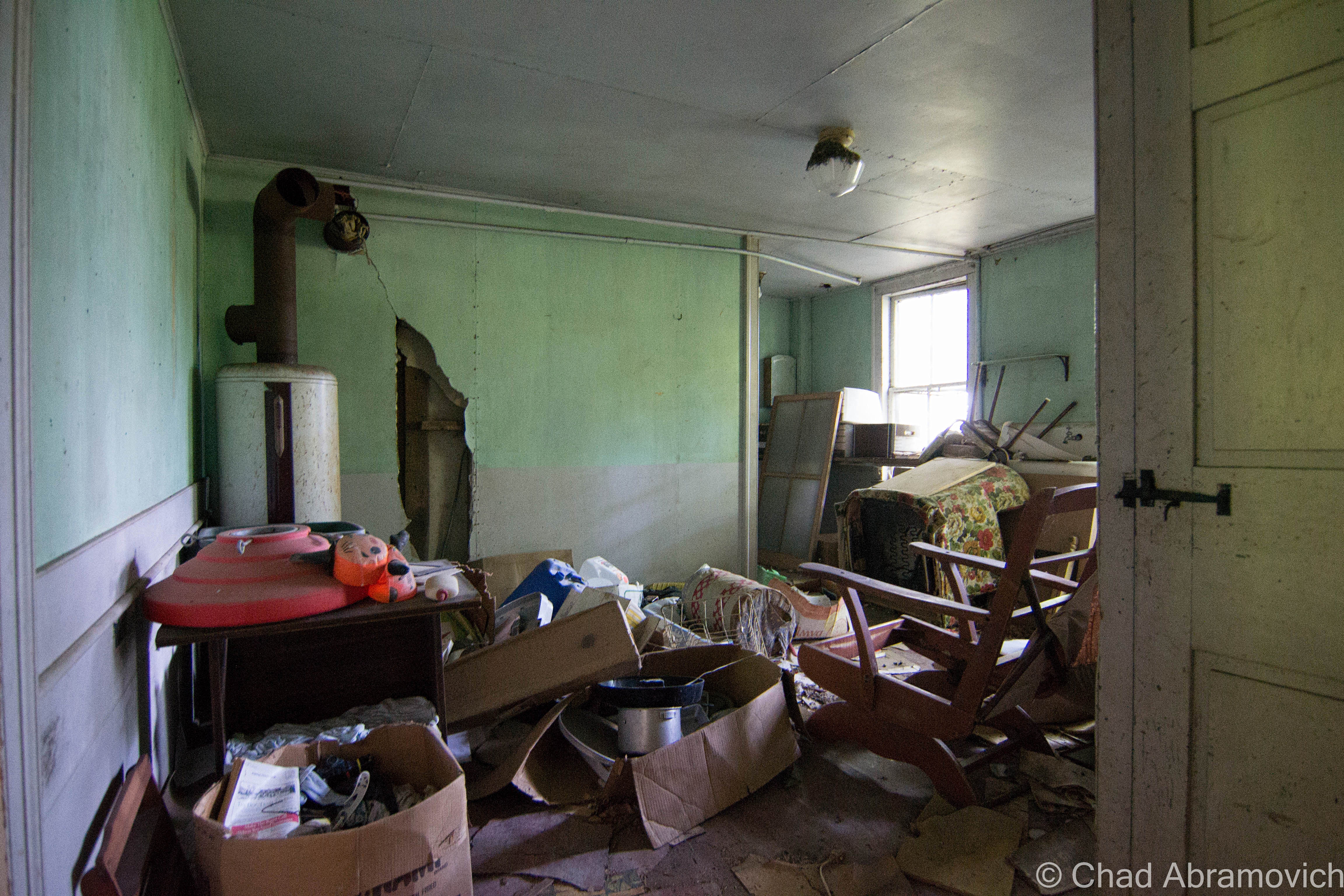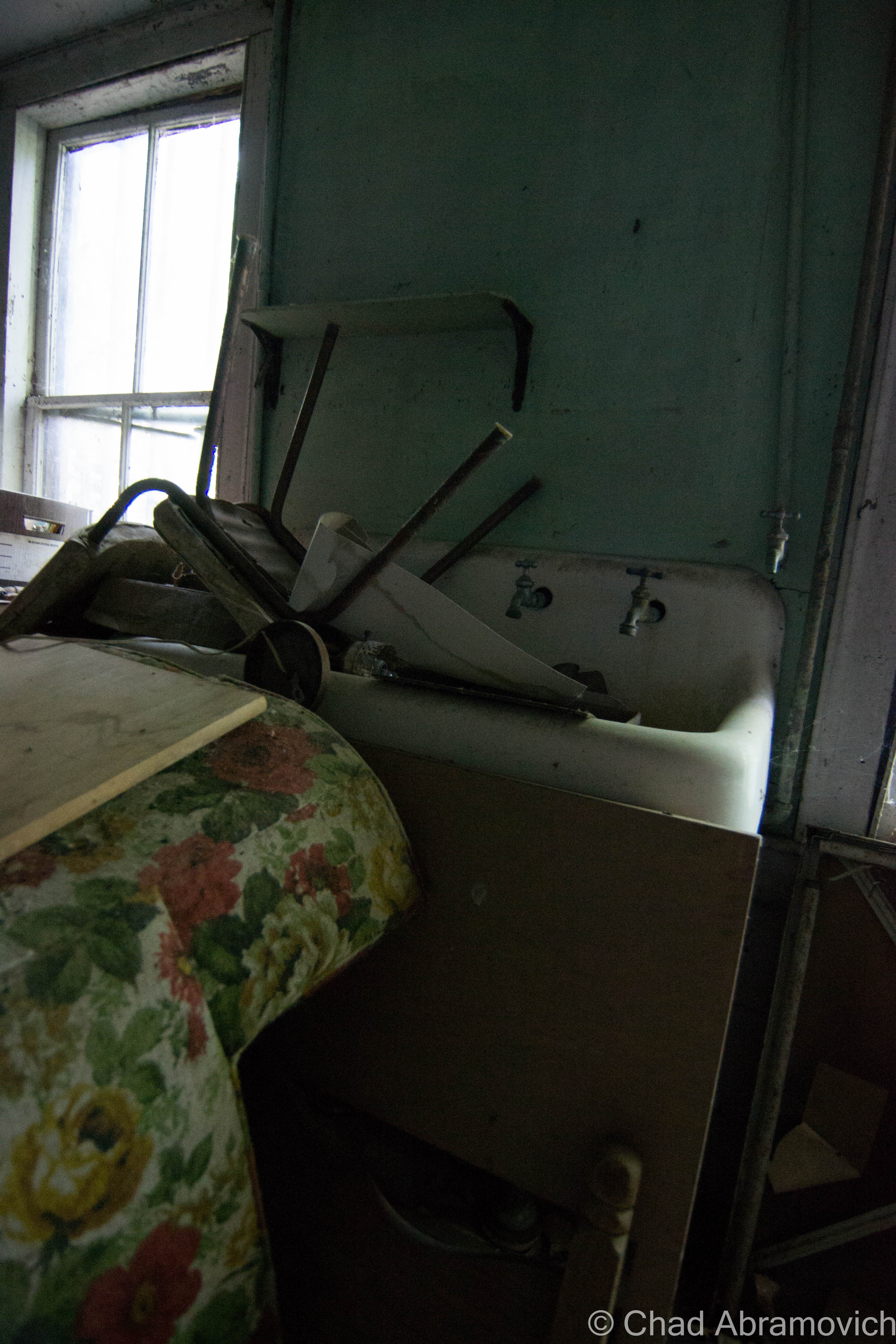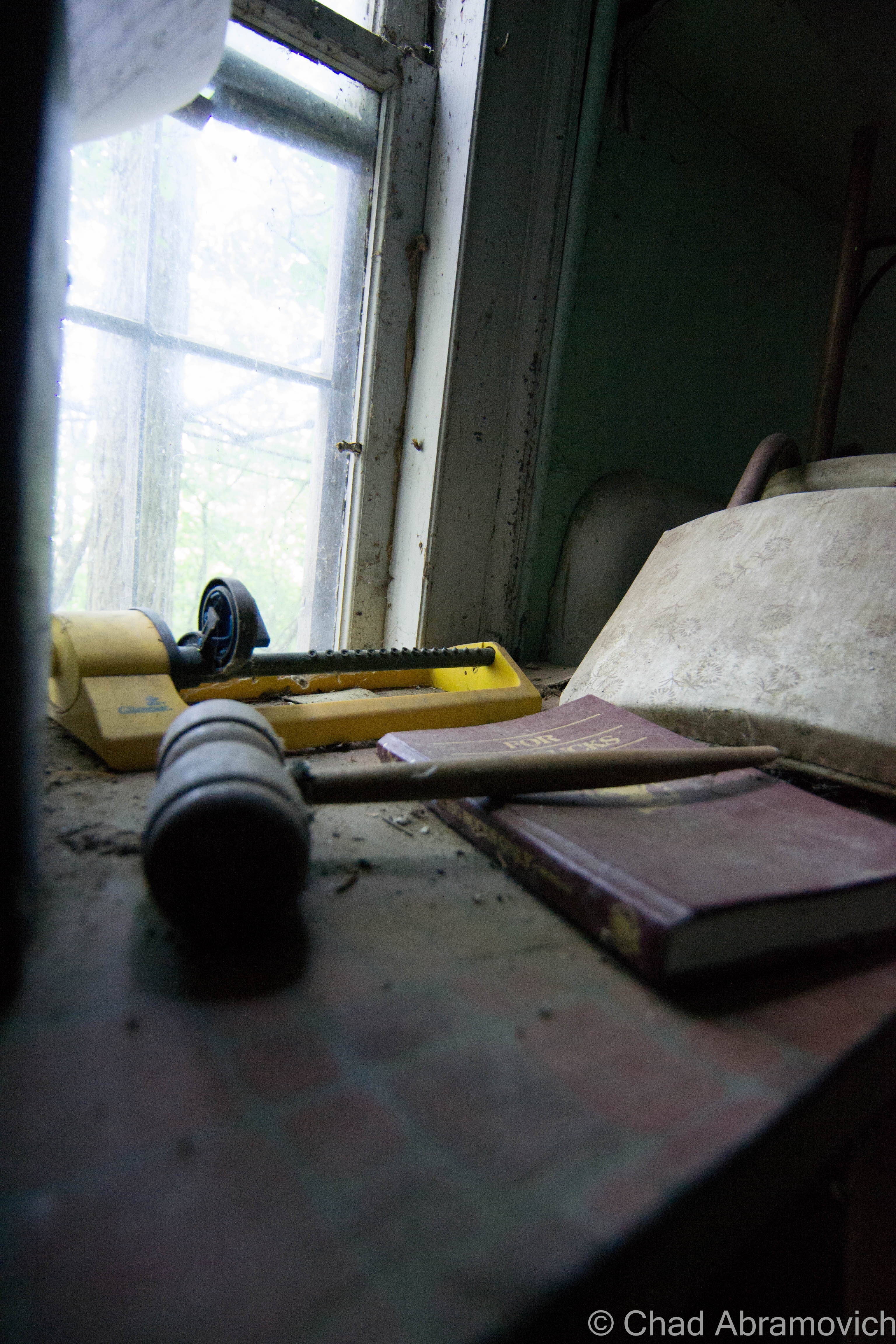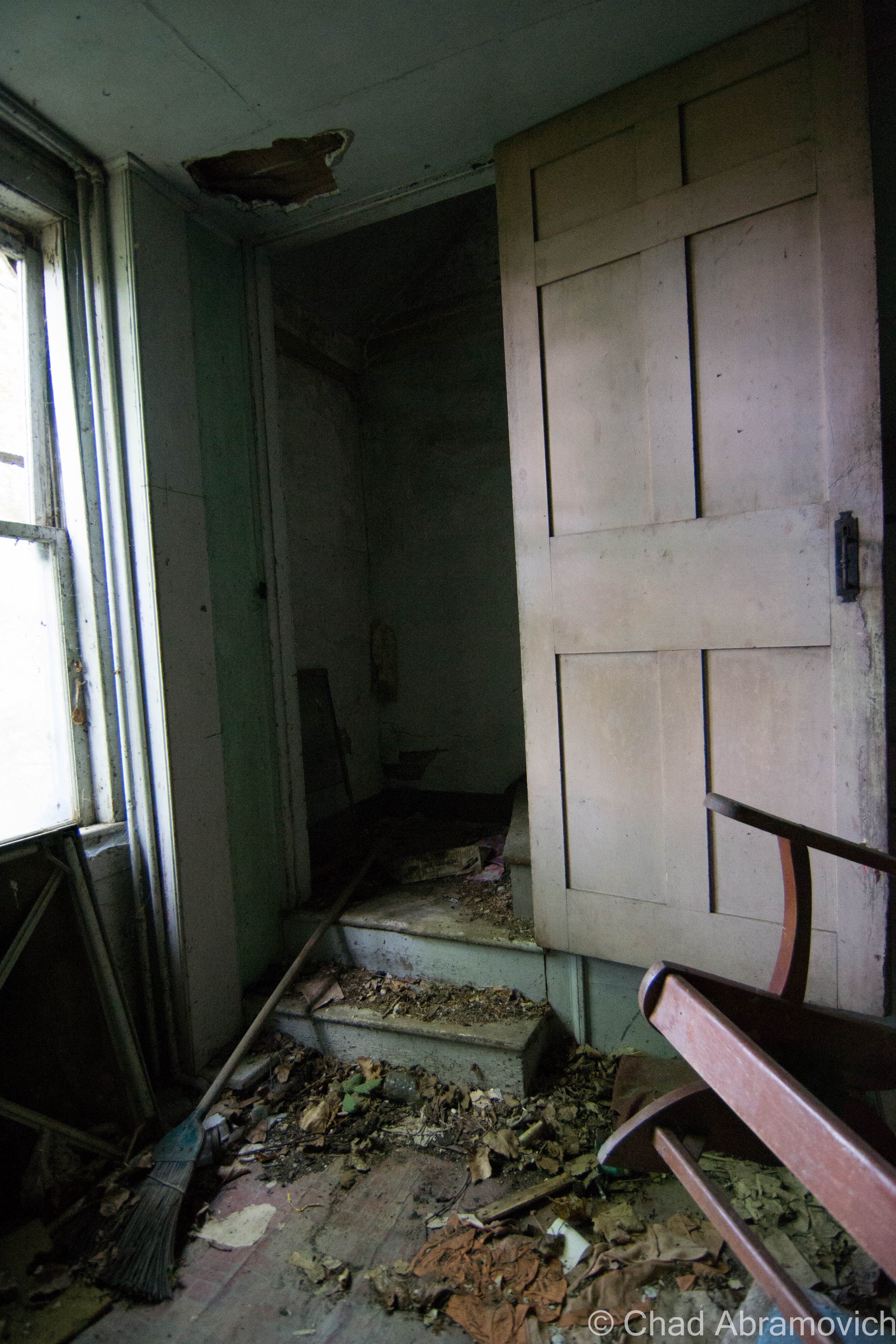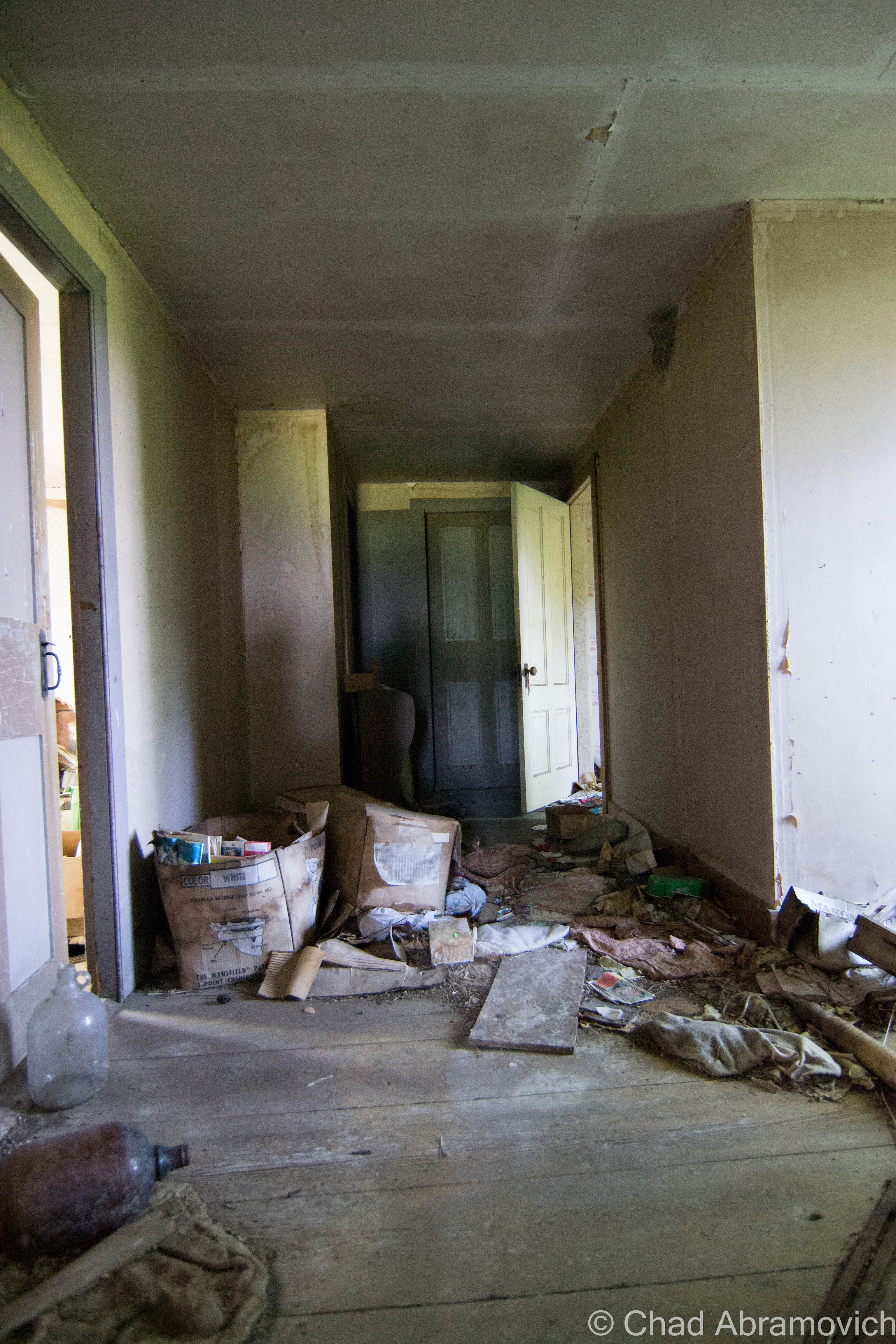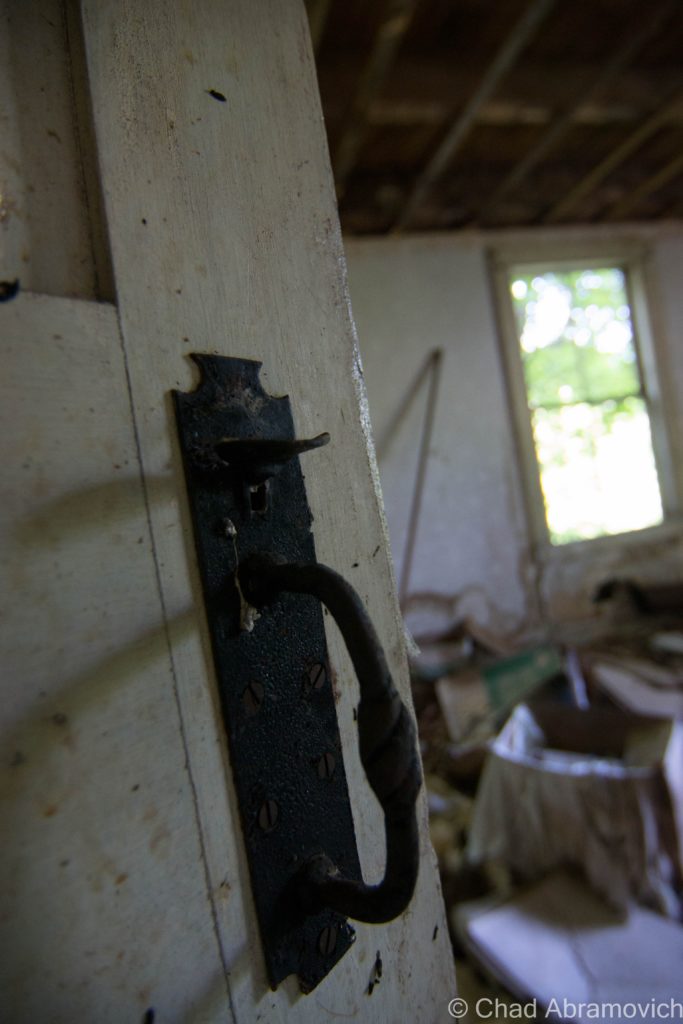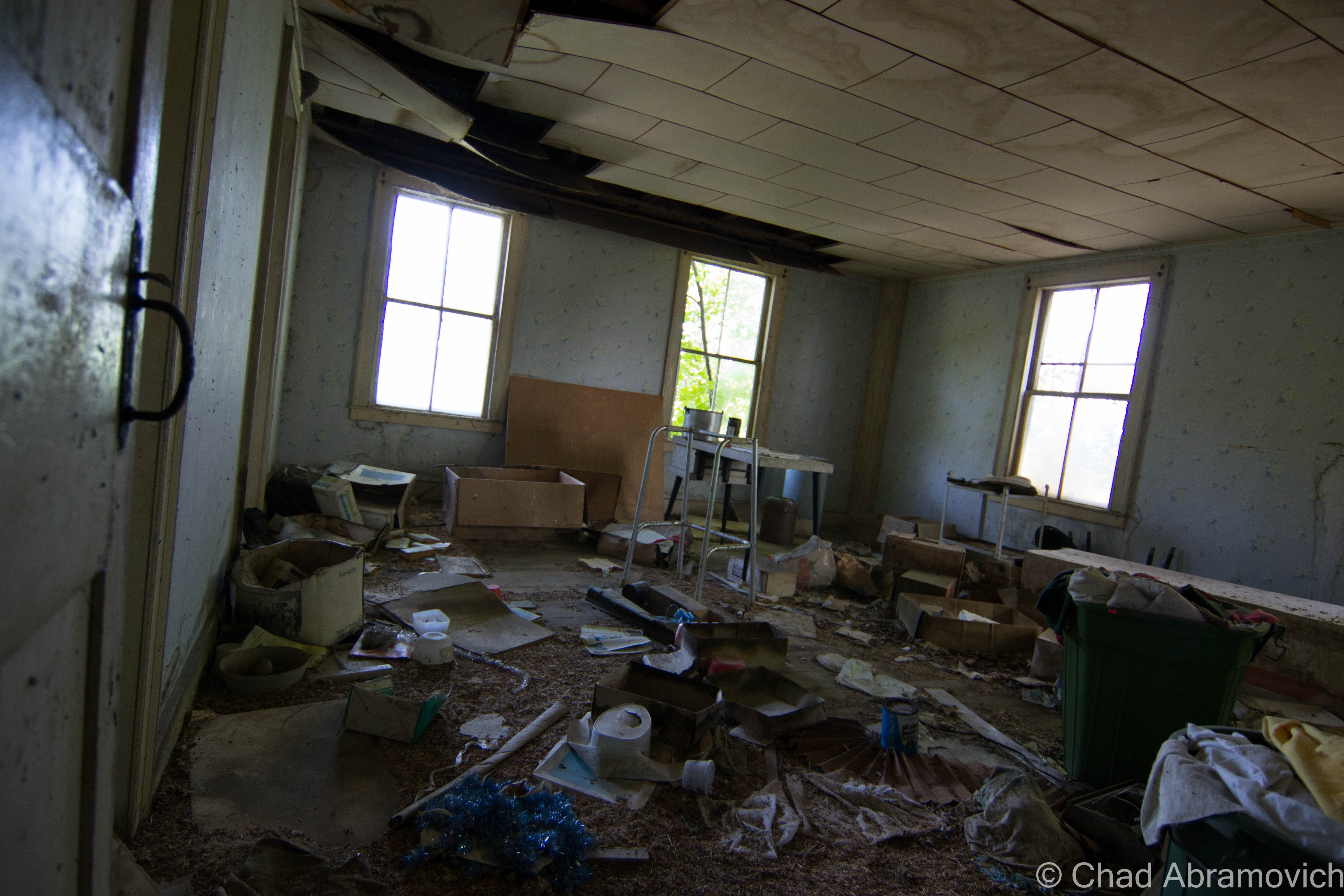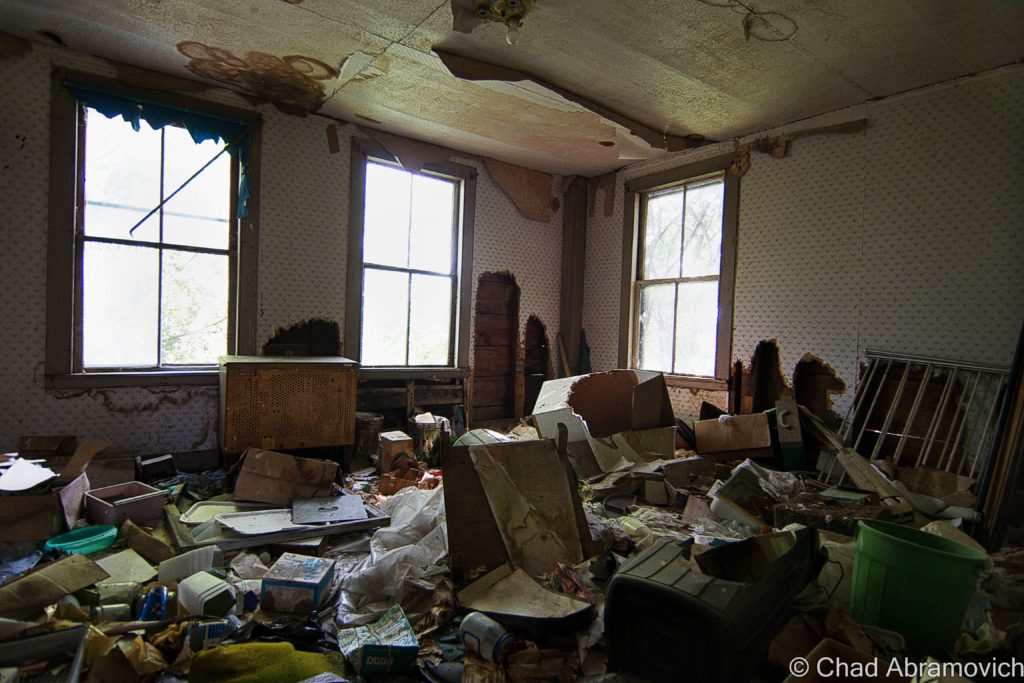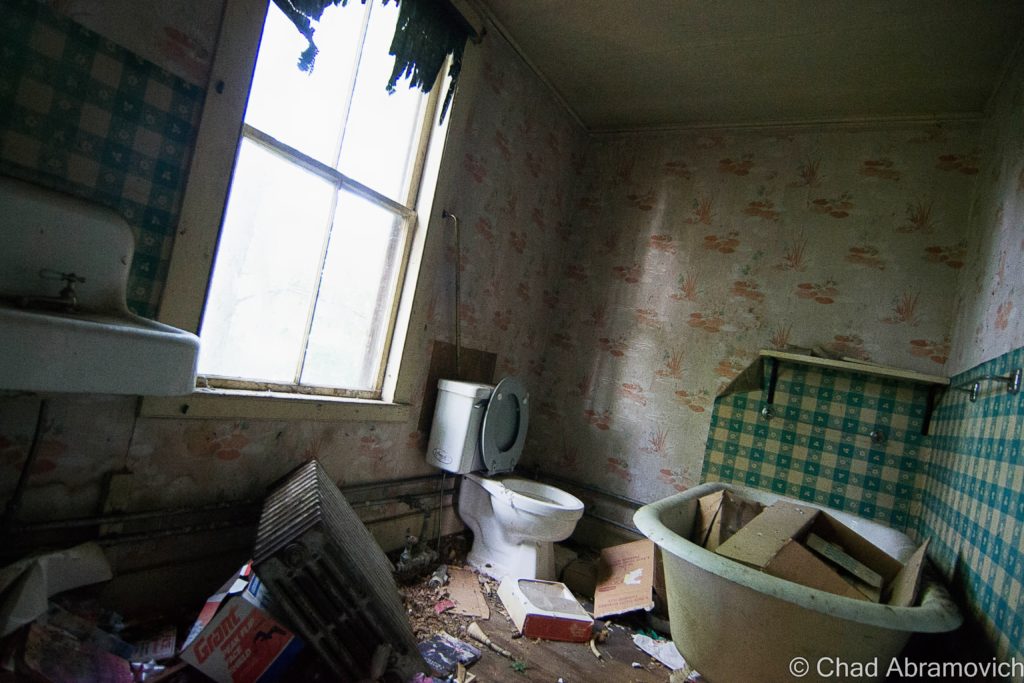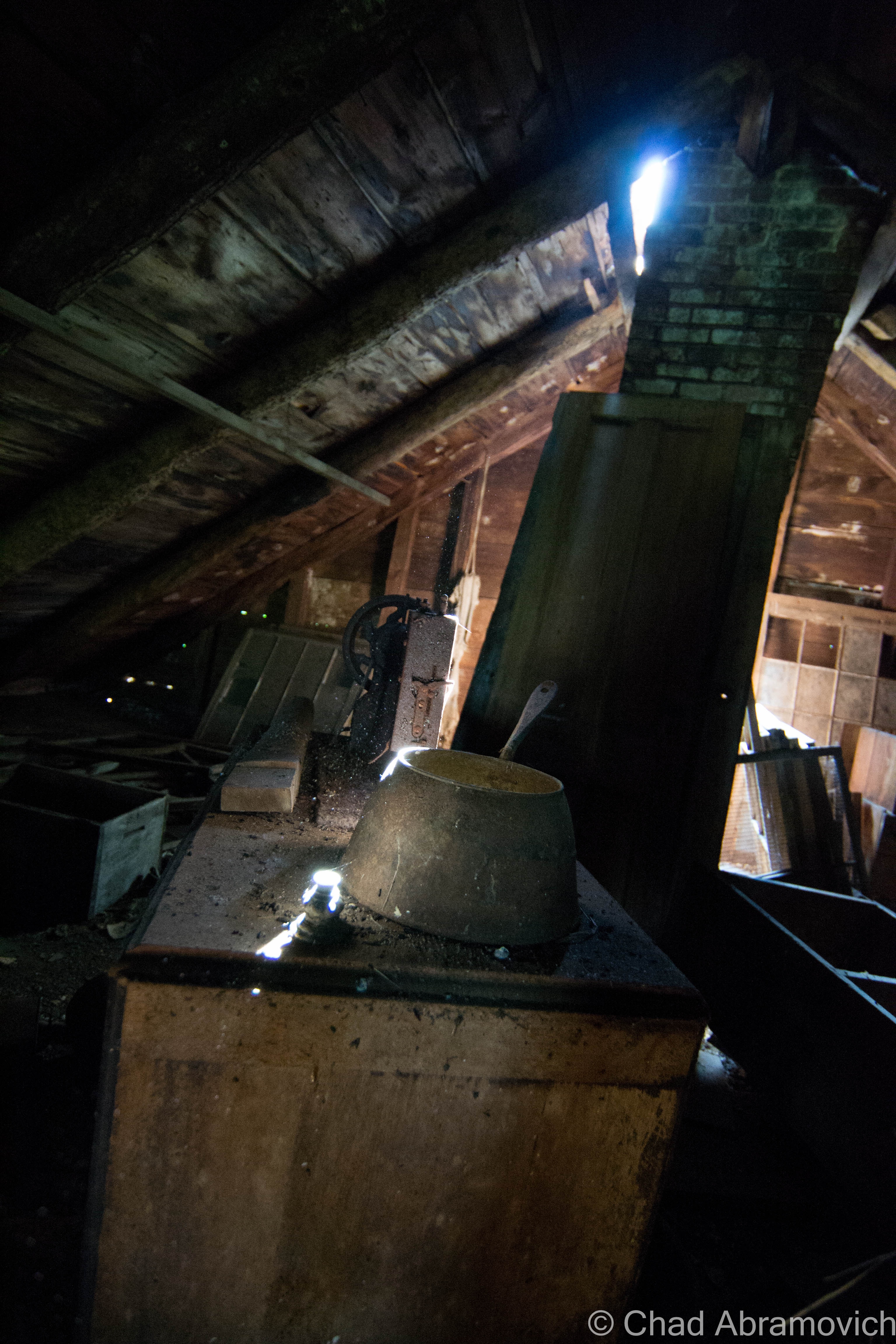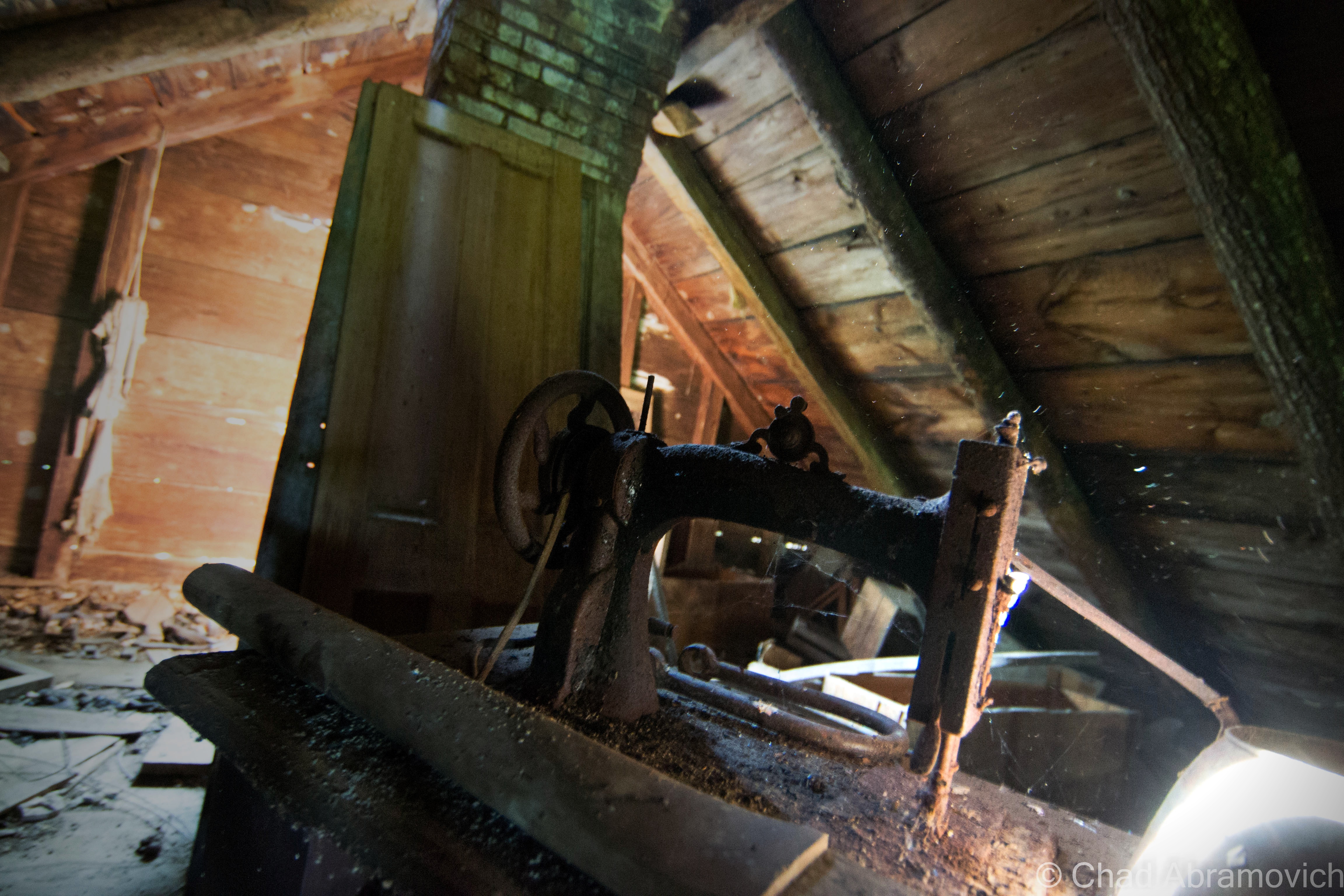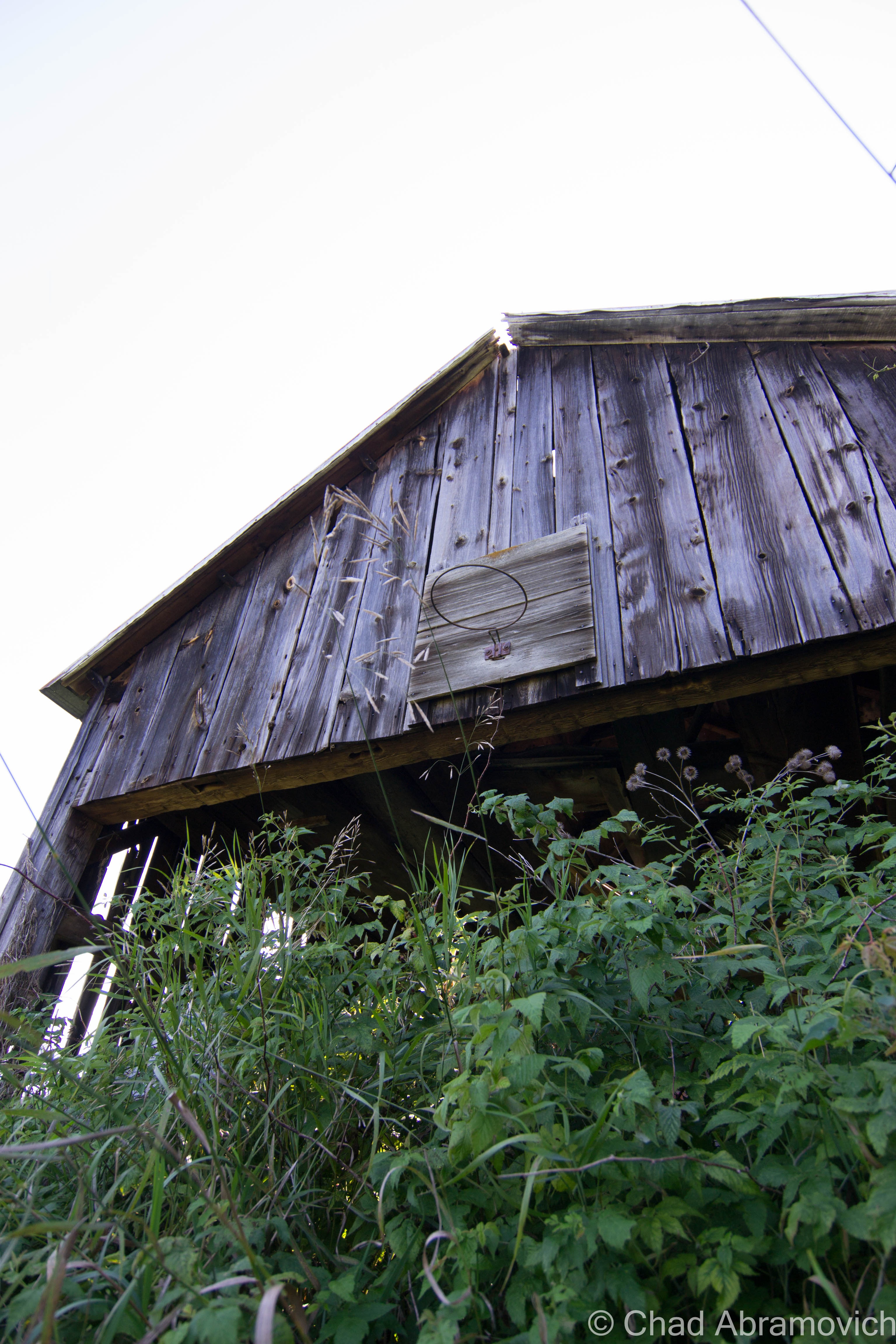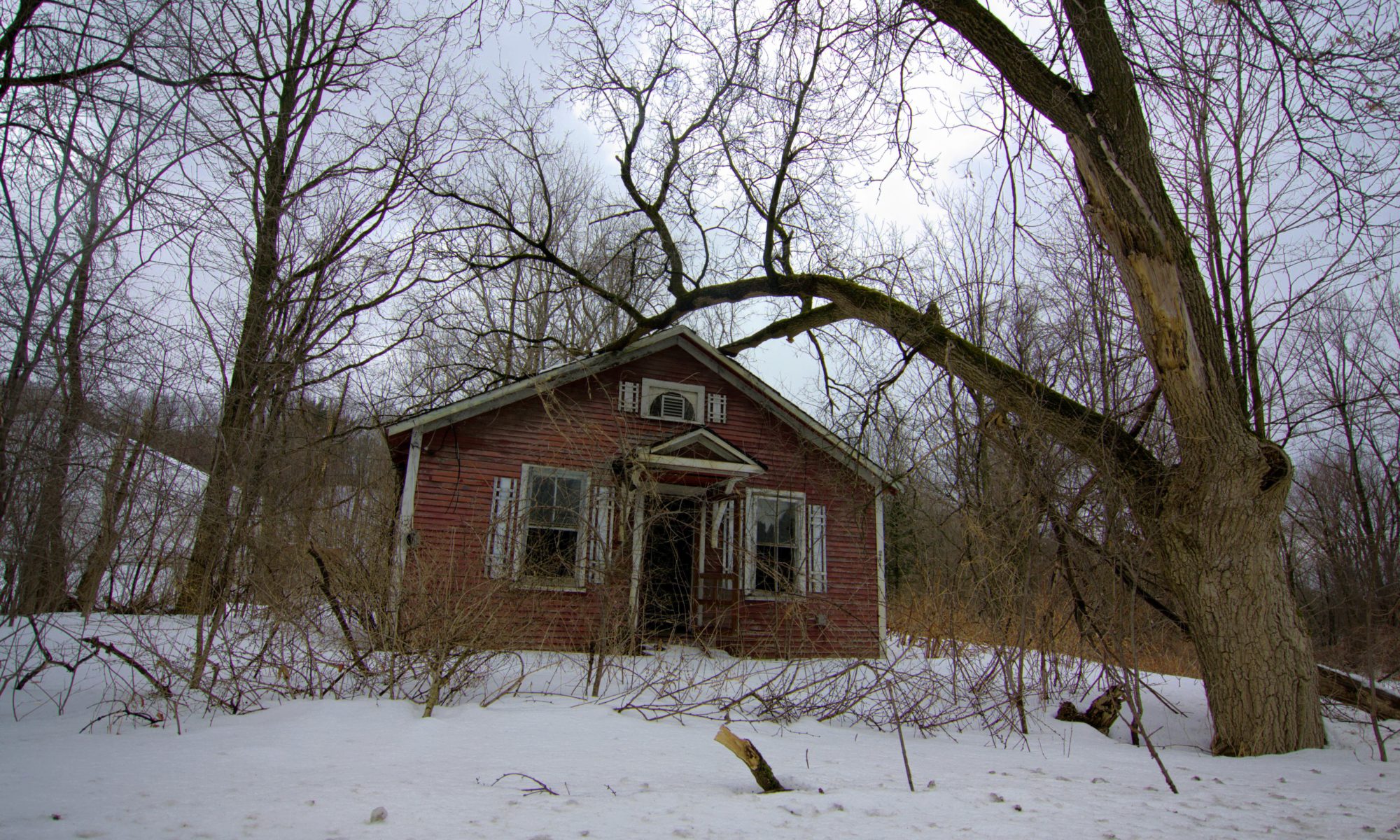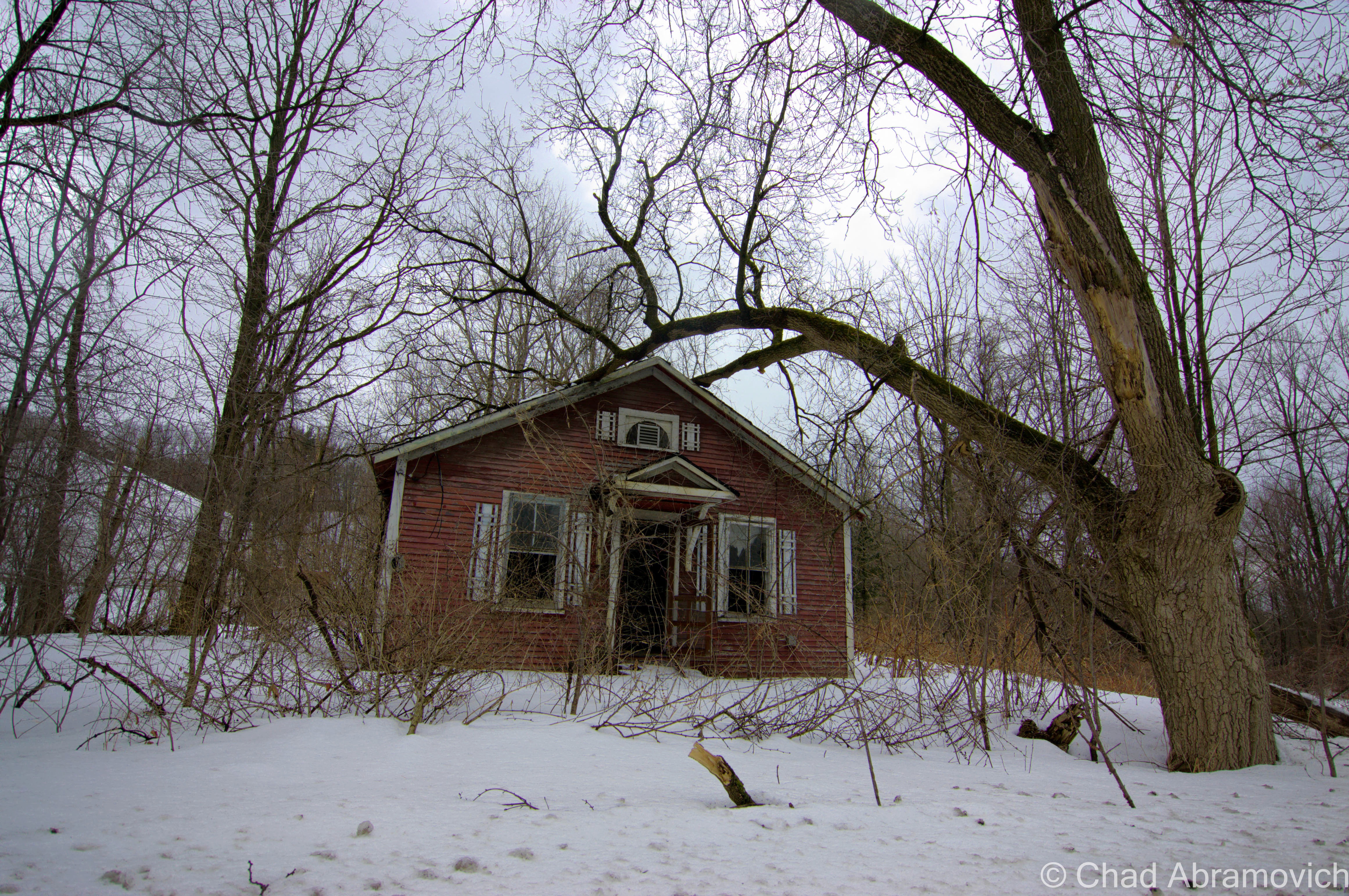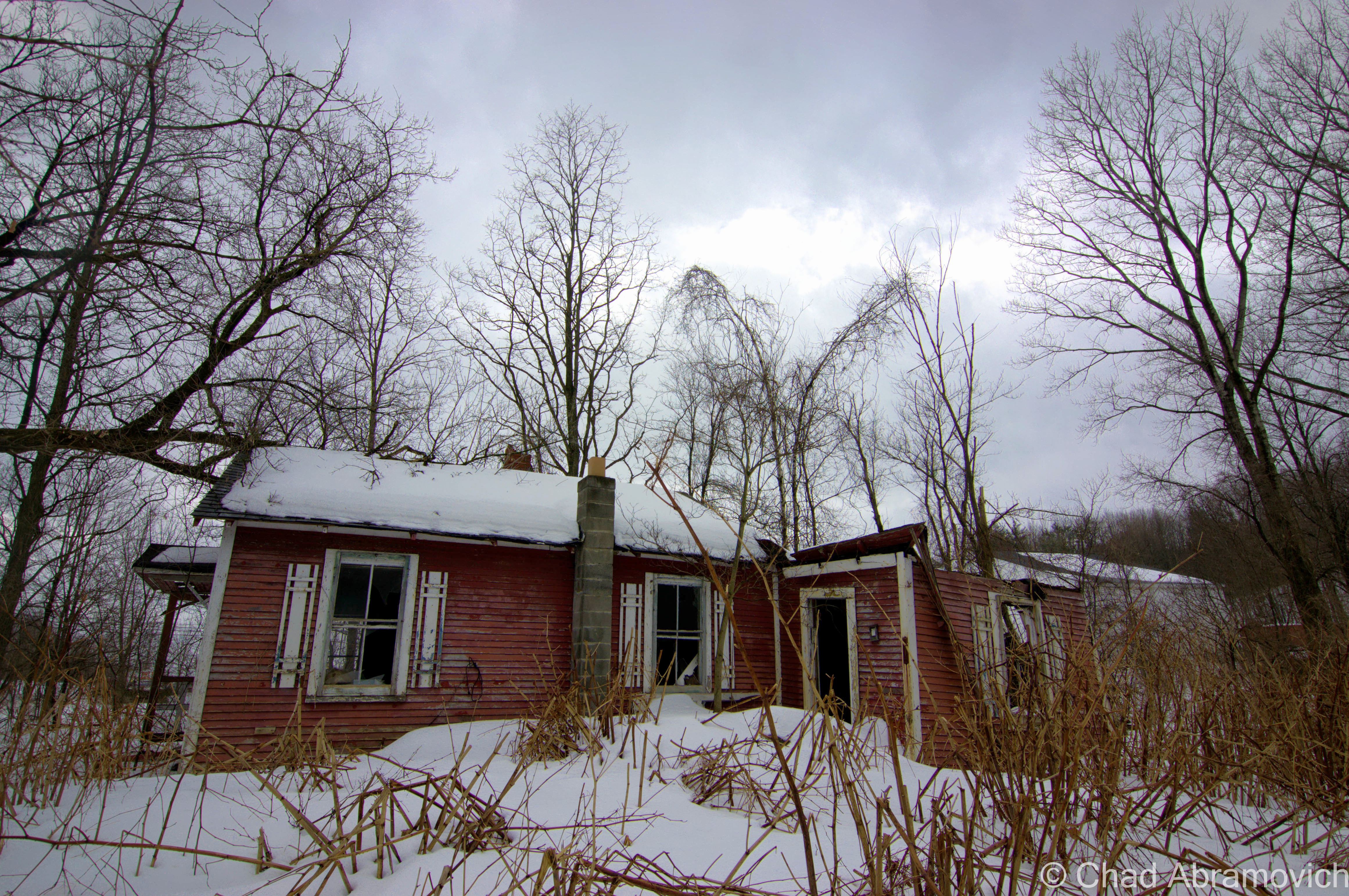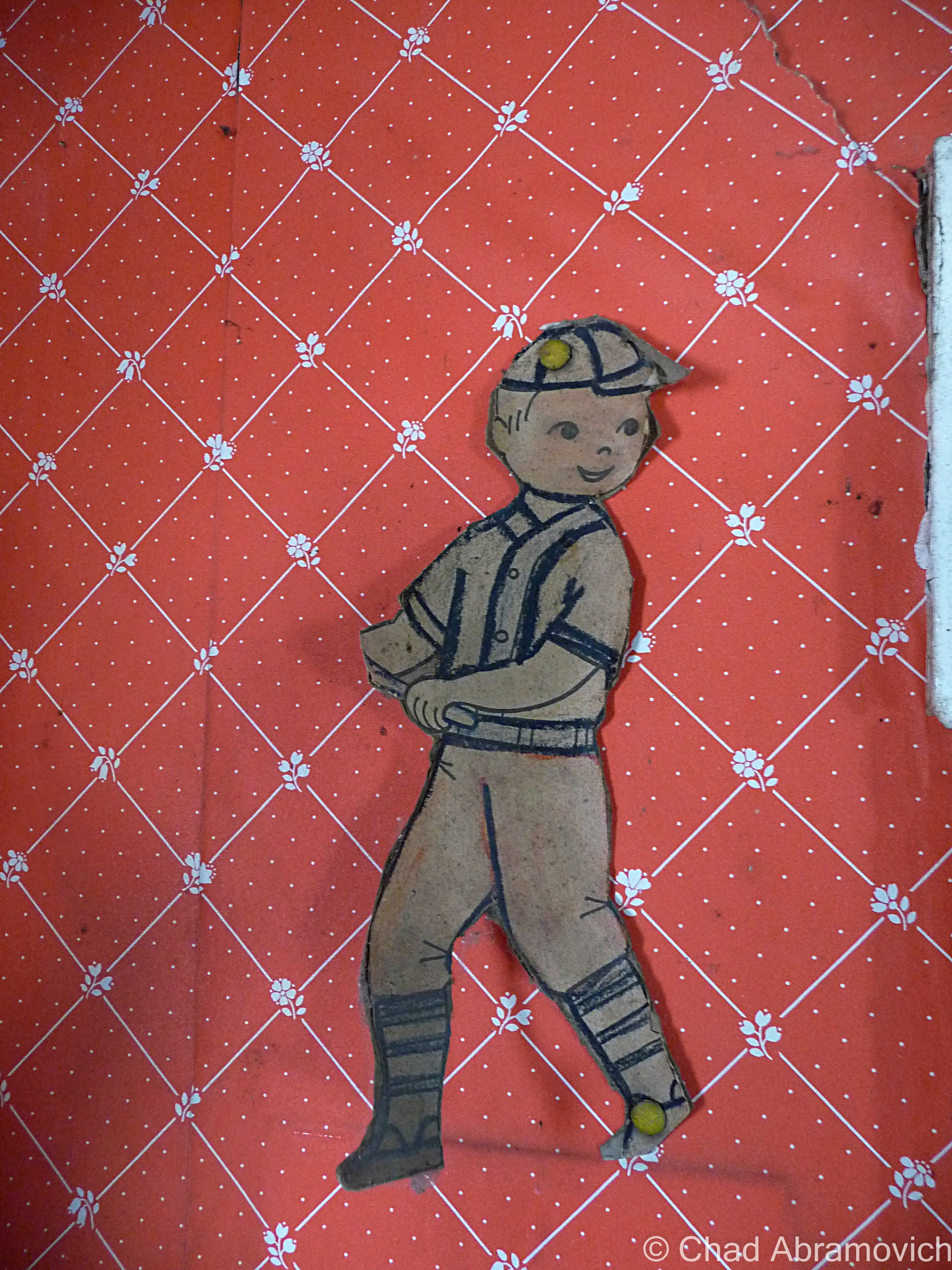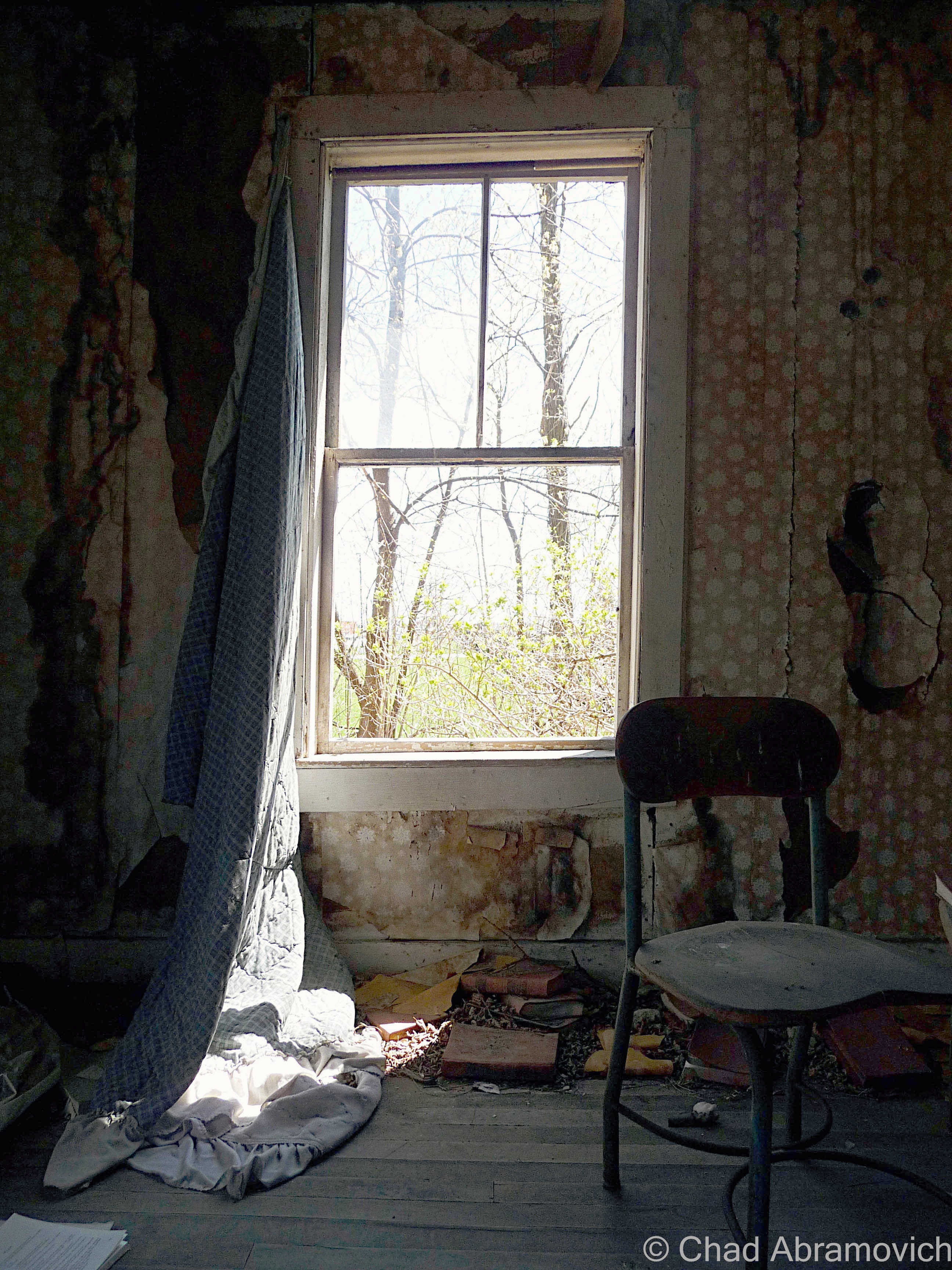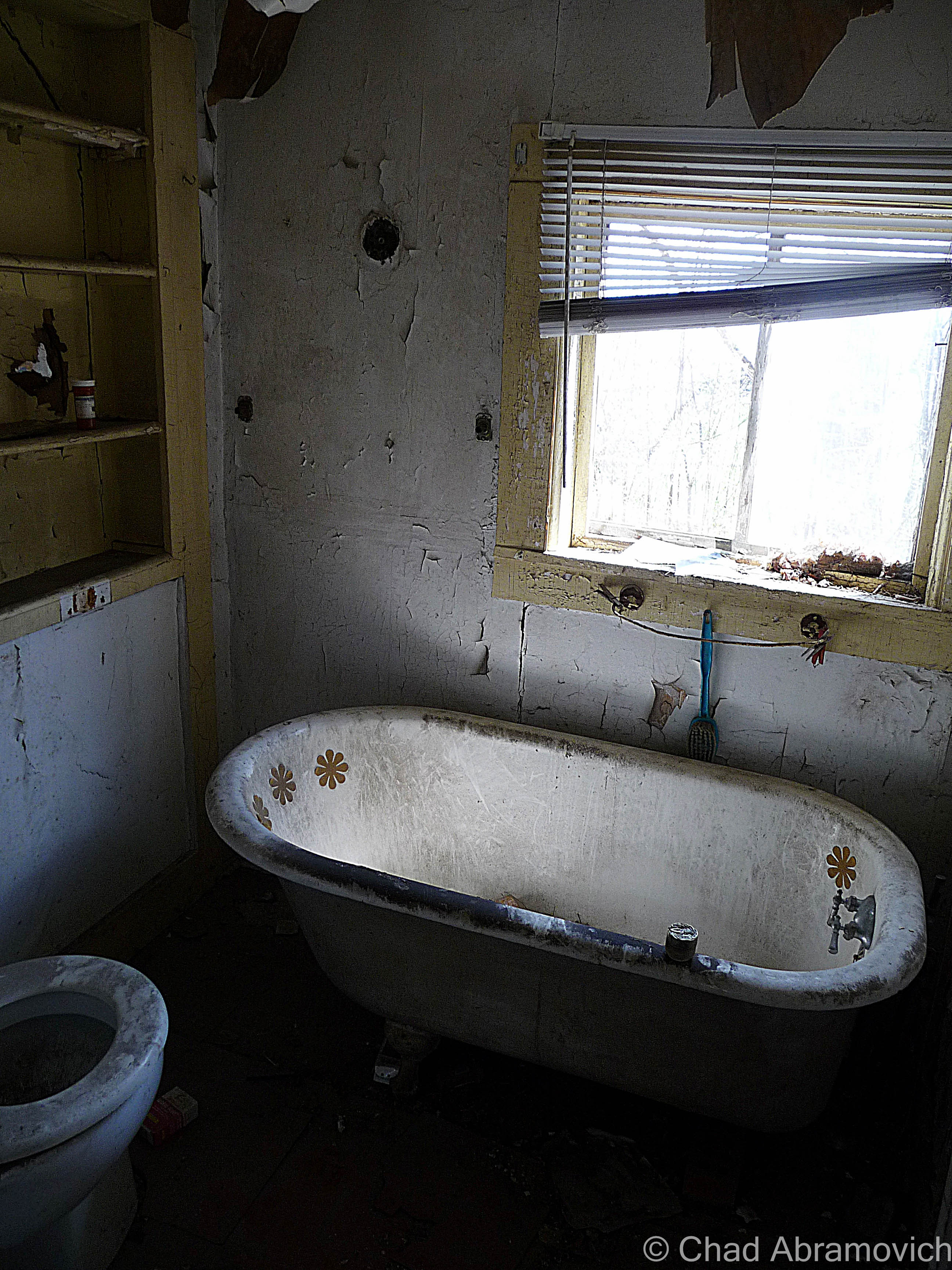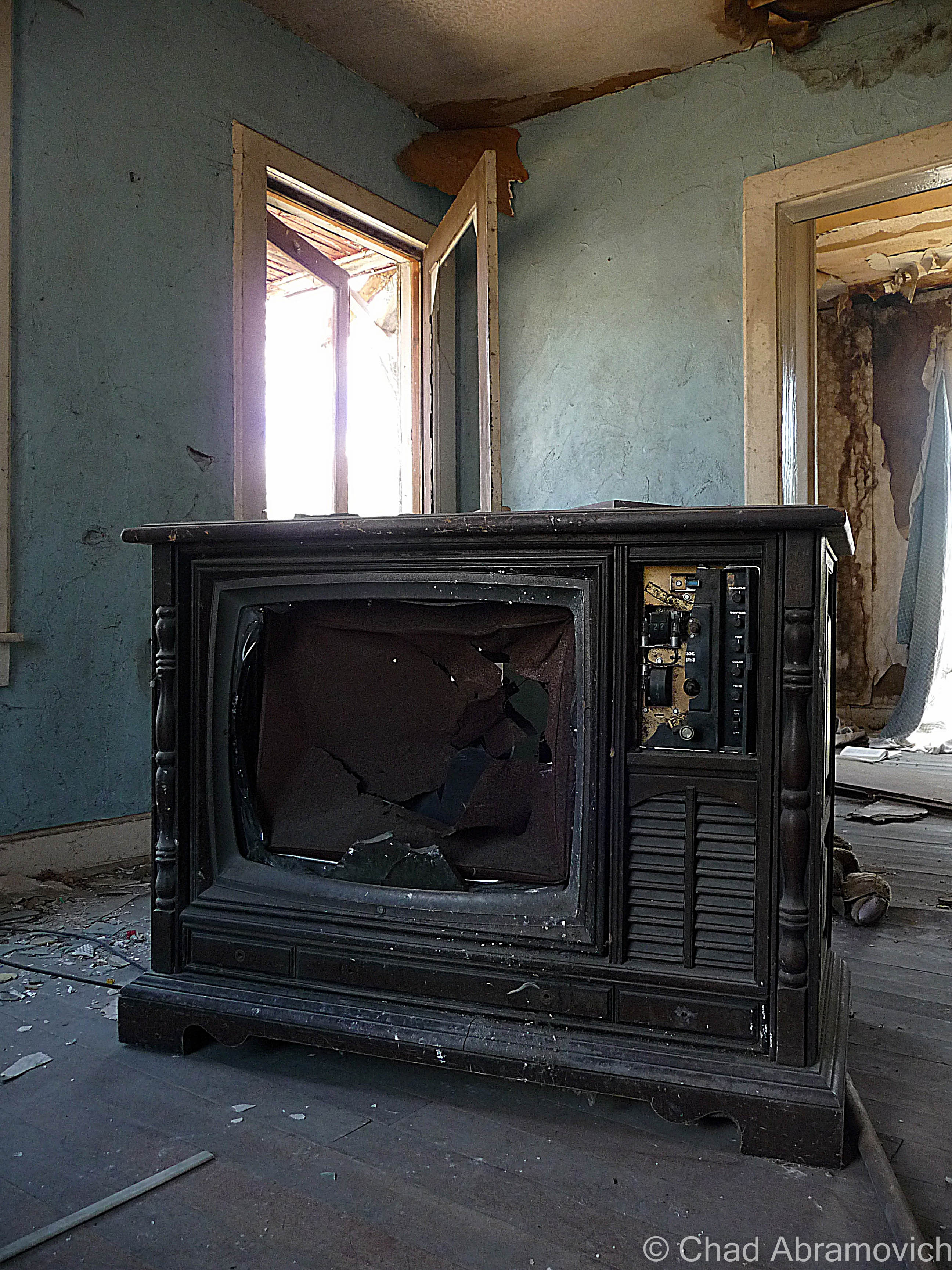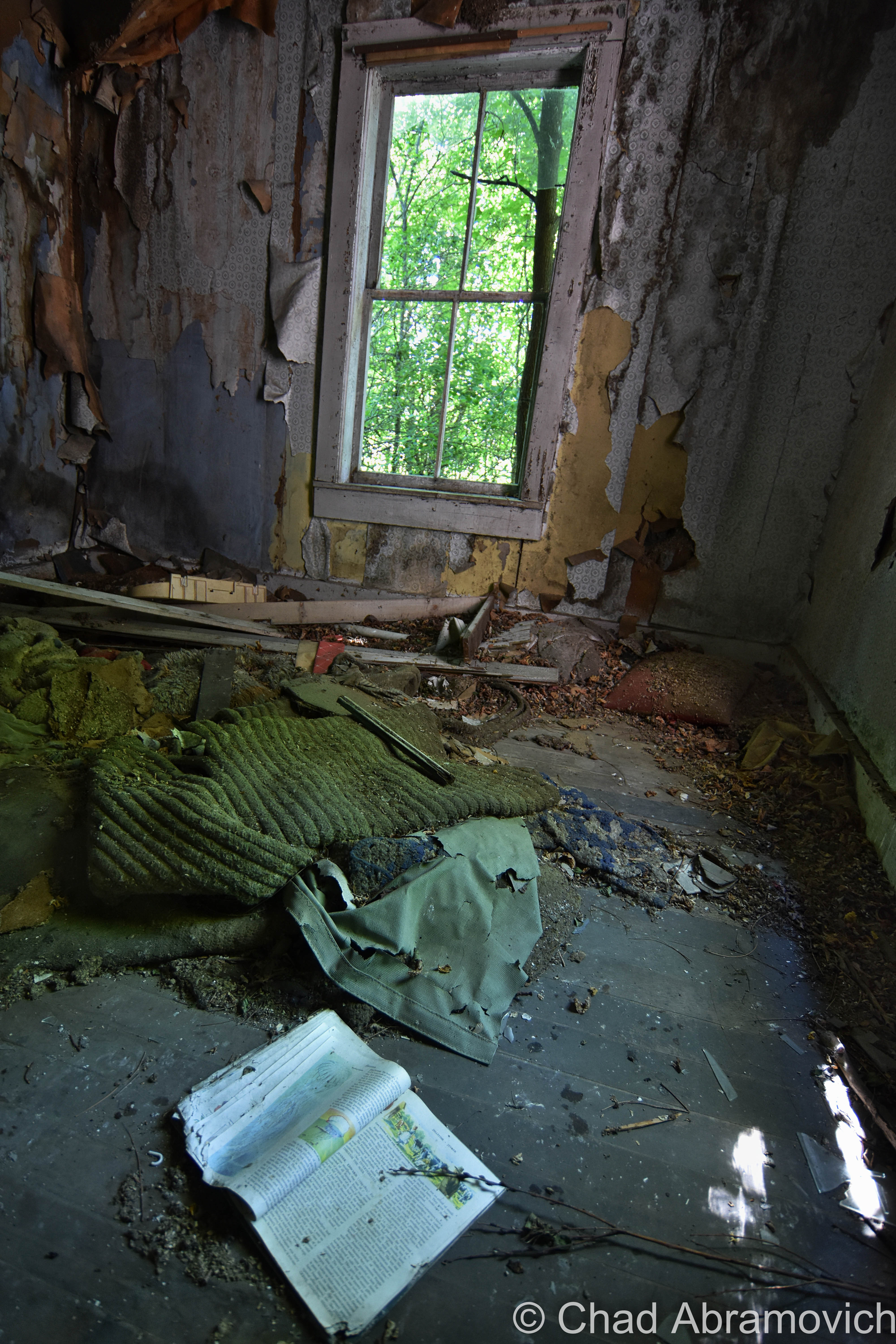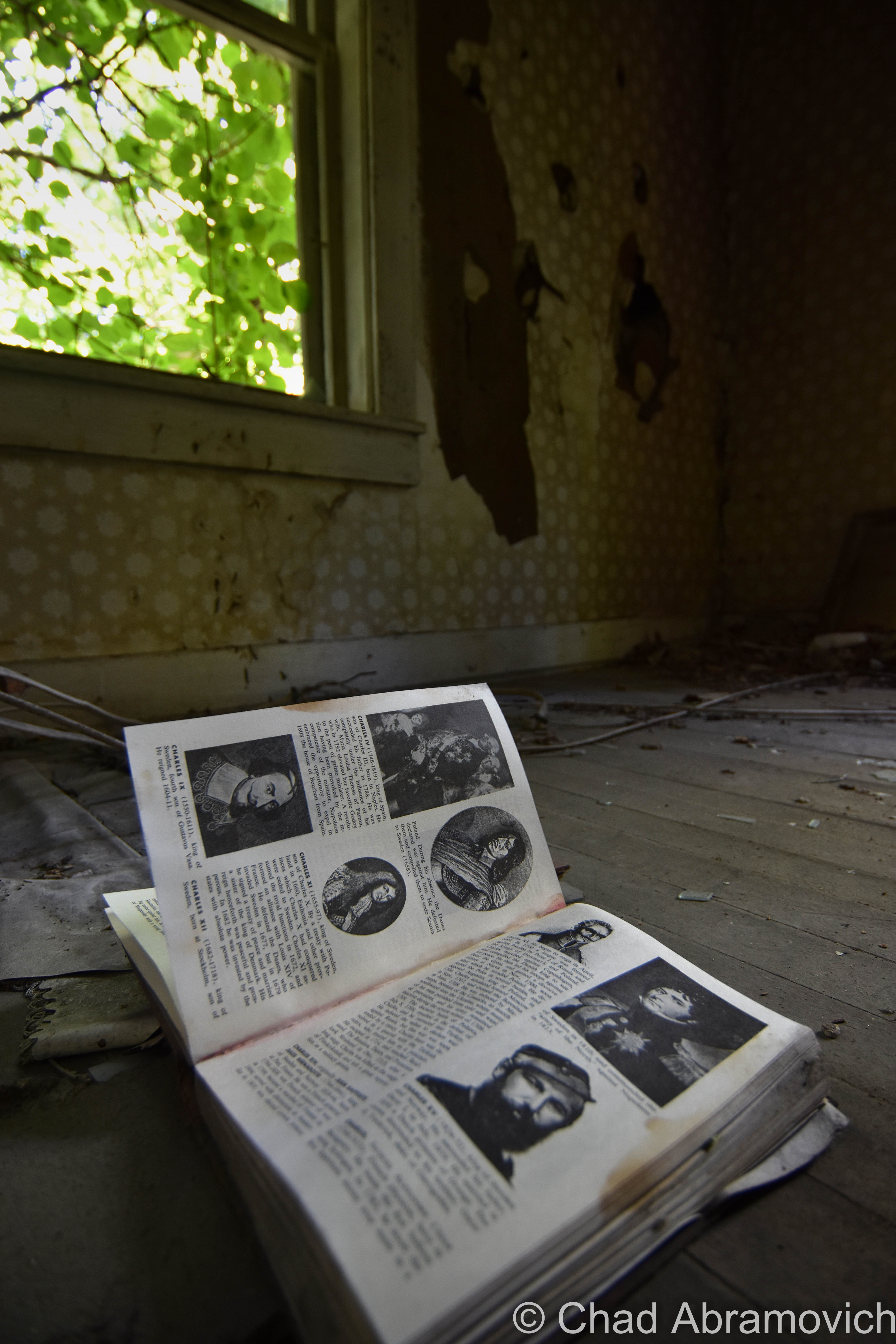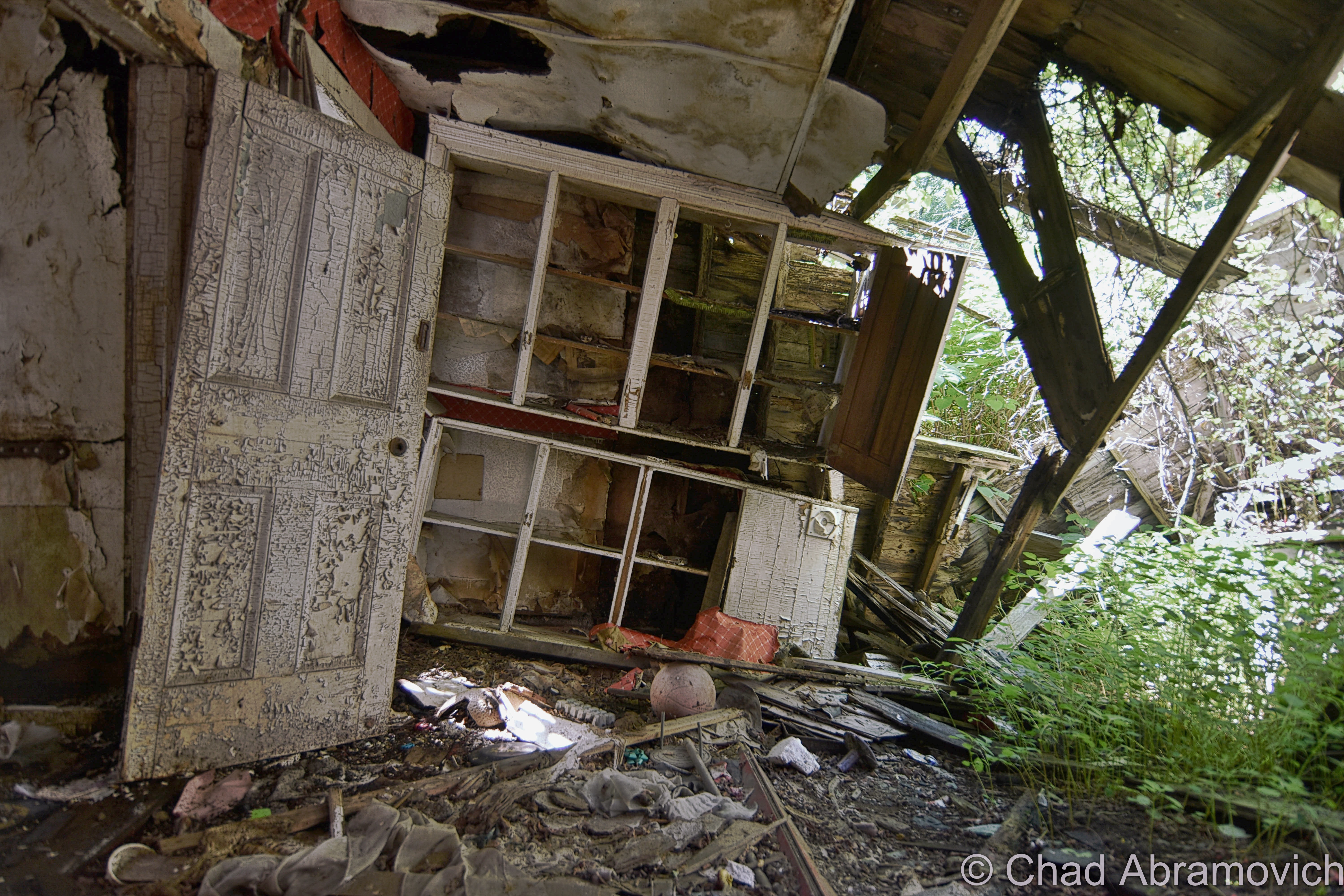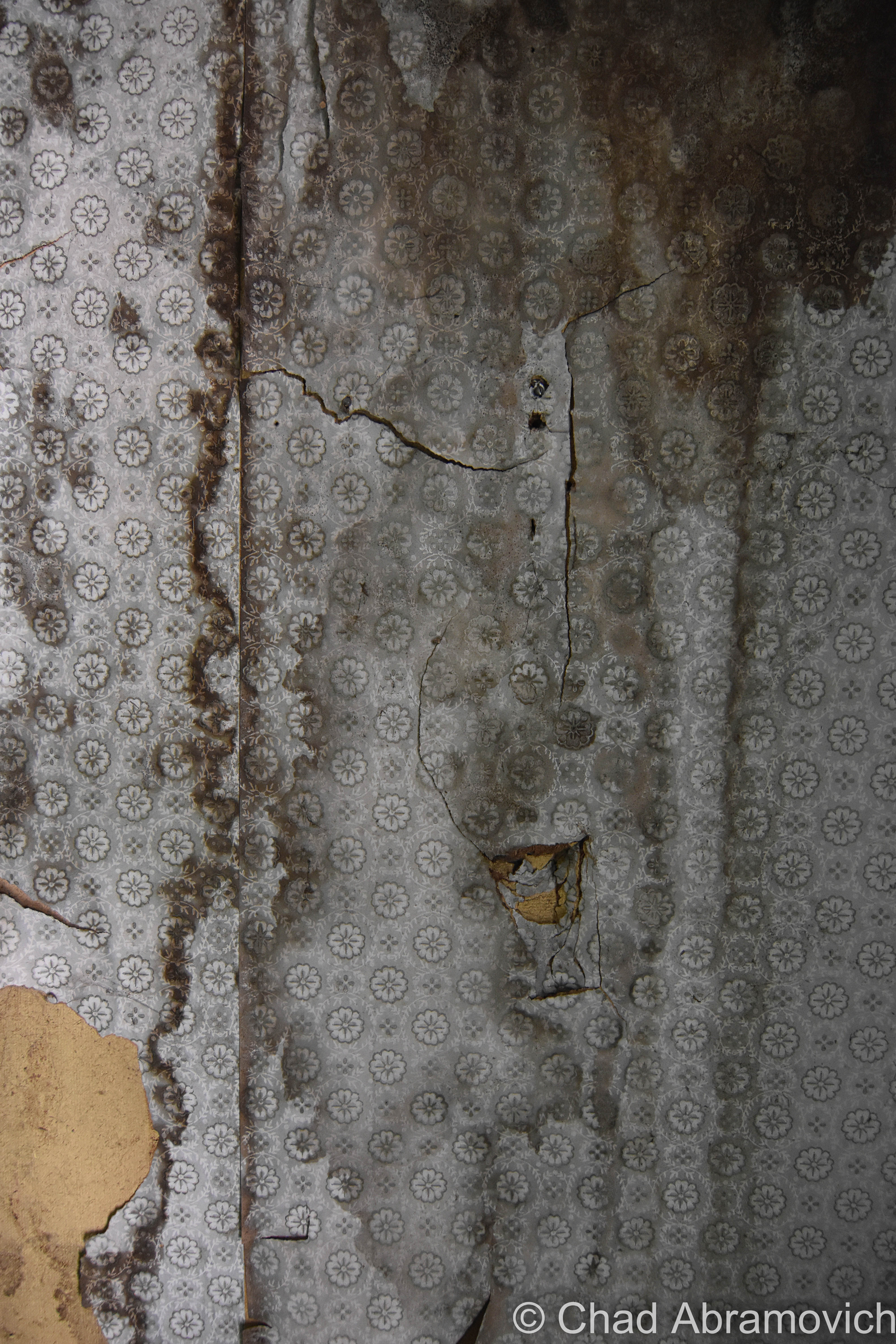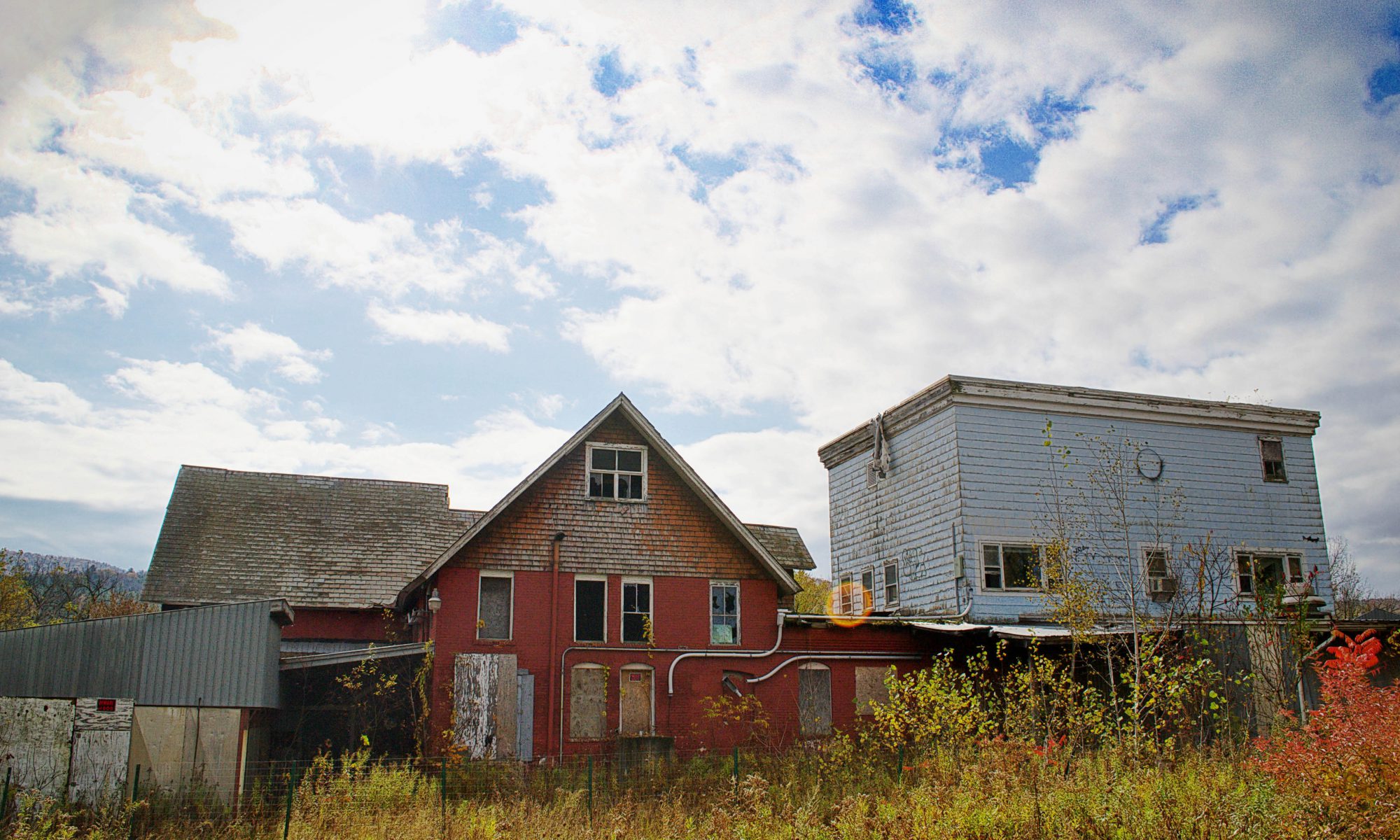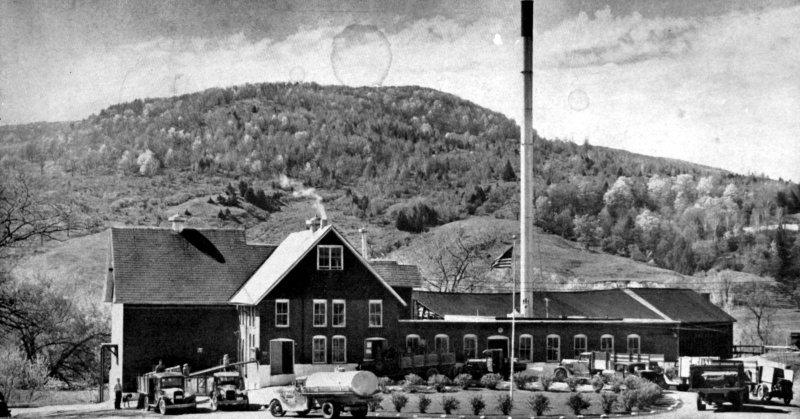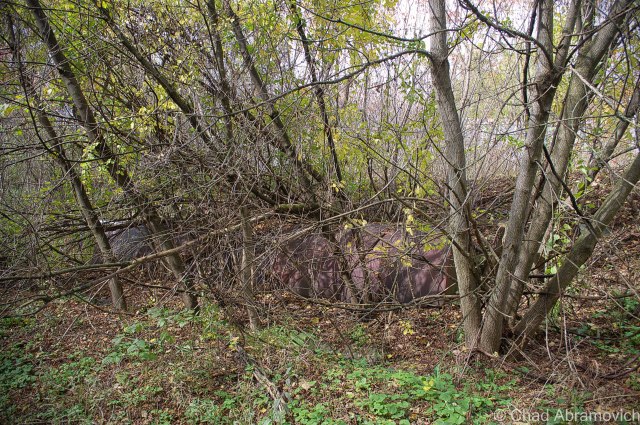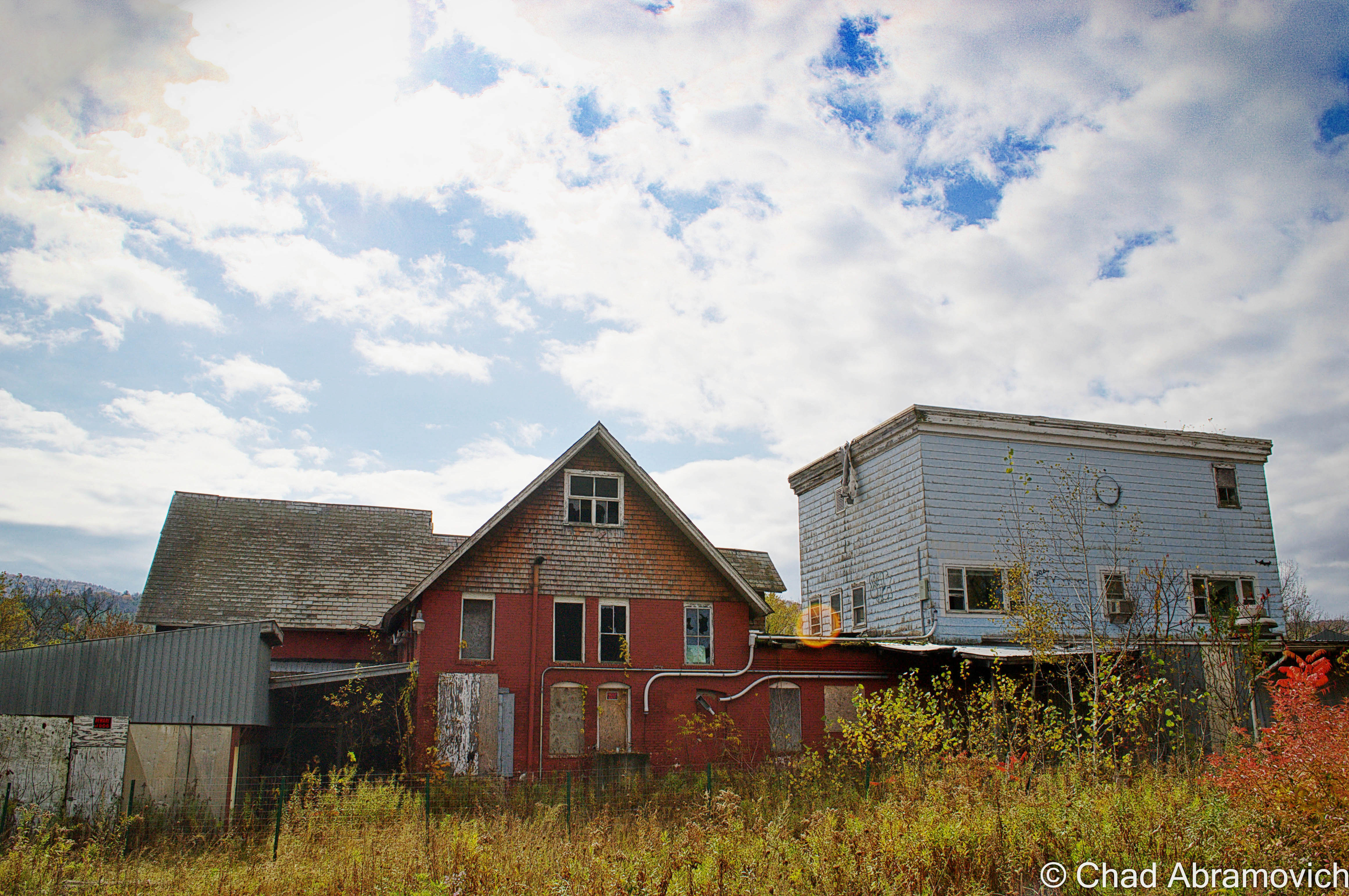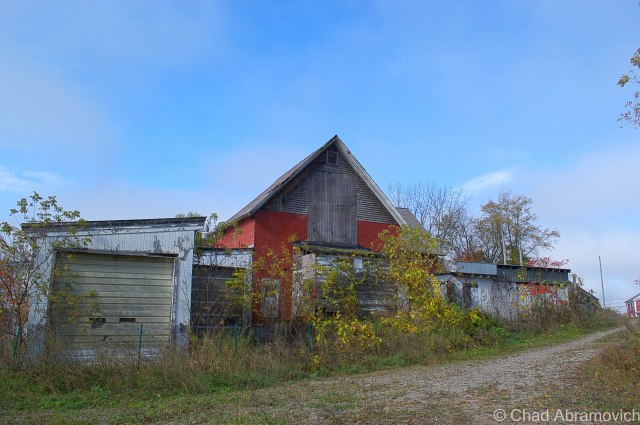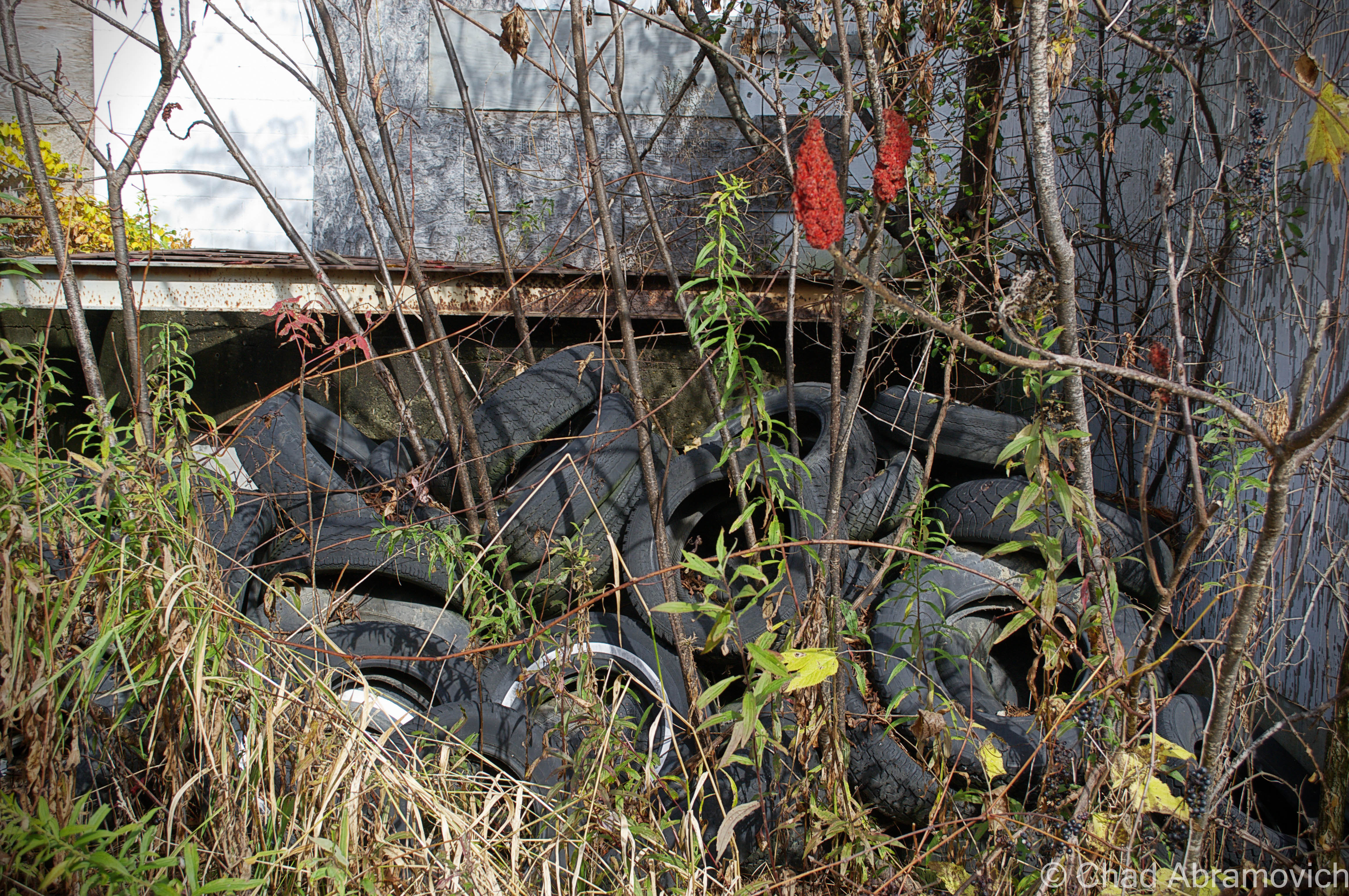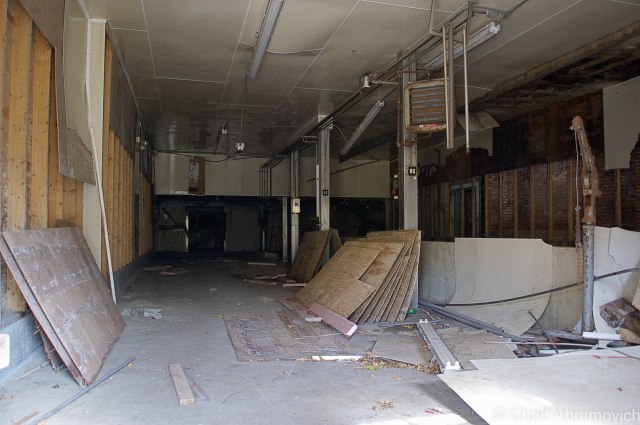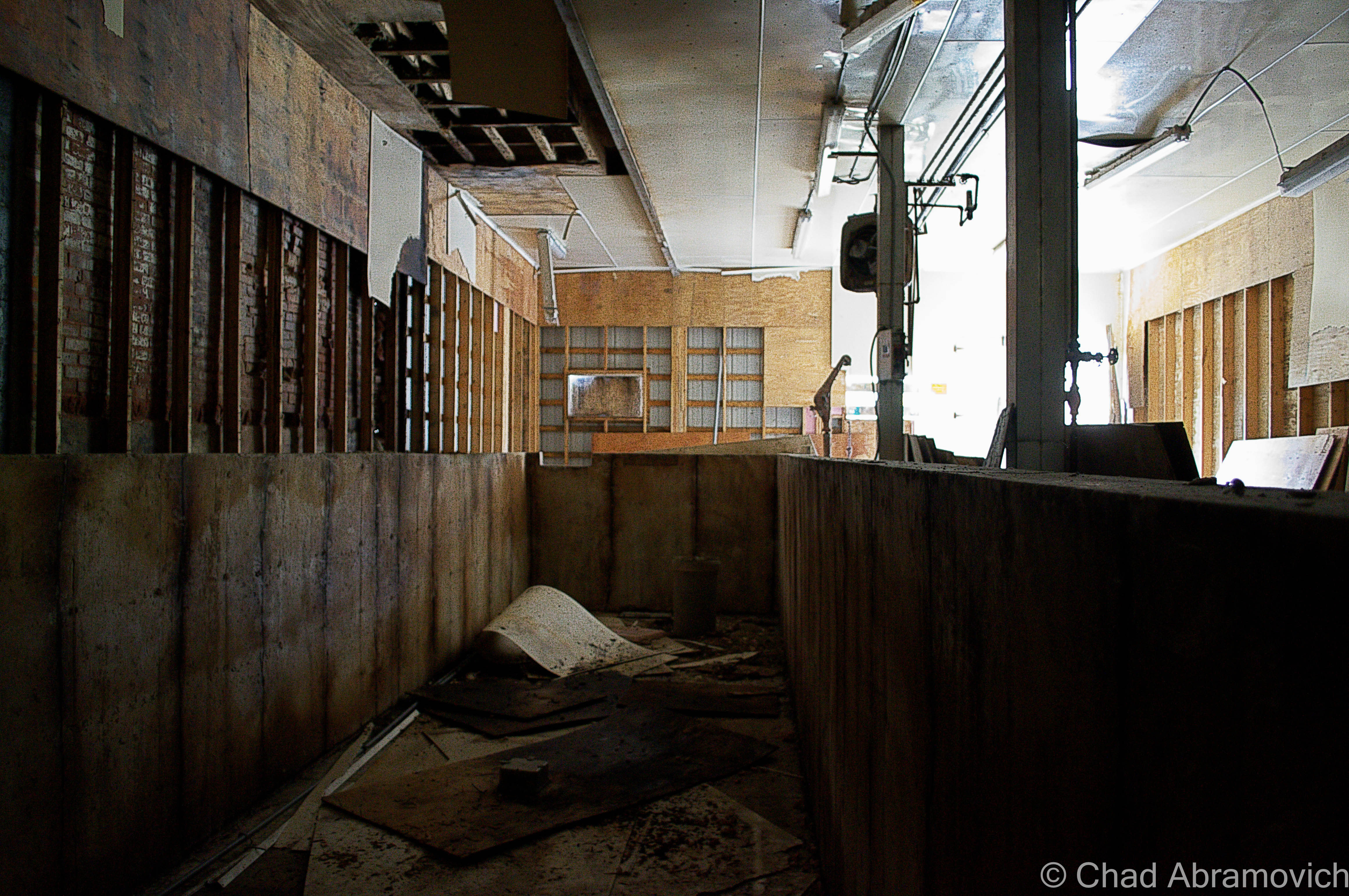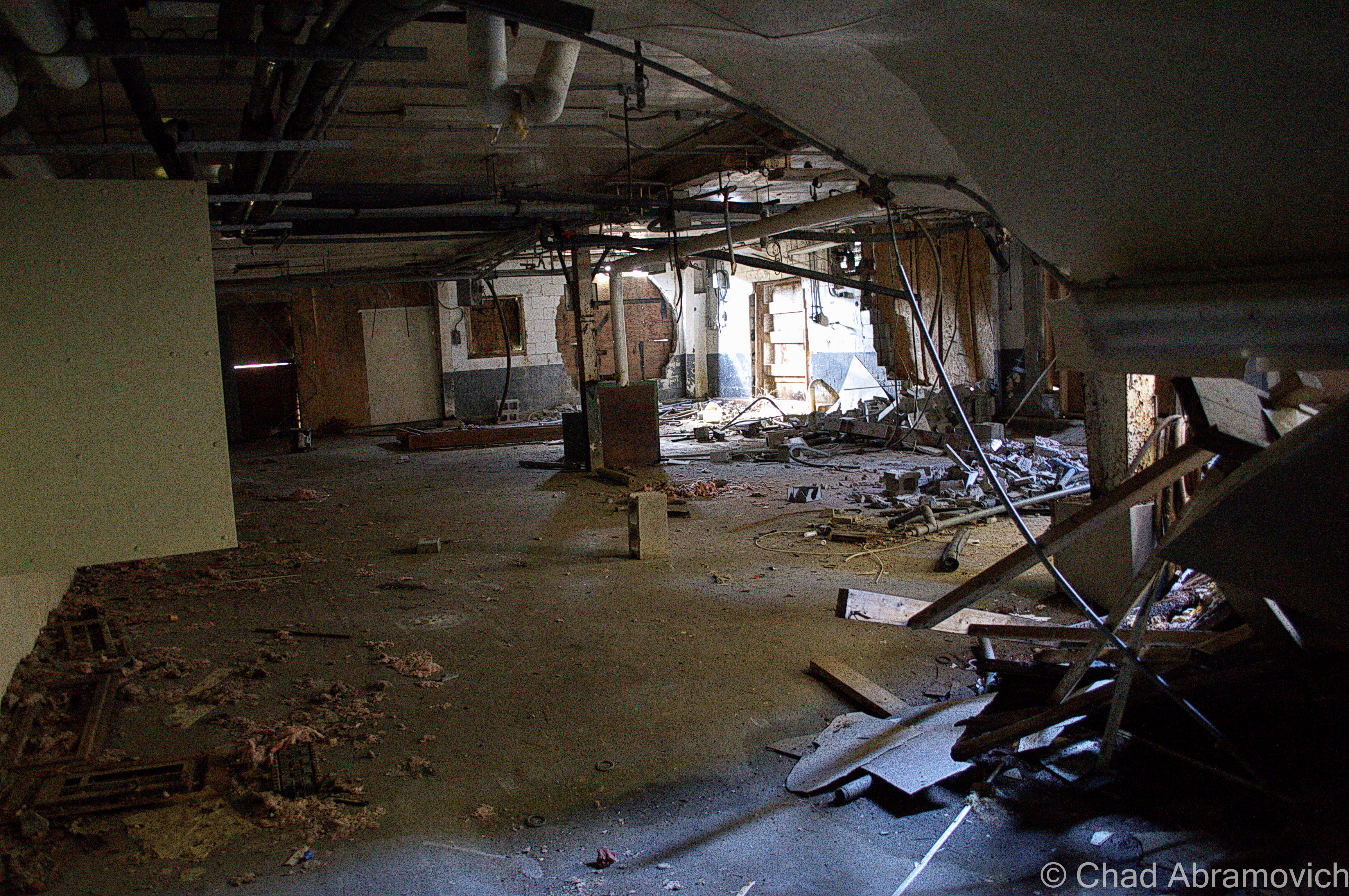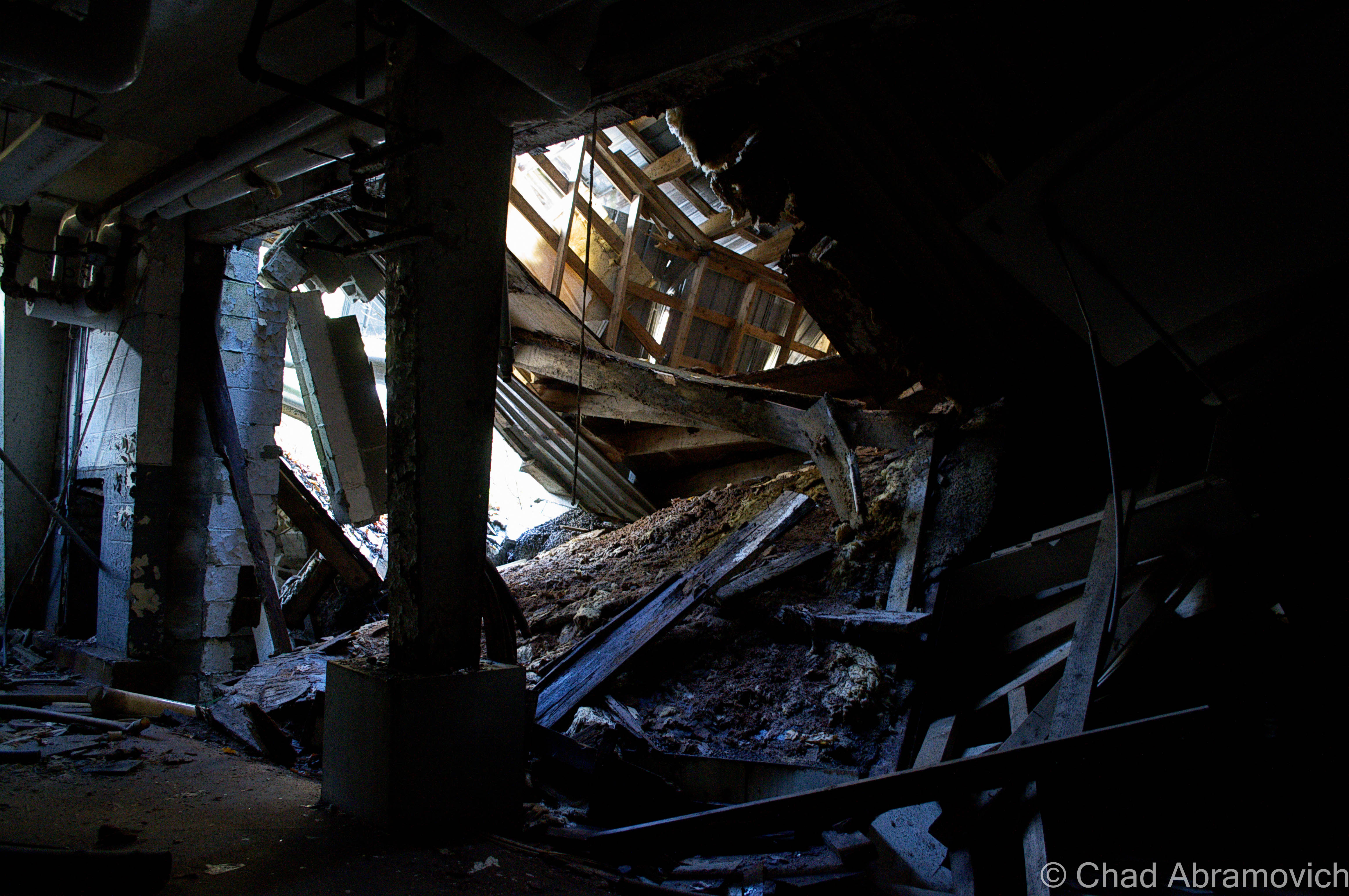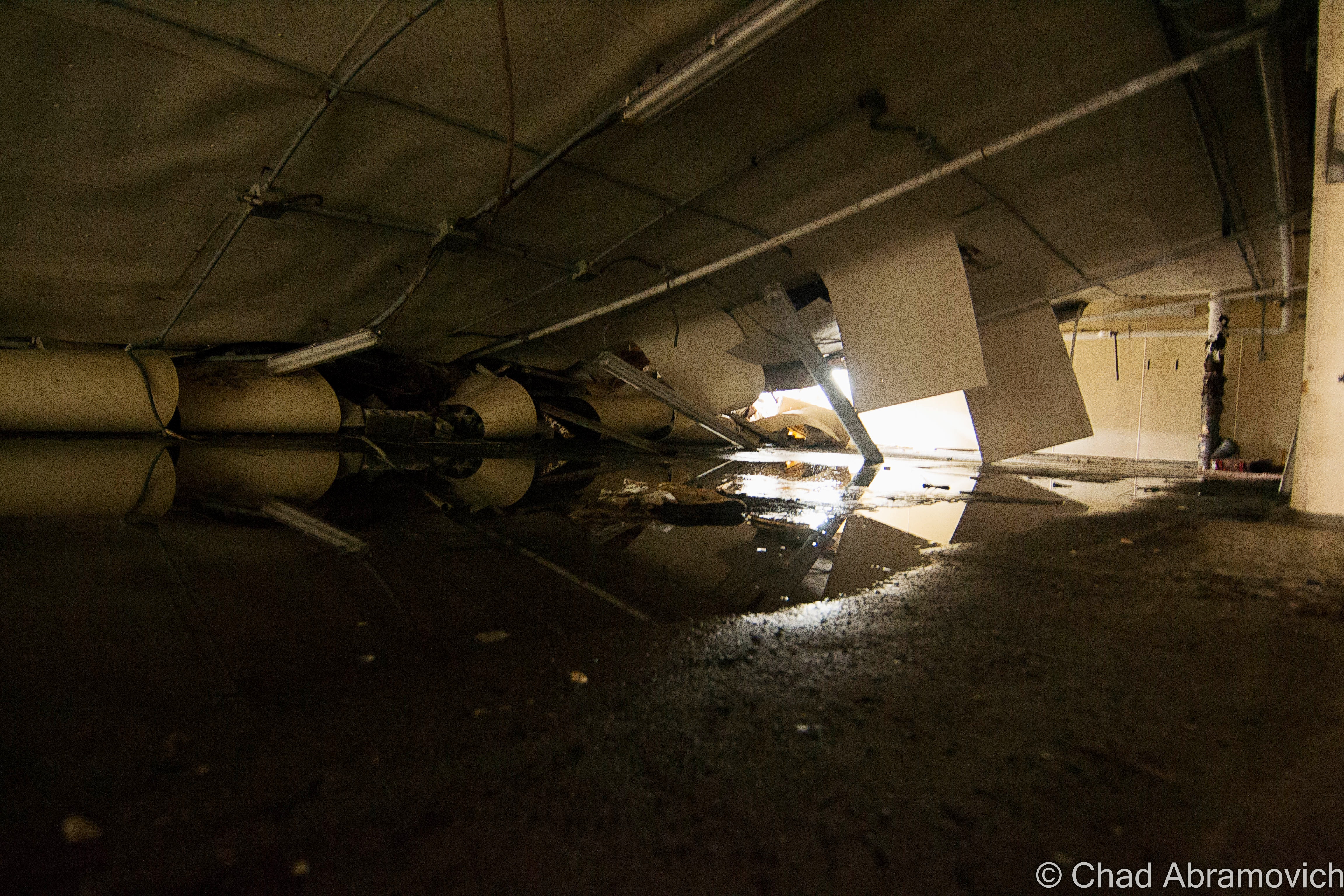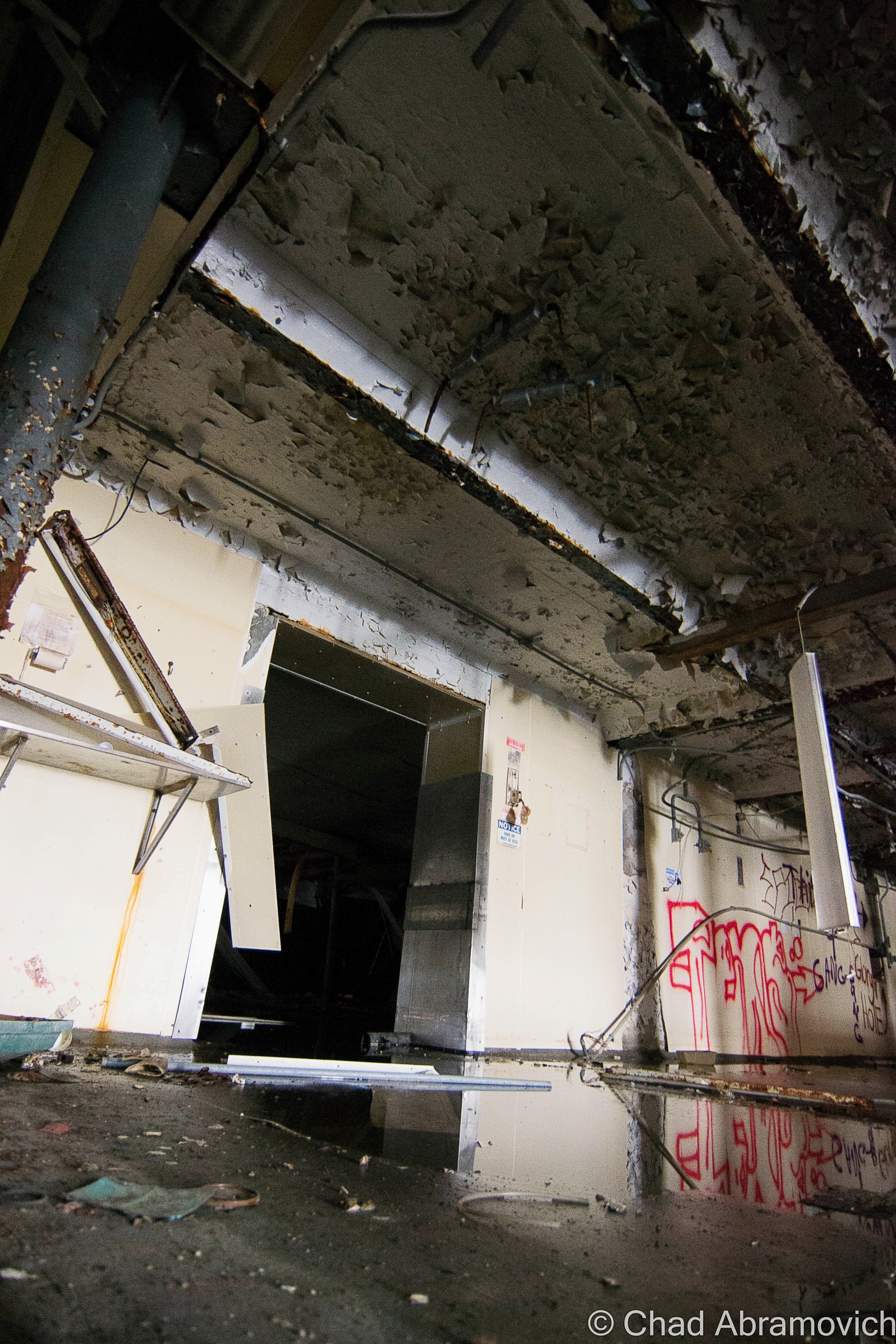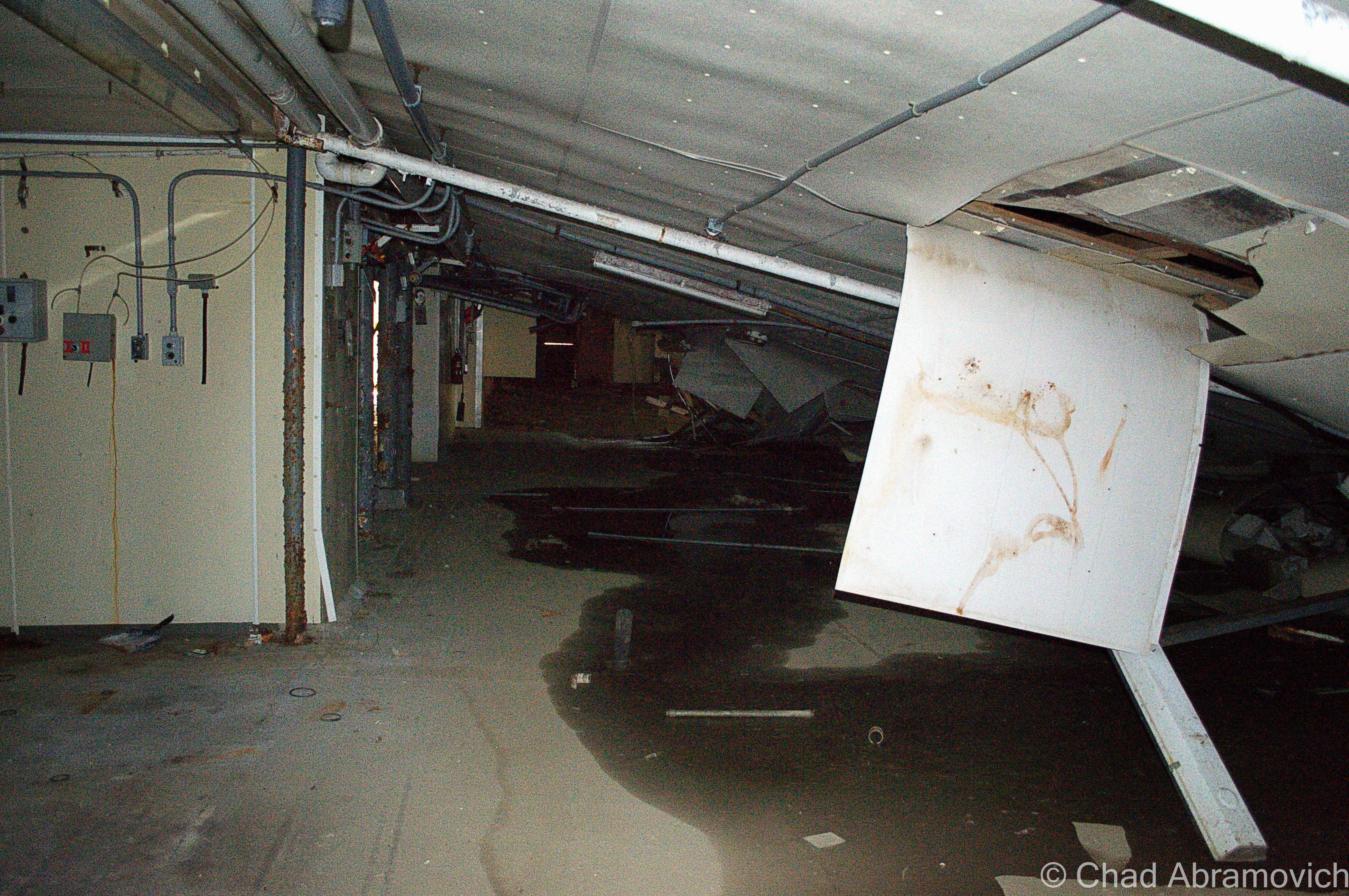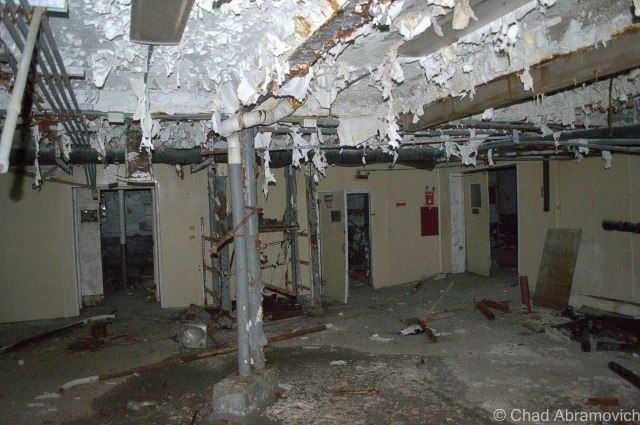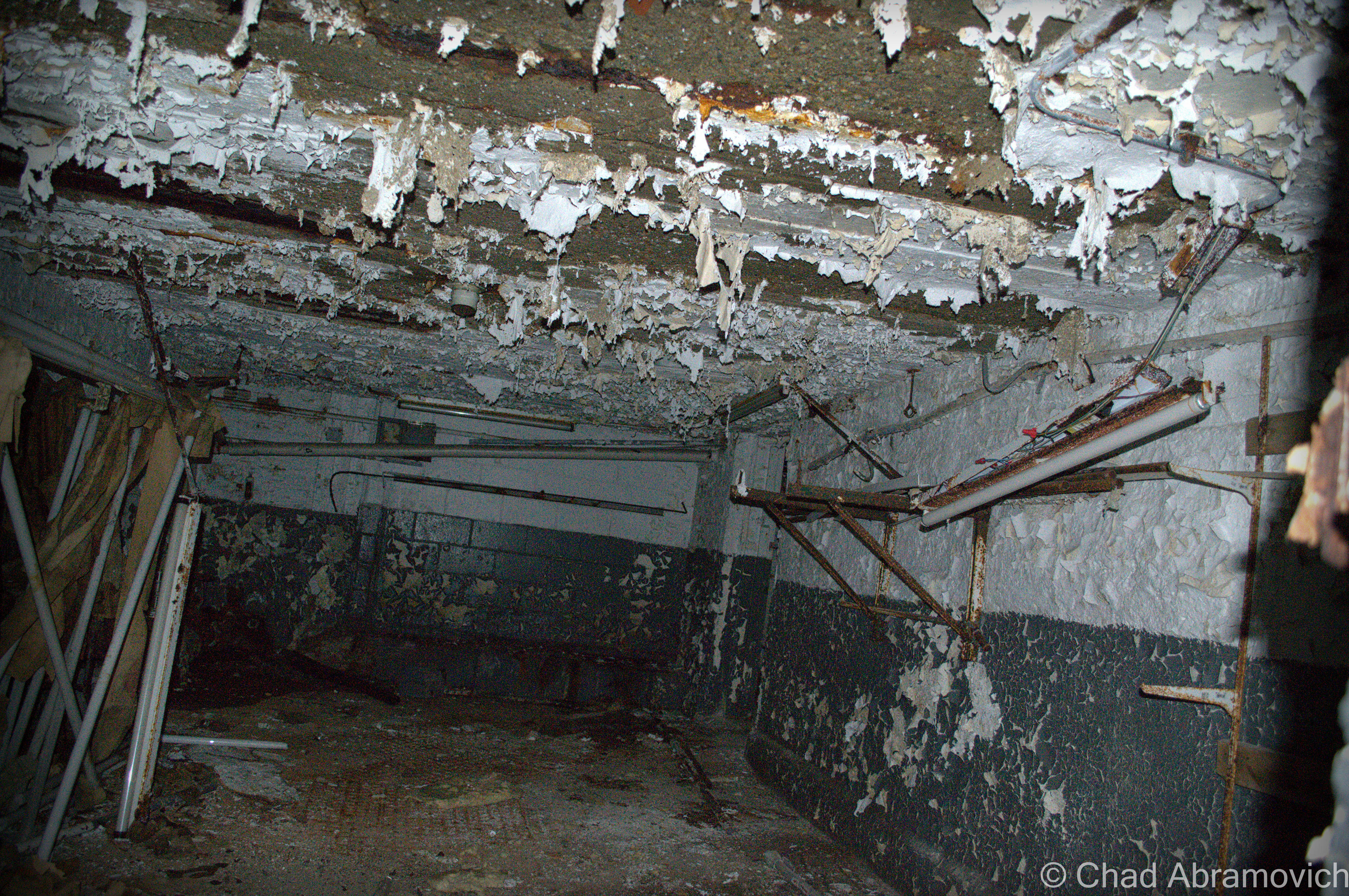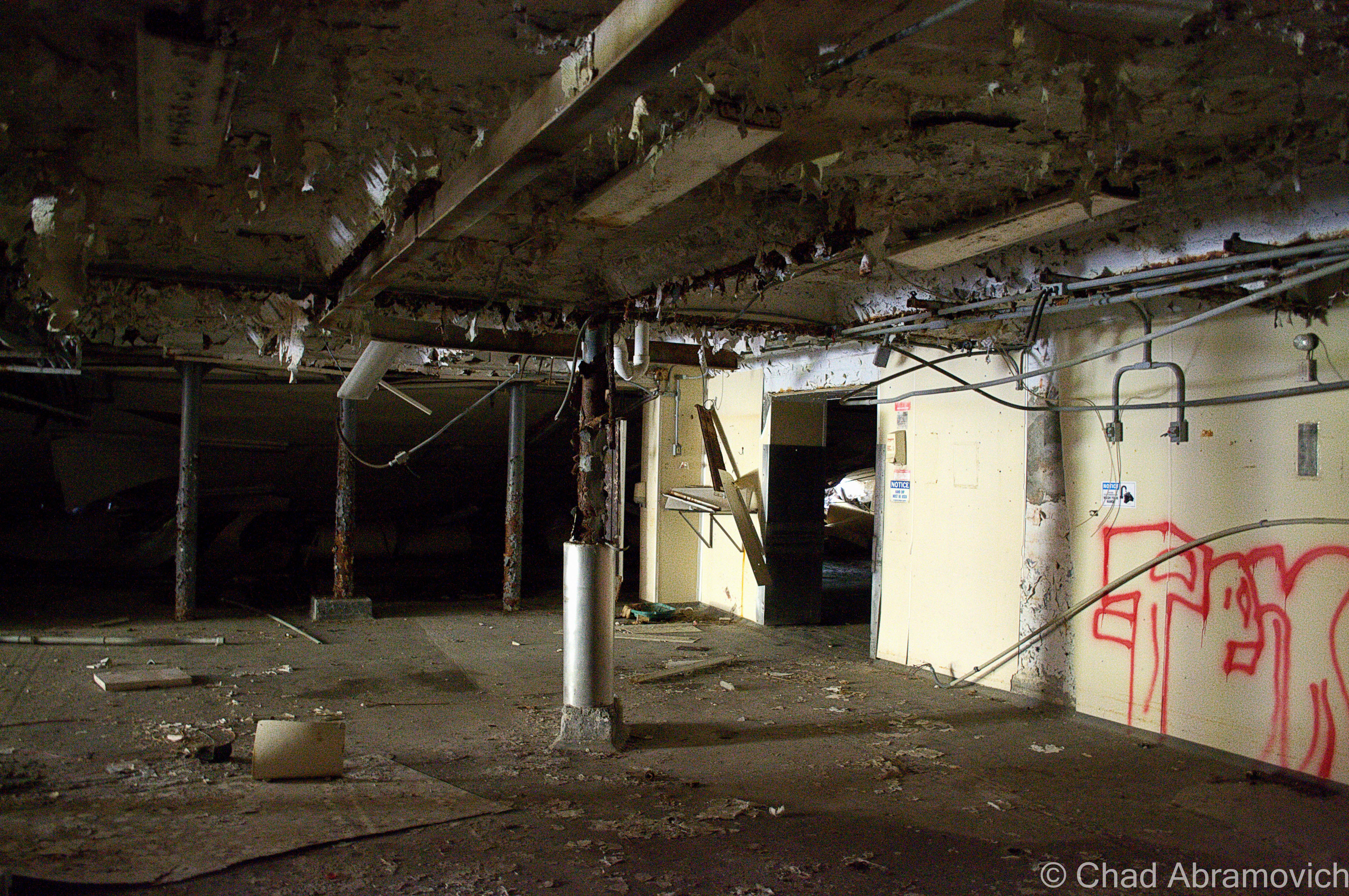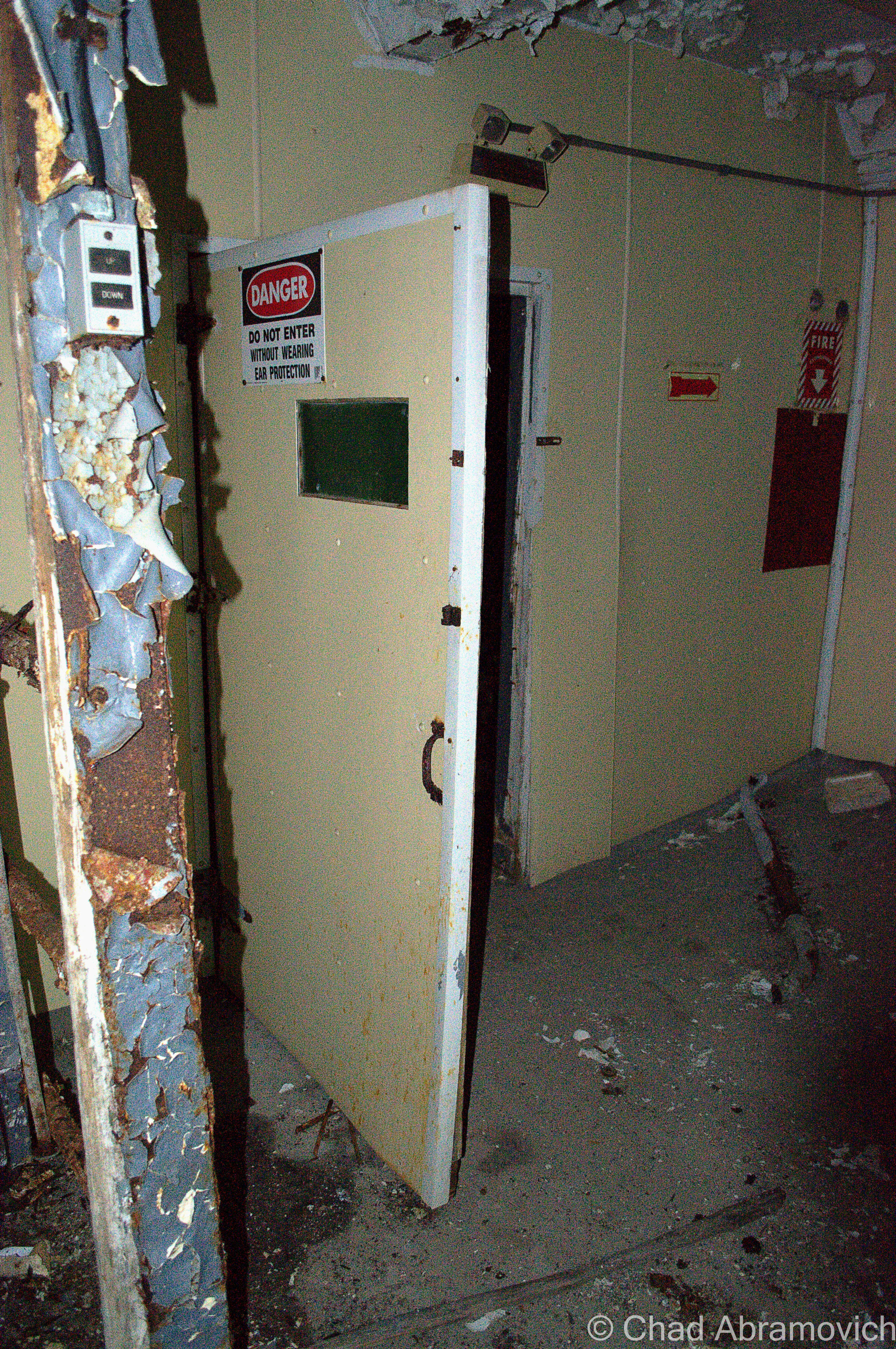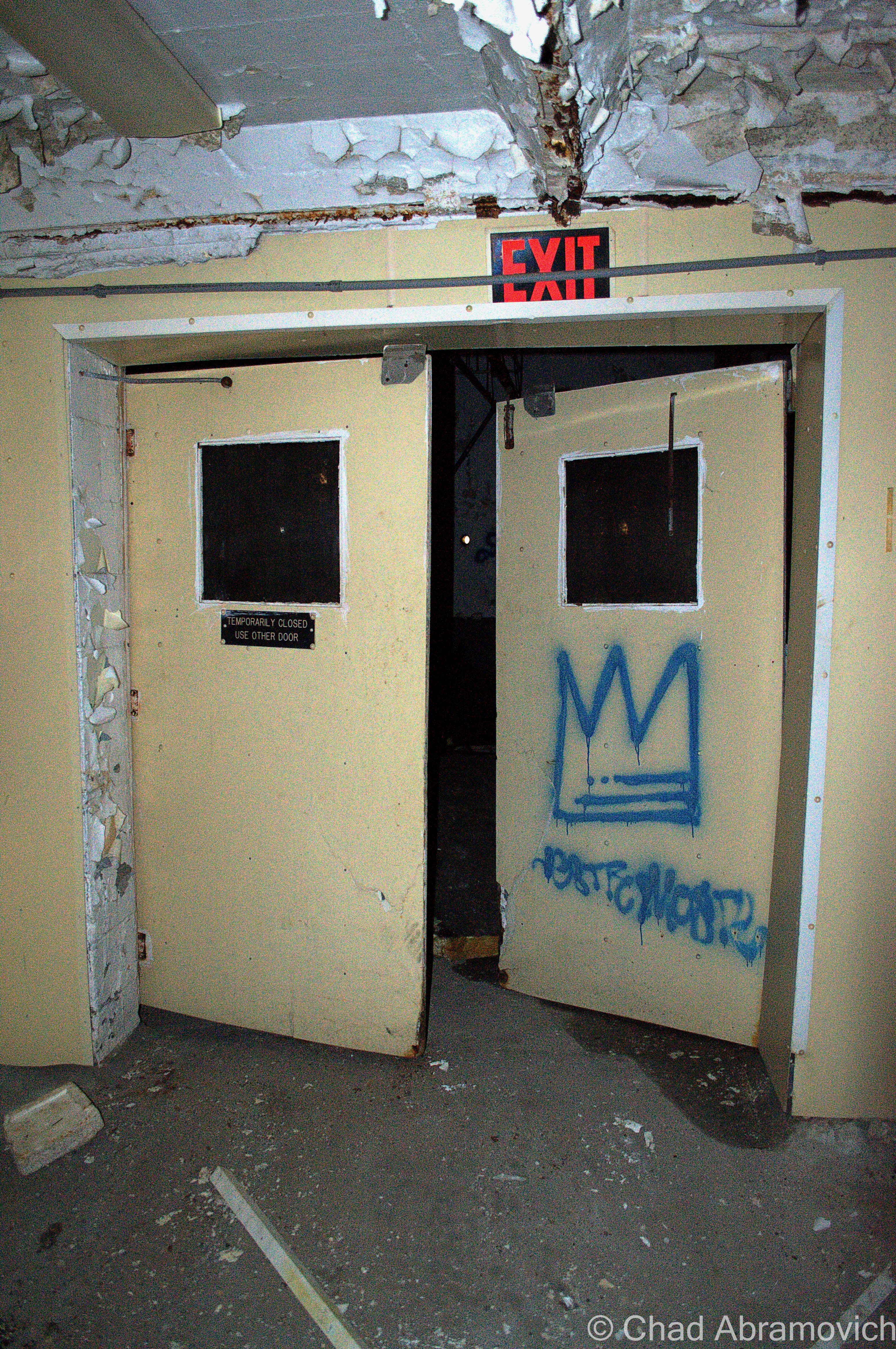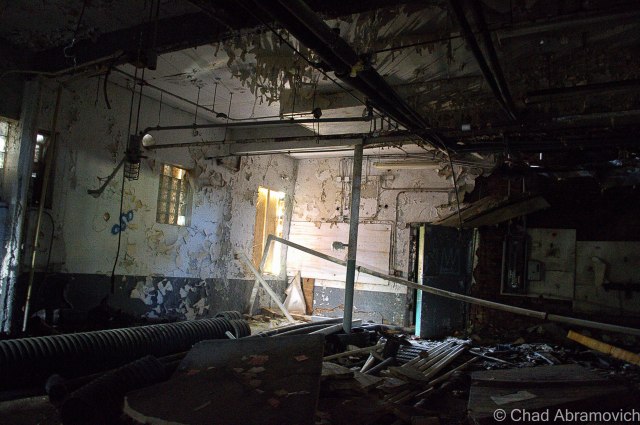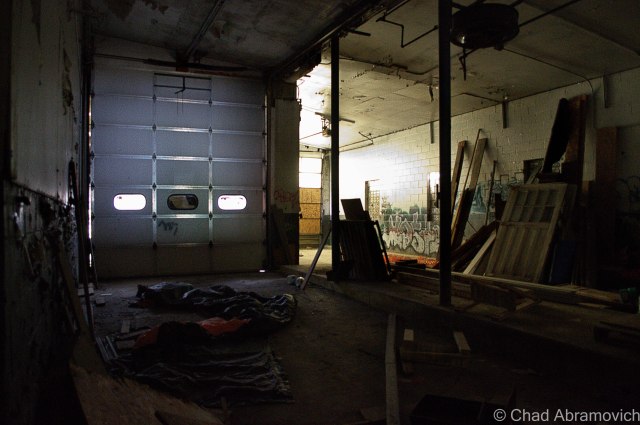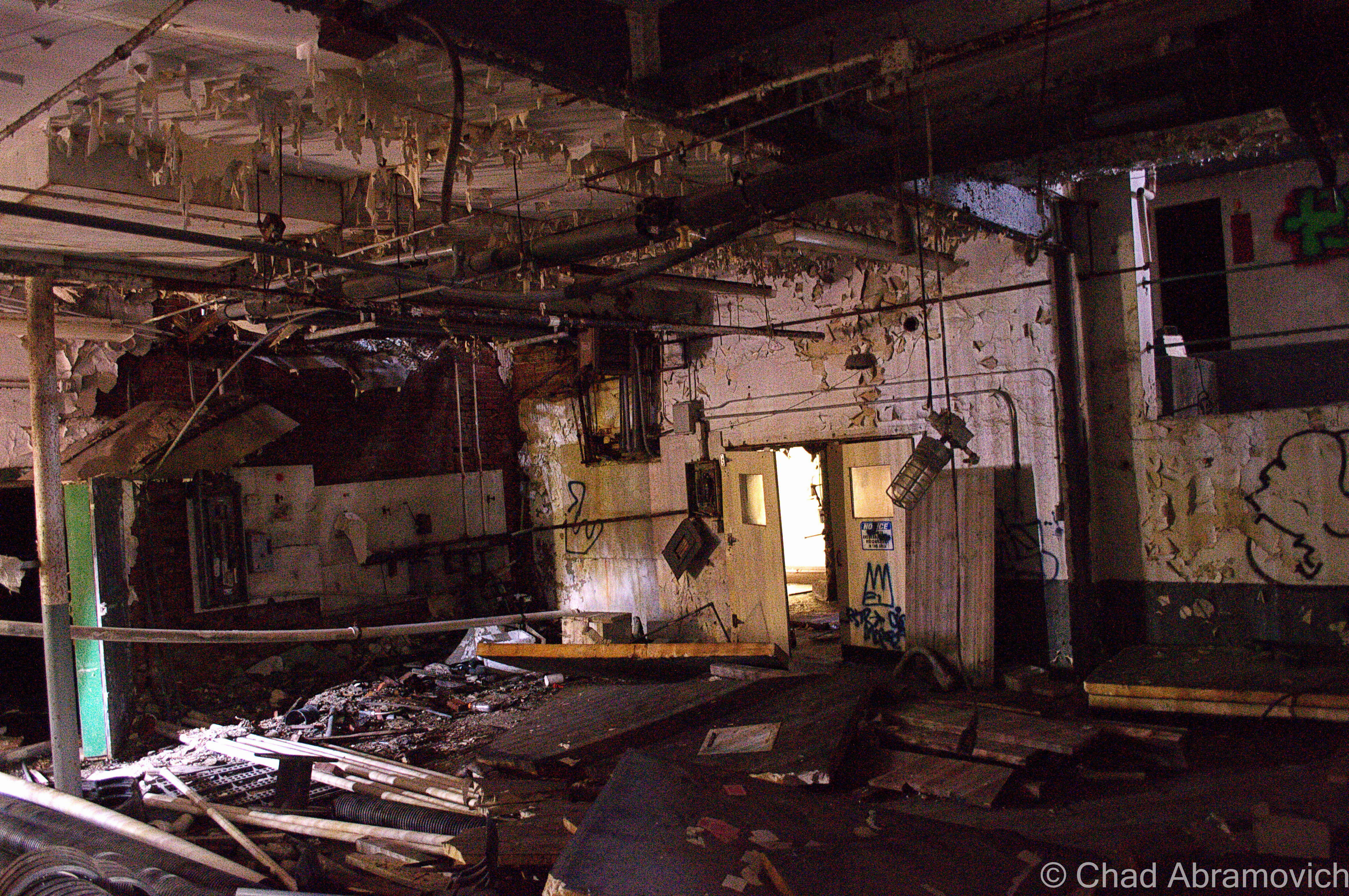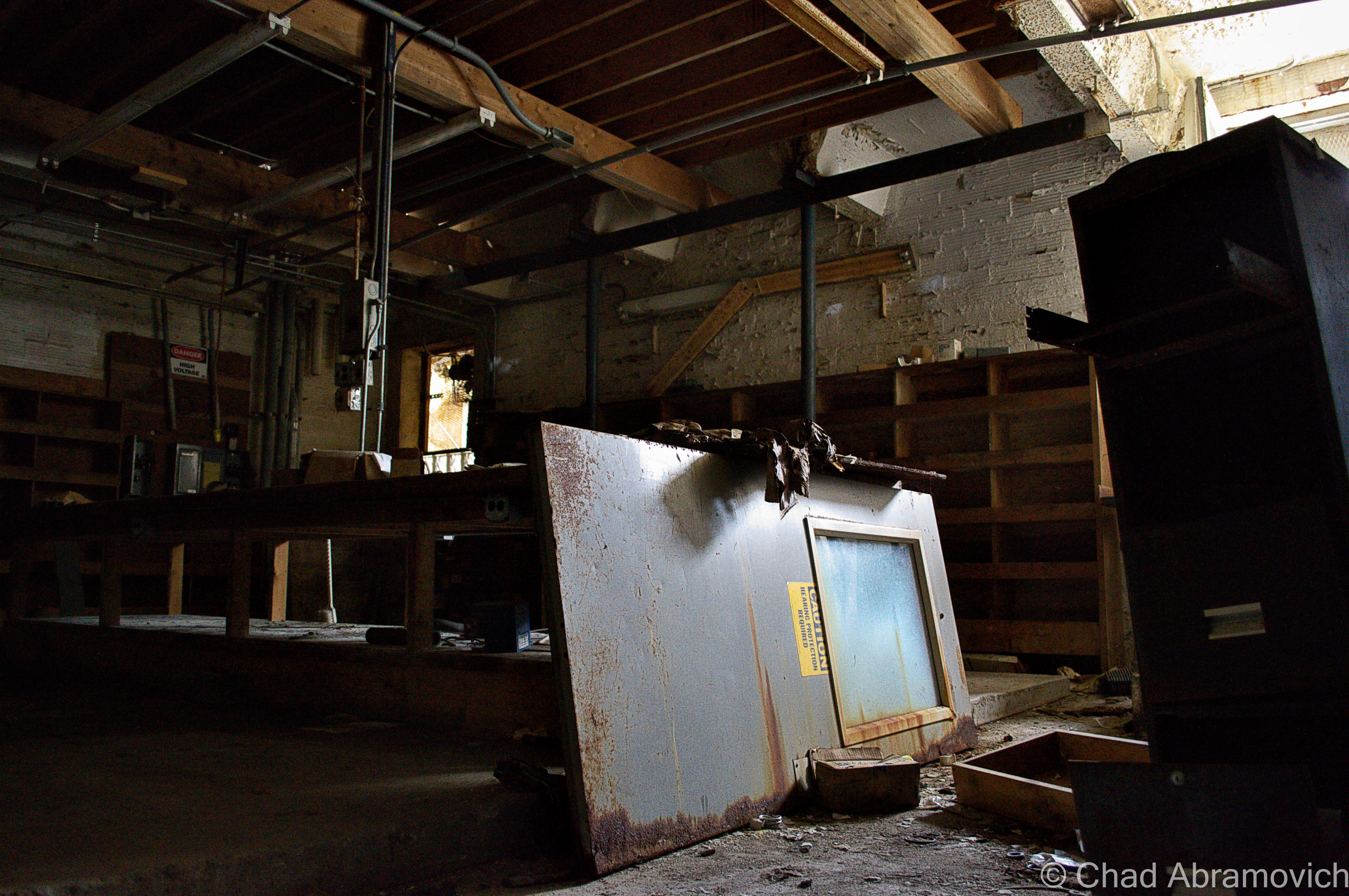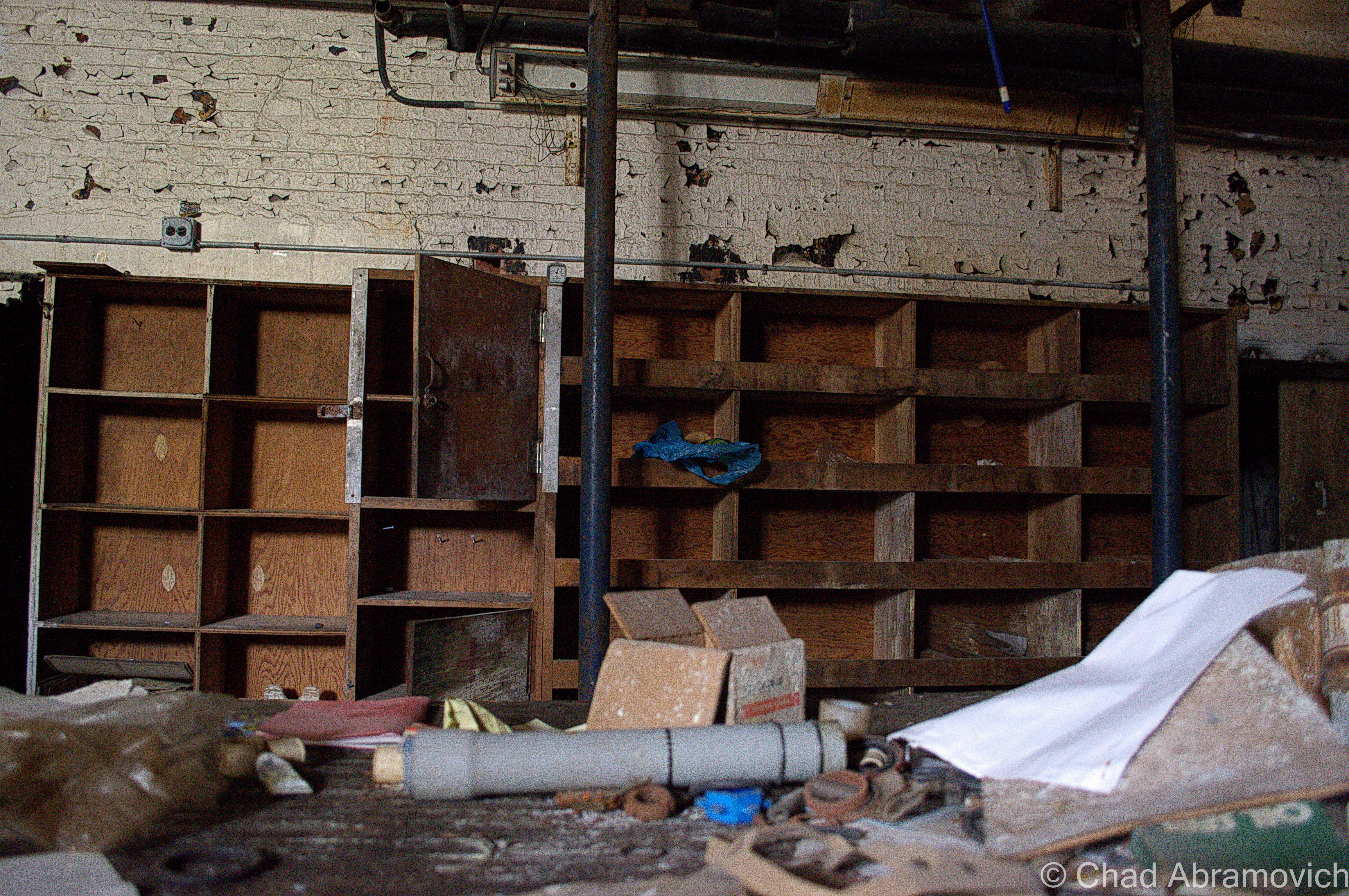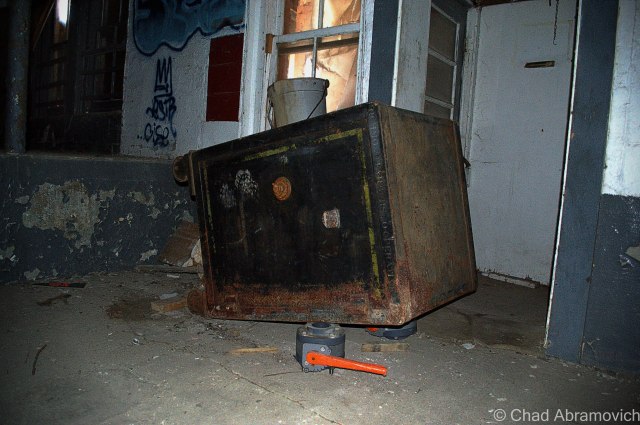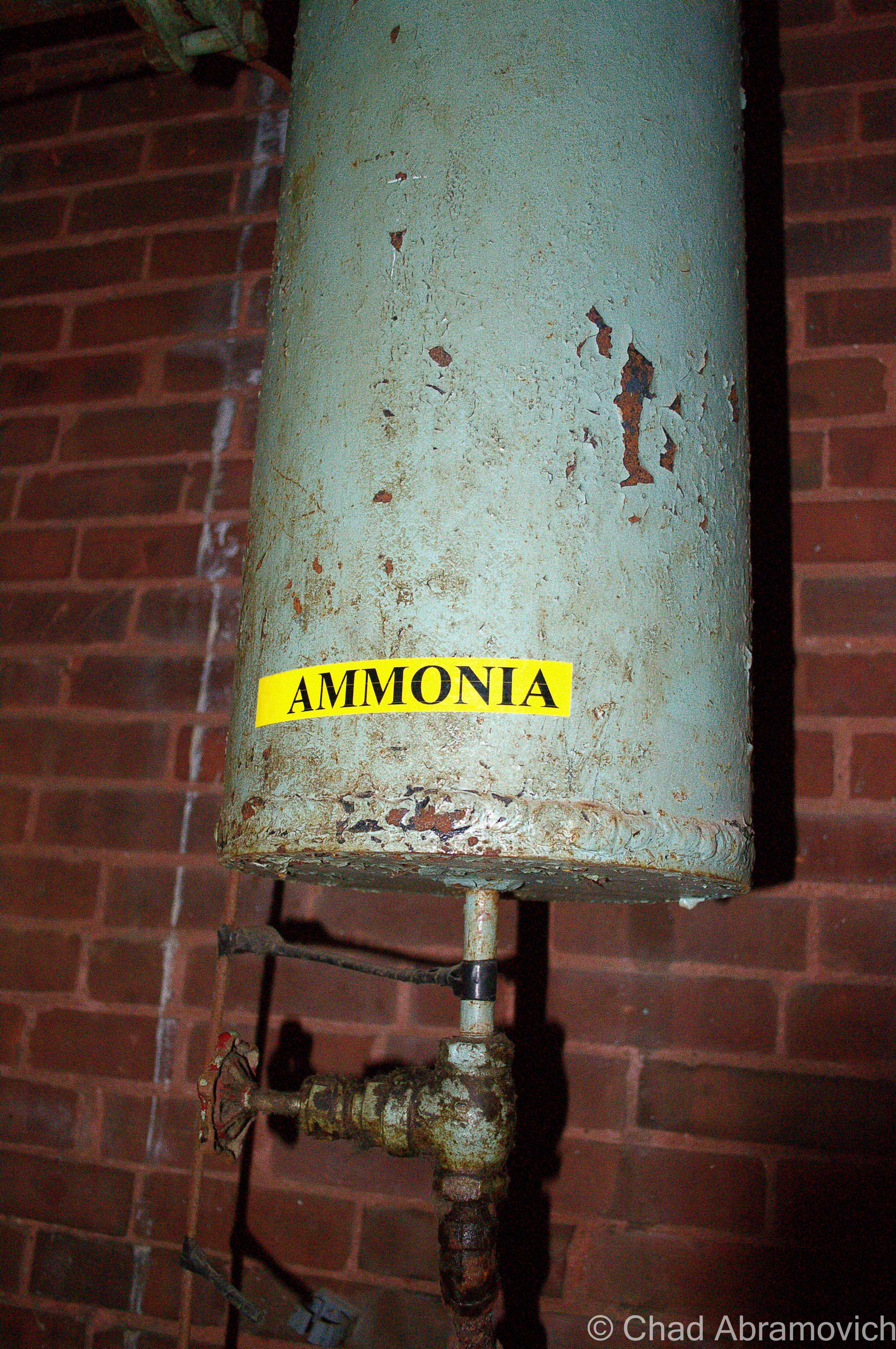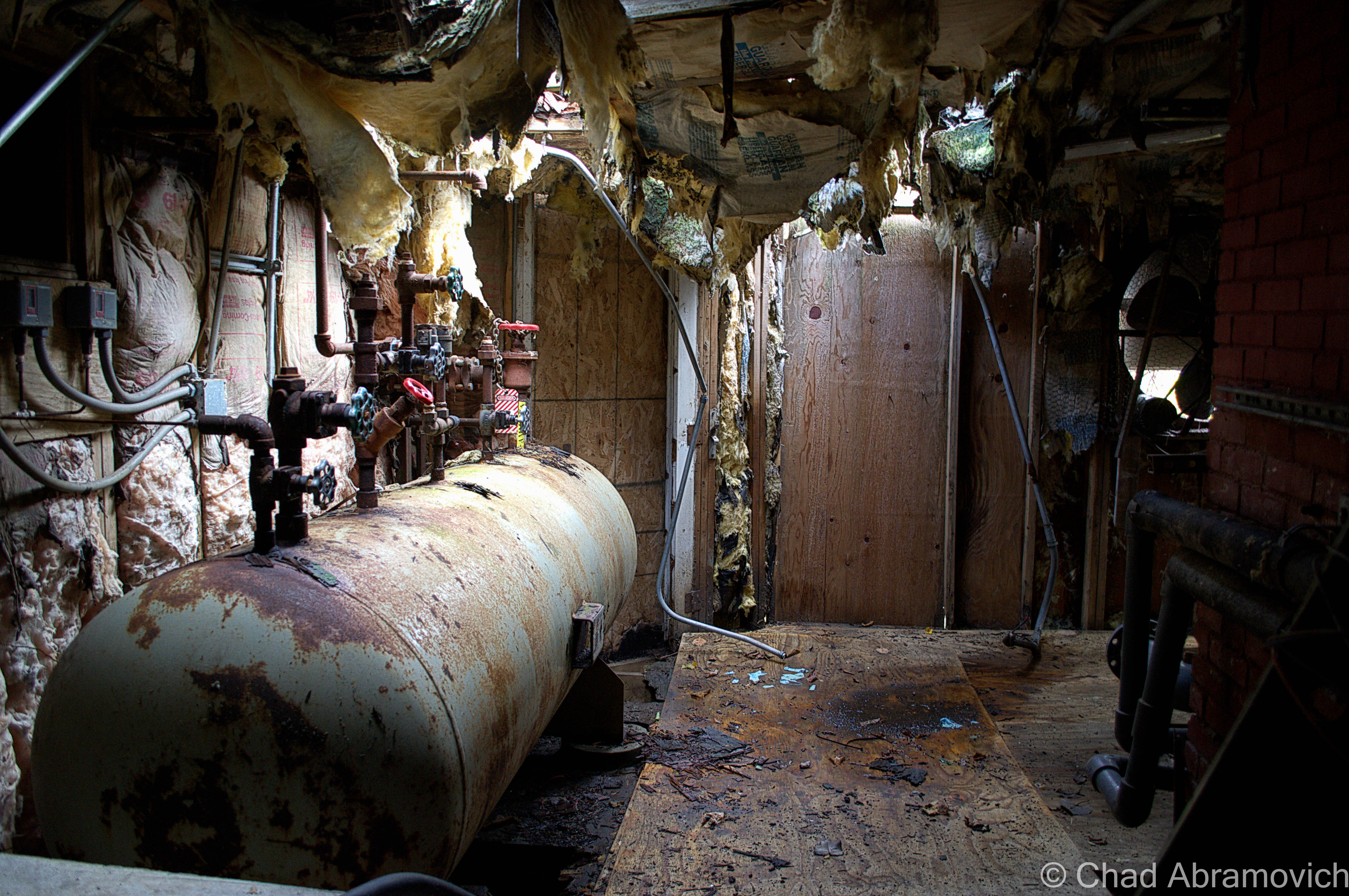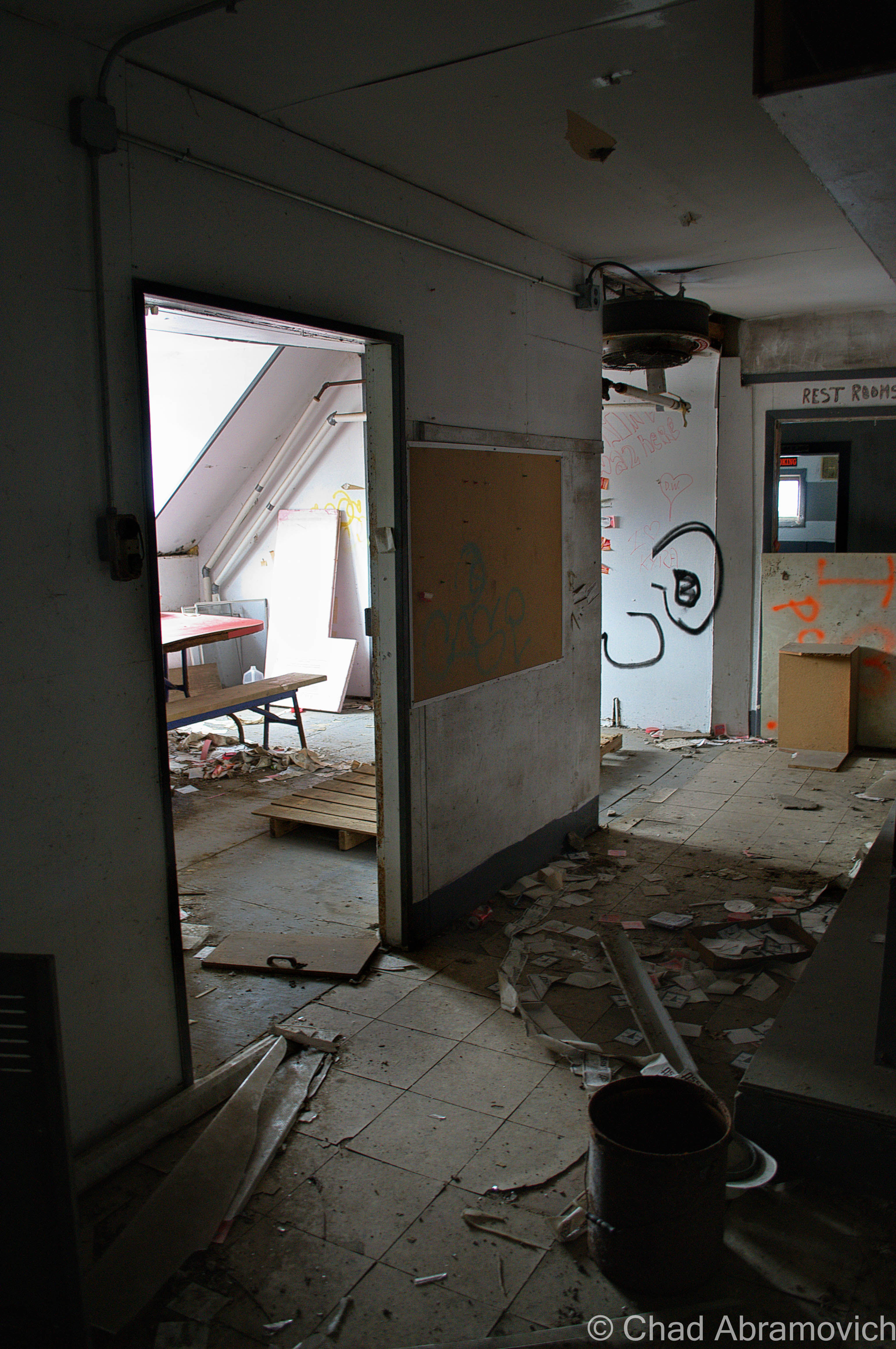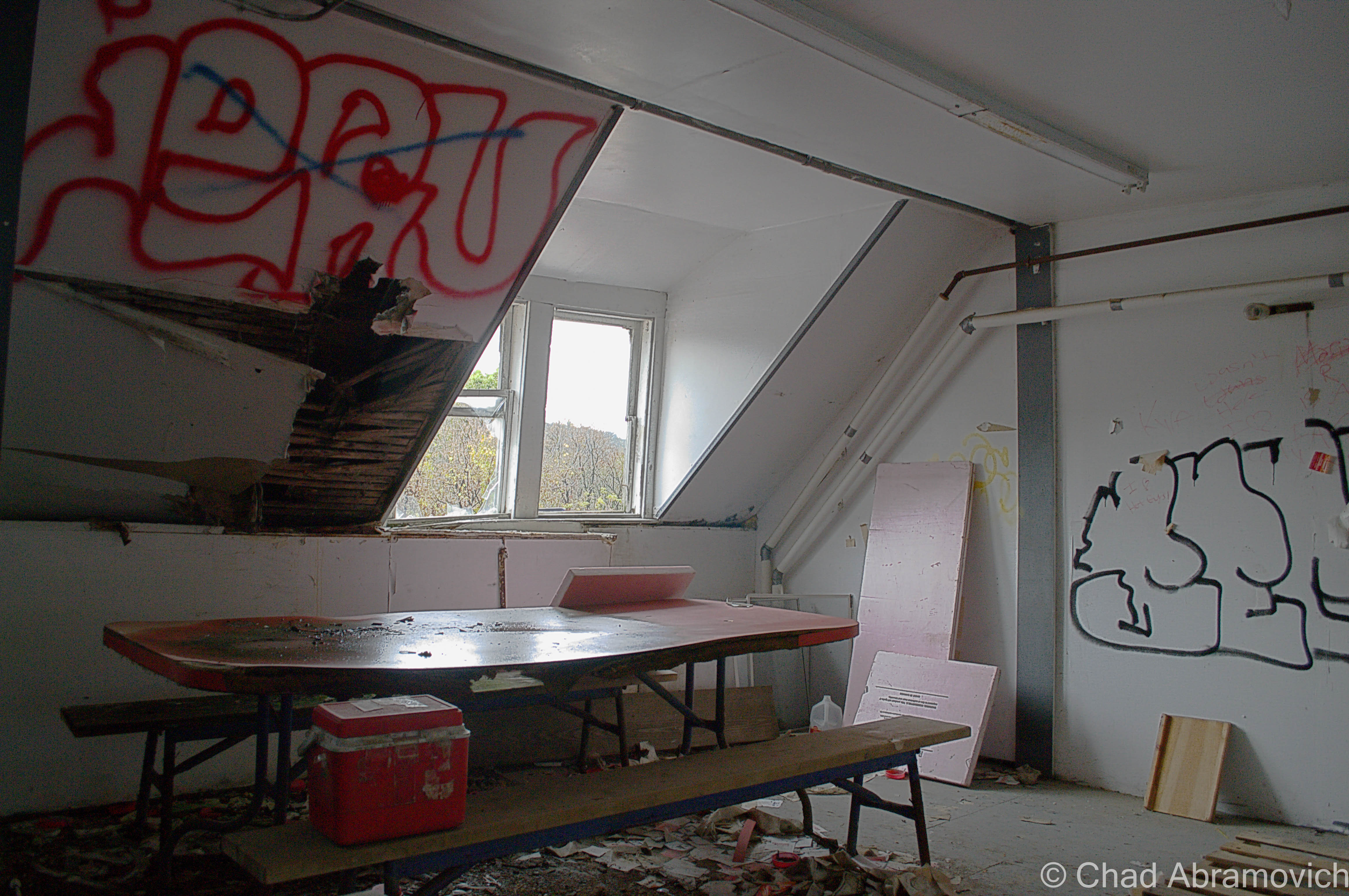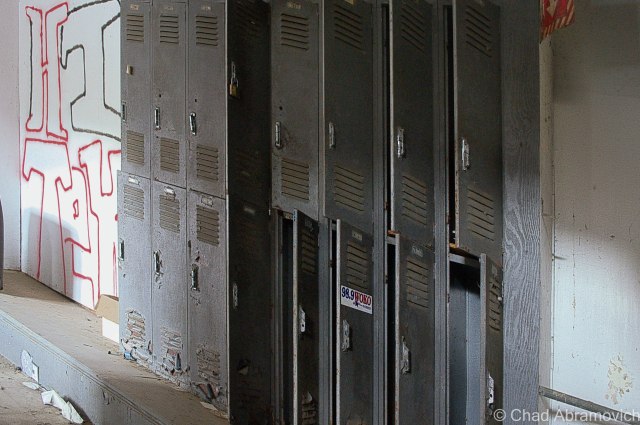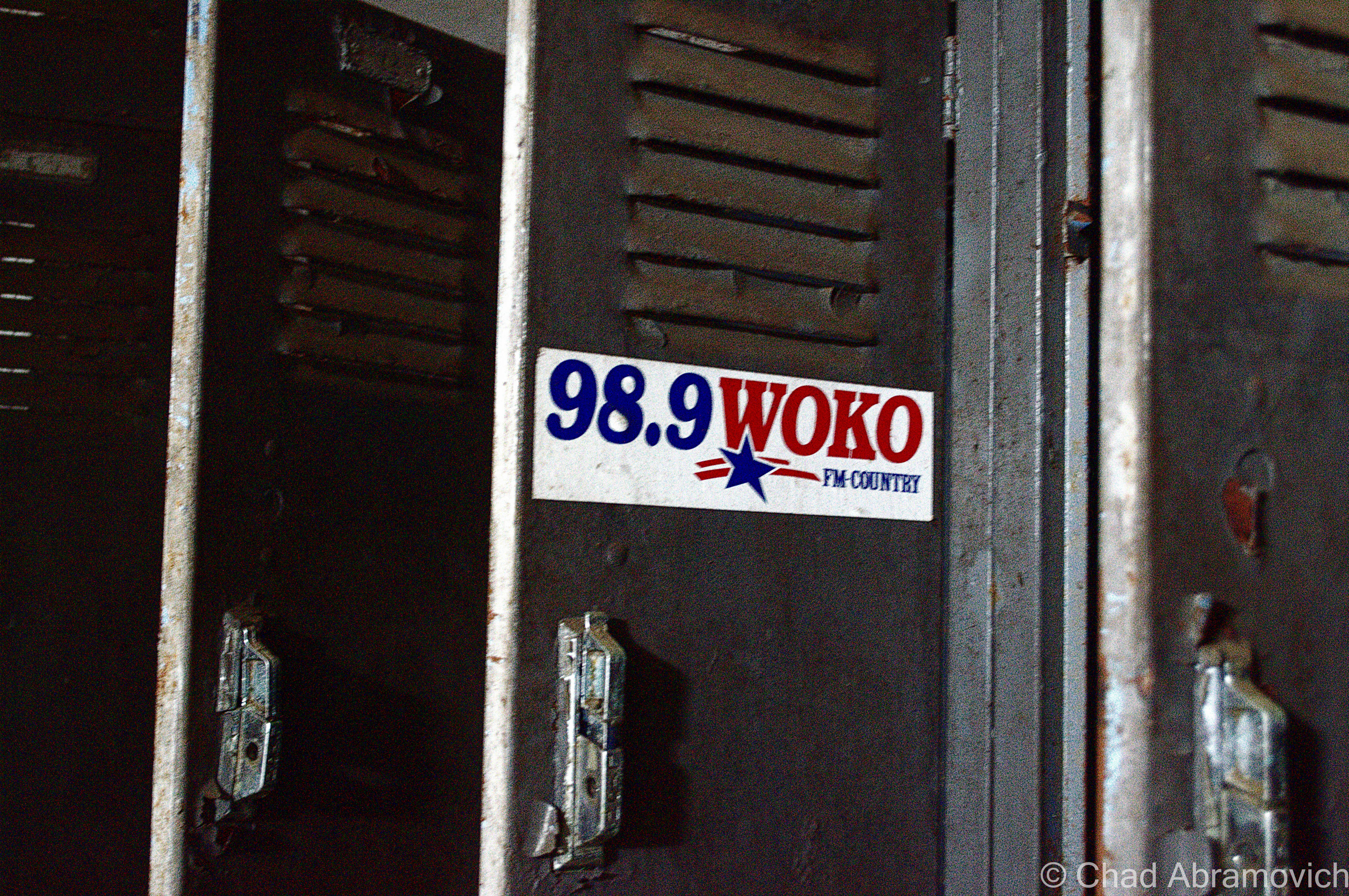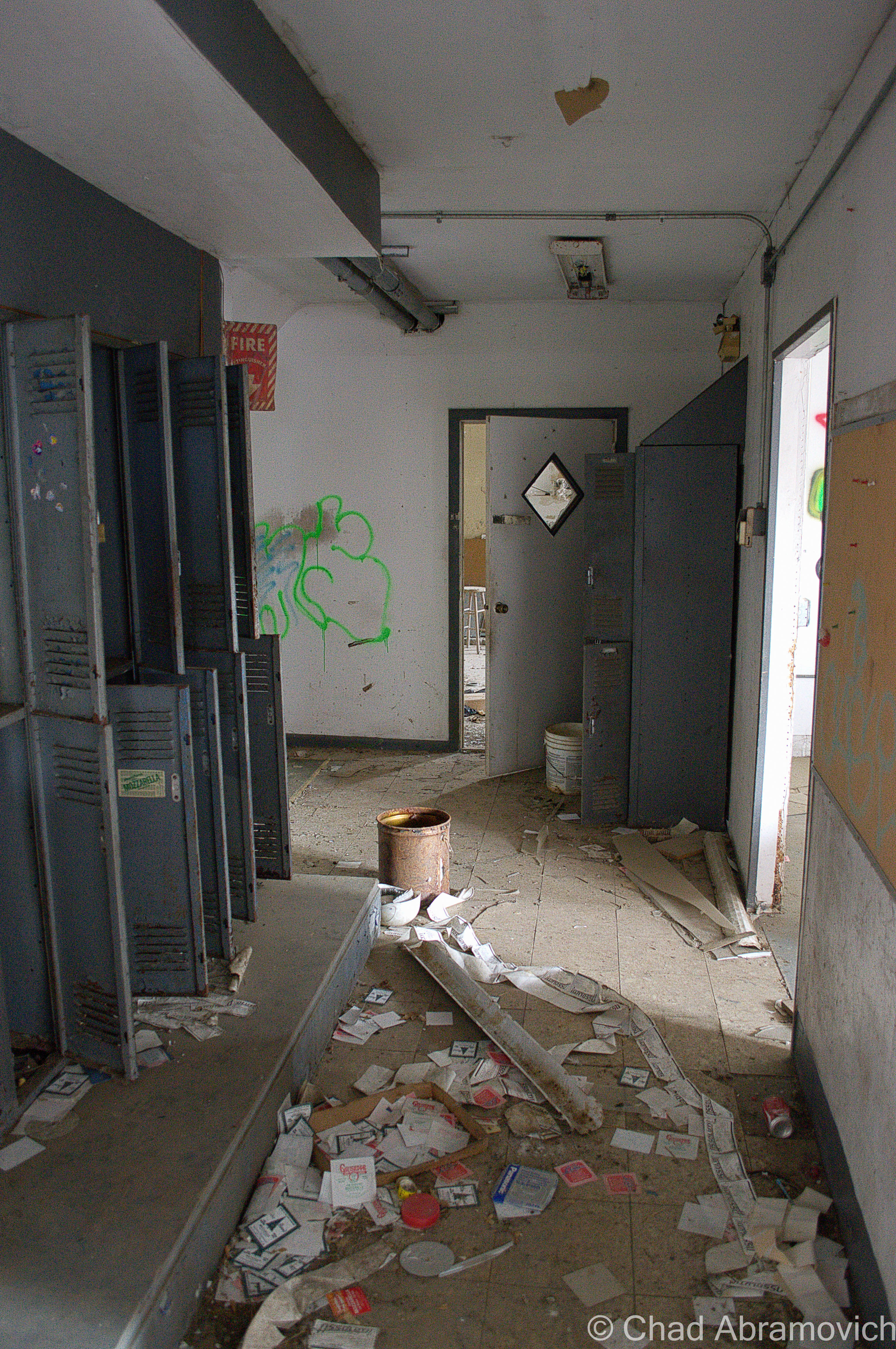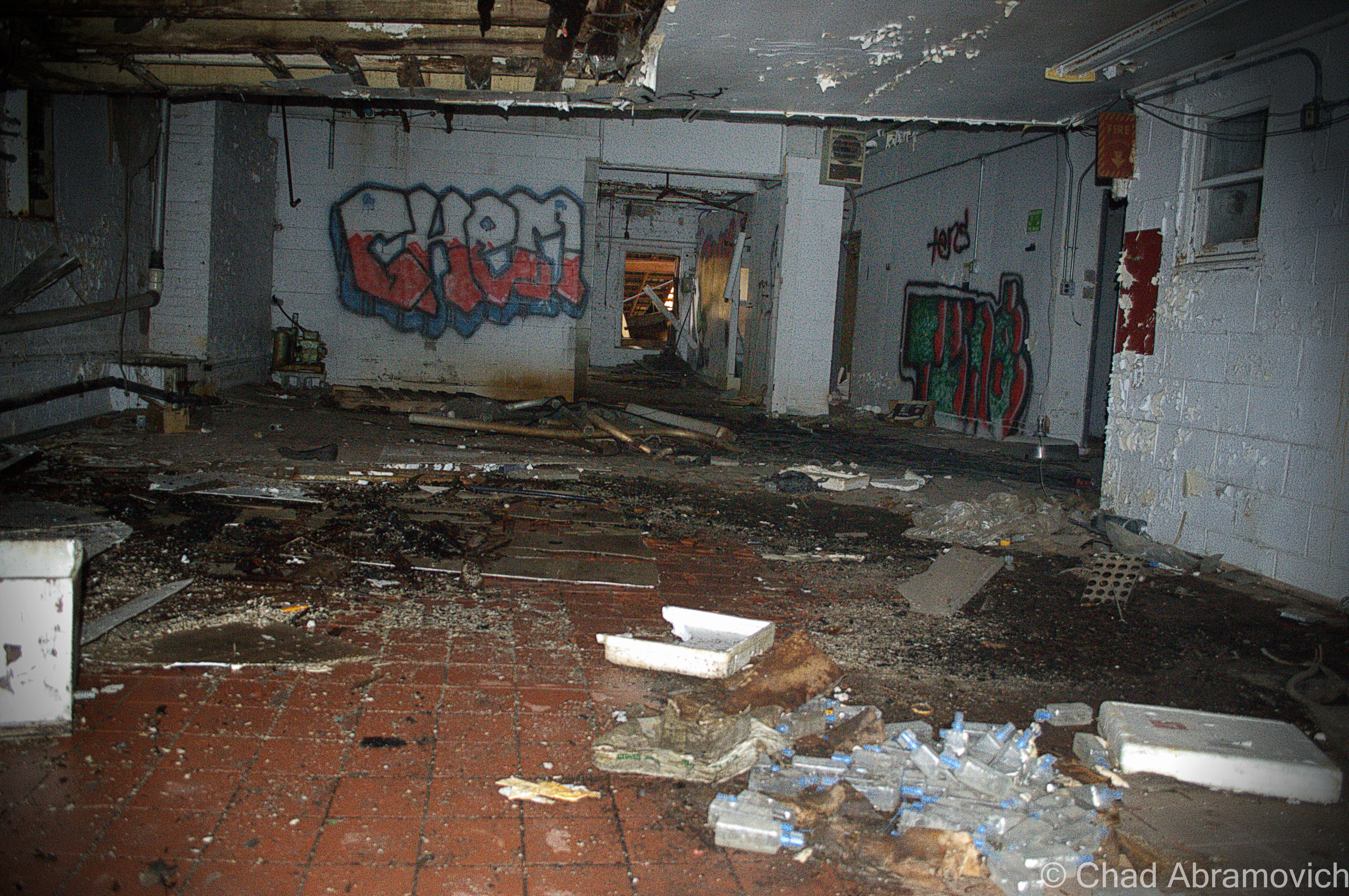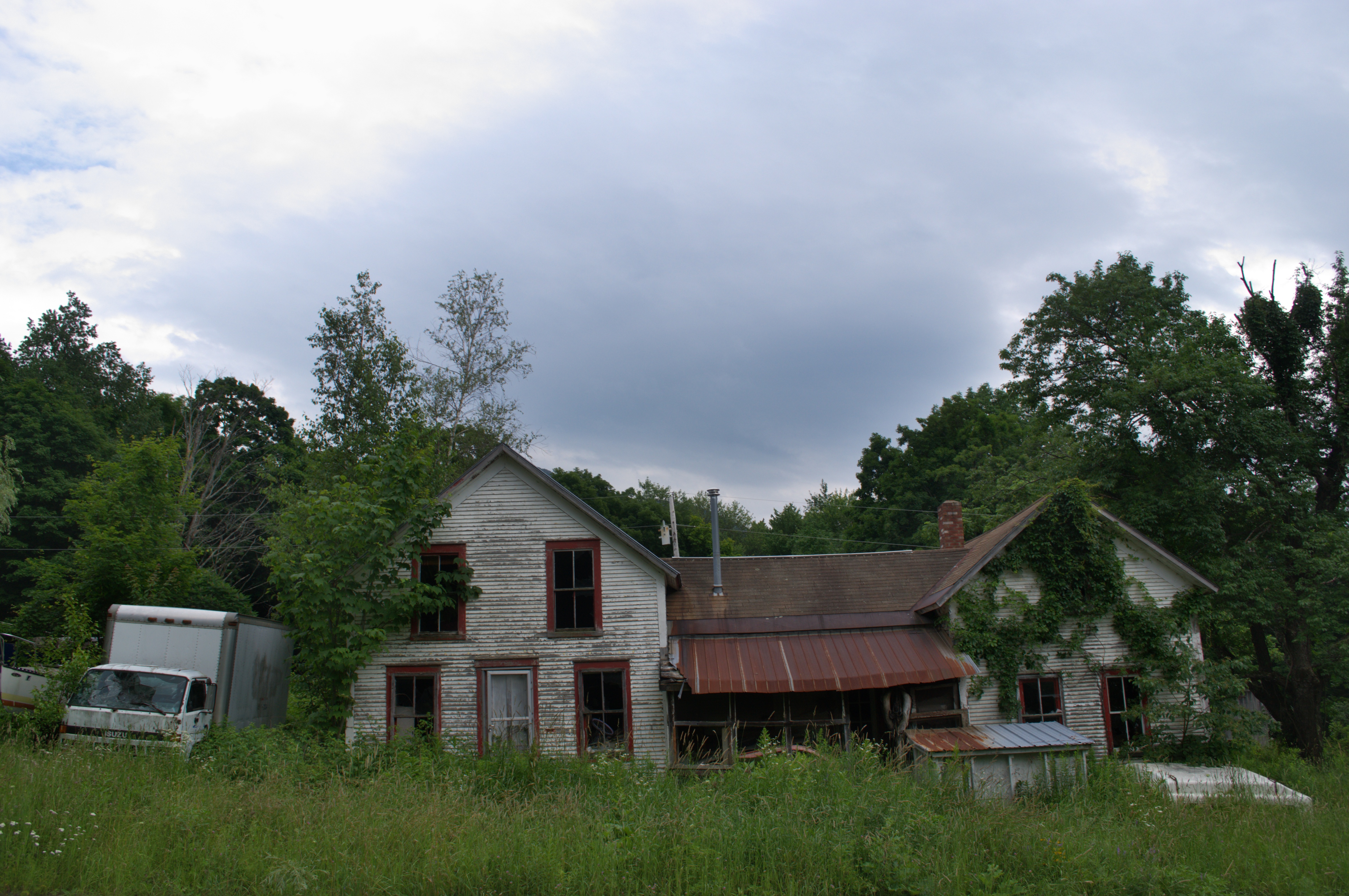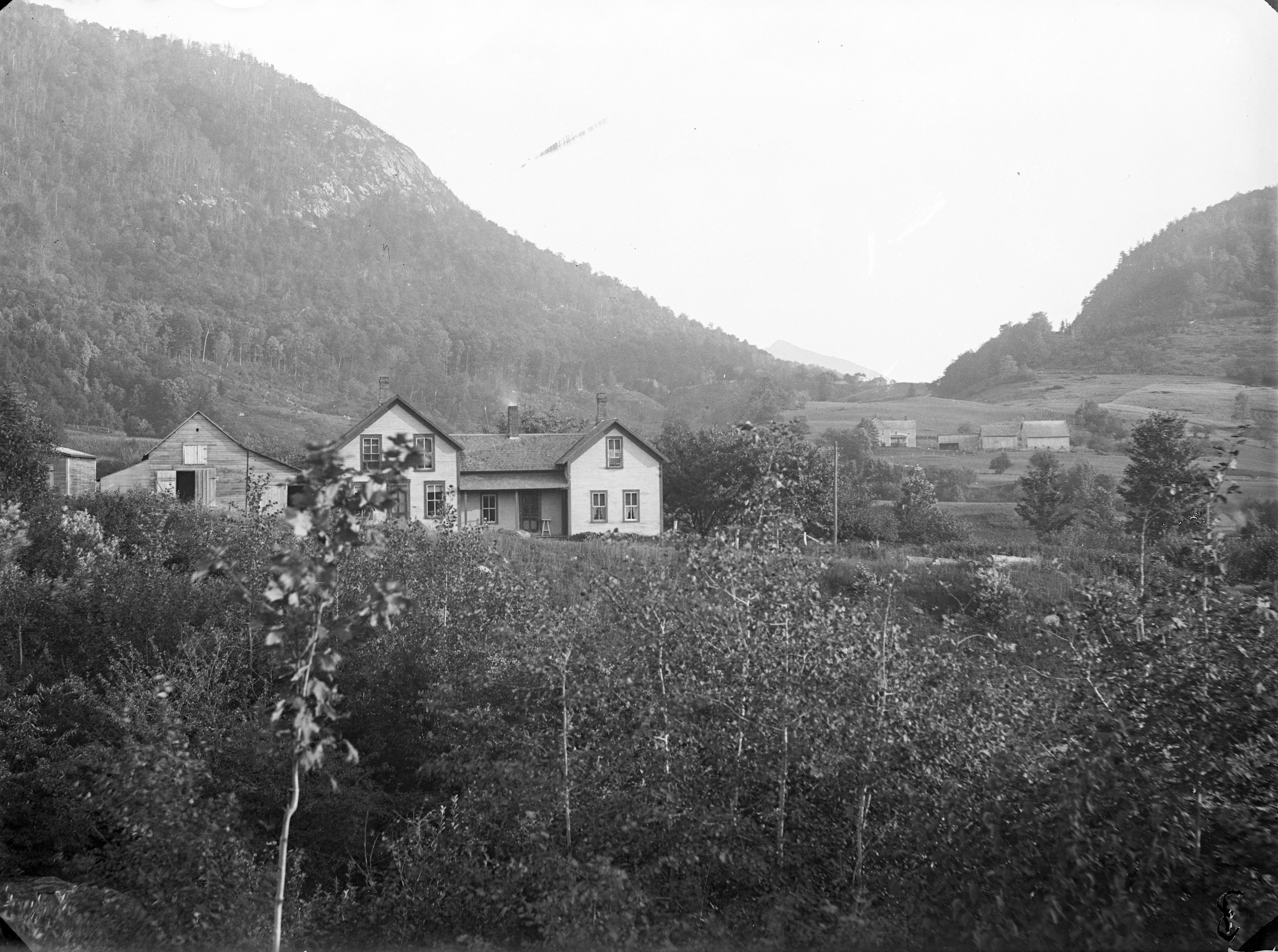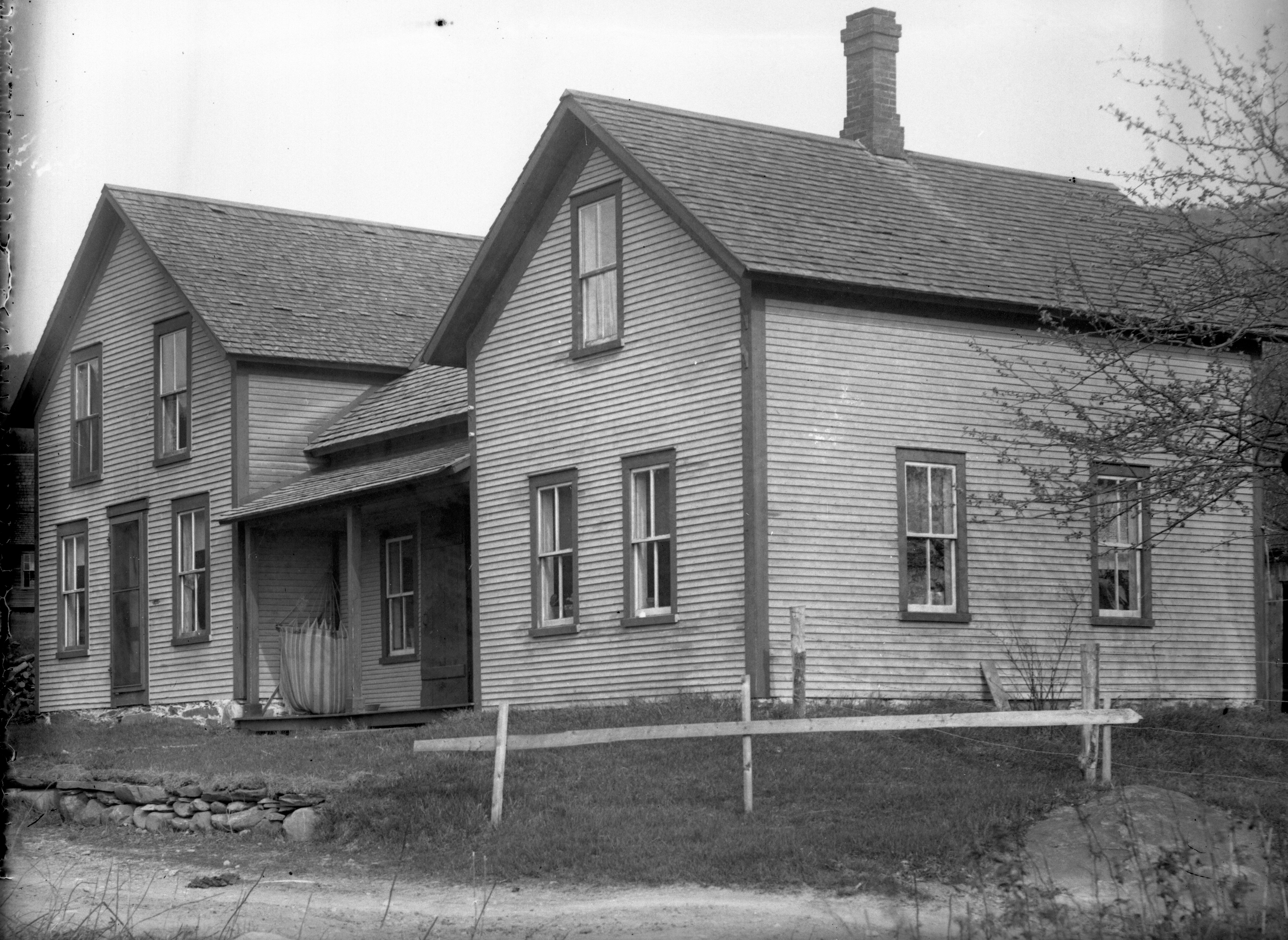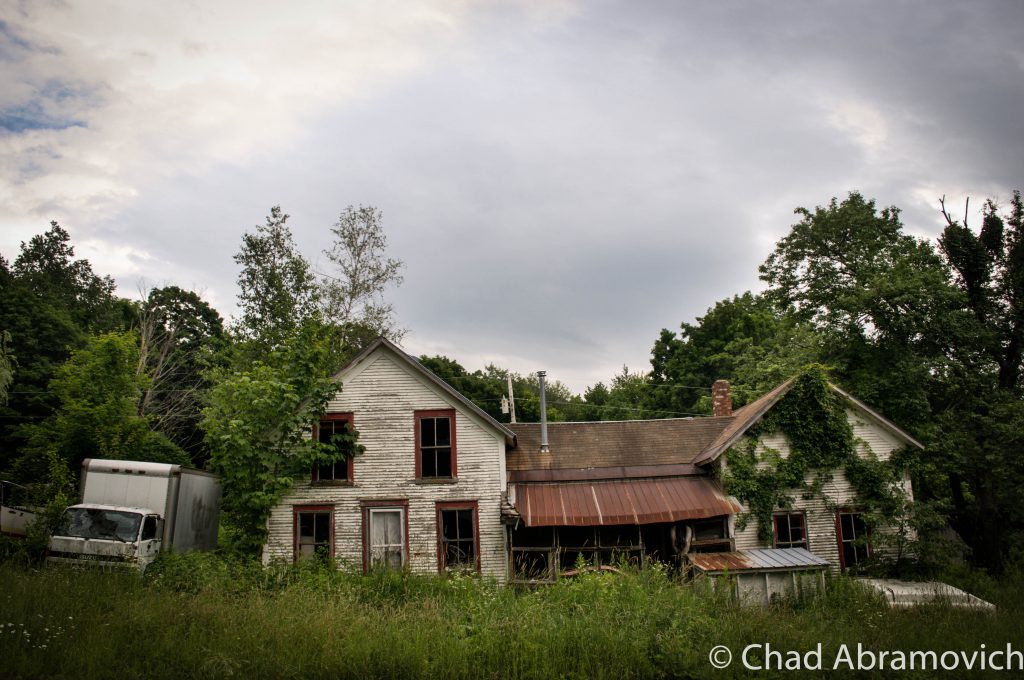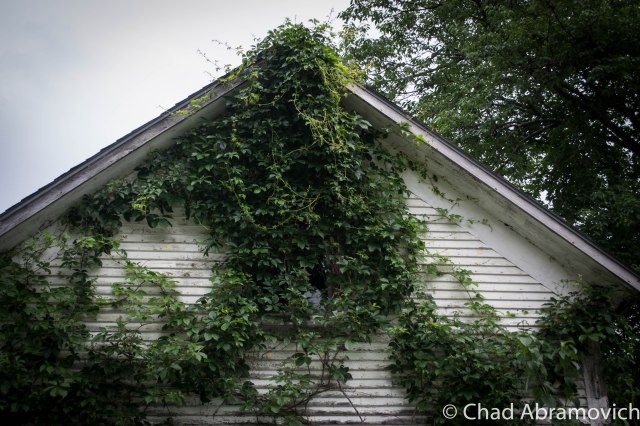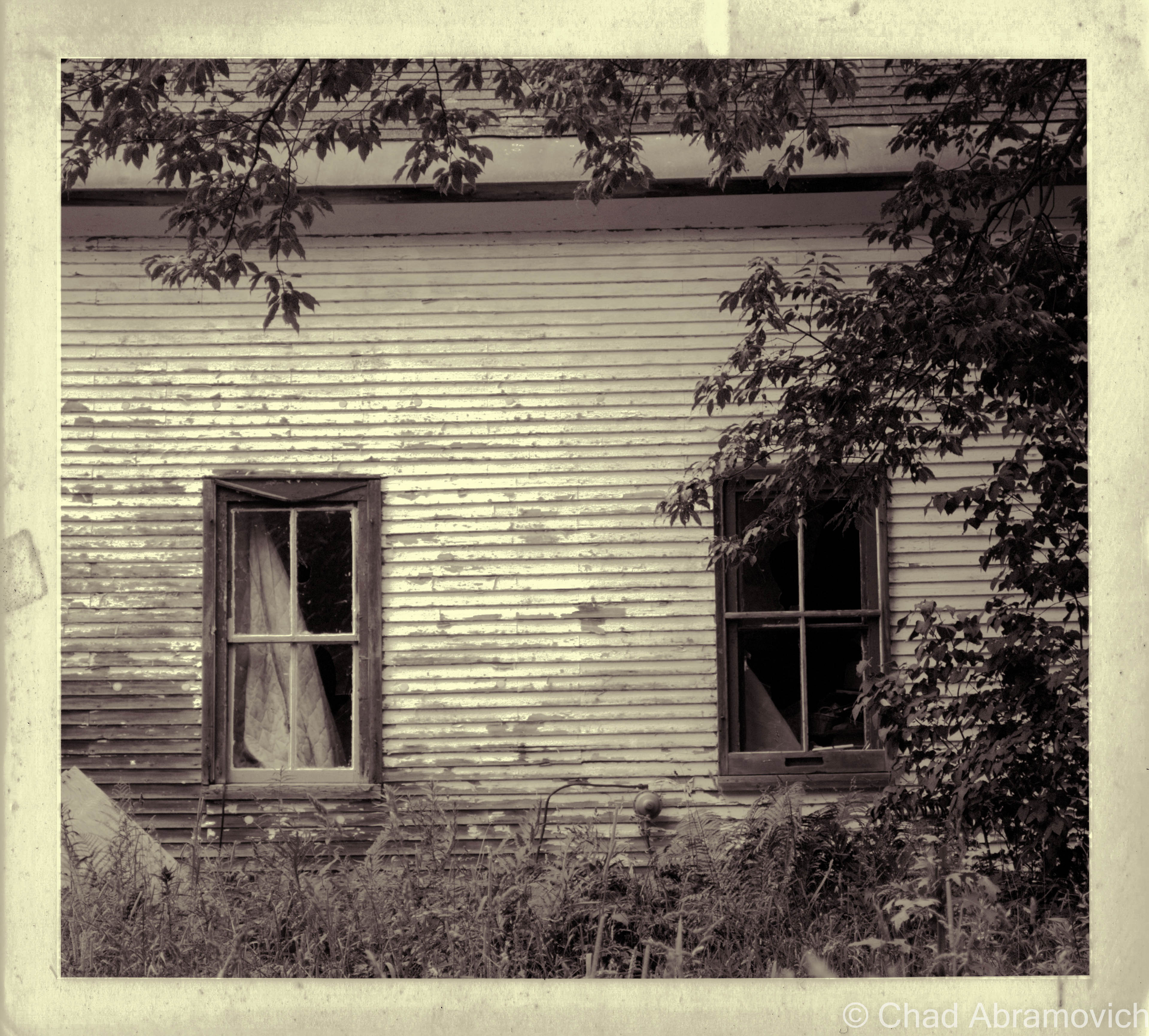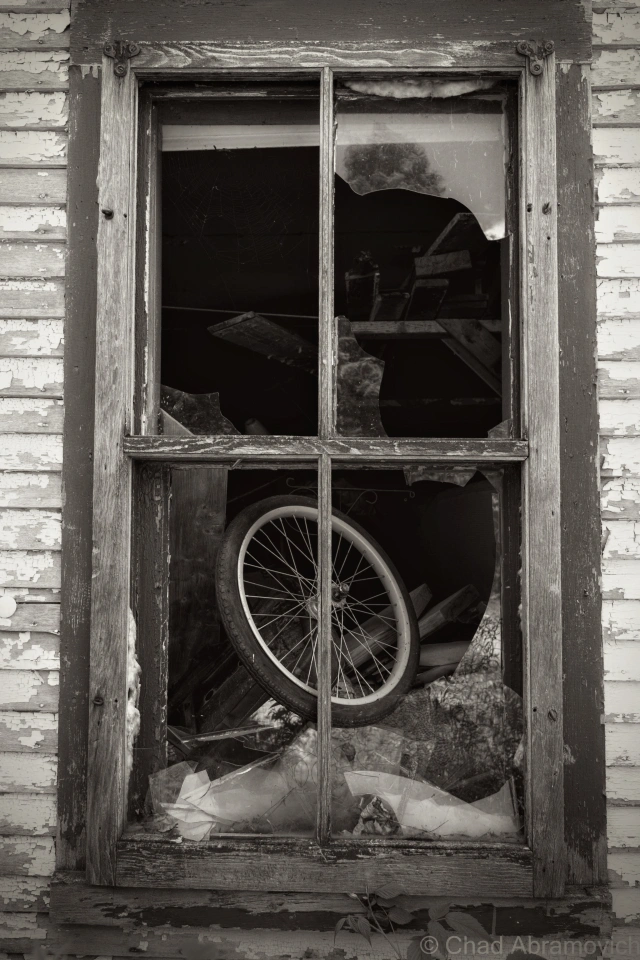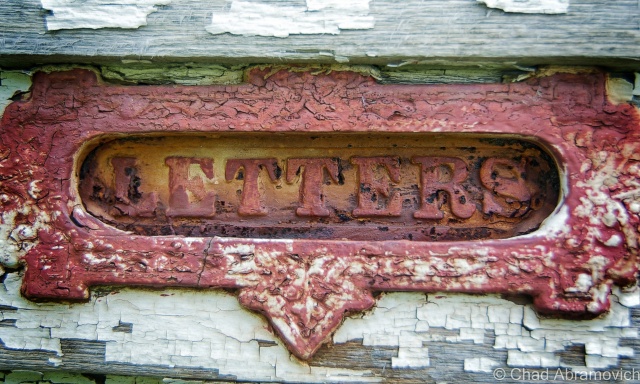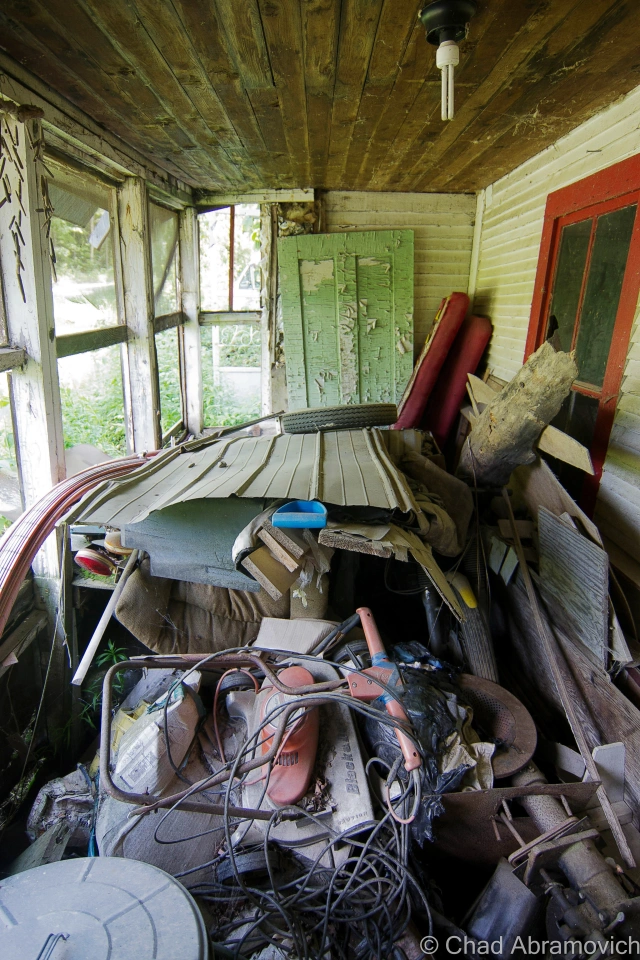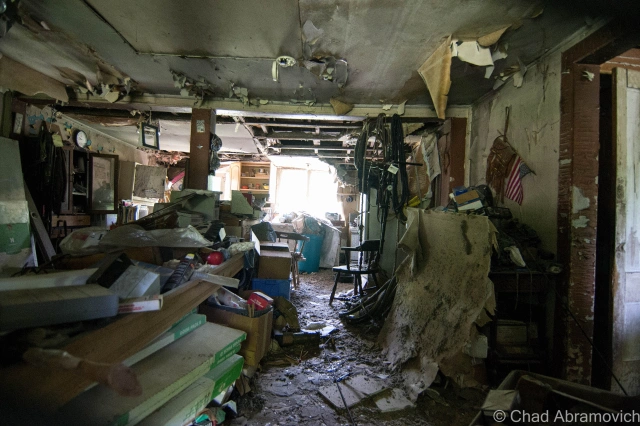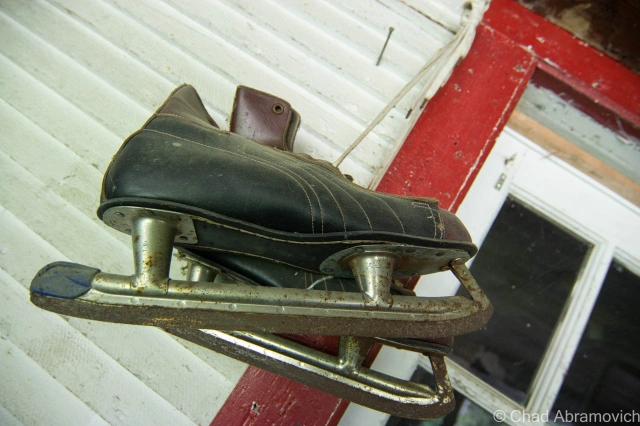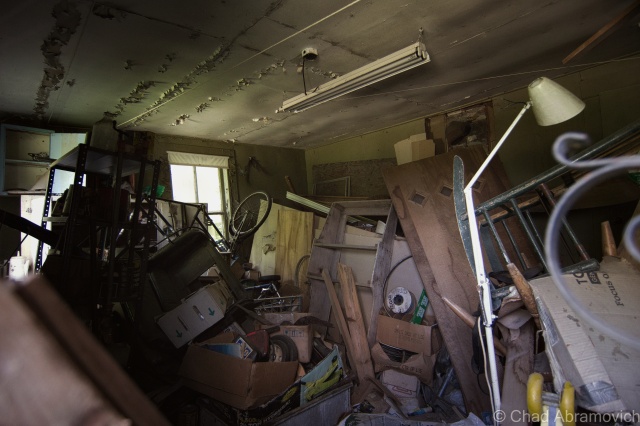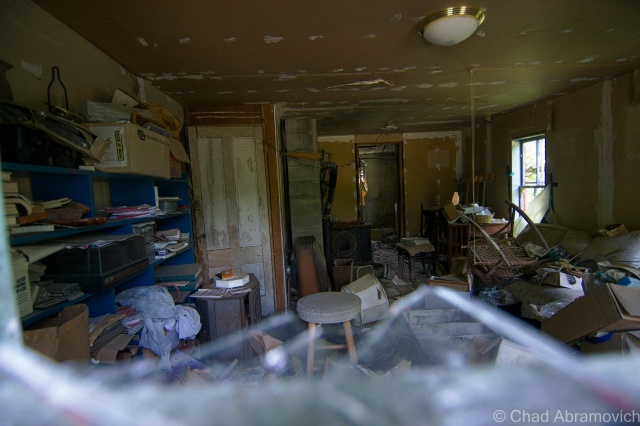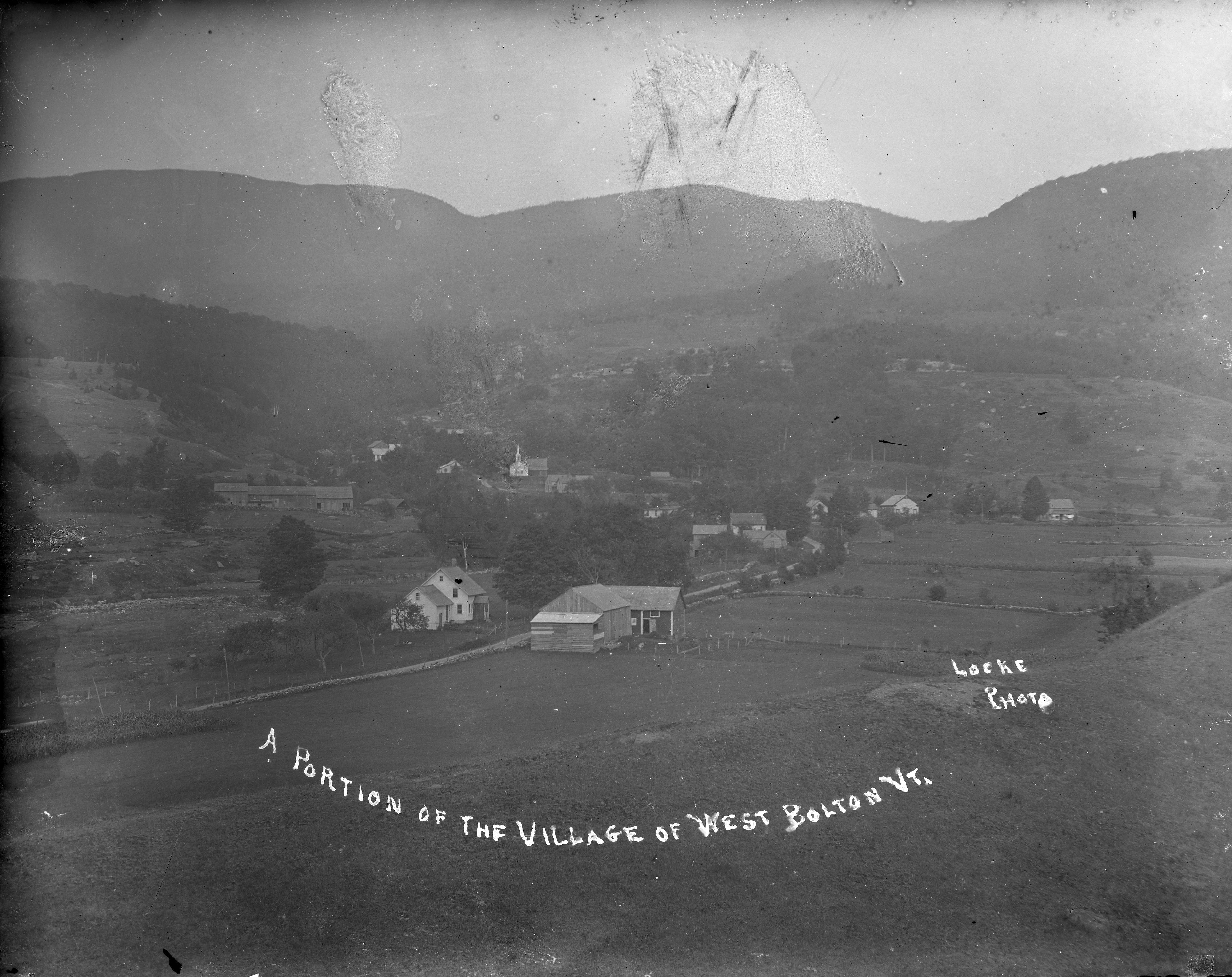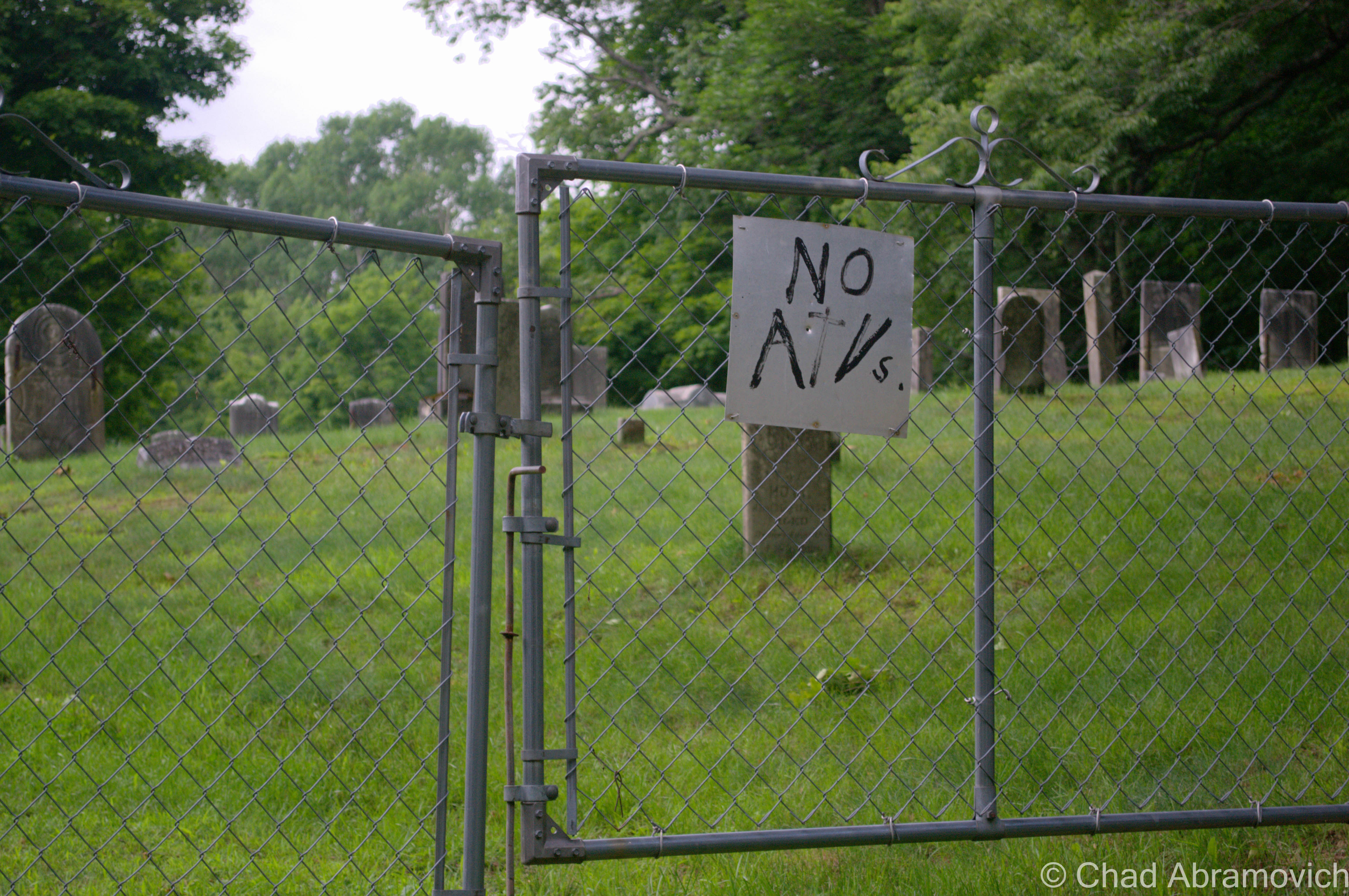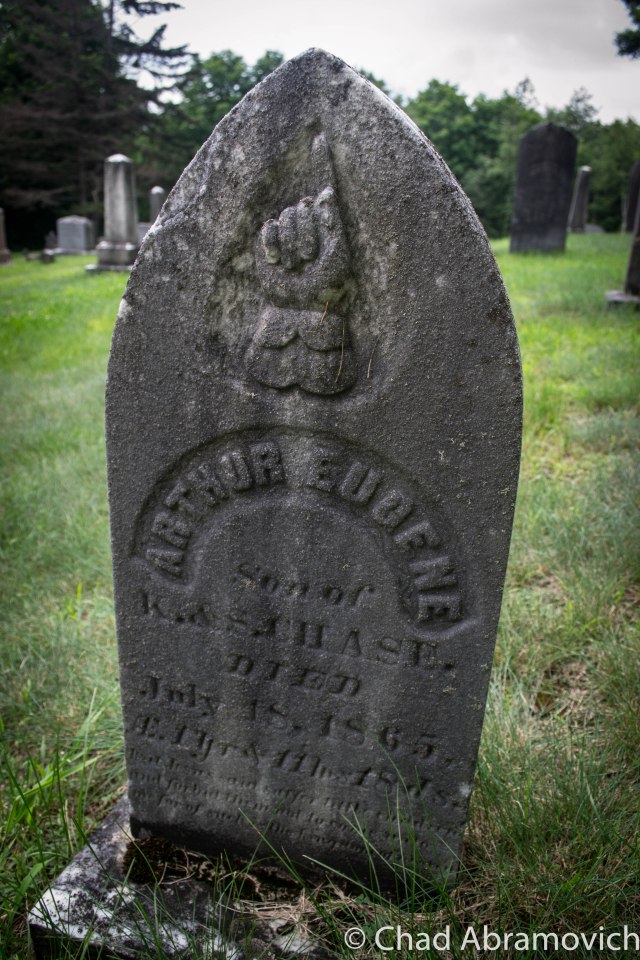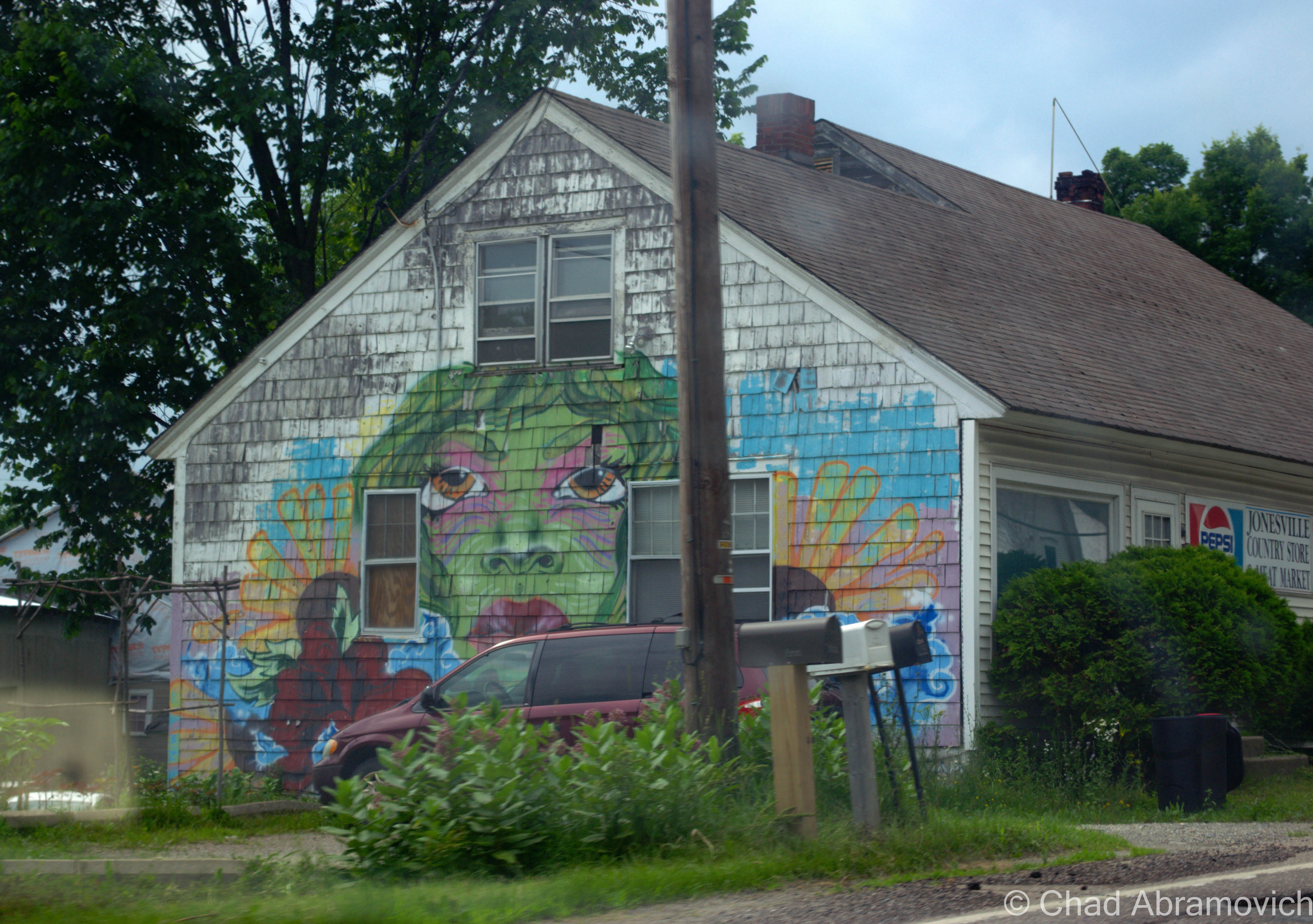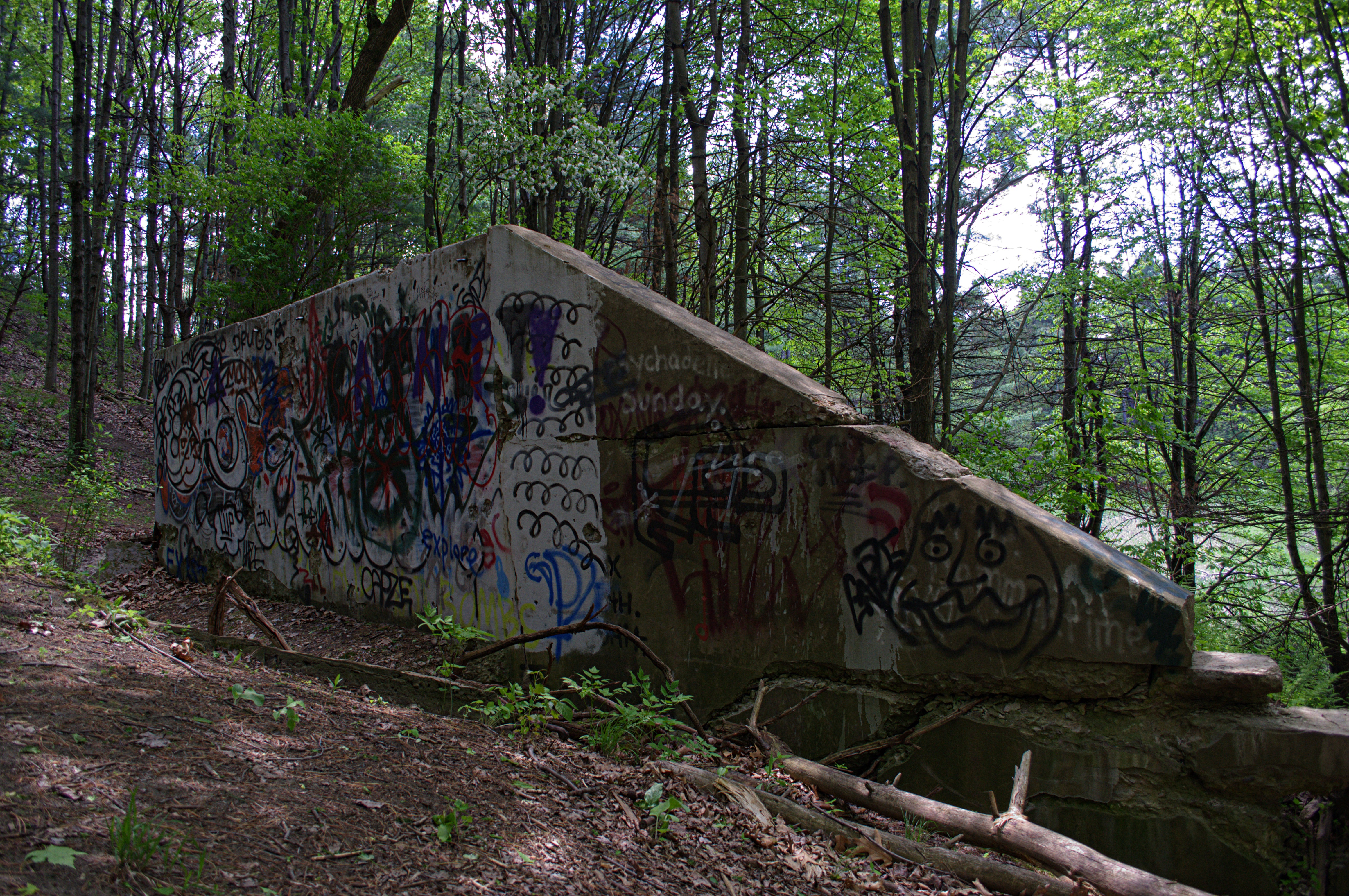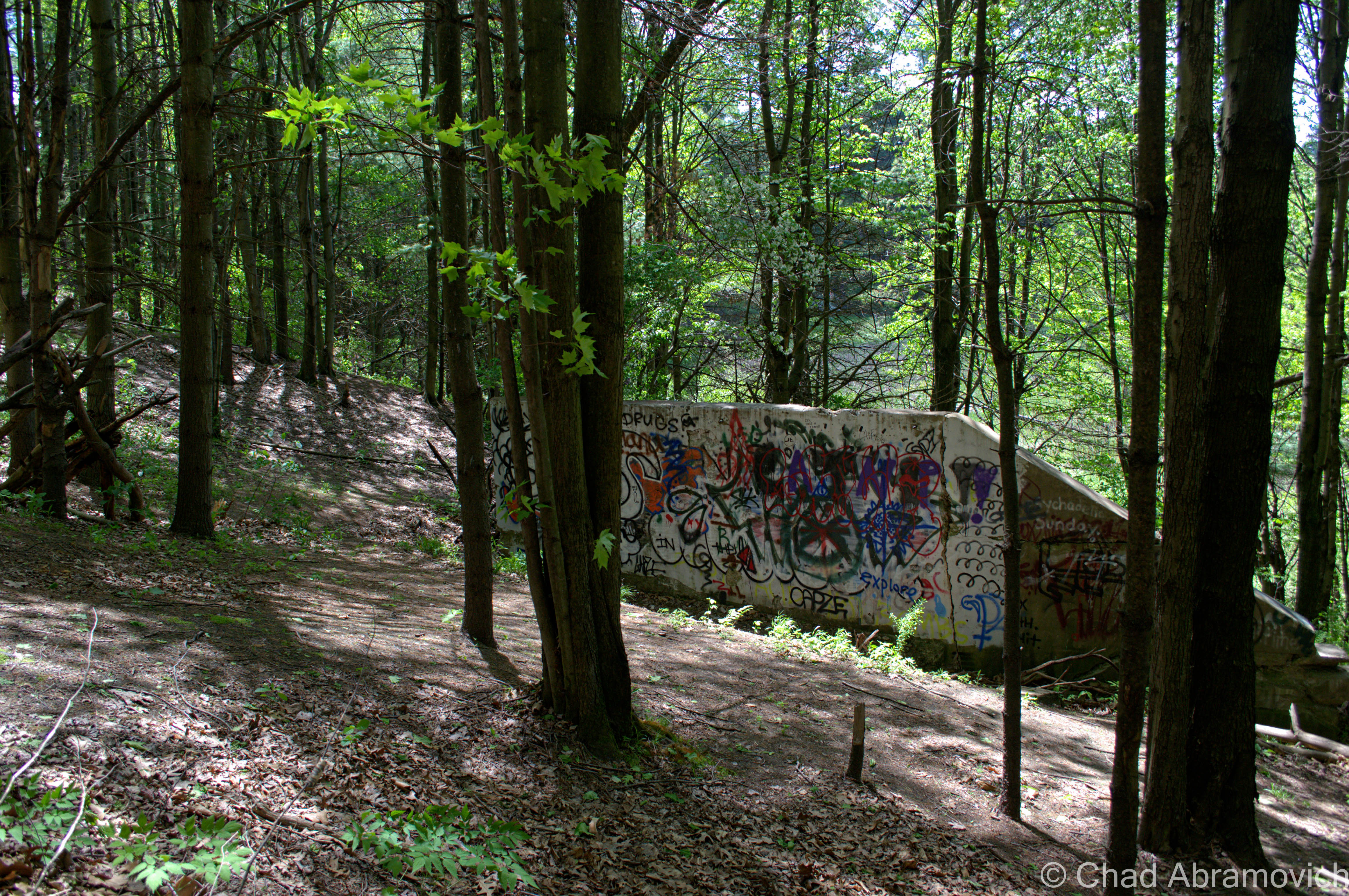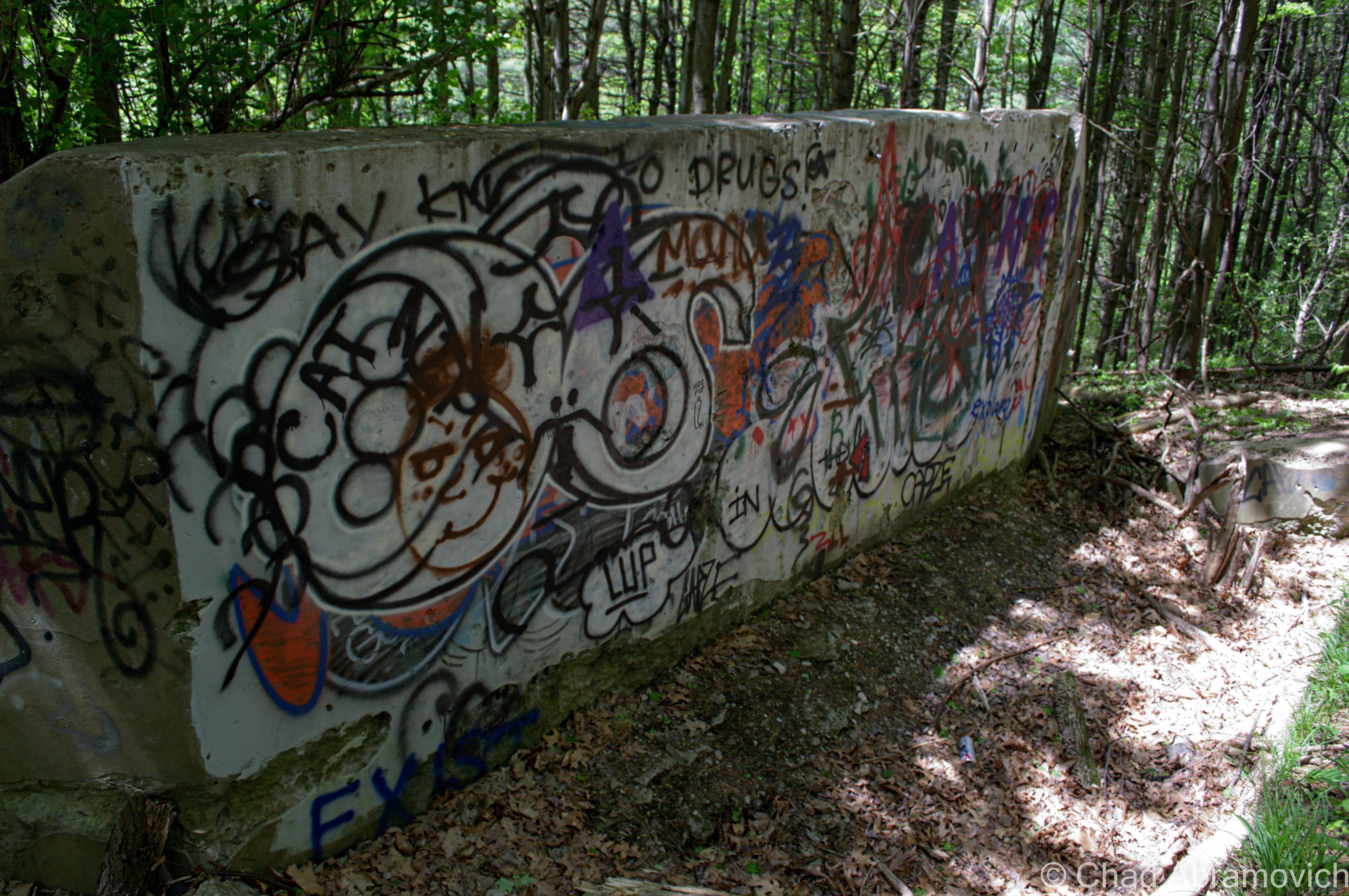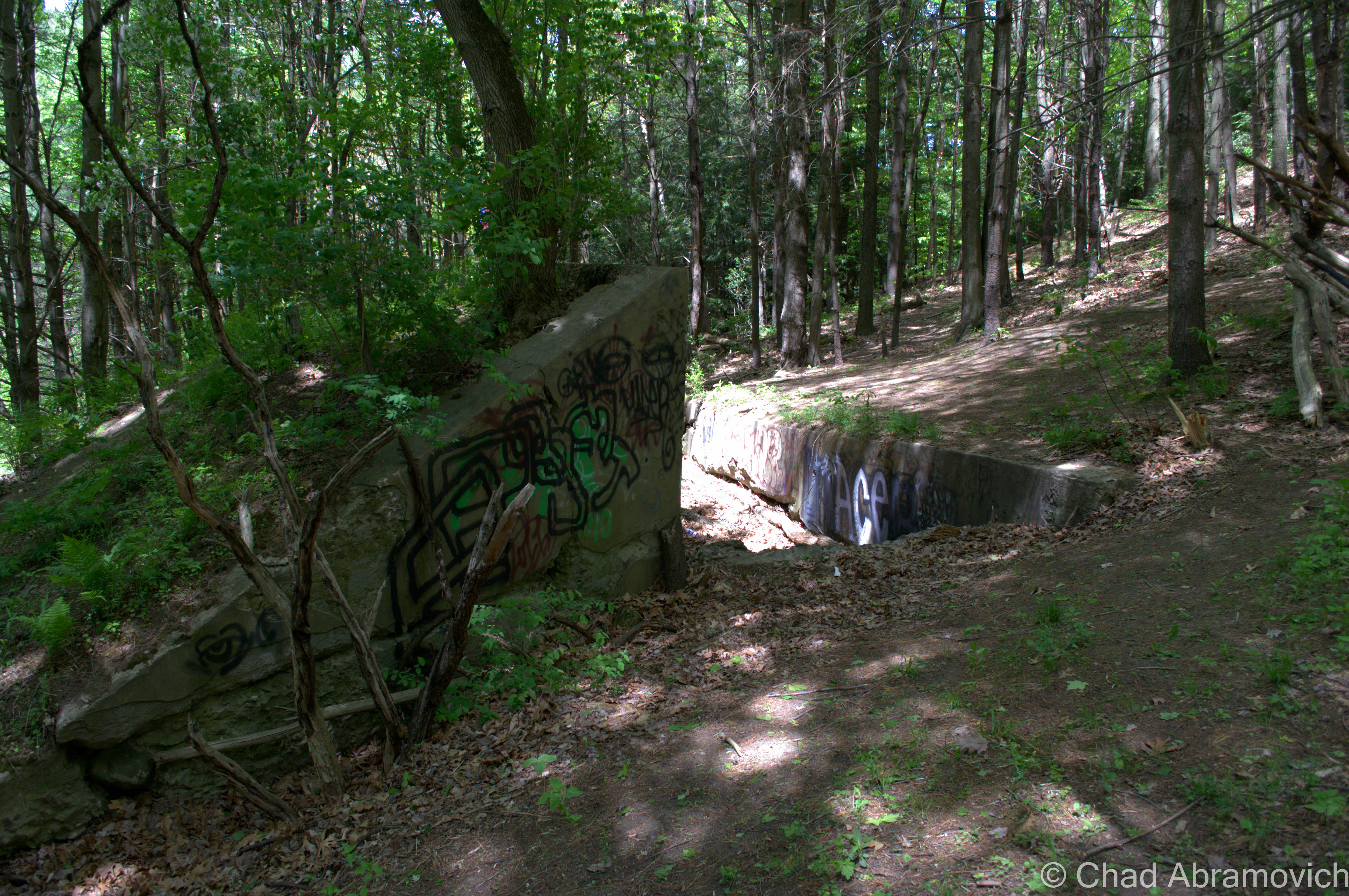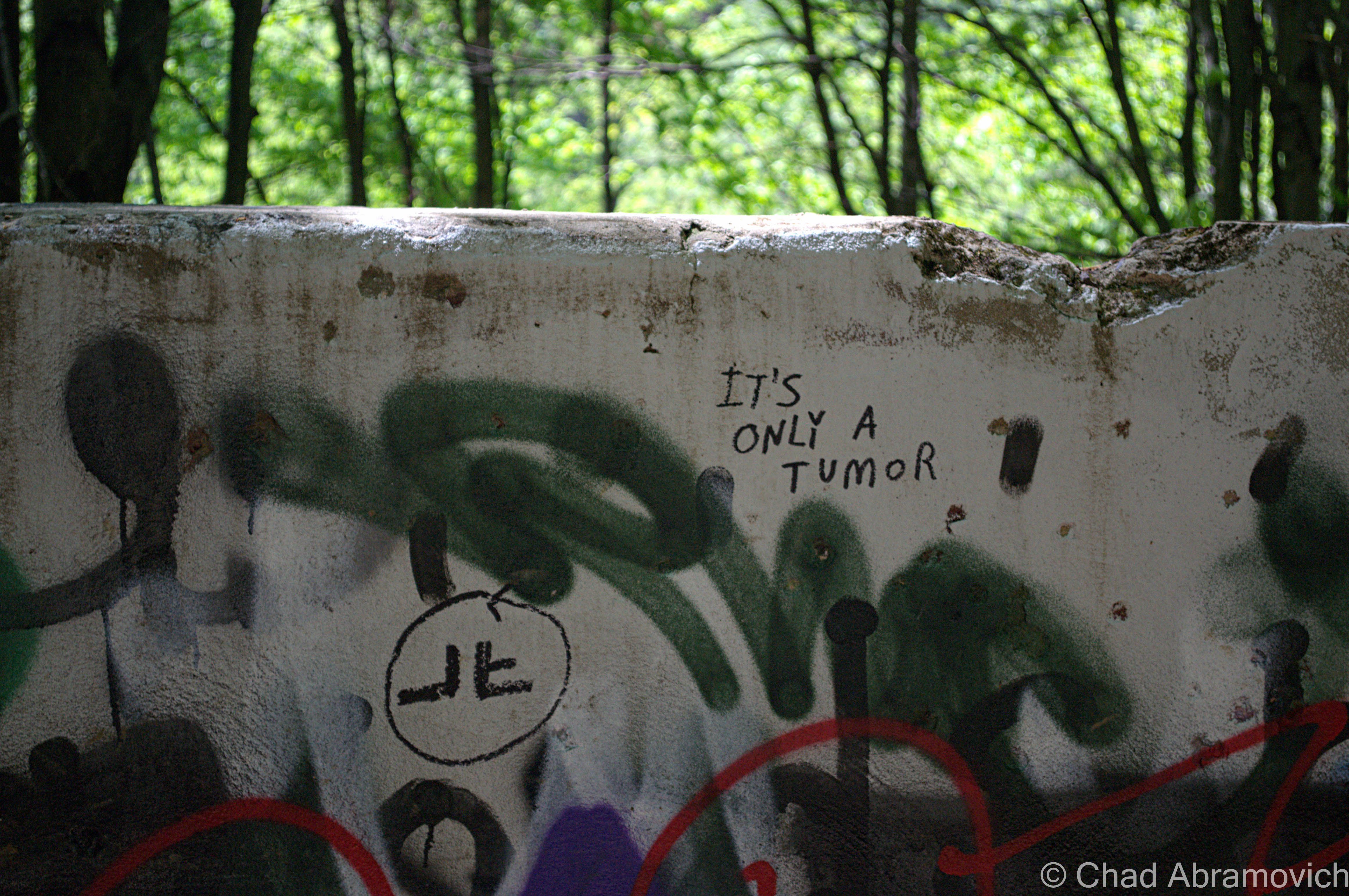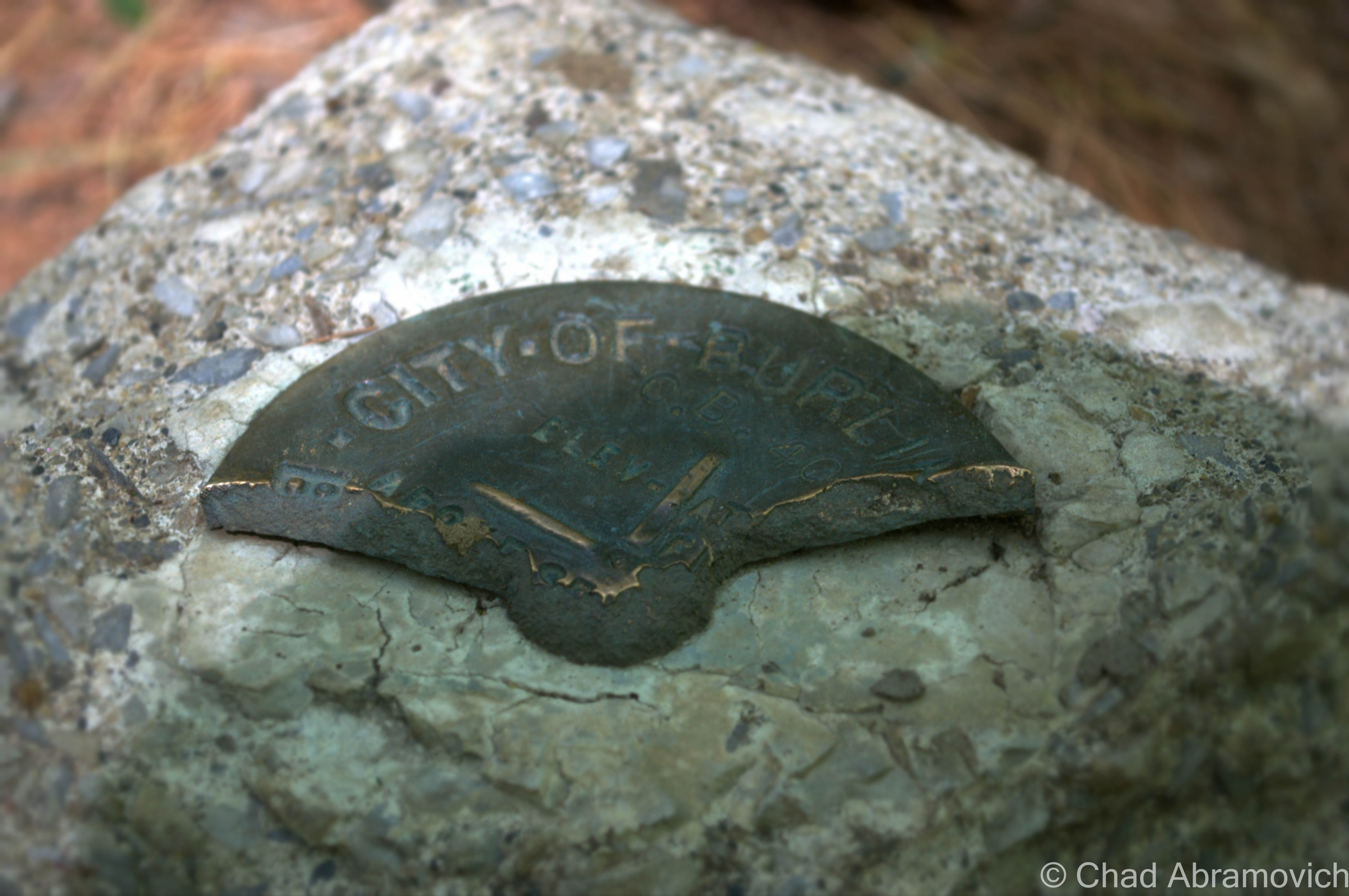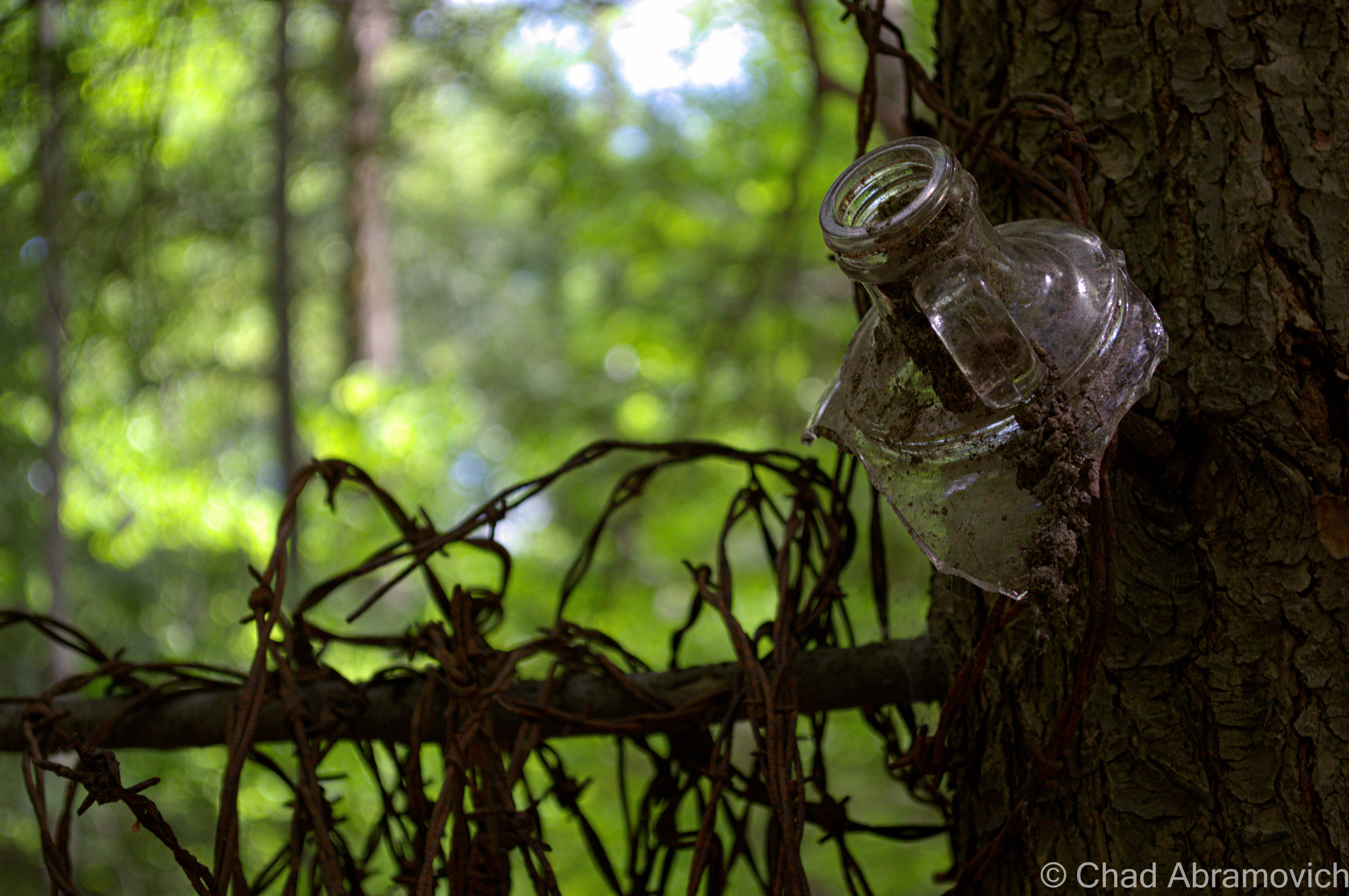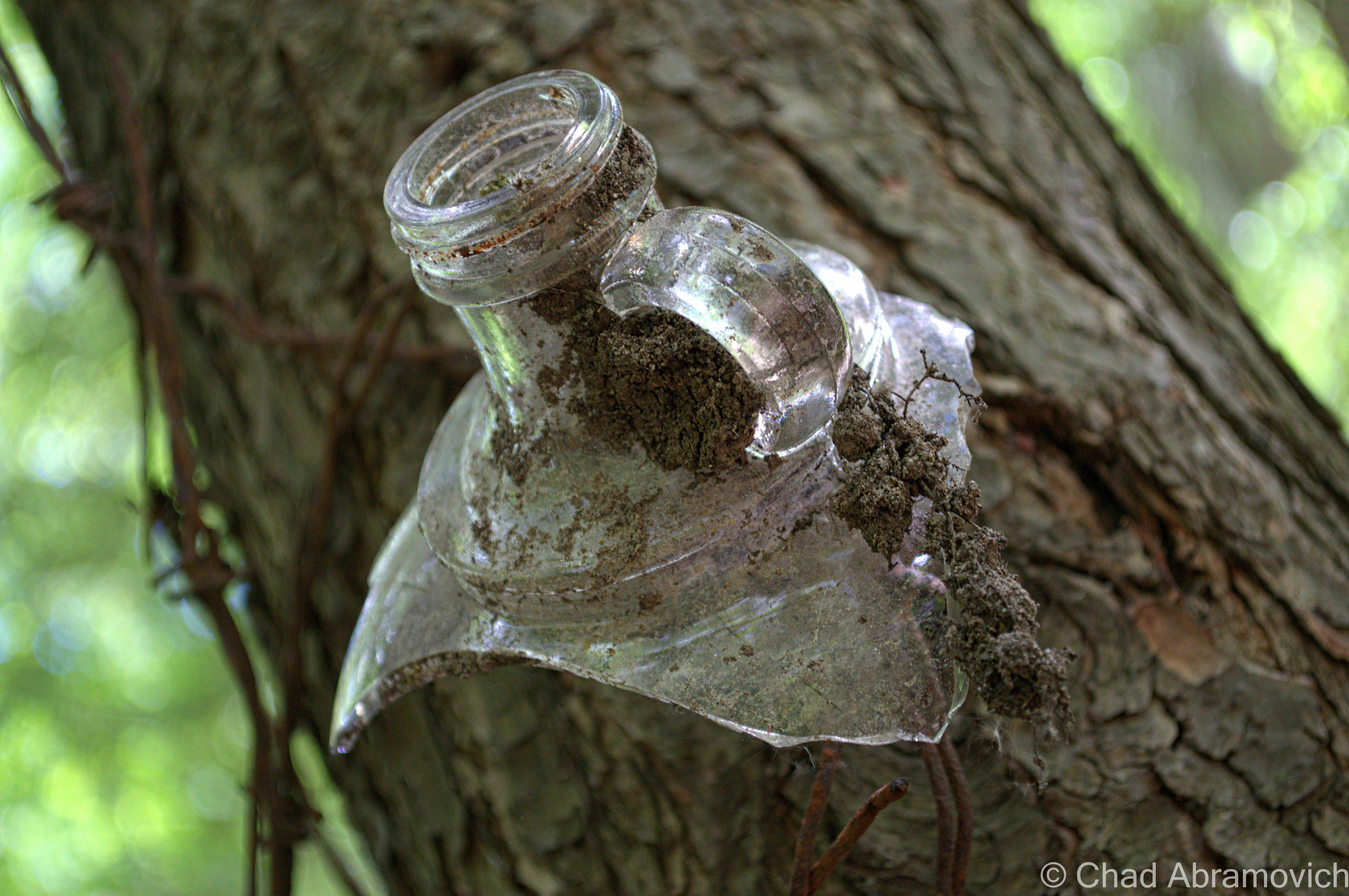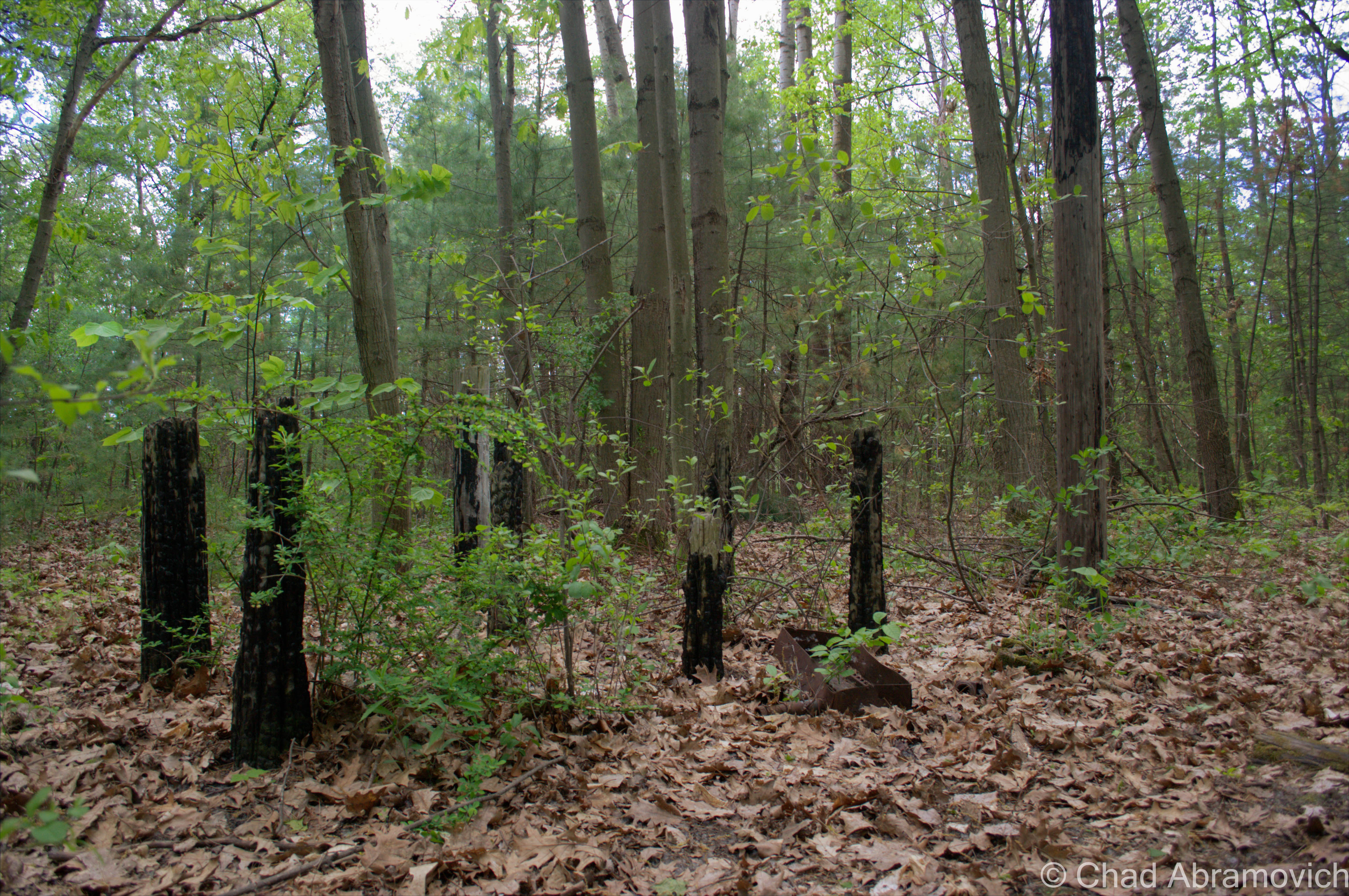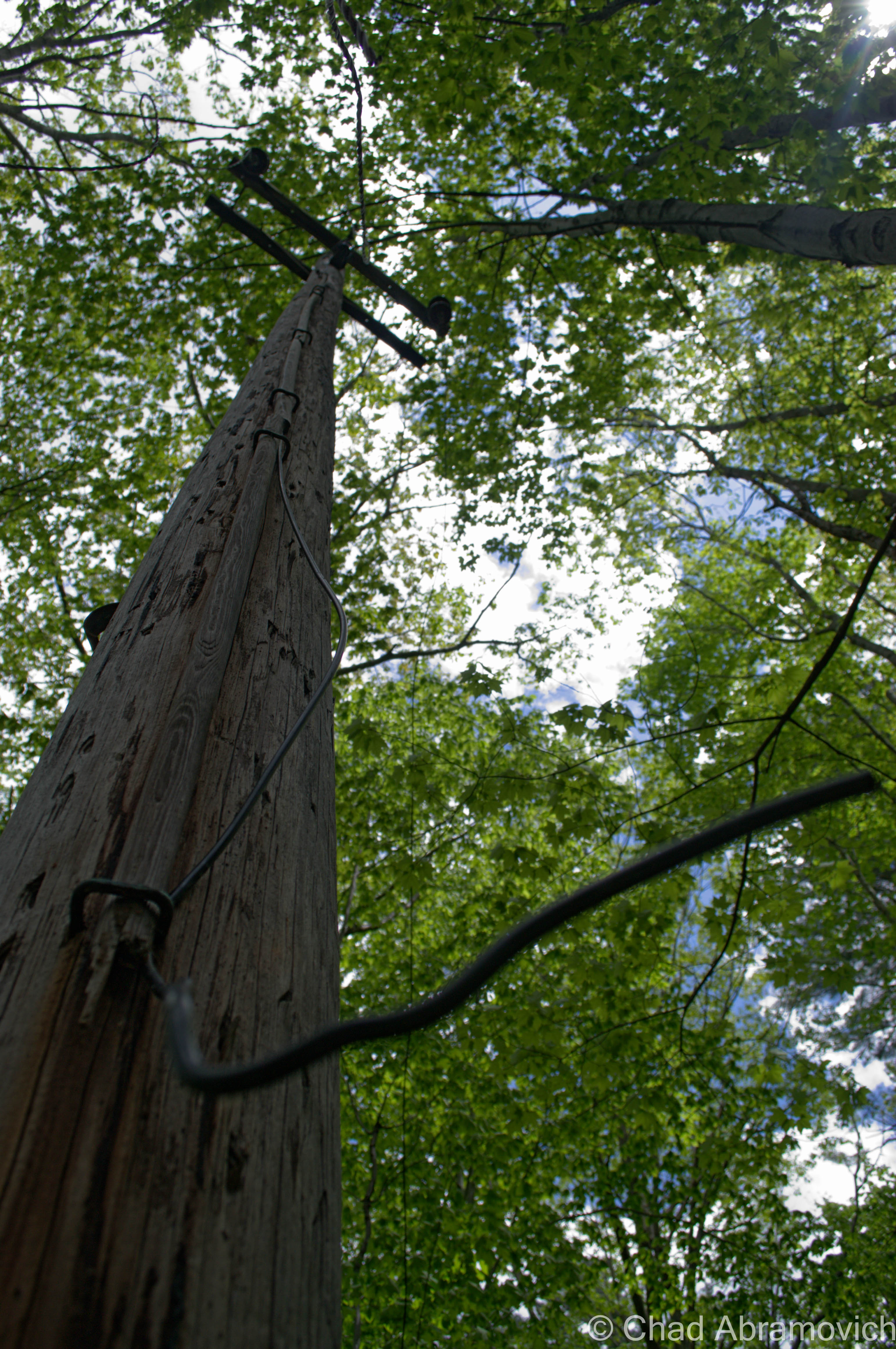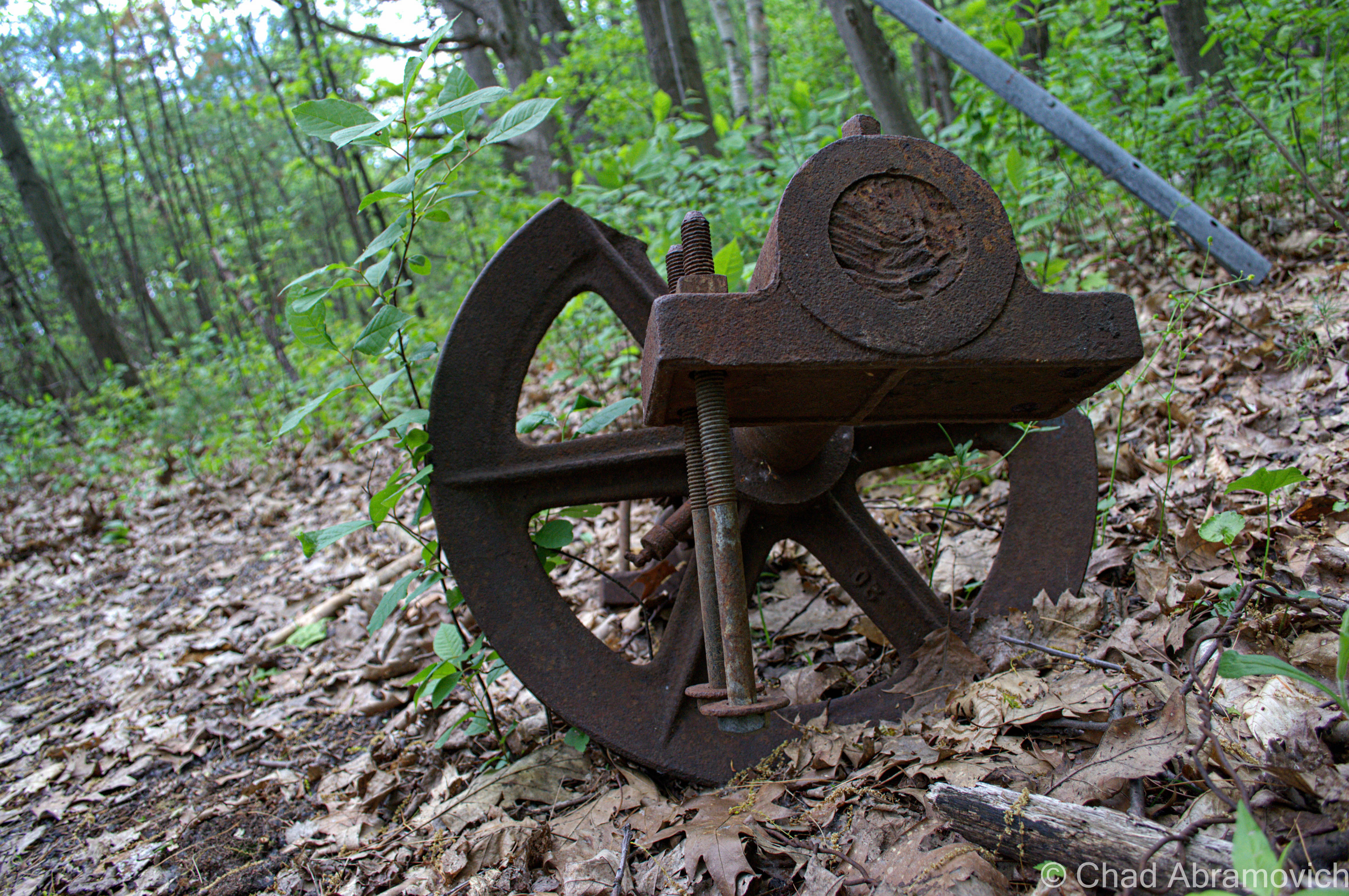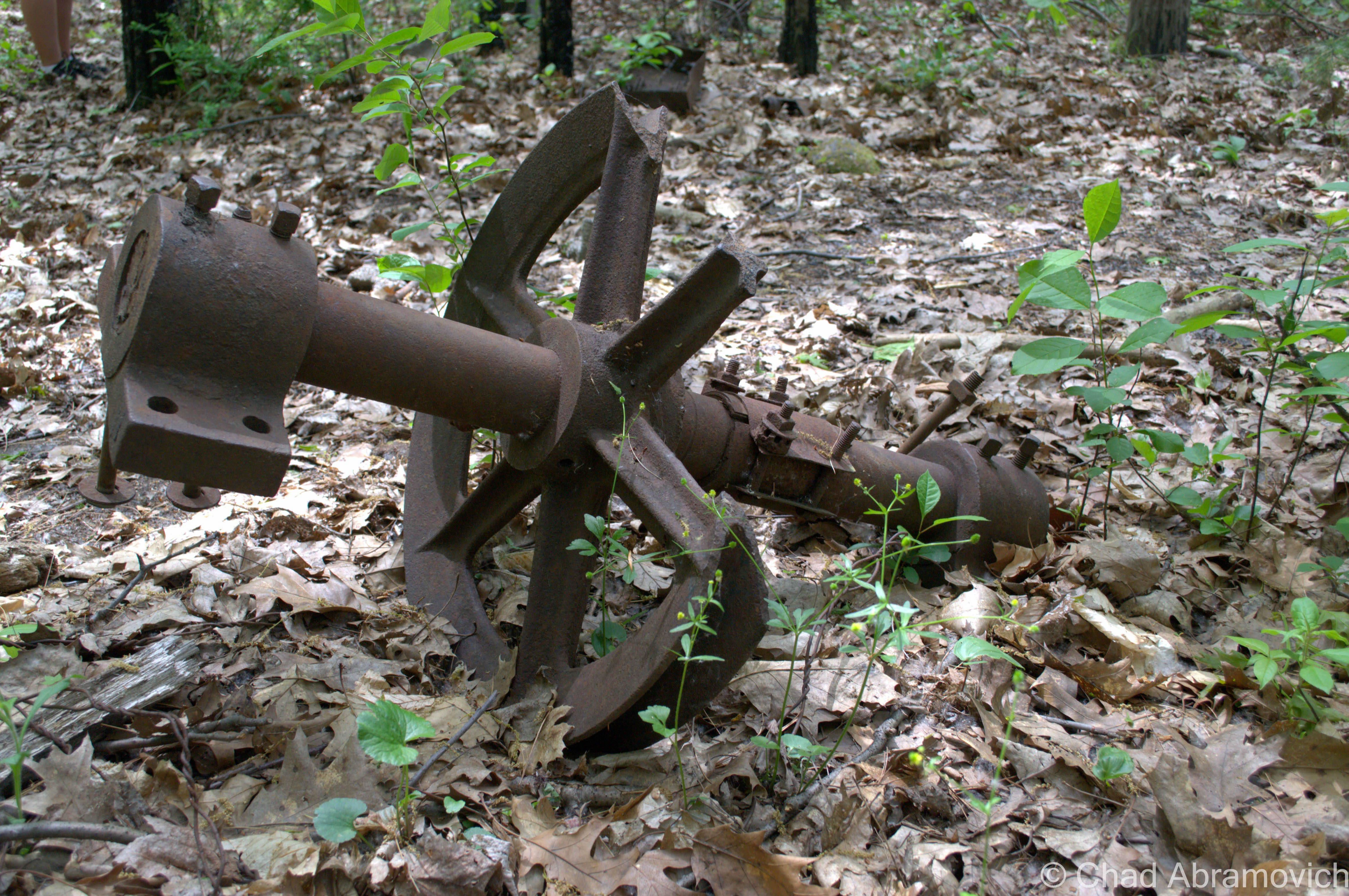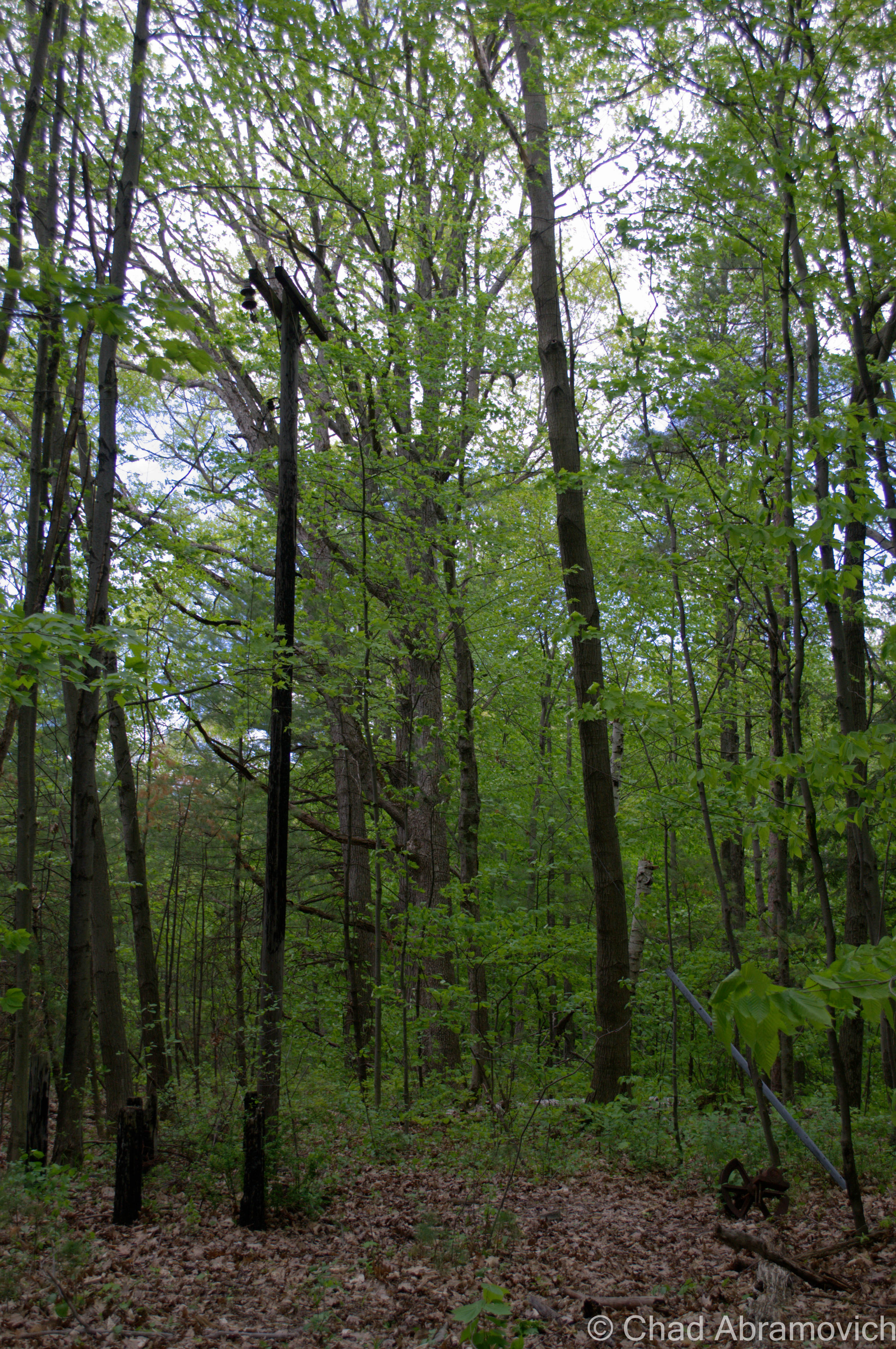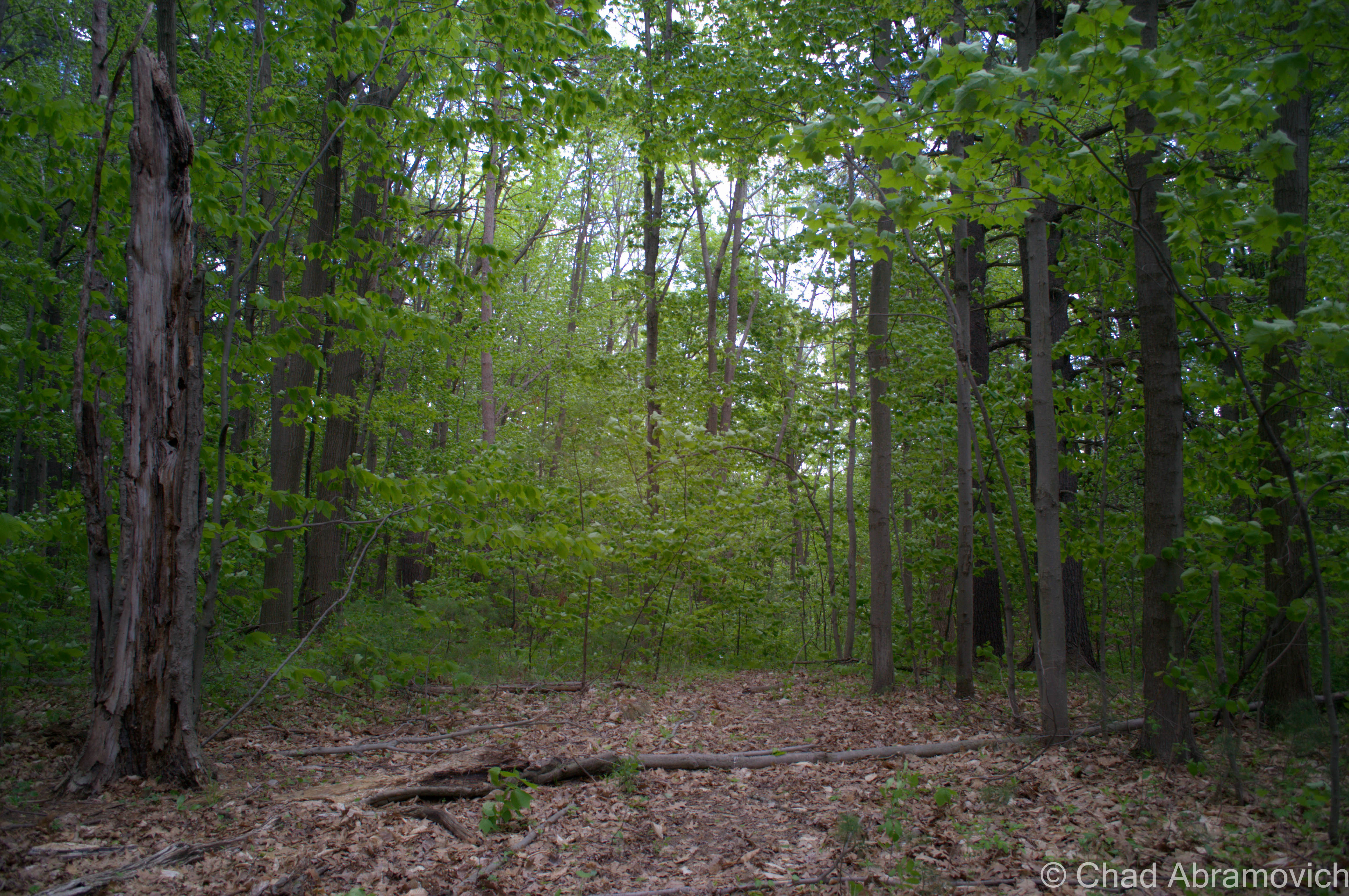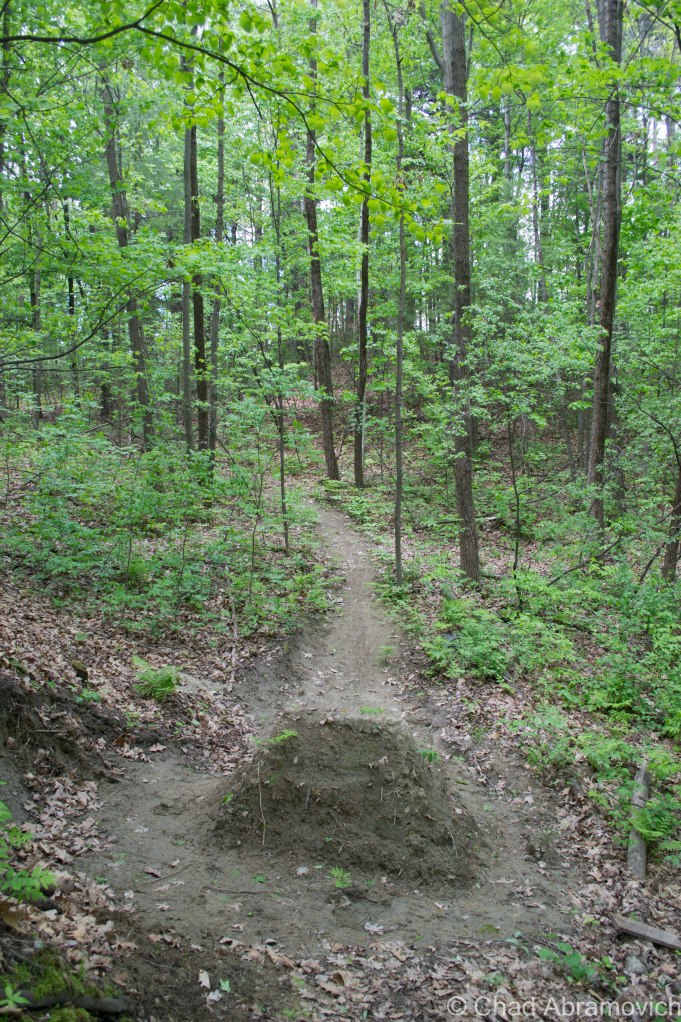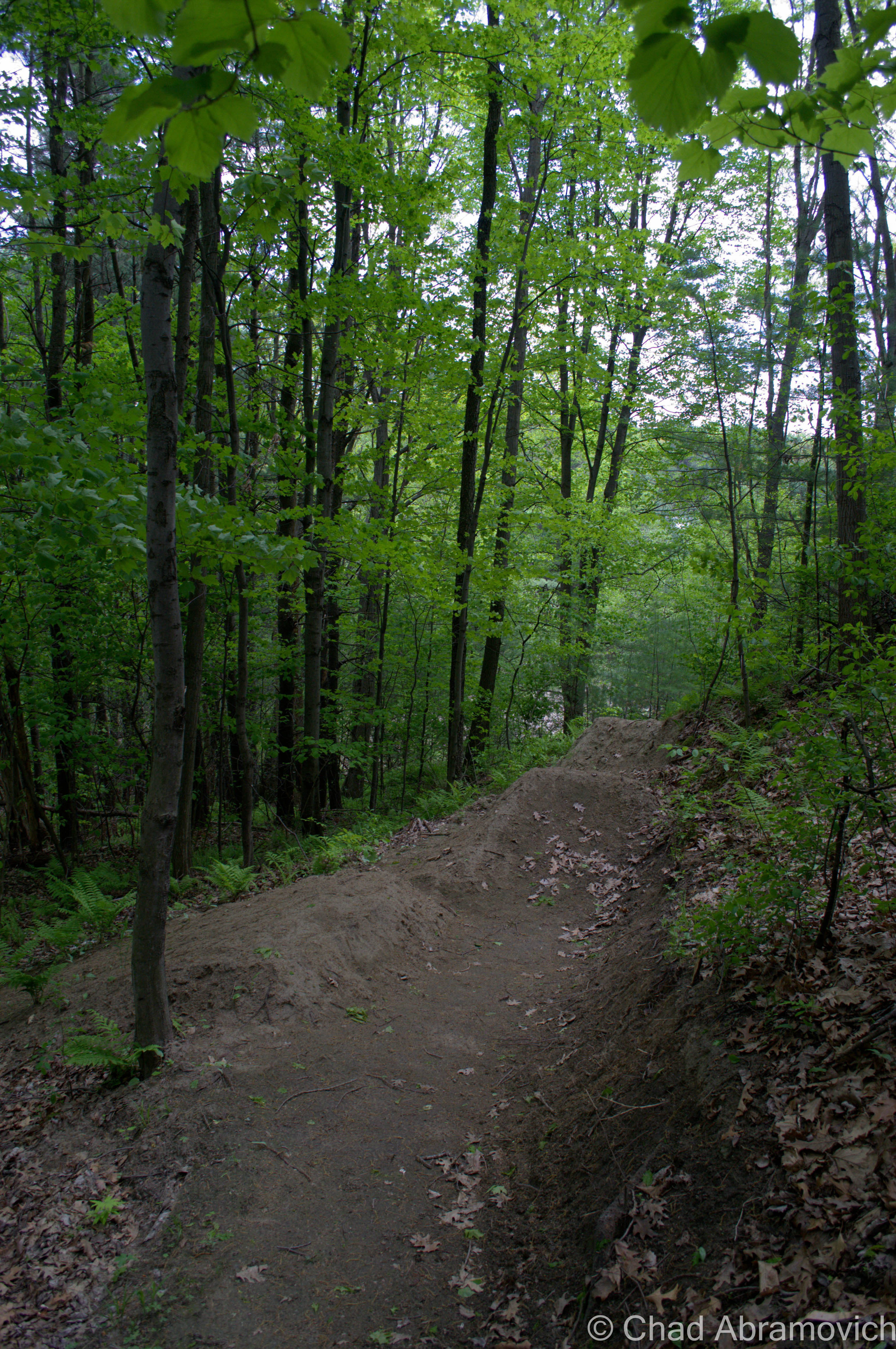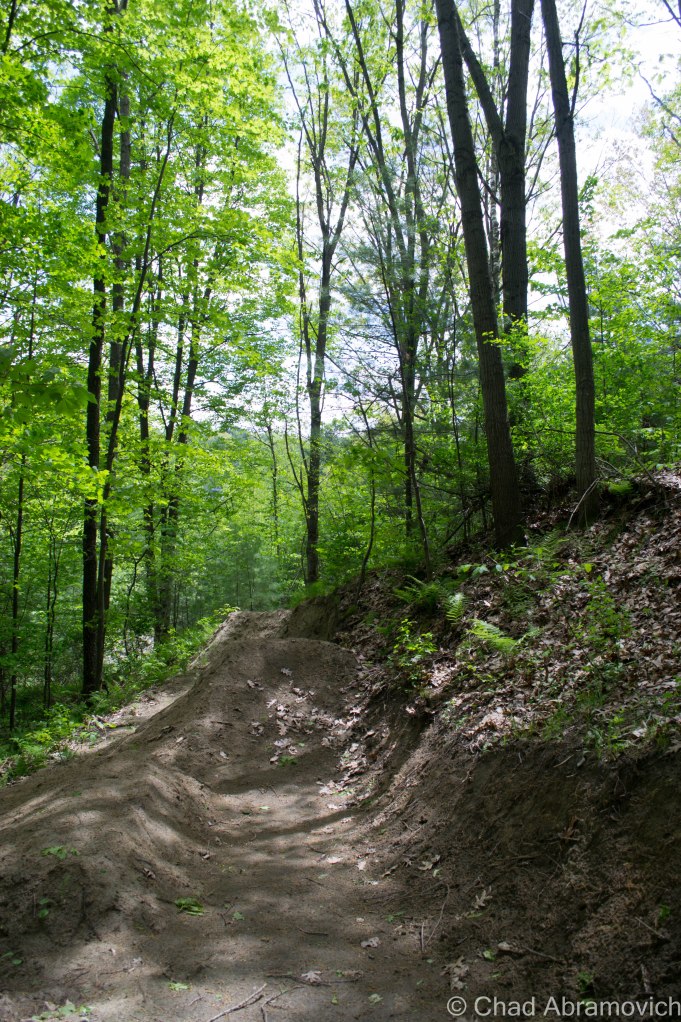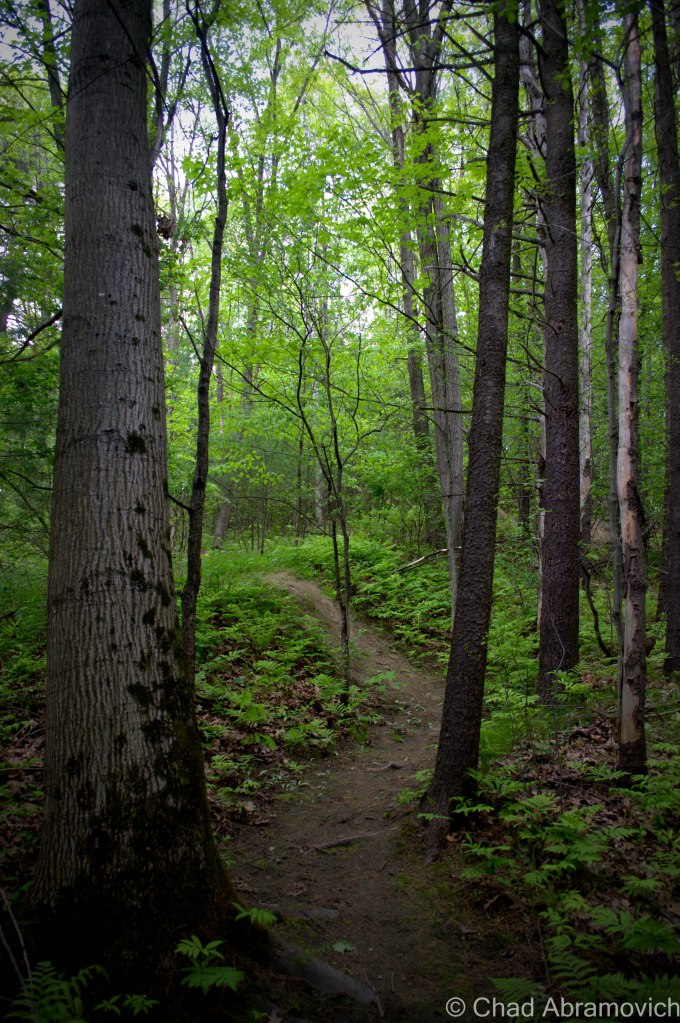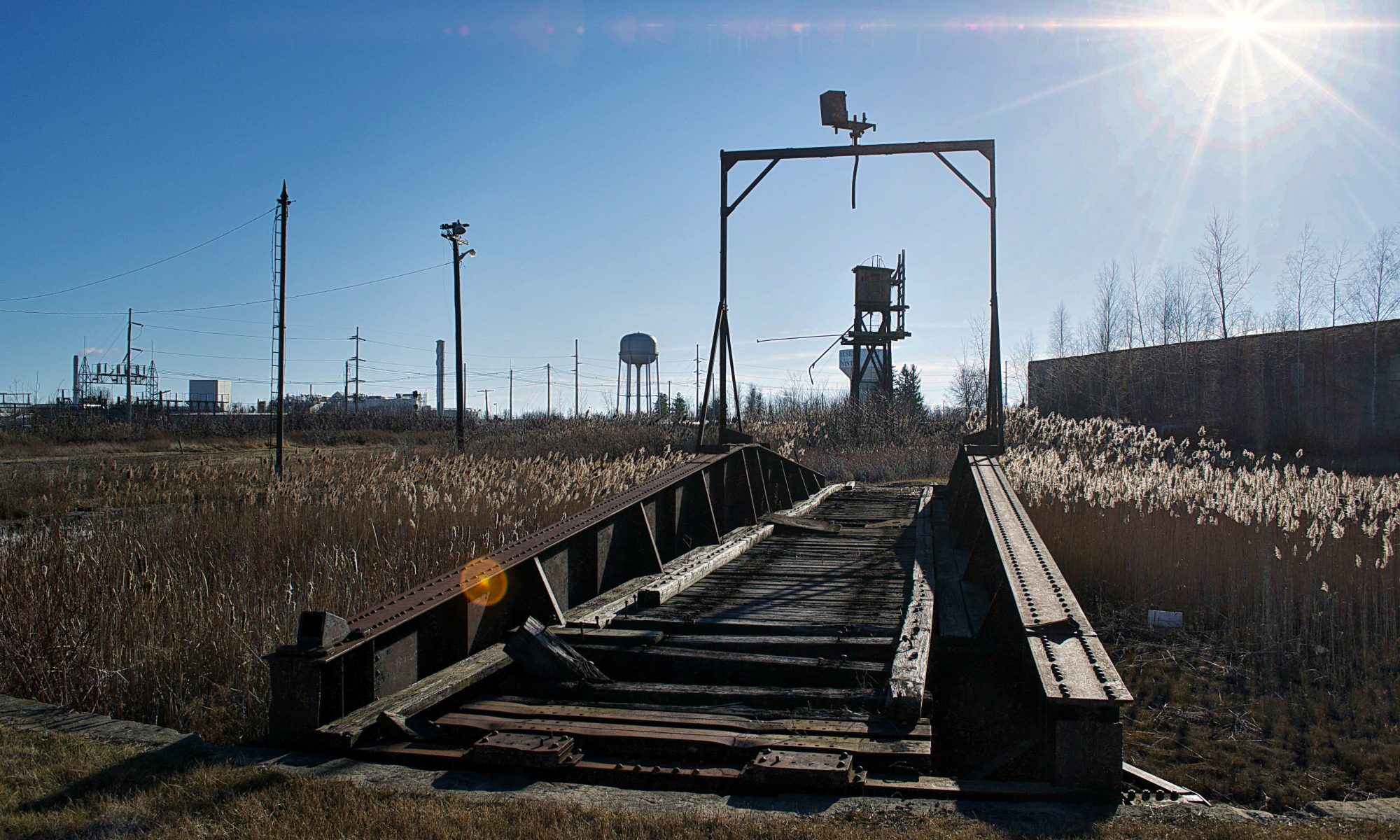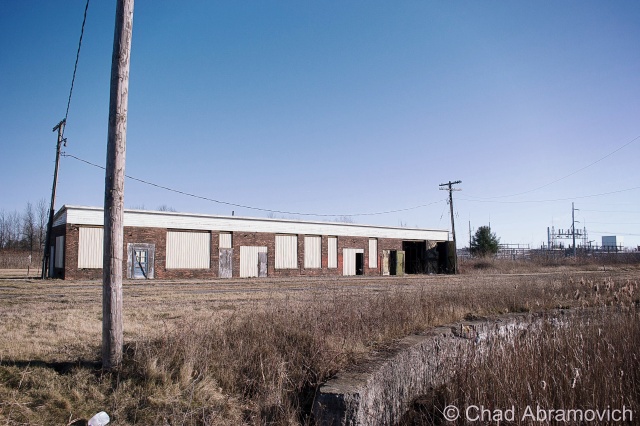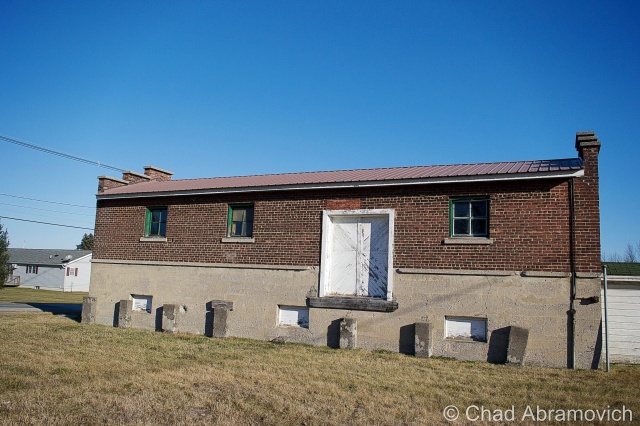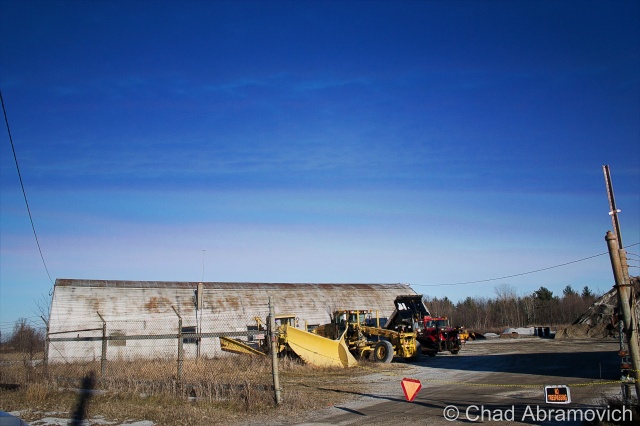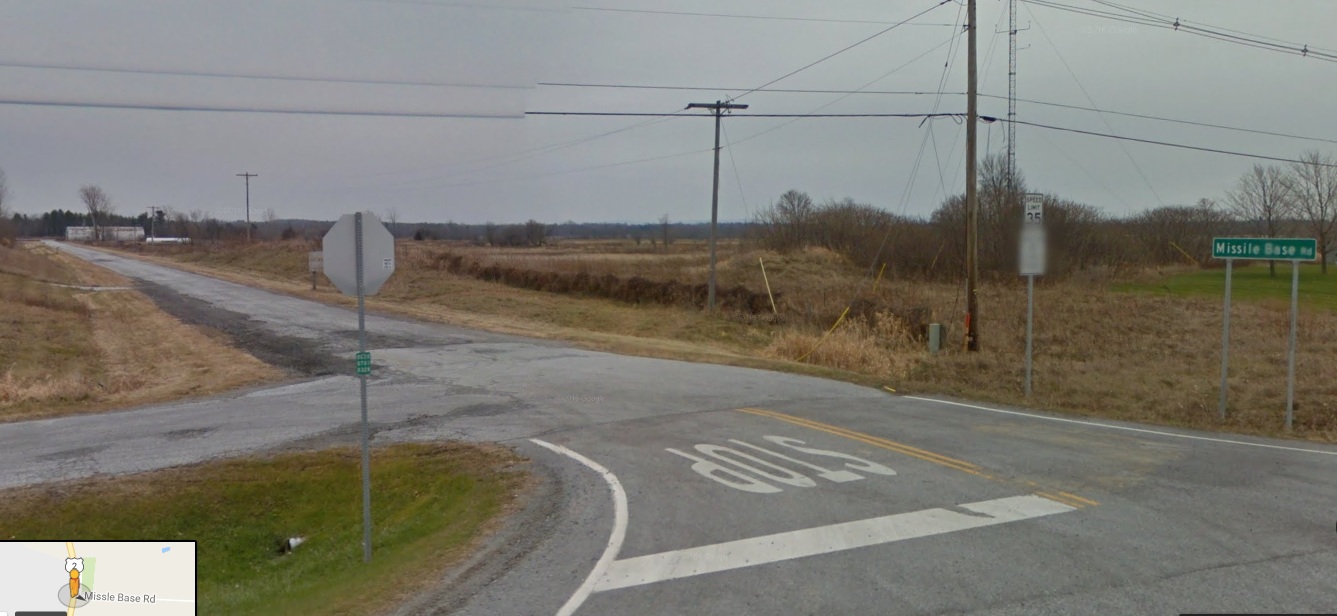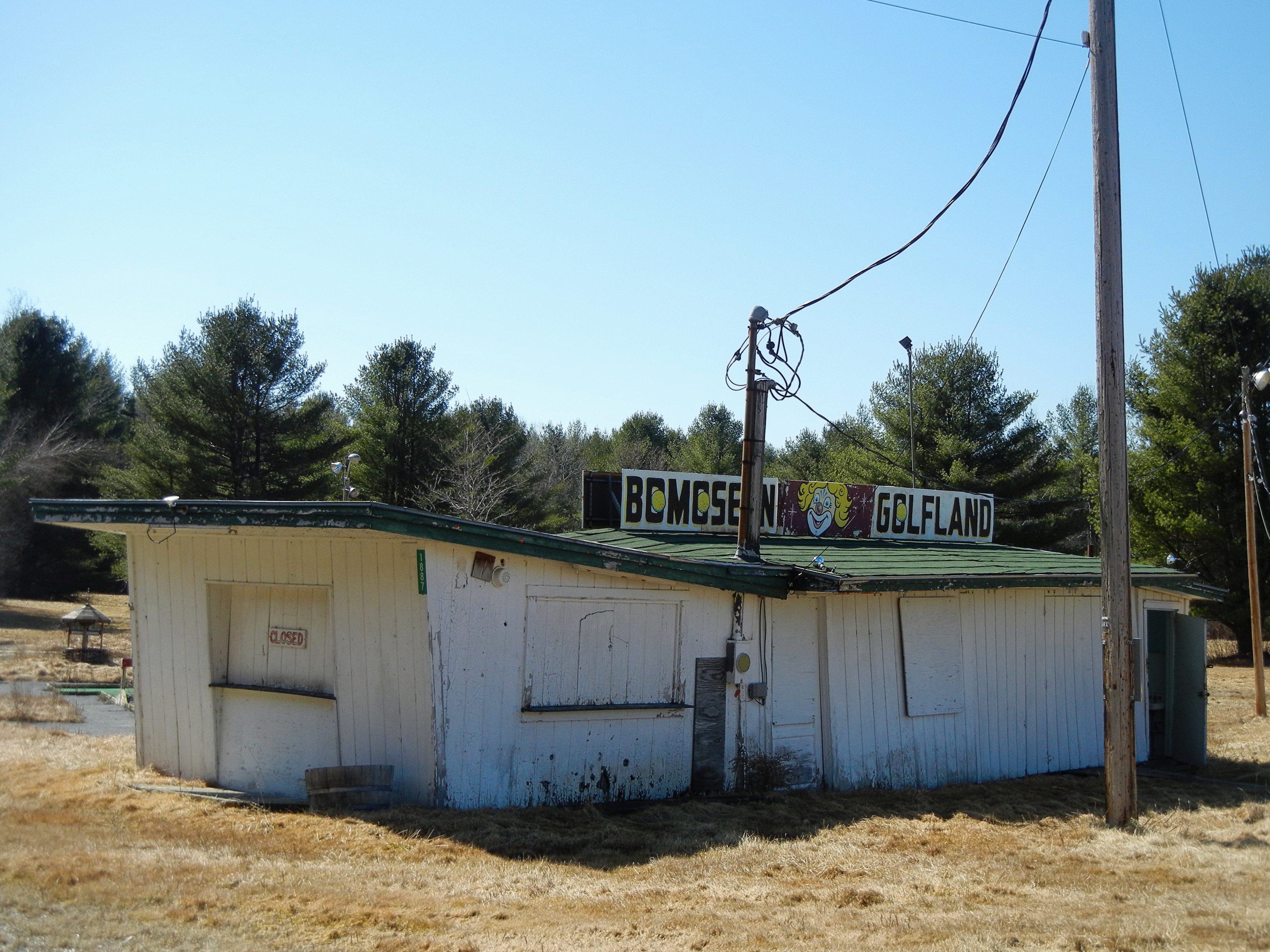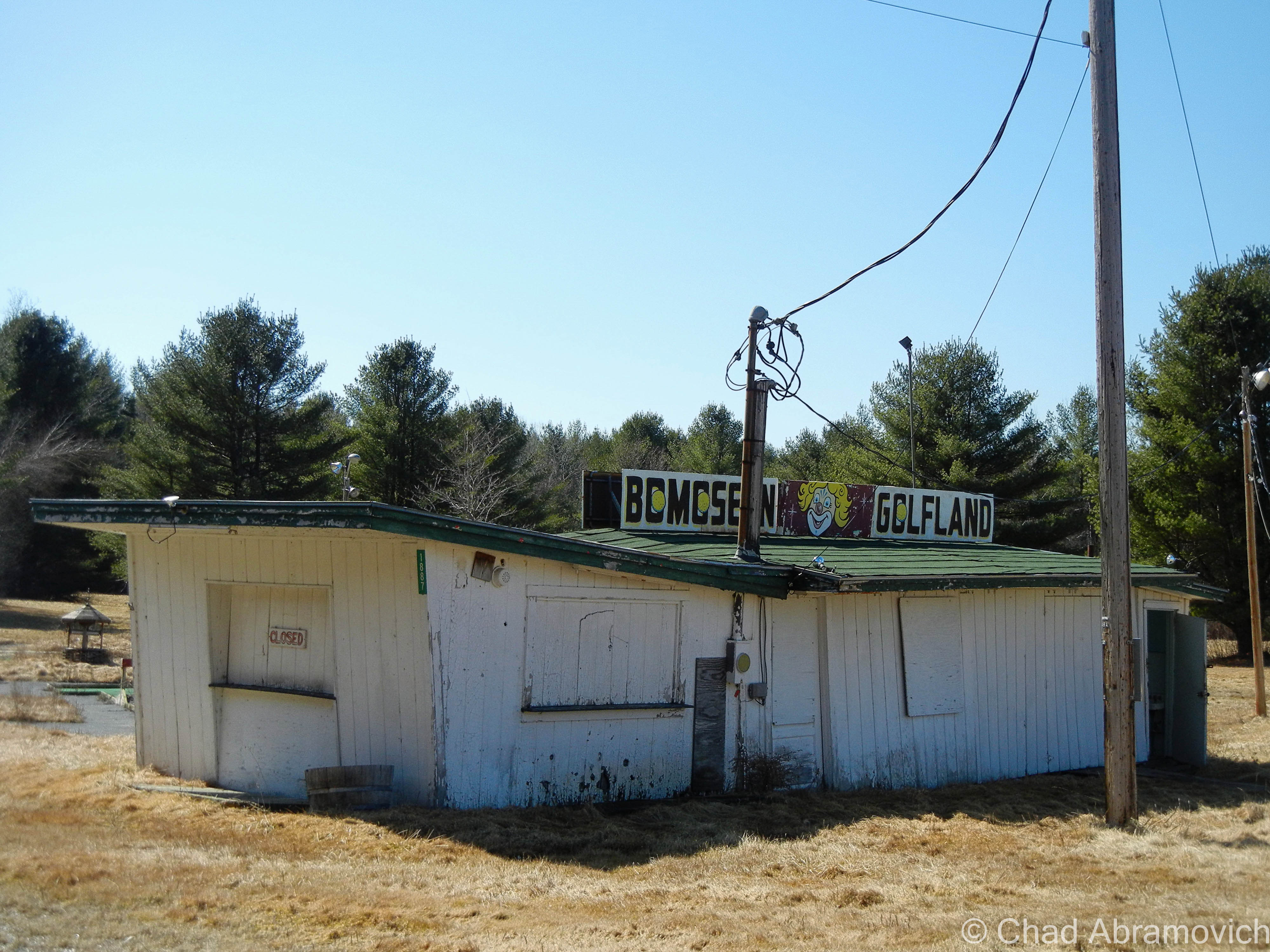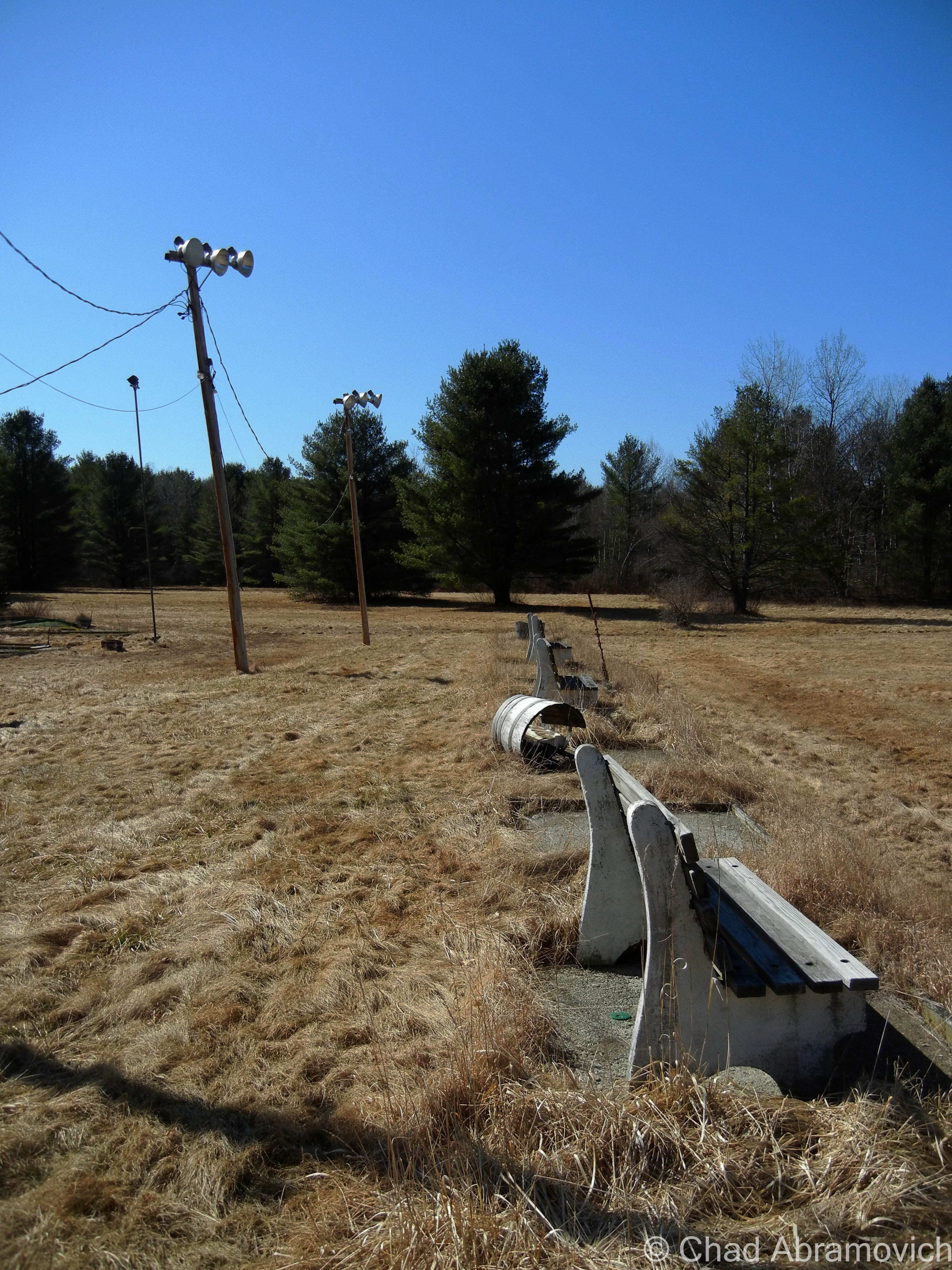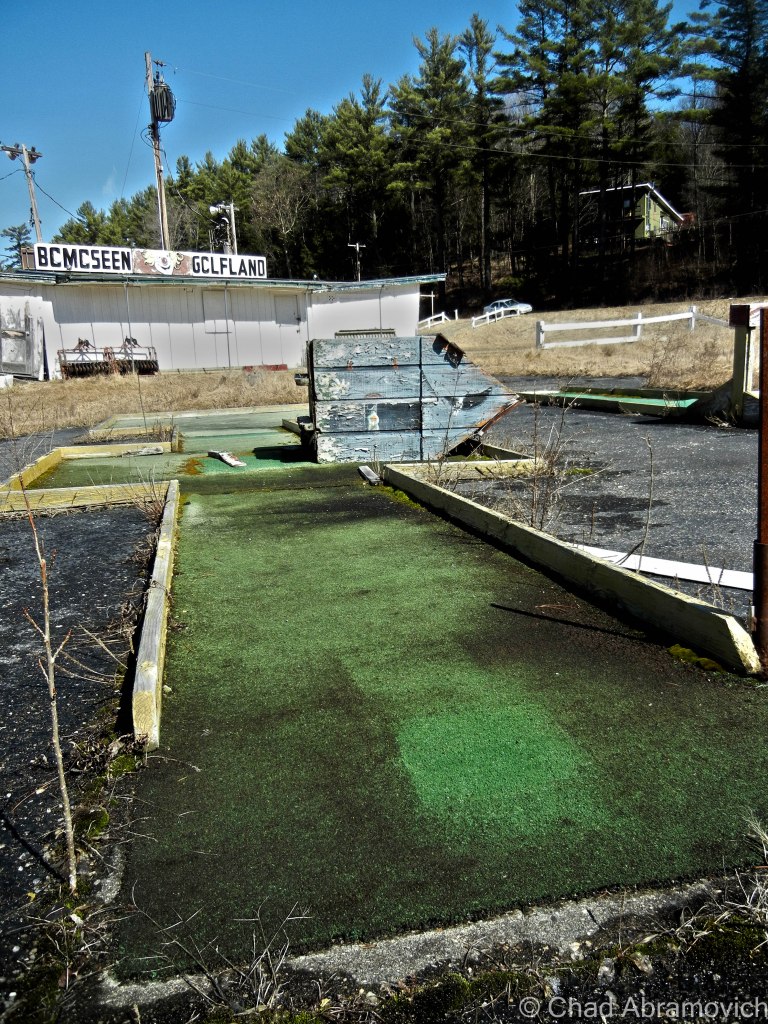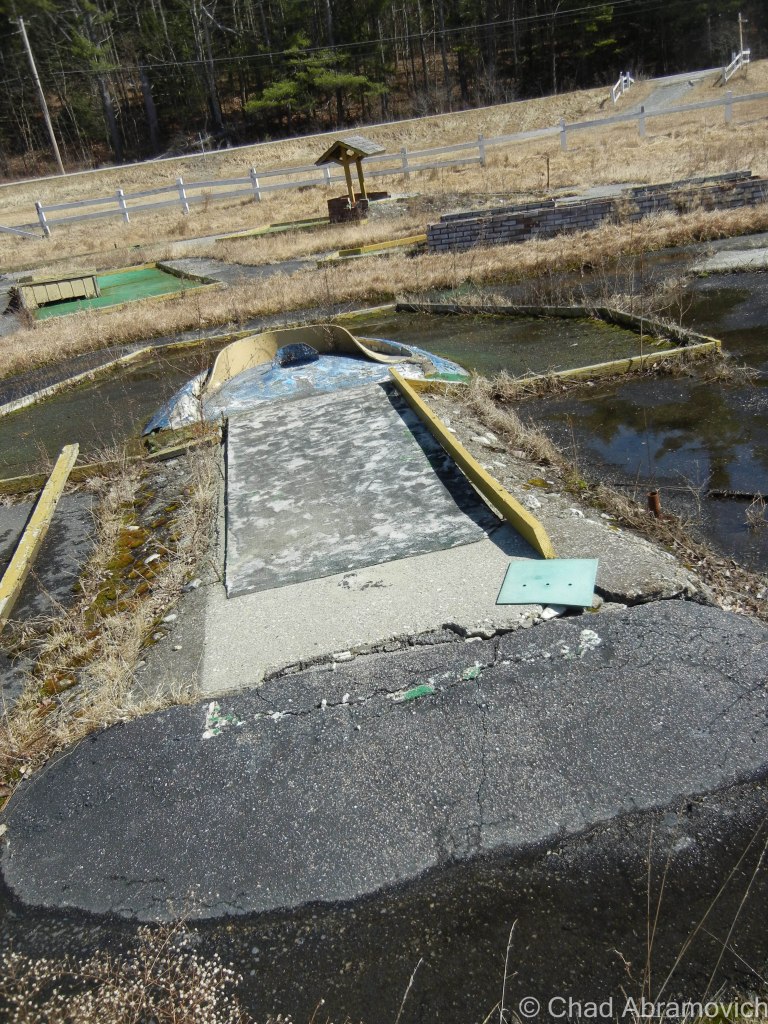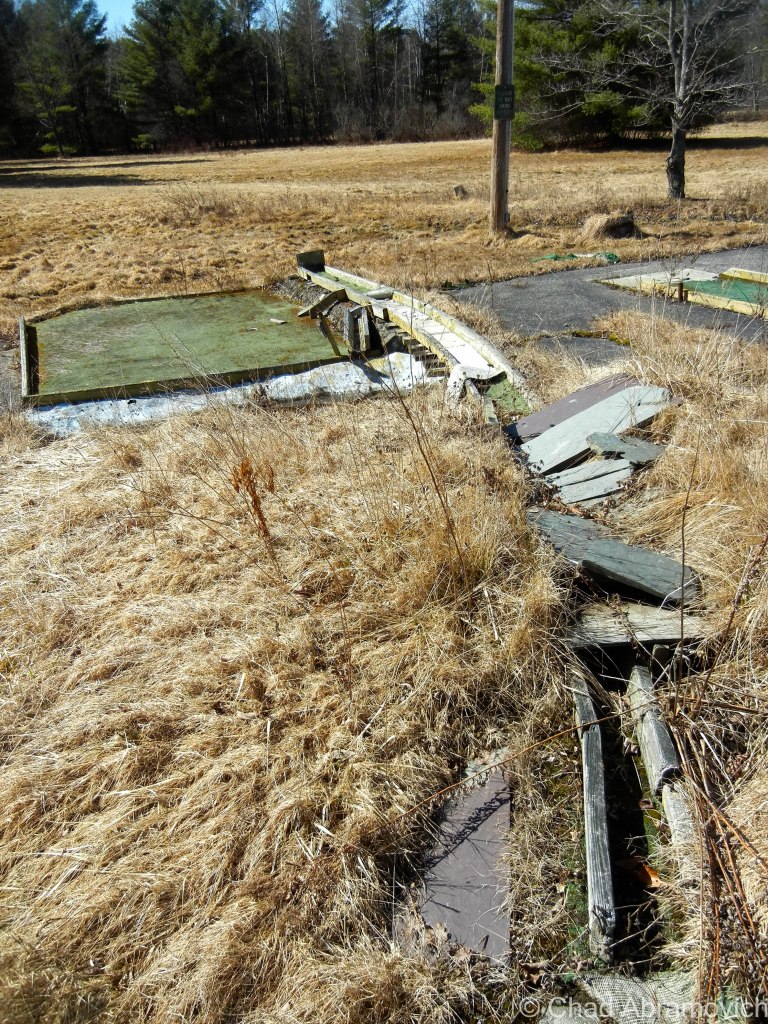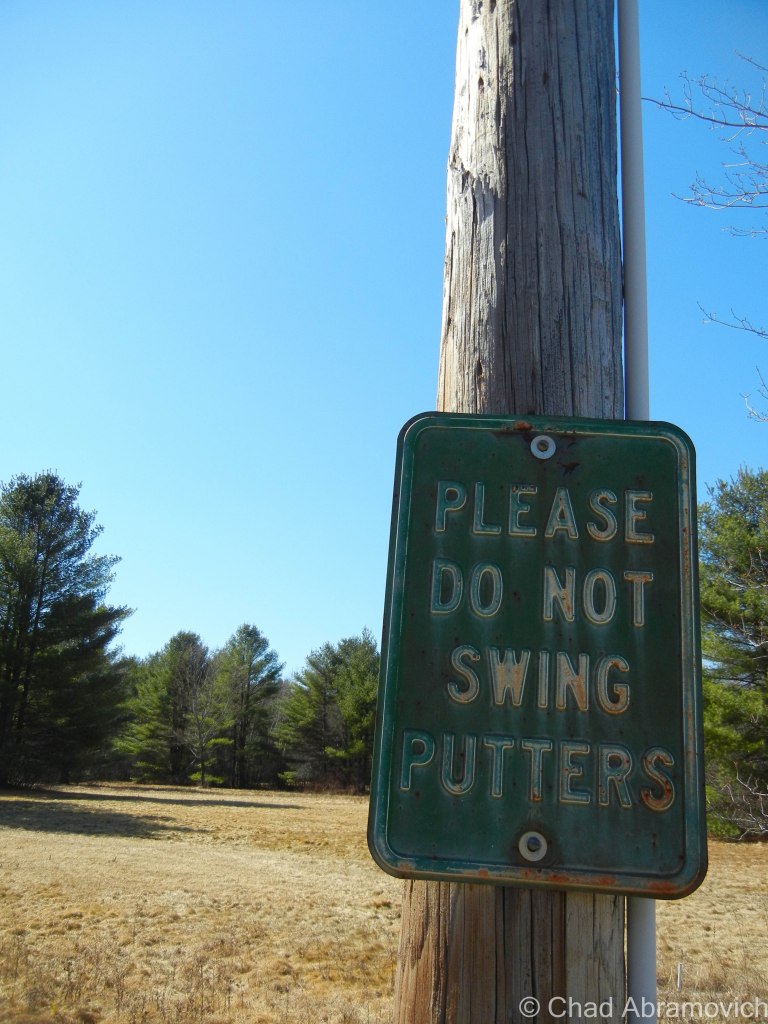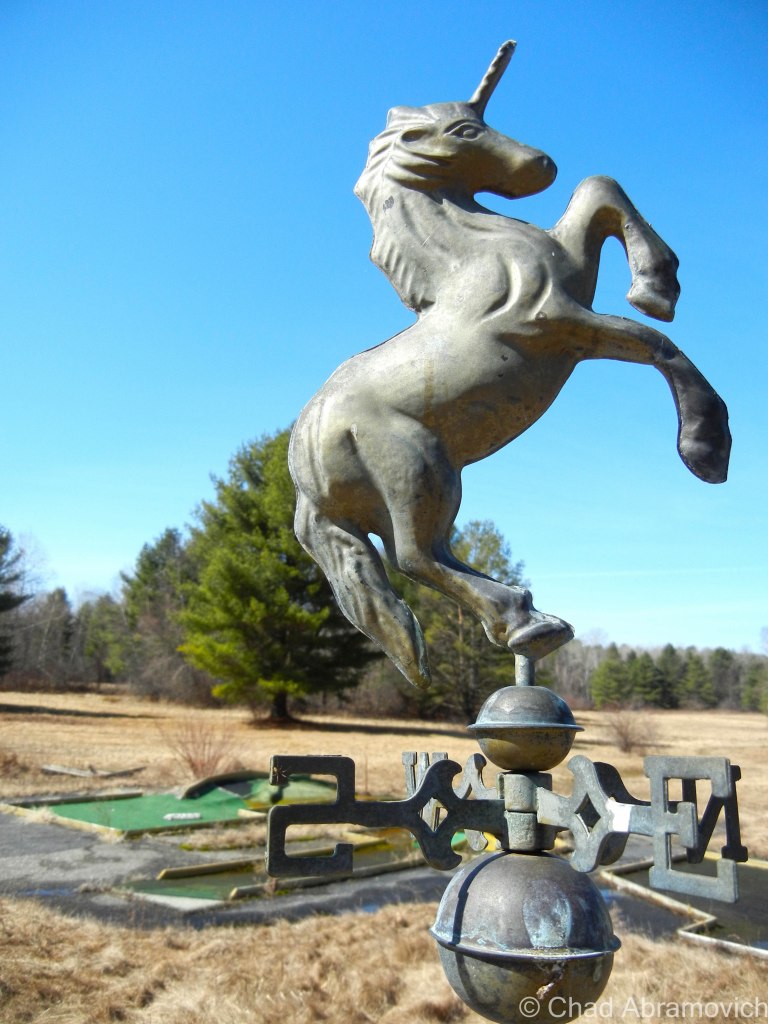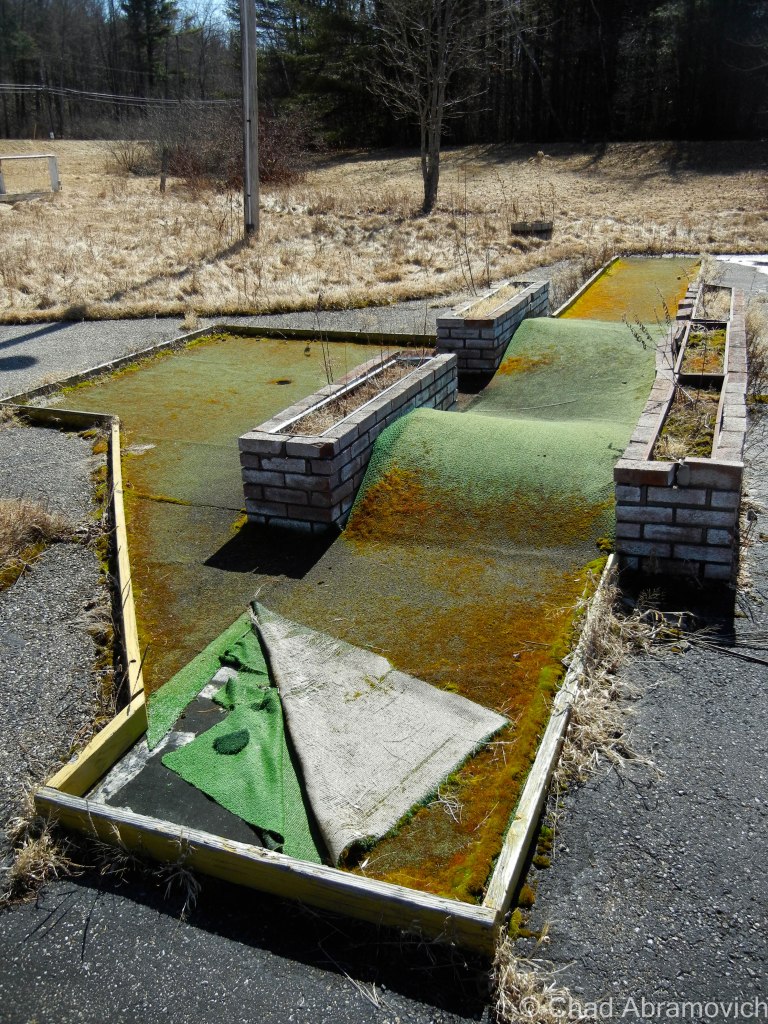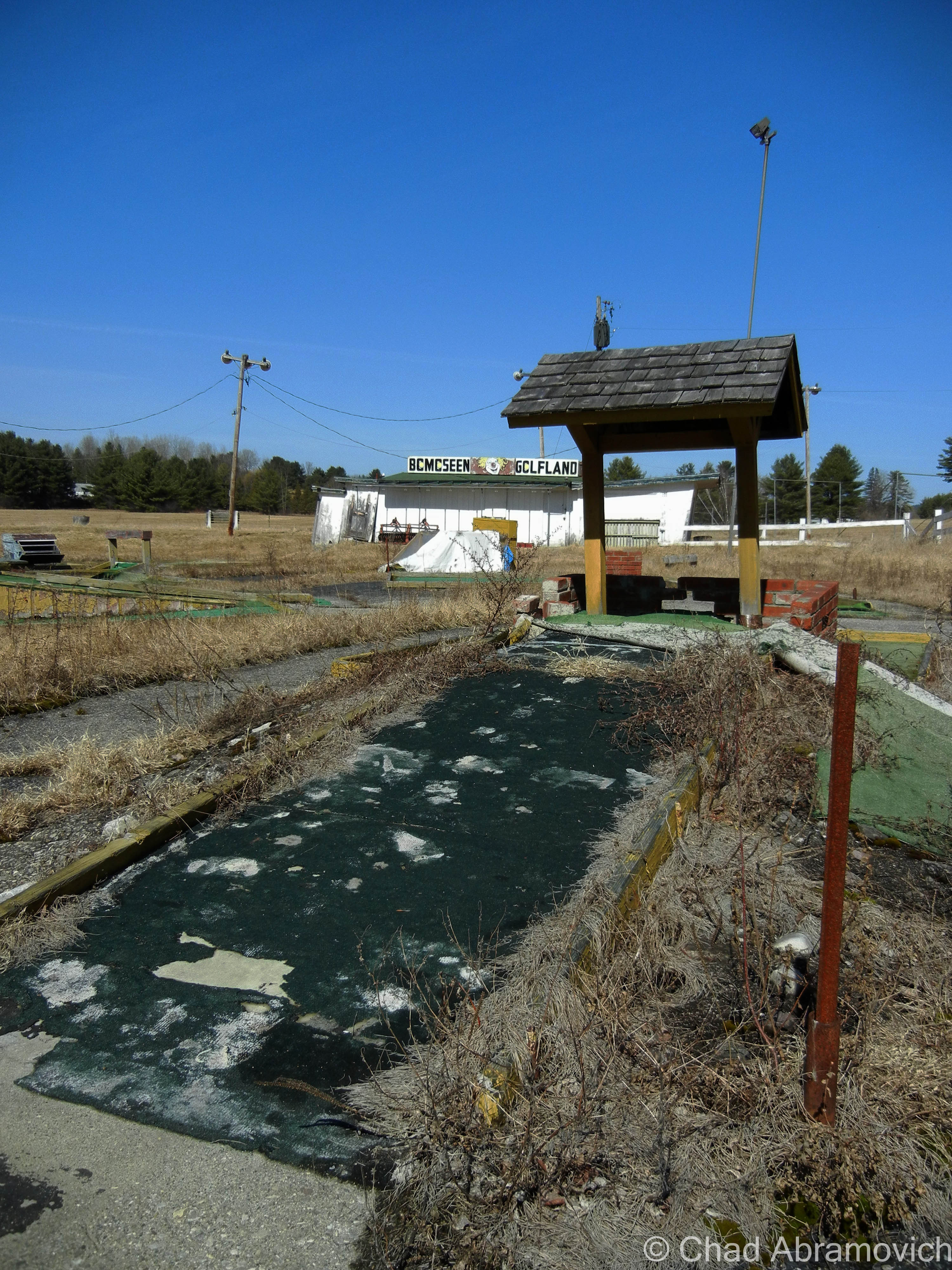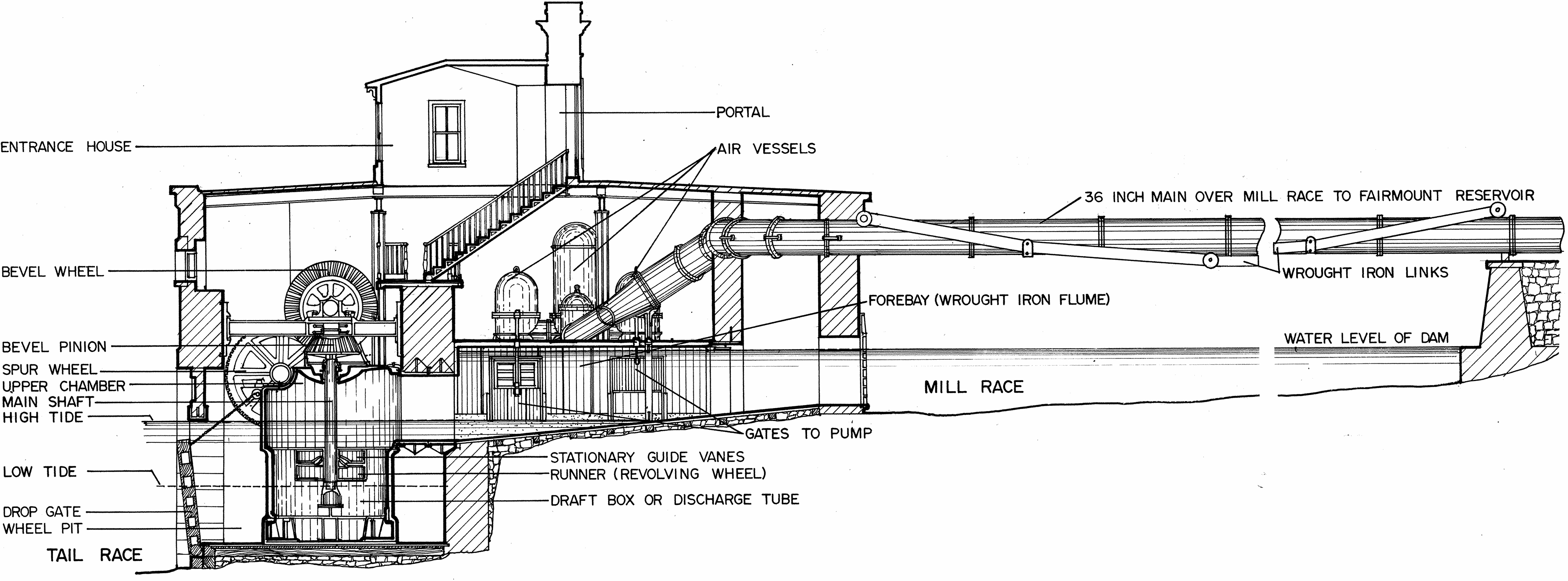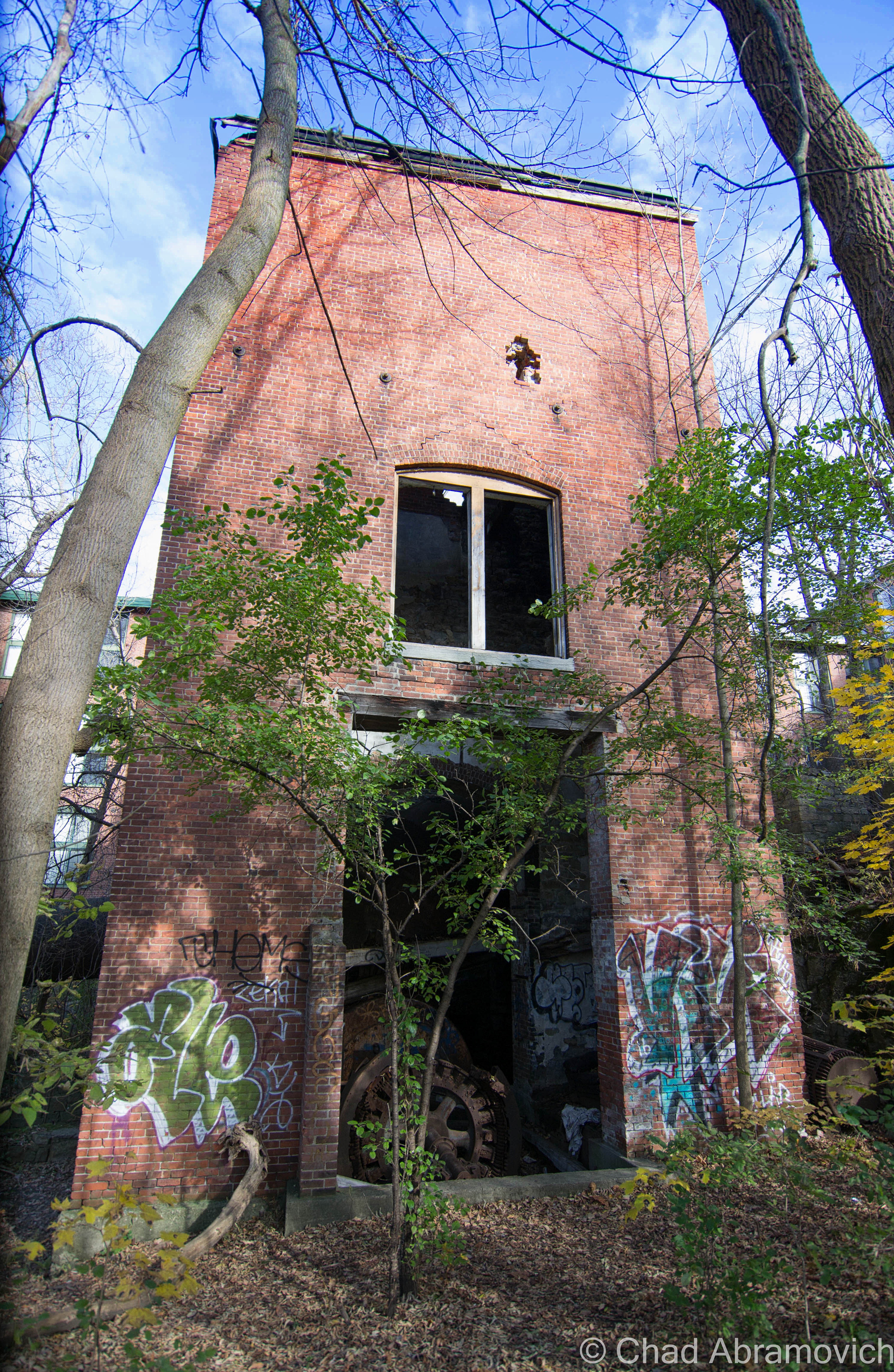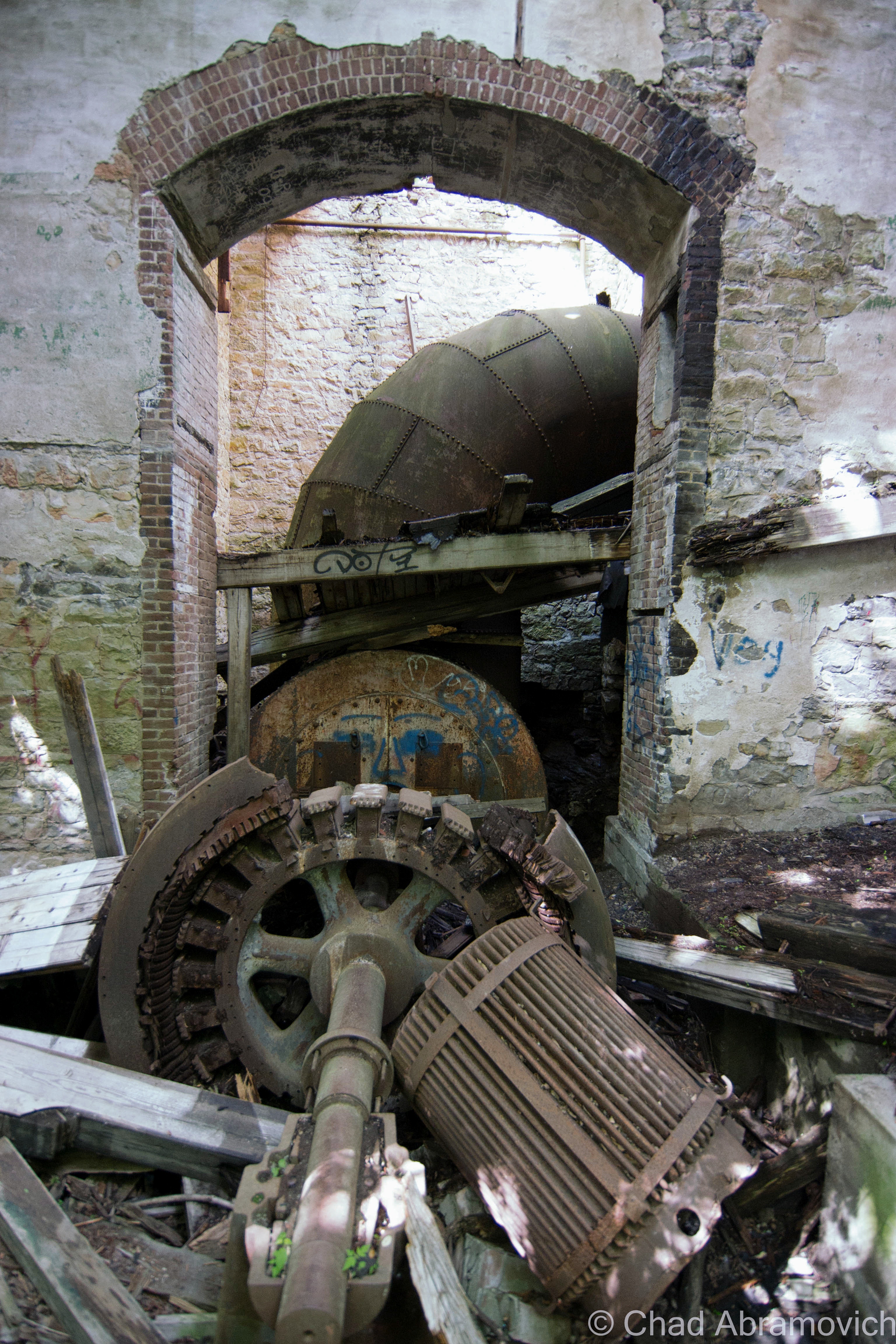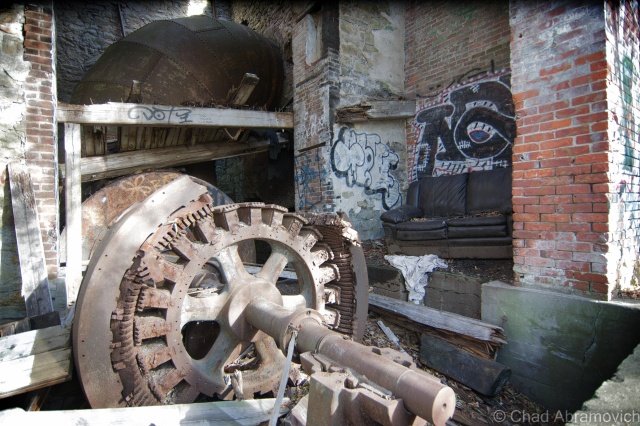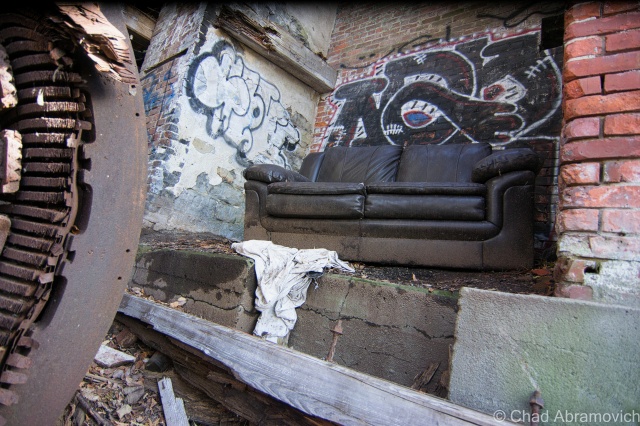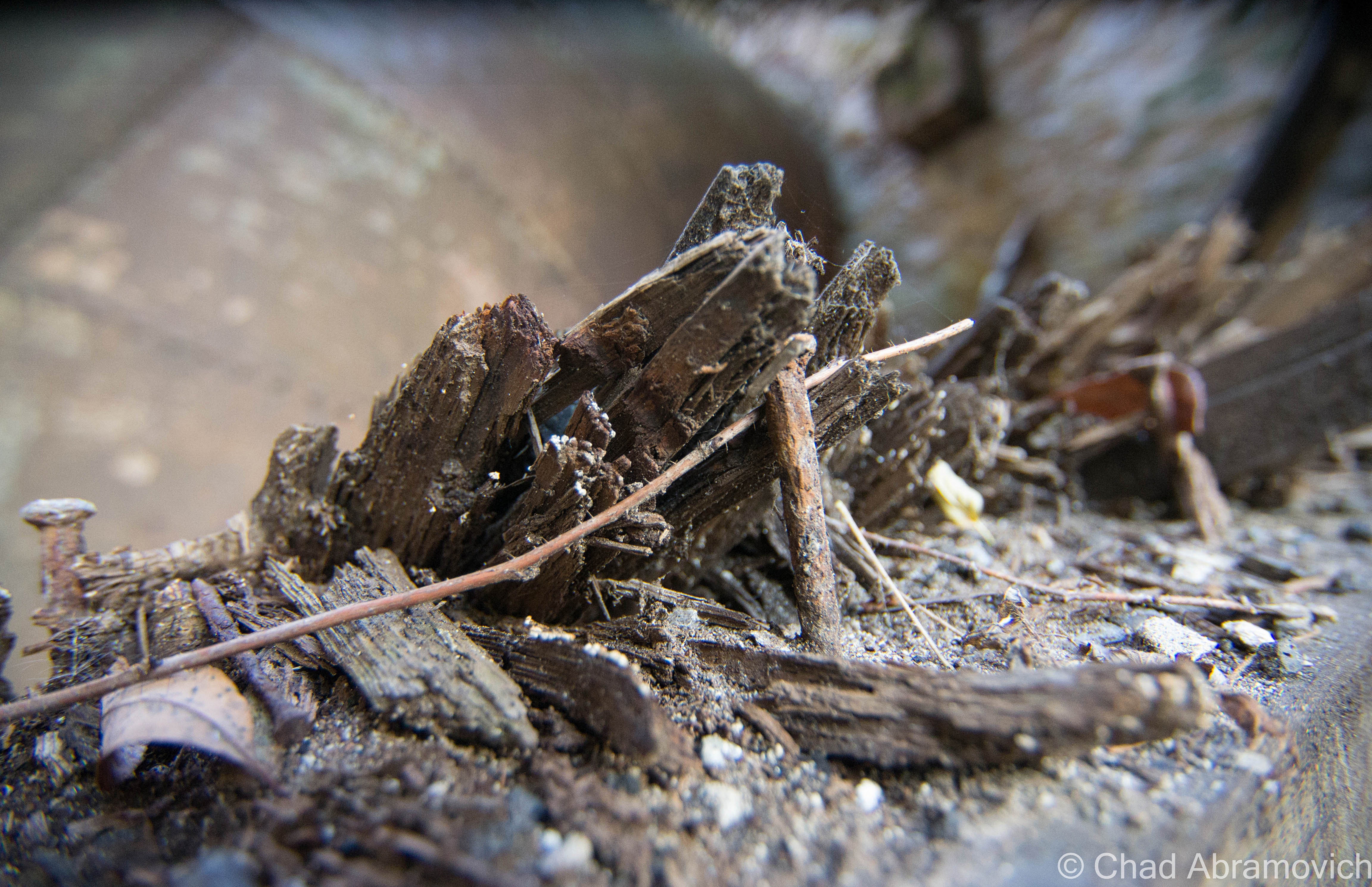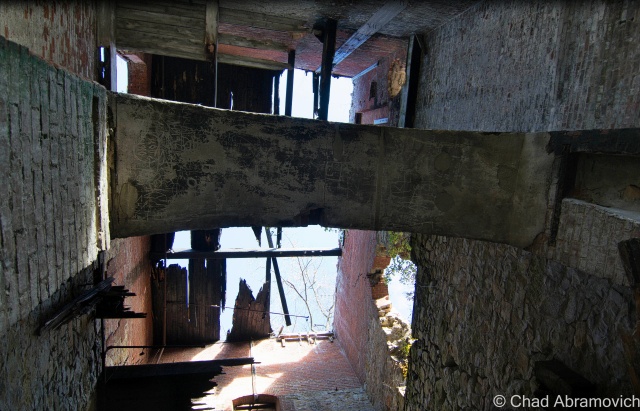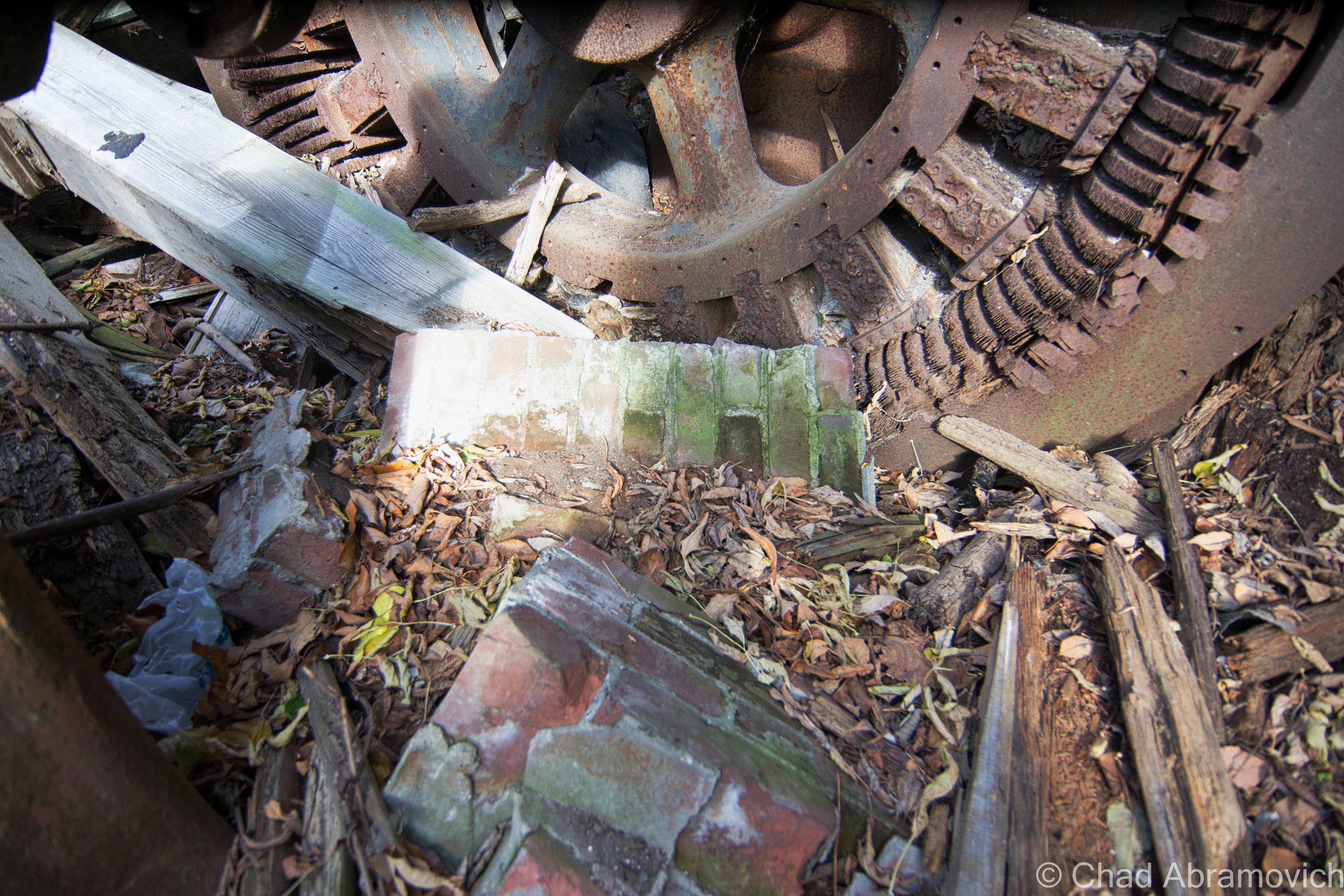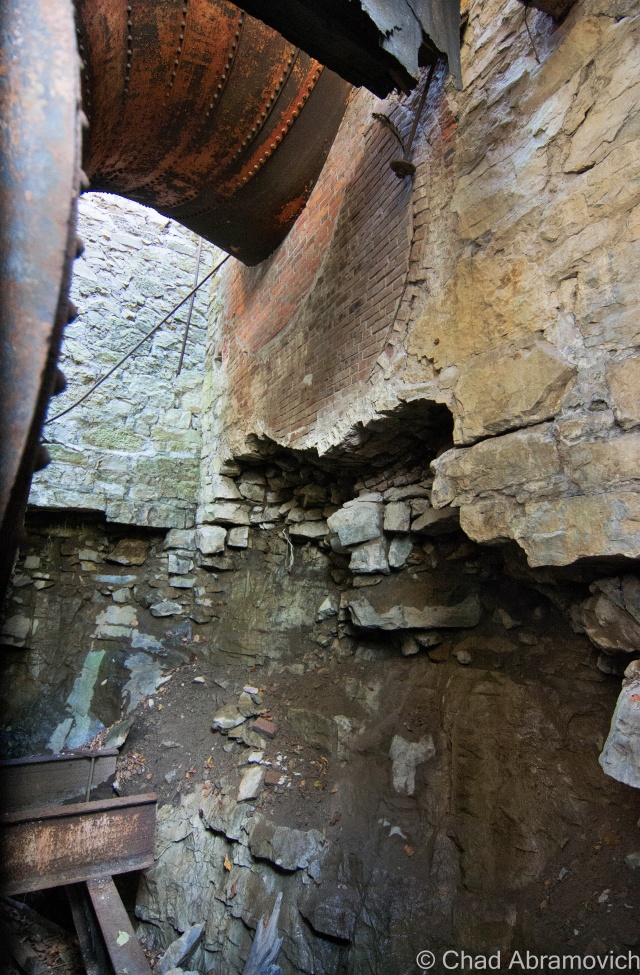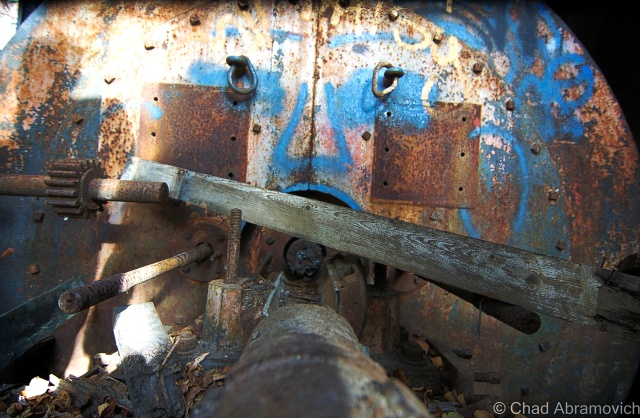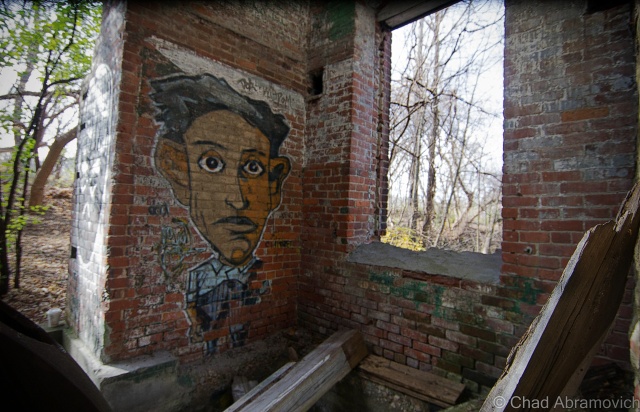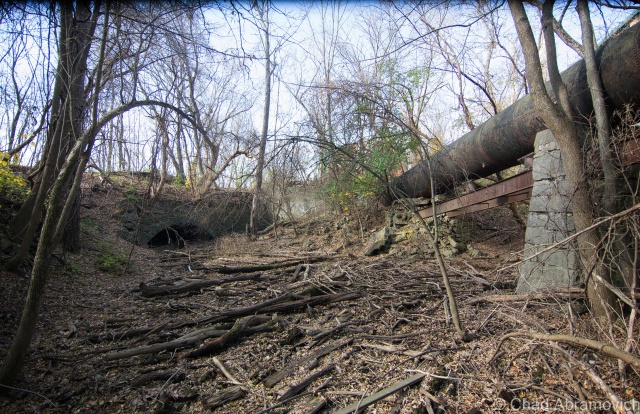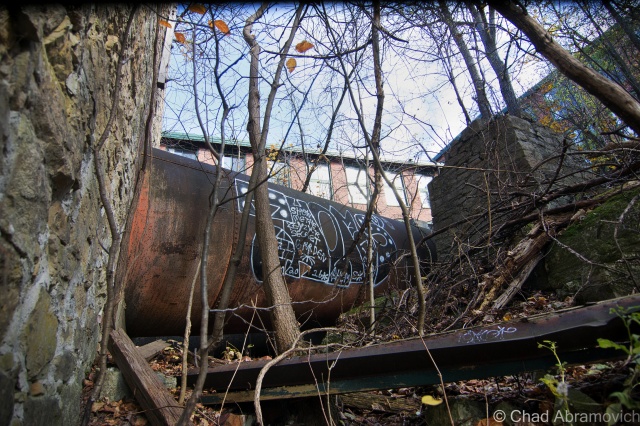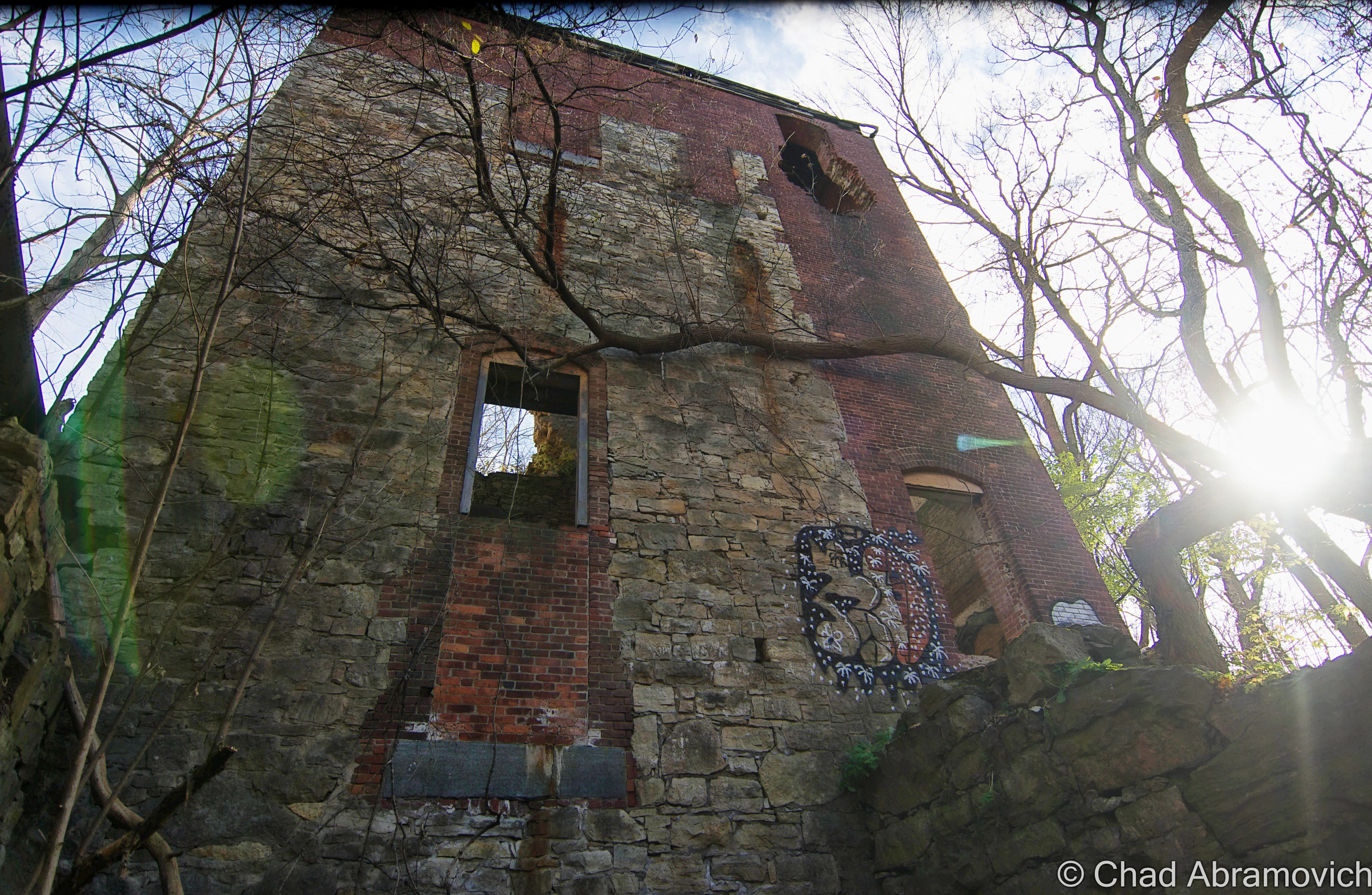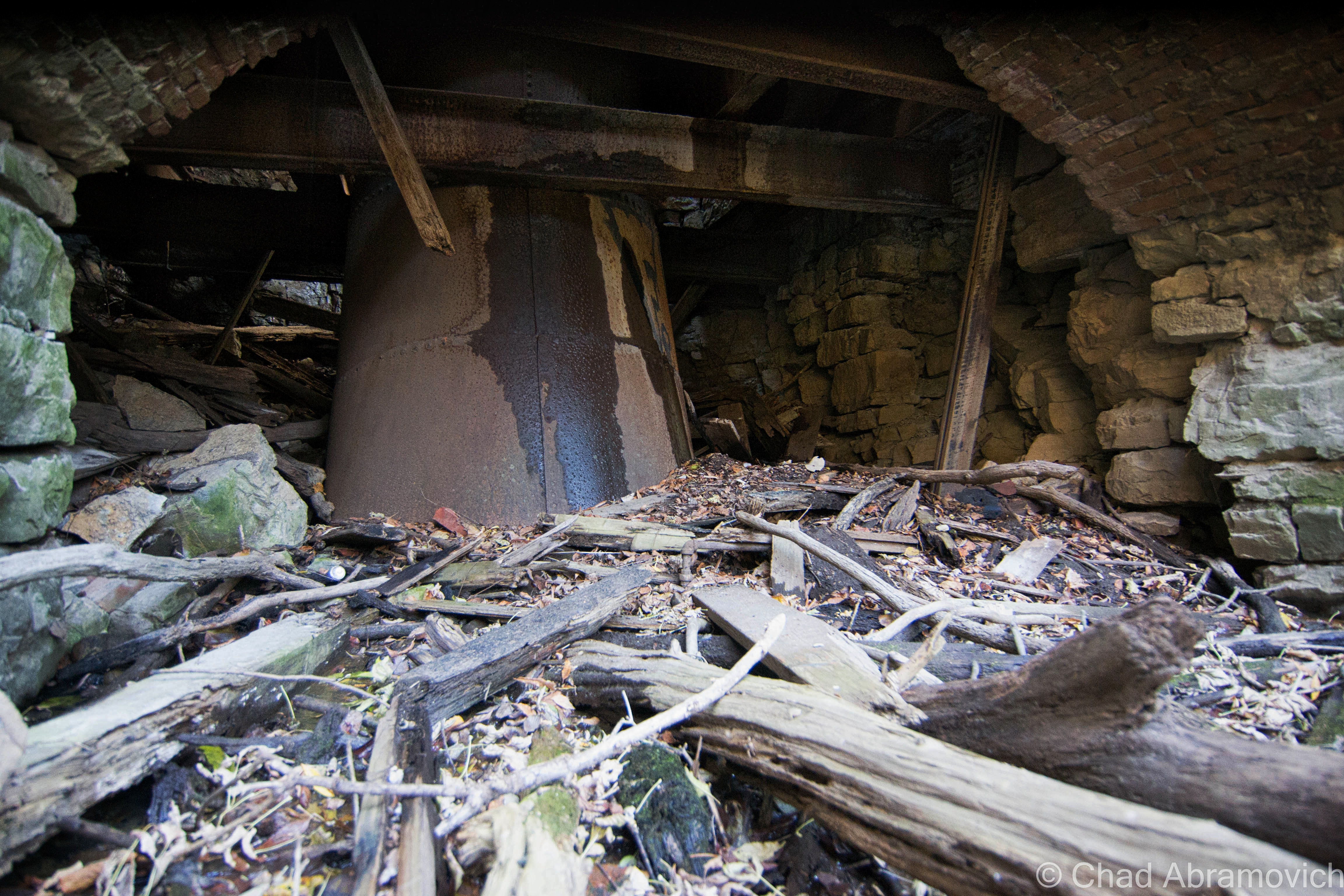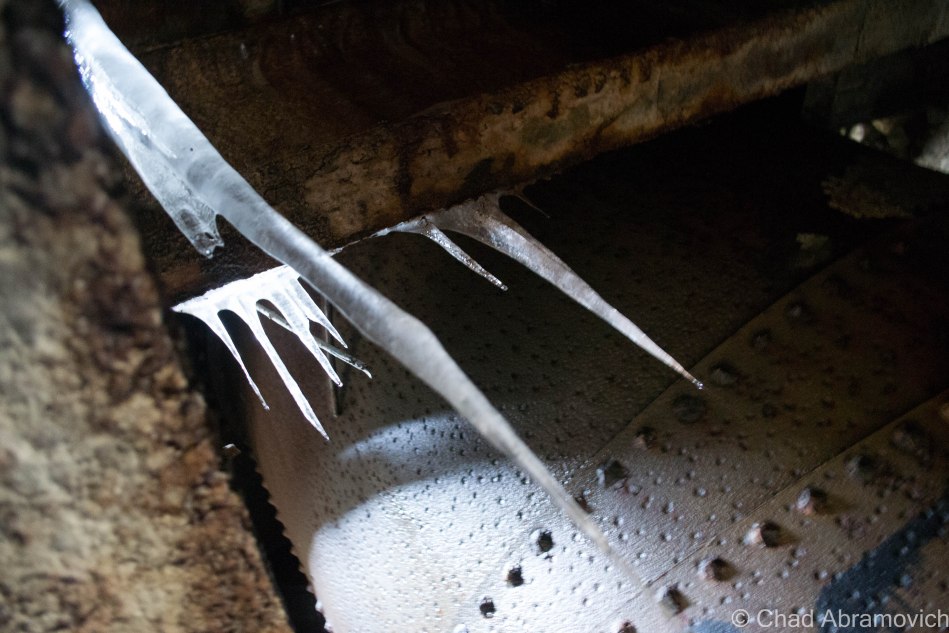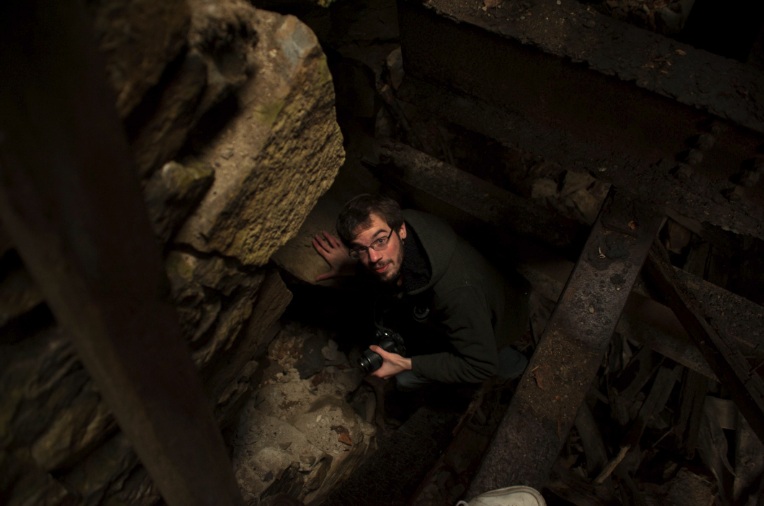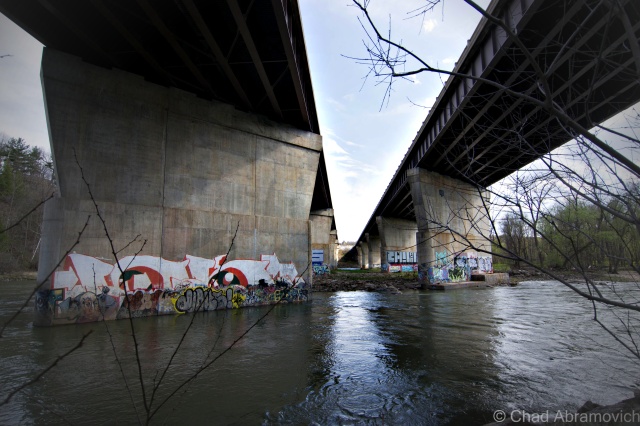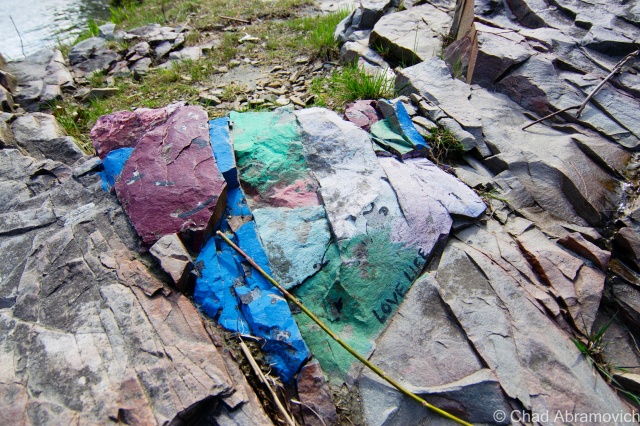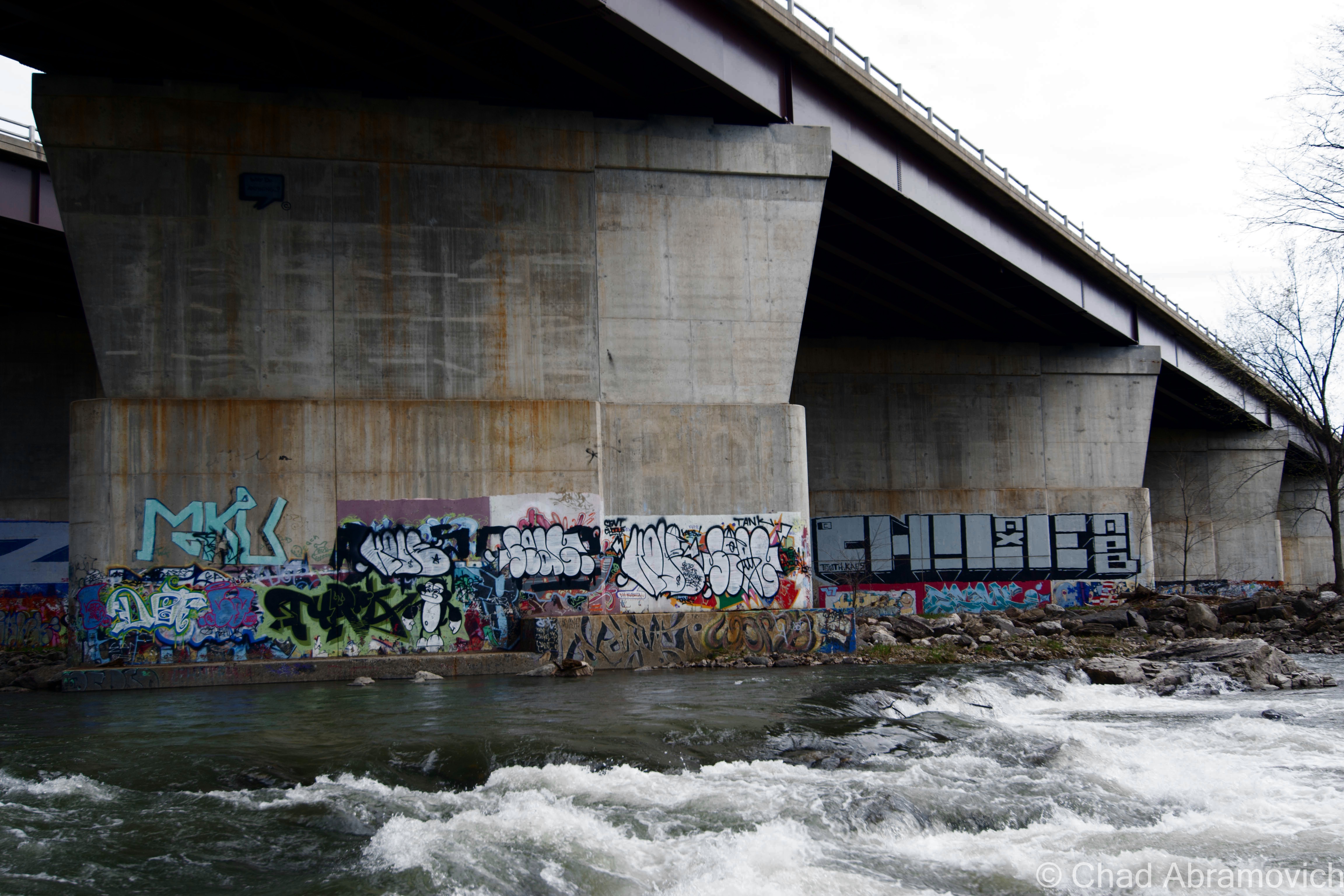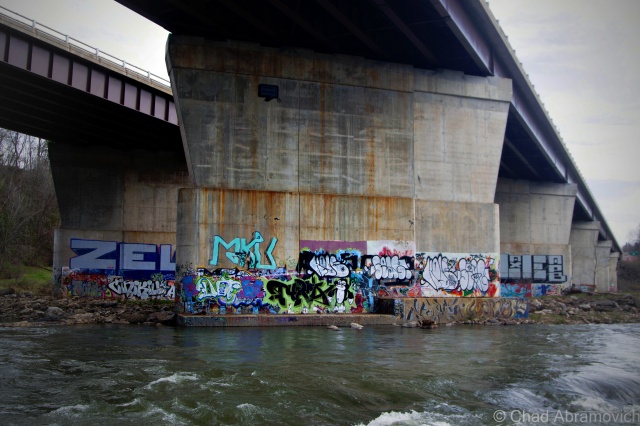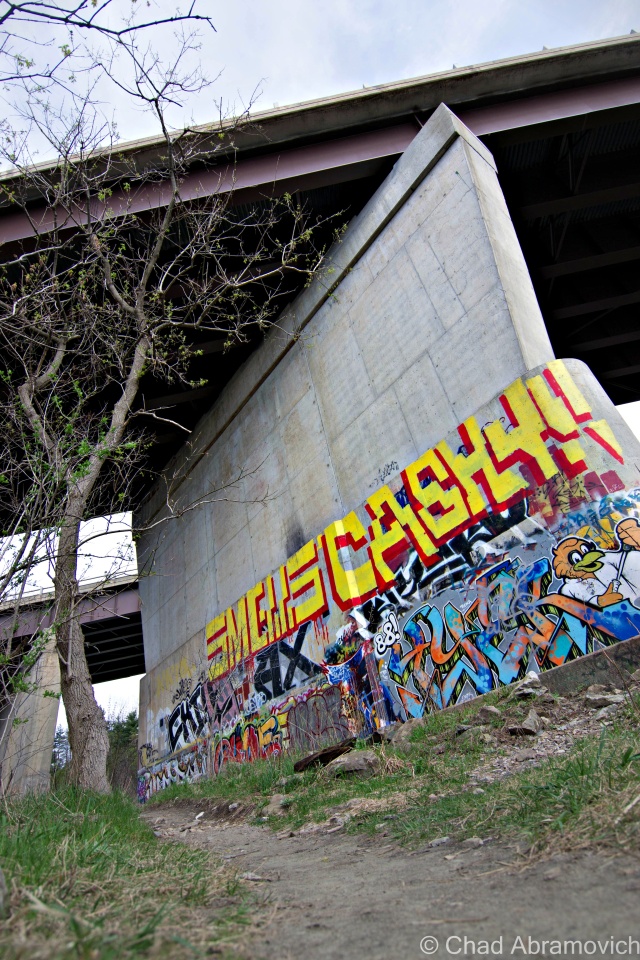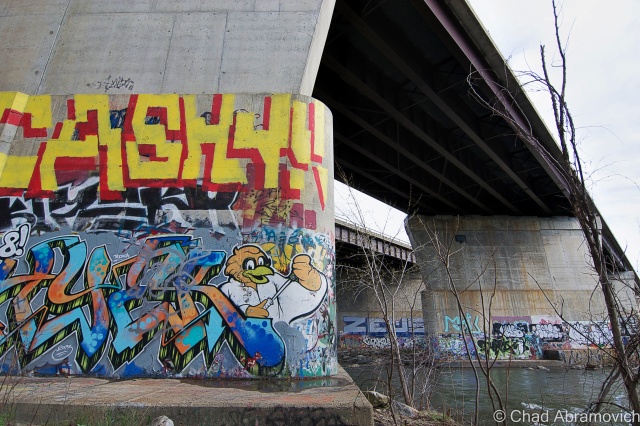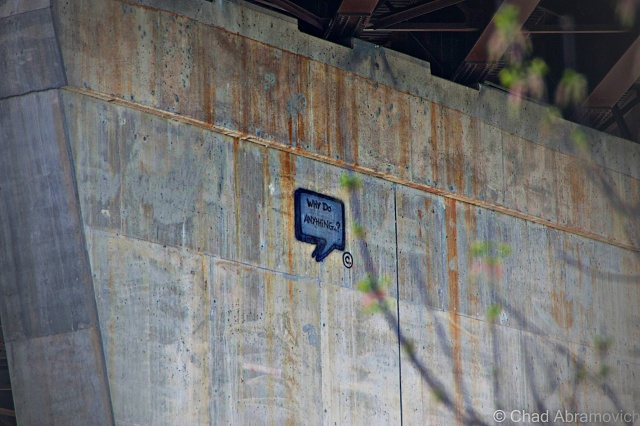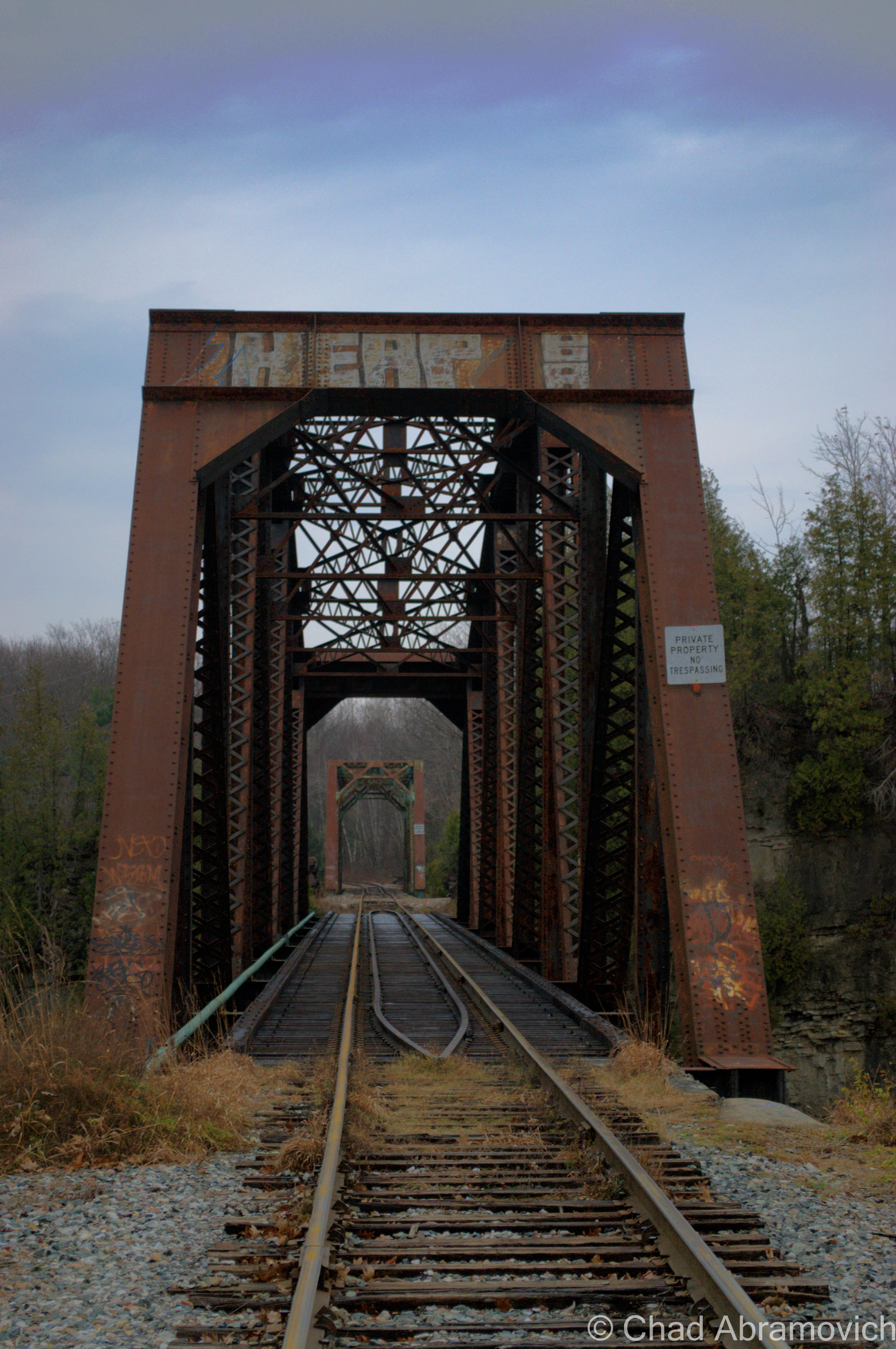My travels to New York state often start with the same question; Who is John Galt? Usually, I cross into New York via the Crown Point Bridge over Lake Champlain, and I always find myself observing this busted sign on dysfunctional wheels with two cryptic messages arranged on both sides. I’ve found plenty of questions, but no answers.
Good friend, mentor and fellow explorer Dan Koopman of Environmental Imagery tells me that the sign used to have a smorgasbord of anti Obama hate messages on it’s dented sides, which I assume was the work of the mysterious and aforementioned John Galt, ruler of the titular Galt’s Gultch, which seems to be a collection of ramshackle campers alongside the railroad tracks. I recall him showing me the sign years ago, but it seems the sign has gotten a bit more enigmatic and stagnant since then. I always make a point to look whenever I pass, to see if there is a new message. So far, nothing.
After a little internet research, the search term John Galt introduced me not to a New Yorker, but to a character created by author Ayn Rand from her novel Atlas Shrugged, which I’ve never read. The gist is; Galt is a philosopher and inventor who believes in the power and glory of the human mind. Galt stood for the ideals of free thinking, individualism and Egalitarianism rather than a society embracing conformity oppressed underneath the government. That’s something to think about on your commute.
Though Dan was the one who introduced me to his stomping grounds of New York state years ago, on this trip, I would venture to the exotic world upstate with another friend and adventurer Eric Hodet of Cabbages and Kings. We made a quick pit stop for gas in Port Henry, a jaded village that climbs up some steep ledges above Bulwagga Bay.
Port Henry, Home of Champ
Though we once had a very short lived christening as the 6th great lake, Lake Champlain is still pretty great, being shared by 2 states and Quebec. It is also large enough to completely conceal an elusive unidentified swimming object of monstrous proportions. “Champ”, which I suppose isn’t the most creative name for a lake monster, is said to take on a Plesiosauric resemblance, and is most often depicted as your typical water dinosaur, with it’s defining humped back, small head, long neck and ending with a long tail.
Of all places that border Lake Champlain, Port Henry proudly claims itself to be the home of Champ, the lake’s renown lake monster, and they take that distinction pretty seriously. So much so in fact that the first Saturday of August is designated as Champ Day, which brings a street fair and entertainers, with the centerpiece being, a Champ float.
What’s made the legend of Champ so important, apart from the various marketing campaigns, bumper stickers and business names, is the numerous eyewitness sightings, consisting of a rather long tradition of reports. French explorer Samuel De Champlain’s journals told of a sighting of some strange beast near Isle La Motte when he first traveled down the Richelieu River into the lake. But his records were lost to knowledge until the 1800s, when the first verifiable report of a Champ sighting came into public consciousness. It captivated the public so much that P.T. Barnum once offered a reward for its capture, dead or alive. More interestingly, in the 1970s, Champlain’s records were once again studied, and it was discovered that the intrepid explorer’s account may have been mistranslated, making his sighting officially unofficial. Instead, it was most likely that Champlain saw a Garfish, which still live in the lake today.
But what really propelled allegations into fixation was in 1977, when Sandra Mansi captured a photograph of what she claims is Champ. The photograph in question shows something that vaguely takes on Champ’s described appearance rising out of the waters of the lake – but a sense of scale is hard to determine here. Was it actually Champ? A giant Sturgeon? Or maybe, just a piece of driftwood?
Regardless of Champ’s existence, countless sightings have been reported over the years, and people hold firm to their stories. My grandfather even claims that he saw it – as well as quite a few other people, whose names have been memorialized on a wooden memorial south of the Port Henry on Route 22. The sightings unsurprisingly start with Samuel De Champlain in 1609, and escalate into the 21st century. Even local celebrities like WCAX’s Gary Sadowsky made it on the list. The dates stop at 1989, which raises a few questions. Have there been any reported sightings in Bulgwagga Bay since then? Are any plans to extend the list?
I’ve sort of made it a point not to write about Champ in this blog, because admittedly, I’m just not all that interested in the Champ hype. But it’s almost impossible to not pick up some information about it along the line, and I found myself slowly giving in, because some of it is actually pretty interesting. This is probably my favorite; Documented sightings of Champ actually predate those of the Loch Ness Monster by fifty years! I find this amusing because most cryptozoology enthusiasts consider Champ to be “America’s Loch Ness Monster”, but maybe it should be the other way around?
To be fair, Lake Champlain is a large lake, with depths said to be beyond 400 feet in some places near the Charlotte-Essex ferry crossing. With many areas uncharted, I suppose it’s possible that something could live harmoniously in the lake undetected. That, and scientists did discover a sonar sound emanating from the depths of the lake that was so unique, they named it after the lake monster (they did, however, claim that the odd sound did not belong to Champ)
So, why did Port Henry land the distinction of being the home of Champ? The first modern day sighting of Champ was reported here in 1819, by a “Captain Crum” in Bulwagga Bay. His eyewitness report illustrated a rather graphic spectacle of a black monster resembling a seahorse with three teeth, large eyes, a white star on its forehead and a red band around its neck. So I guess that’s as good of a reason as any.
Ironville, Birthplace of the Electric Age!
When traveling to unfamiliar territory, one of the first impressions of a community you take in is their welcome sign. The small town of Ironville’s sign stood out from the others I’ve noticed (apart from Port Henry’s, of course). The sign had a pretty groundbreaking claim written along the bottom in capital letters; “Birthplace of the Electric Age”. That left me and my friend scratching our heads a little. But a little après-adventure research was able to put the pieces together for me.
The hills around Ironville were known for their rich iron ore deposits, and mining activities brought great prosperity to the rural region. Curious about the natural magnetic rocks in the area, Joseph Henry, an early pioneer in electricity and professor of mathematics and natural philosophy in Albany, was interested in the phenomenon of magnets and how they worked. He traveled to the Penfield Iron Works in town where he obtained some high quality Iron to study. His goal was to attempt to create magnets of his own. At the time, magnets worked by wrapping bare wire around an Iron core, creating magnetic fields. But they were short lived, as the fields always rapidly collapsed into the iron core. Henry then got an idea; why not insulate the wires?
He attached his new prototype to a battery, the only known producer of electricity at the time, and created the world’s first electromagnet – and the key component to making all-electric power possible today. Eventually, Ironville became the first town to use electricity for commercial use. It was this breakthrough that would inspire Vermonter Thomas Davenport to invent the electric motor, and eventually, a world ran by electricity would become the norm.
Aiden Lair
The real reason for visiting upstate New York was to visit Aiden Lair, a sizely rotting wooden building, deep within the forests of the Adirondacks.
The history of Aiden Lair begins around 1850, with the construction of a crude log cabin to house travelers and hunters going into the interior of the Adirondacks, at a time where the rugged region was only beginning to be more accessible. The cabin eventually burned down, and in 1893, the first Aiden Lair lodge was built, a grand Adirondack hunting lodge ran by an Irishman named Michael Cronin.

But the lodge truly gained notoriety for being a vital part of the so called Midnight Ride of Theodore Roosevelt in 1901, which would be the first stop of a remarkable presidency.
Being president of the United States can have contingent natures with the responsibility, and I don’t think there are many American presidents that have been more fit for the role than Theodore Roosevelt.
On Sept. 6, 1901, President William McKinley was in Buffalo attending the Pan American Exposition when he was shot by Leon Czolgosz, a hot tempered anarchist. At the time, vice president Theodore Roosevelt was a guest of the Vermont Fish and Game Club in Isle La Motte. When word reached Roosevelt on the attempt on the president’s life, he immediately left and traveled to Buffalo.
But McKinley’s surgeon insisted he was fine, and that he would surely recover. Roosevelt, no longer feeling needed, decided to travel to join his family who were vacationing at the Tahawus Hunting Club. He had campaigned laboriously during the election of 1900 – an effort which involved much traveling and speech giving. Some rest and relaxation in the Adirondacks sounded damn good.
In Tahawus, Roosevelt decided that a great way to kick off his vacation would be to have an afternoon hike up Mount Marcy, the tallest elevation in the state. He sought out some guides and set out up the slopes. While relaxing near Lake Tear-of-the-Clouds, the source of the Hudson River, a foot messenger named Harrison Hall found him and gave him word that McKinley’s condition had worsened, and it didn’t look good.
According to local lore, Roosevelt’s reaction after reading the message was to say “Gentlemen, I must return to the clubhouse at once,” before calmly finishing his lunch, and then making the 12 mile hike back to Tahawus in 3 hours.
Roosevelt was reluctant to go back to Buffalo unless he was truly needed. He was just there, and that would be a long trip to make for a false alarm. But soon, another telegram came with news came that president McKinley was dying. Roosevelt set out for Buffalo immediately, but first, he had to get to the nearest train station which was 35 miles away at North Creek. That would be an arduous journey on muddy rut choked roads in the middle of the night, through vast mountainous wilds, a journey that would take at least 7 hours to complete today. The 35 mile stretch would have to be completed on horseback, with a stop somewhere in between to switch the exhausted horse for a fresh one. He departed Tahawus and made the grueling journey to Aiden Lair Lodge in Minerva, where he would switch horses.
A team of wagon drivers were organized, and would switch off driving Roosevelt at different legs of the trip, until they made it to the train station. David Hunter, the superintendent of the Tahawus Club, drove the first leg, a 10-mile stretch from the Tahawus Club to the Tahawus post office. The first stretch took two hours to complete because the road was practically washed out due to rainy conditions. From there, he would swap drivers again until he would get to Aiden Lair Lodge in Minerva.
By the time he got to Aiden Lair around 3:30 AM, he was already president. McKinley had died at 2:15 AM, while Roosevelt was still rushing through dark wilderness and rough roads. Though word had reached Aiden Lair, Michael Cronin decided not to tell Roosevelt. The staff knew he was dealing with great stress, and tried to urge him to rest there for the remainder of the night, and leave a day break. But Roosevelt was having none of it, and hitched up his team. Cronin drove him the remaining 16 miles, partially in an altruistic gesture, but mostly because if anything were to happen to Roosevelt en route, he was threatened that he would be held accountable. The wagon barreled and slid down slippery and sinuous mountain roads, with Roosevelt himself holding the lantern in front of the wagon so they could see where there were going. They made the journey in an hour and 41 minutes.
By the time they arrived, the news had been broken. A telegram awaited him with the news of McKinley’s death at the train station. Roosevelt boarded the train en route to Buffalo and his oath of office. Apparently, Roosevelt’s final leg of his ride achieved so much fame that other drivers had attempted to make the same route and beat the time, but no one has been able to succeed. As far as I know.
But, there is a little deception here. Though it makes a good story, the ramshackle building that skulks behind the the state historical marker on the side of the road is actually not the Aiden Lair that Roosevelt stopped at. The first hotel burned down in 1914, and a new 20 bedroom hotel was built shortly after, the 16,000 square foot decaying wooden structure you see today.
Though Mr. Cronin seemed to play an important part in the earliest hours of Roosevelt’s new found presidency, cosmic relief would pay a visit to the Irishman. Not long after the midnight ride, A New York Tribune article from April 1914 ran a headline that announced: “Roosevelt Guide Crazy.” Michael Cronin was hospitalized for mental health reasons. The lodge burned a month later, and was rebuilt by his family without his help. He died shortly after.
The hotel continued to serve travelers to the Adirondacks from hunters, outdoor enthusiasts and as the times changed, skiers and snowboarders heading to Gore Mountain, until the 1960s, when Adirondack hunting lodges began to go out of style and Aiden Lair closed for good. According to a segment of Adirondack Attic on North Country Public Radio – a gentleman from Albany bought the property a few years ago, with the intentions of restoring and reopening it, to continue it’s storied legacy. But the hurtles of renovations and reaching out to historic preservation proved to be too much, and it has since faced demolition by neglect – rotting in a state of limbo.


I drank copious amounts of Stewart’s Shop coffee before the long drive up to Aiden Lair, fighting the urge to pass out in the car. Long drives with the heat on and a prior week of insomnia tend to do that to me. It was much colder in Minerva. The temperature had plummeted to 11 degrees somewhere along the ride from Schroon Lake, and there was at least a foot of snow in the high peaks. Immediately after exiting the truck, my hands and face stung painfully, and I found myself not being able to control my shivering. But we didn’t travel 2 hours just to turn around, so onward we trudged.
I hadn’t had any expectations to get inside Aiden Lair, as I heard it was sealed up very well, but we found a door around back, near an old dam that created a small pond. The bottom had been kicked out, leaving a human sized hole to crawl through onto a rotting sun porch – the afternoon sun was pleasantly warming the peeling yellow lead paint that speckled the weather beaten floors.
I gazed into the interior dubiously. Because the floor had already begun to sag underneath the weight of my hands as I pulled myself up, I wasn’t sure if this was going to be worth the risk or not. The lack of maintenance has caused serious damage to parts of the buildings – especially the roof. The damage has festered its way down to the stone cellar, causing the entire structure to rapidly fall apart from the mercurial freezing and thawing of the seasons.
Aiden Lair was a now formidable and sizable husk of a building, devoid of most of its original details that have been effaced with time. Being on the upper floors in cramped rooms flourishing with mold that discolored disintegrating walls and suspicious water dripping down my neck, I found it almost difficult to believe that this was once a respected and comfortable place to want to be. But some beautiful details remained. Two massive and classic Adirondack stone fireplaces could be found illuminated by my flashlight, and a balcony overlooking Stony Pond Brook had that identifying mountain woodwork on the railings that many Adirondack lodges have synonymously featured in their architecture.
The vastness of the floor plan took me by surprise as well. Though it looks relatively tiny from the outside, once inside, it becomes apparent at just how much there is to see. I was quite surprised with how many hallways and rooms there were. We were humbled at least once when we found ourselves loosing our bearings.
The cold was having deleterious affects on my nervous system. At this point, I was already trembling in my coat, and I was beginning to get hasty. The floors throughout the entire building were so perilous, that we were exploring at a very slow crawl of a pace. This is definitely one of the most dangerous places I’ve ever been in to date.
The place was incredibly silent, void of life, so sound carried through remarkably well, not being obstructed by competition. The cold rushing waters of Stony Brook could be heard inside, and provided some white noise behind the clomping of our boots and steady breathing. The movement of a door banging against a wall from a gust of wind flickered in our peripheral vision – making us someone else was inside with us. Another urban explorer perhaps, or a cop…
I’ve always thought that the term “lair” in the name was a little ominous sounding, but after seeing it’s state of slow collapse and dark places within, that part of the name now seems very fitting.
When writing these blog posts, and comparing my photographs to historical ones when these places were in their prime, it’s almost surreal. A place that was once frequented and celebrated in many ways, now is forsaken and seemingly unwanted; a burden. We human beings are sentimental creatures, and those sentiments can transcend far beyond other humans. Man made things, constructed from wood, stone, mortar and slate also have powerful emotional bonds to otherwise utilitarian objects, and as they were once so easily loved, they can also be so easily lost.
Admittedly, the cacophony of all that we were taking in here can make you want to stay for quite some time to enjoy it all, finding a different world that doesn’t exist in the superfluous found outside. But, there was much wanted heat back in the truck…
The Glebus Count
I’m a bit of a weirdo, so it’s great that I’m also friends with weird people, with plenty of inside jokes between us. This one is definitely a time honored one, now being practiced for a few years running. Whenever we travel to the northern reaches of the empire state, we found ourselves engaging in something that I call “The Glebus Count”. What is this strange ritual?
While Vermont seems to have it’s fair share of real estate agencies represented, across the lake in the high peaks region, one name reigns supreme on red and white signs emblazoned with a bold, down to business, san serif font; Glebus. They’re everywhere. I’m not kidding. Almost every piece of property that listed as for sale has a Glebus sign in front of it, with the occasional other Realtor found in between. But who are they kidding, they’re not Glebus! Over time, we began to start pointing out when we’d come across one of their signs, and soon, that turned into trying to count as many as we pass during our trip. You’d be surprised at just how easily you’re drawn into it.
“Who do you think this guy Glebus is? He’s pretty much selling everything in upstate New York” The best satire we came up with thus far, was that the mysterious man had to have an old timey name evocative of infamous business moguls from the golden age of unprecedented capitalism- something like, say, Cornelius Glebus, (according to their website, his actual name is Gary) and he could be found in his real estate lair sitting in a gilded throne drinking wine from a chalice. Sometimes it’s those long drives that inspire the best conversations that you probably wouldn’t have elsewhere. You know what I’m talking about. It’s unintentionally became such a integral part of my treks here that I feel it’s that if I’m writing about upstate New York, it wouldn’t be fitting unless I included it.
Next time your in the high peaks, see how many Glebus signs you can count. And if you were curious, we counted 21 on this trip.
—————————————————————————————————————————————–
To all of my amazing fans and supporters, I am truly grateful and humbled by all of the support and donations through out the years that have kept Obscure Vermont up and running.
As you all know I spend countless hours researching, writing, and traveling to produce and sustain this blog. Obscure Vermont is funded entirely on generous donations that you the wonderful viewers and supporters have made. Expenses range from internet fees to host the blog, to investing in research materials, to traveling expenses. Also, donations help keep me current with my photography gear, computer, and computer software so that I can deliver the best quality possible.
If you value, appreciate, and enjoy reading about my adventures please consider making a donation to my new Gofundme account or Paypal. Any donation would not only be greatly appreciated and help keep this blog going, it would also keep me doing what I love. Thank you!
Gofundme: https://www.gofundme.com/b5jp97d4


